There are special cars, different, timeless. The best of the best, the queens. They cross centuries and tastes from high atop their blue blood. They have been the dream of powerful people from different ages, the frame of stories of several generations. They have hosted smiling marvelous women, overcoming the material to become poetry. High-class ladies comfortable at all times. Today only Ferrari and Pagani worthily represent them. Beyond that – nothing.
Mobile works of art, elegant parlors. In those years the best engineers, the best designers, the best craftsmen. They were made to last, they were repaired not replaced. Small, pretty, fancy, gentle and with personality in spades. Made for competent enthusiasts, not just means of transport. The Aston Martin DB2 Drophead Coupe (DHC), the Jaguar E-Type FHC Coupe built from 1961 to 1967 (pre–not glass-covered headlights), the Porsche 356 made from 1955 to 1965, in particular those from 1960 to 1965, the Porsche 911 built from 1963 to 1973 (pre-bumper), the Porsche 993, the Rolls-Royce Silver Cloud II (pre-double headlamp units) are not just the most beautiful cars but the absolutely highest peak of the work of human beings on this planet.
Aston Martin
Aston Martin is a British independent manufacturer of luxury sports cars, which was founded in 1913 by Lionel Martin and Robert Bamford. The two had joined forces as Bamford & Martin the previous year to sell cars made by Singer from premises in Callow Street, London where they also serviced GWK and Calthorpe vehicles. Martin raced specials at Aston Hill near Aston Clinton, and the pair decided to make their own vehicles.
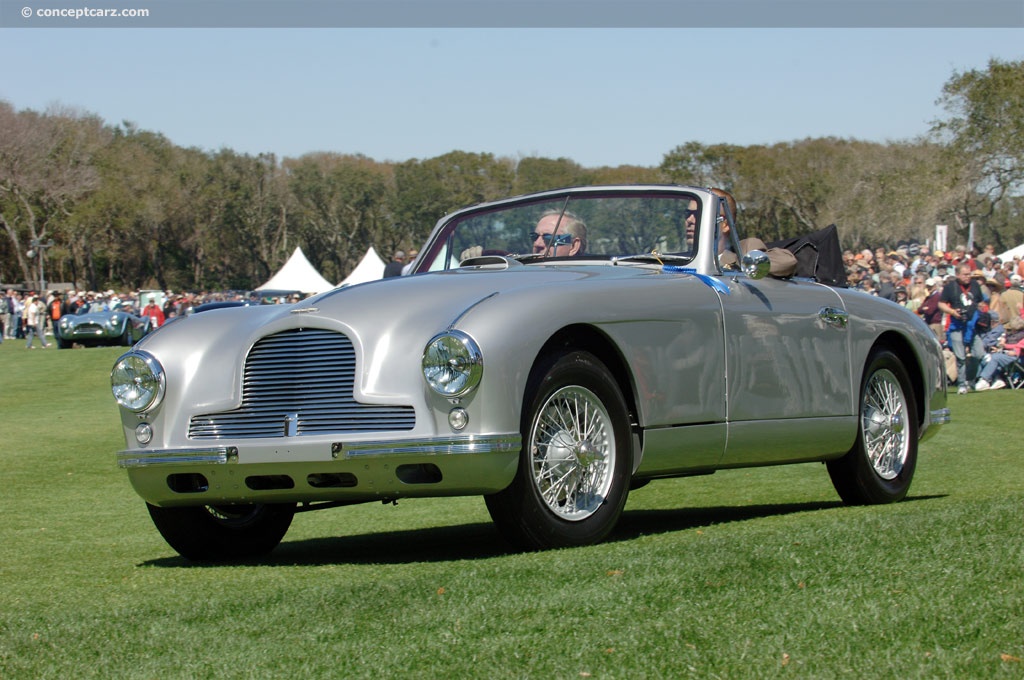
The brand became associated with expensive grand touring cars in the 1950s and 1960s, and with the fictional character James Bond following his use of a DB5 model in the 1964 film Goldfinger. Their sports cars are regarded as a British cultural icon.
Headquarters and main production site are in Gaydon, Warwickshire, England, on the site of a former RAF V Bomber airbase. Aston Martin had a troubled history after the third quarter of the 20th century but has also enjoyed long periods of success and stability. "In the first century we went bankrupt seven times", incoming CEO Andy Palmer told “Automotive News Europe”. "The second century is about making sure that is not the case."
Aston Martin named after the race "Aston Clinton" - hill climb course where their earlier Singer cars had performed well in competition in Buckinghamshire in England - and after the constructor Lionel Martin. It first came into existence in 1908, when Robert Bamford and Lionel Martin fitted a four cylinder, side valve, 1398 cc Coventry-Simplex engine to a Isotta-Fraschini racing chassis designed by Ettore Bugatti.
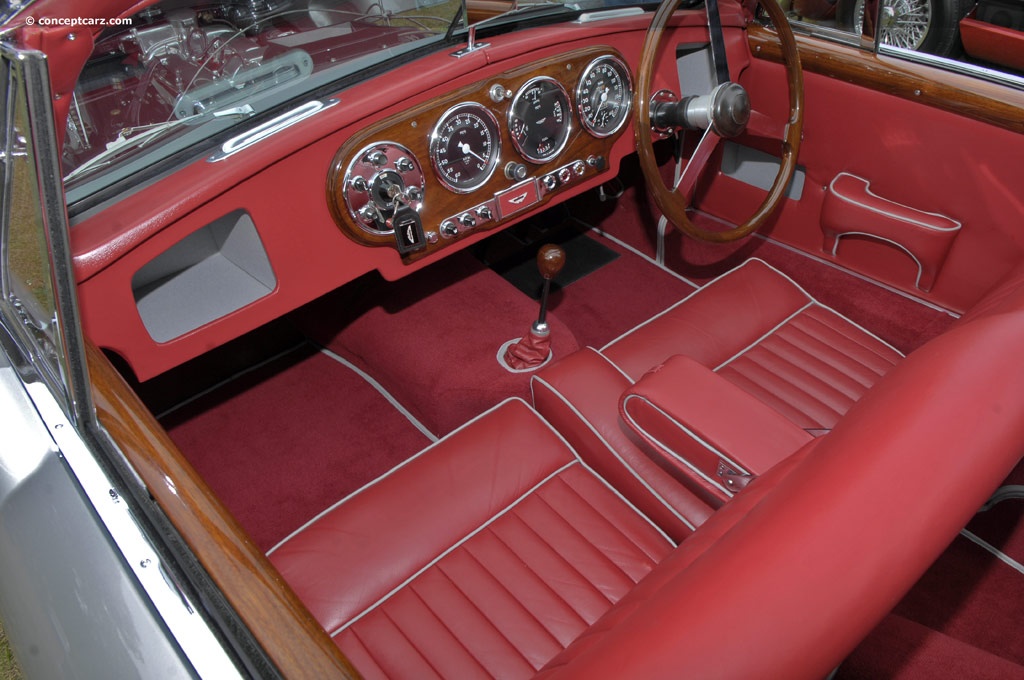
They acquired premises at Henniker Mews in Kensington and produced their first car in March 1915. Production could not start because of the outbreak of the first World War, and Martin joined the Admiralty and Bamford joined the Army Service Corps.
The first Aston Martin production car had to wait until 1919 and was not on sale until 1921. It bore a distinct similarity to the contemporary Bugatti and retained the Coventry-Simplex engine. It was noted for being exceptionally quick; top speed 70 mph, with first class road holding and precise steering.
In 1924 the company passed through the hands of the Charnwood family without any success and by 1926 had been taken up by “Bert” Bertelli and W.S. Renwick. They produced a new car, a two seater with a 1.5 litre single overhead cam four cylinder engine. However, as ever, resources were limited and by 1930 only 30 of the cars had been produced.
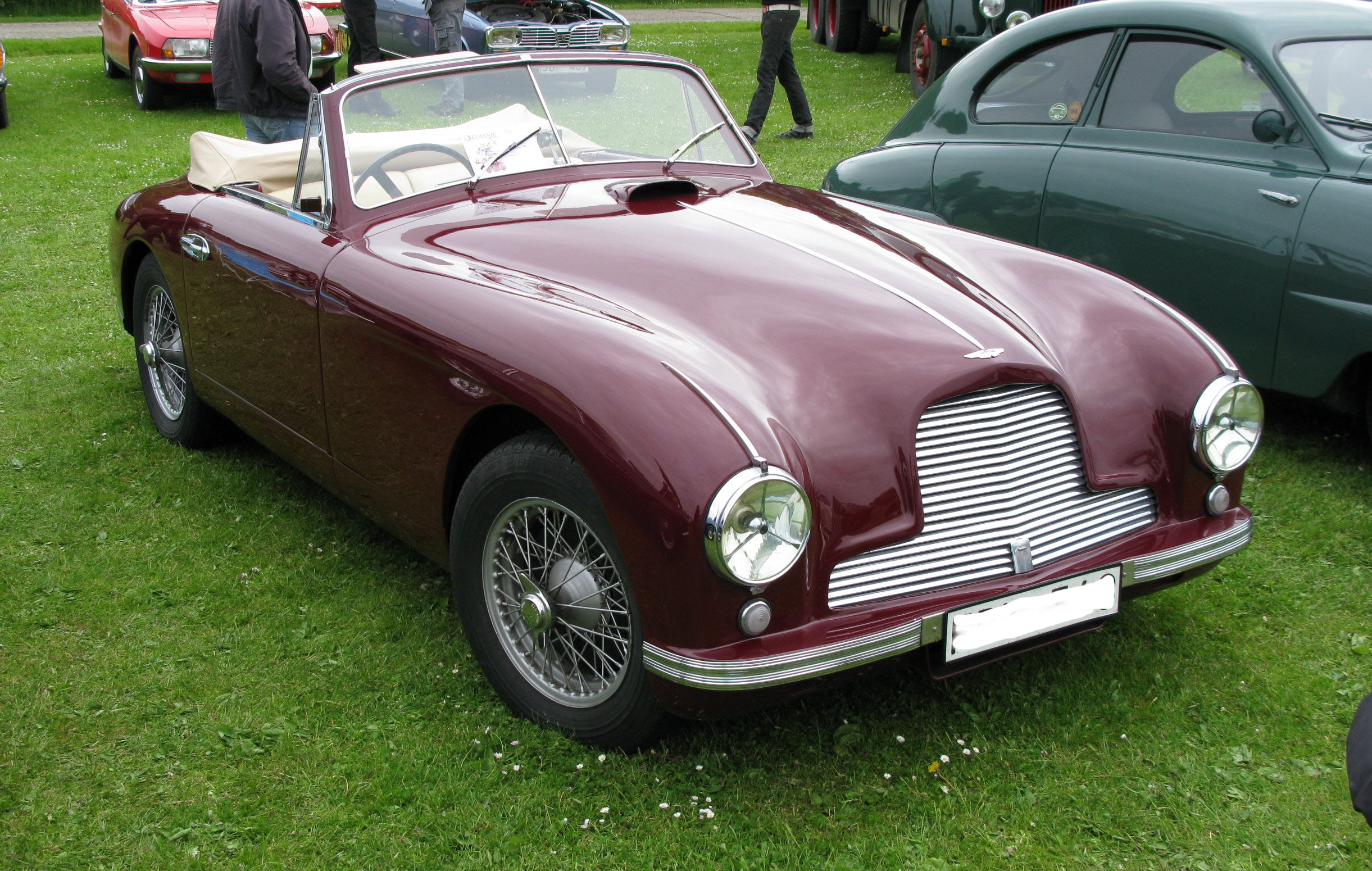
With a little financial re-organisation in 1928 the new Aston Martin International went into production. An unusual sportscar, because it had four seats and a low, rakish style which immediately became fashionable. In 1932 Sir Arthur Sutherland bought the company and the International was allowed to flourish. In 1934 the Aston Martin Ulster was introduced, effectively a replica of the works racing car, and still considered to be one of the most attractive 1930's type sportscars to go into production.
However these cars were much heavier than the contemporary Riley's and MG Magnettes. Only 17 road cars were produced, along with several racing cars. 1936 saw a new 2 litre model with synchromesh transmission, a great advance for the time, and ushered in a new era for Aston Martin.
Once again the company struggled, particularly after WWII. In 1947 the industrialist David Brown, who had made his fortune in tractors, bought the Aston Martin and Lagonda companies and incorporated them as Aston Martin Lagonda Ltd. The new design, now called DB1, went on sale in 1948 but few of them were ever sold.
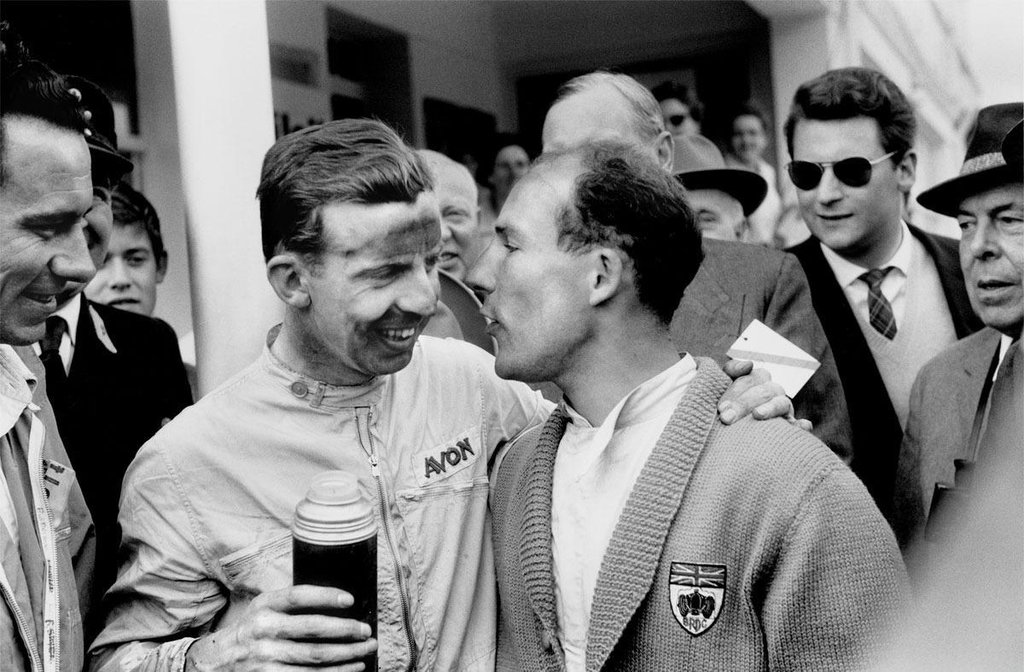
It was then decided to mate the 2.5-litre Lagonda engine with the DB1's tubular chassis and the DB2 was created, an all-time classic. Its aerodynamic two-seater coupe body was styled by Frank Feeley, ex Lagonda, and sold for 1915 Pounds, the drophead costing 128 Pounds more! The even more powerful 123 bhp Vantage engine was also made available as an option. Next came the DB2/4, with 2+2 seating and a hatch back.
In recent years the company has changed hands several times. In August 2017, a 1956 Aston Martin DBR1/1 was sold at a Sotheby's auction at the Pebble Beach, California, Concours d'Elegance for US$ 22.550,000, which made it the most expensive British car ever sold at an auction. The car was previously driven by Carroll Shelby and Stirling Moss.
The earliest postwar/David Brown-era Aston, the two-litre sports (later to become known as the DB1), was superseded in 1950 by the DB2. The Aston Martin produced, from 1950 to 1953, the DB2, from 1953 to 1957 the DB2/4, and from 1957 to 1959 the DB Mark III.
The Aston Martin DB2 had a comparatively advanced dual overhead cam 2.6 L straight-6 engine in place of the previous pushrod straight-4. It was available as a closed, 2-door, 2-seater coupé which Aston Martin called a sports saloon, and later also as a drophead coupé (DHC), which accounted for a quarter of the model's total sales.
Lagonda's 2.6 L (2580 cc/157 in3) dual overhead cam straight-six engine, more powerful than the pushrod 2.0 L unit in the Aston Martin 2-Litre Sports, was the main objective in Brown's acquisition of the company. W. O. Bentley had supervised the engine's design, which was largely by William (Willie) Watson, an engineer with the pre-war Invicta company who had collaborated on Lagonda's pre-war V12 and also designed the short-lived post-war version.
In its original form the Lagonda straight-6 had a 78 mm (3.07 in) bore and 90 mm (3.543 in) stroke, and produced about 105 hp (78 kW) with dual SU carburettors. The DB2 utilized it in a shortened version of the tube-frame chassis designed by Claude Hill for the Aston Martin 2-Litre Sports, with a fastback coupé body designed by Frank Feeley. The DB2 debuted at the New York Auto Show in April 1950 and continued in production until April 1953, by which time 411 had been made.
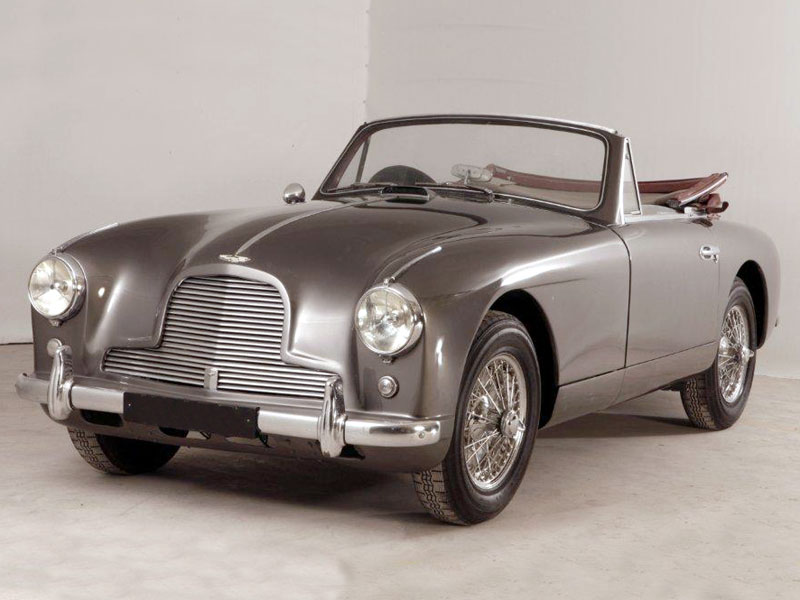
The first 49 had a chrome-framed front grille in three separate parts, and large rectangular cooling vents in the front wings. Subsequent cars had a one-piece grille with horizontal chrome slats, and no side vents. The single-piece bonnet was hinged at the front. At the rear of the fixed-head coupé (FHC) a small top-hinged lid gave access to the spare wheel, and luggage space was behind the front seats, accessible only from inside the car.
Later in 1950, a Drophead Coupé variant was introduced. At least 102 were built. In April 1950, an engine with larger carburettors, inlet camshaft the same as the exhaust (for increased duration), and higher compression ratio pistons (8.16:1) was made available. Aston Martin's first Vantage upgrade option offered 125 hp (93 kW). A closed coupé tested by the British magazine “The Motor” in 1950 had a top speed of 116.4 mph (187.3 km/h) and could accelerate from 0-60 mph (97 km/h) in 11.2 seconds. A fuel consumption of 20 miles per imperial gallon (14 L/100 km; 17 mpg‑US) was recorded. The test car costed £1914 including taxes.
The Aston Martin DB2/4 is a grand tourer sold from 1953 until 1957. It was available as a 2+2 hatchback, marketed as a Saloon, as a Drophead Coupé (DHC) and as a 2-seat Fixed Head Coupé. A small number of Bertone bodied spiders were commissioned by private buyers. The DB2/4 was based on the DB2, which it replaced. Changes included a wraparound windscreen, larger bumpers, and repositioned headlights.
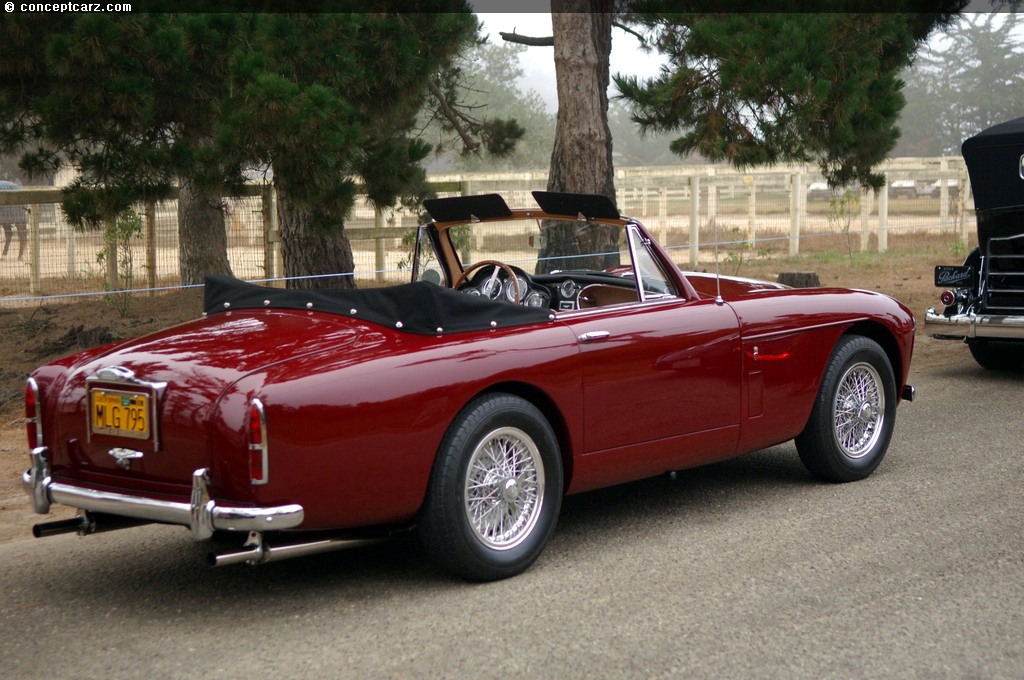
The Lagonda engine was initially the same dual overhead cam straight-6 designed by W. O. Bentley and used in the Vantage version of the DB2. Displacement for this engine, designated the VB6E, was 2.6 L (2,580 cc/157 in³), giving 125 hp (93 kW). In September 1953 for the Saloon and in April 1954 for the Drophead, a 2.9 L (2,922 cc/178 in³) VB6J version was used, raising power to 140 hp (104 kW) and maximum speed to 120 mph (193 km/h).
Of the 565 Mark I models produced, 102 were Drophead Coupé models. A 2.9 litre DB2/4 tested by British magazine “The Motor” in 1954 had a top speed of 118.5 mph (190.7 km/h) and accelerated from 0-60 mph (97 km/h) in 10.5 seconds. A fuel consumption of 23.0 miles per imperial gallon (12.3 L/100 km; 19.2 mpg‑US) was recorded. The test car costed £2621 including taxes. A DB2/4 Mk I Drophead Coupé appeared in the 1963 Alfred Hitchcock film “The Birds”.
The DB2/4 Mk II model, introduced at the London Motor Show in 1955, shared the chassis and mechanical specifications with the D2/4. The standard engine specification was the 140 bhp version of the 2922 cc engine, but with the option of having an upgraded high compression (8.6:1) version which, through larger valves and a high lift cam brake drums, was capable of 165 hp (123 kW).
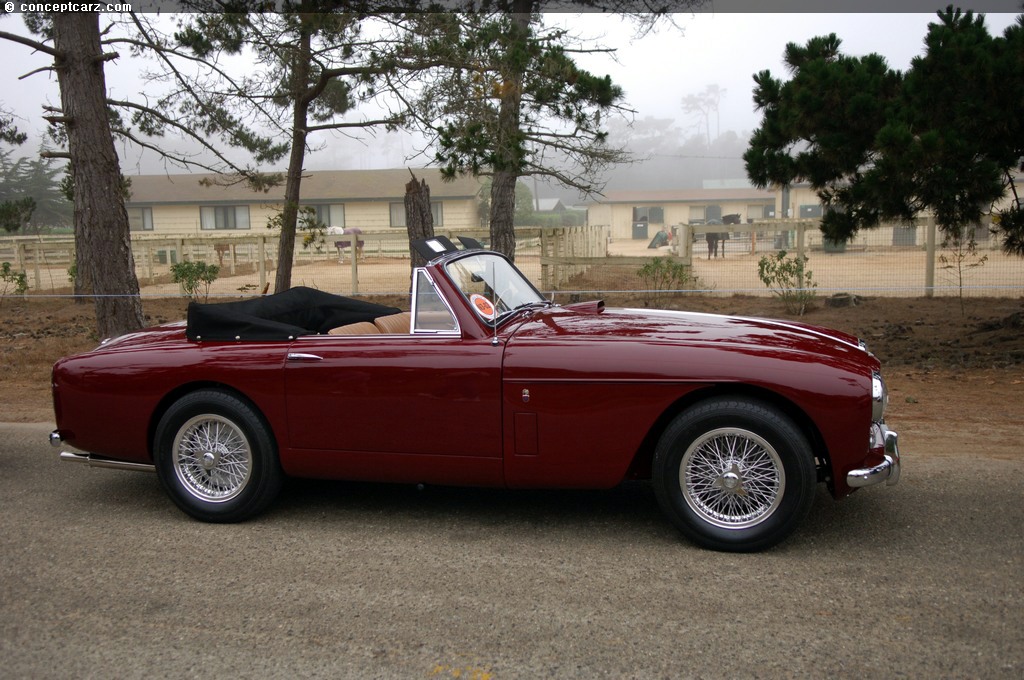
The key changes were in the bodywork, which was built by Tickford in Newport Pagnell and made it the first Aston Martin coachwork to be built by this company since its acquisition by David Brown in 1954. The general appearance was unchanged, but there were many detailed differences: the roof was raised by ¾ inch to provide more headroom, made more visible by a chrome strip above the windscreen, longer by 2 inches and 47 kilograms heavier.
The production process for the casting of the sills and door posts were changed and the bonnet/wing assembly simplified to allow the side panels behind the front wheel arches to remain fixed. It made the bonnet lighter but with no loss of engine access and allowed permanent ventilation to be added. As was the vogue at the time, rear fins were blended into the design and repeater indicators replaced the old semaphore units and the petrol filler was hidden behind a flap opened from inside the car.
The changes in the indicators left a space that was disguised with a chrome strip with the Tickford badge proudly displayed below it. Interior changes were mostly about comfort – more lateral support in the seats, more headroom and courtesy switches for the interior lights. On the controls, Aston Martin had responded to the badgering of the media by replacing the umbrella style handbrake with a more sporting fly-off type.
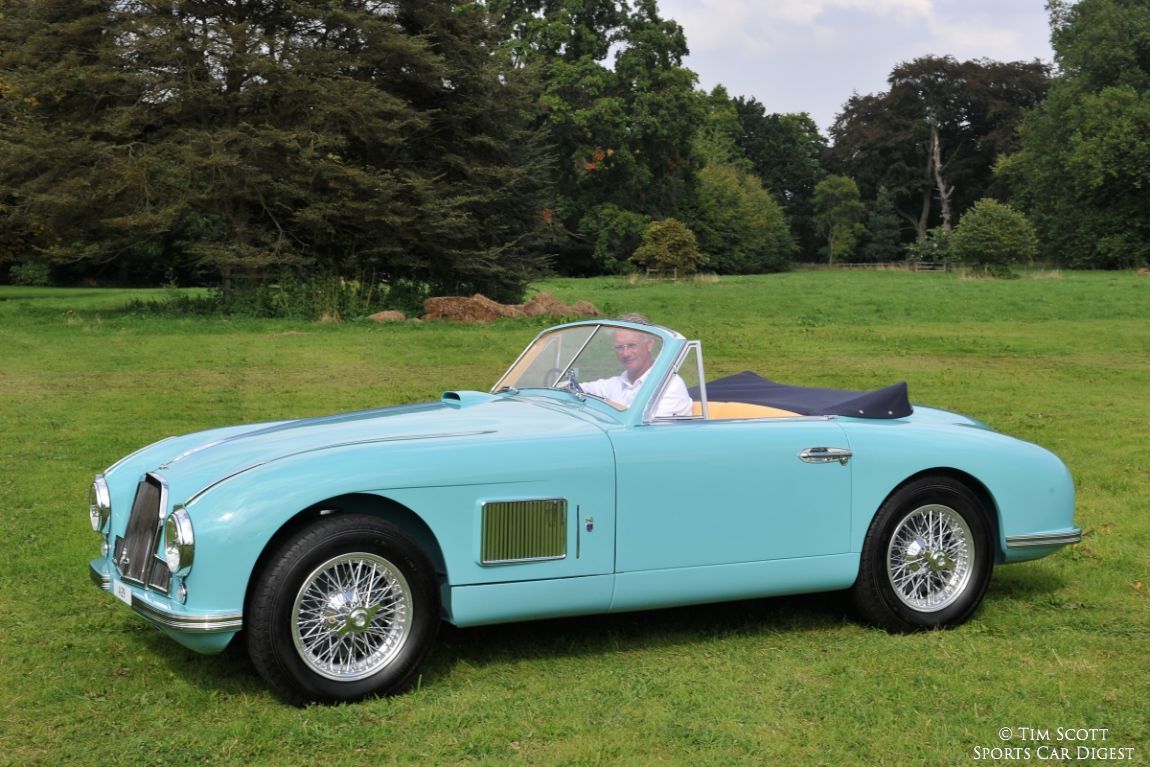
A 2-seat Fixed Head Coupé (FHC) was new, in addition to the continued Drophead. 34 of the 199 Mark II models used this new coupé body. The 1955 Aston Martin DB2/4 Drophead Coupe Standard specification included the 2.6-litre 'VB6E' engine in 125bhp Vantage tune but from early in 1954 the 3-litre 140bhp 'VB6J' engine was installed, providing 118mph top speed and 60mph in around 11 seconds.
This was one of the fastest cars then built in Great Britain - with 100mph achievable in third gear and around 120mph maximum - possessing impeccable handling plus a level of comfort rare in any high-performance car. At least 102 drophead coupés were constructed on the DB2/4 chassis. Roy Salvadori, a member of the Aston Martin racing team, was impressed by the “two-mile-a minute saloon” when he tested the Mark II Saloon for the “Autocourse” magazine in May 1955.
When production of the DB2/4 Mark II ended in August 1957, around 199 examples had been built (146 saloons, 34 Fixed Head Coupes, 16 Drop Head Coupes and 3 Spyders by Touring) making the Mark II the rarest amongst the DB2’s.
The sun threw its yellow light on the eastern walls of the Royal Castle in Stockholm. It was an early morning in 1927, still peaceful and quiet. Not even the palace guards, frozen in their tin soldier poses, seemed alive. But suddenly, the throbbing sound of rapid explosions from a four-stroke motorcycle engine echoed between the courtyard walls.
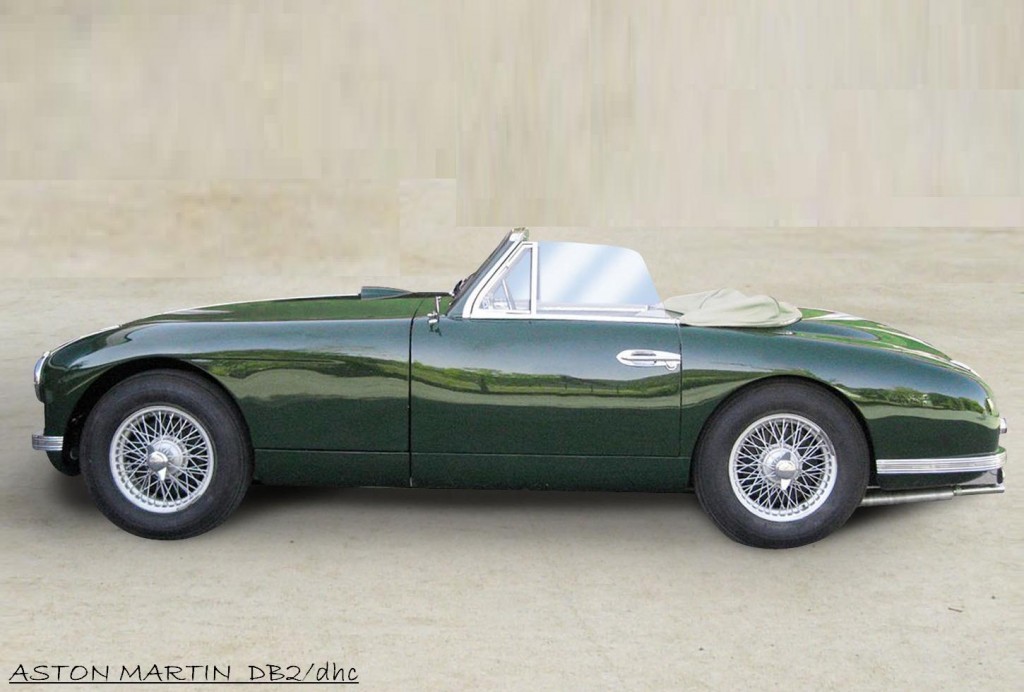
As the Husqvarna passed through the entrance tunnel and out between the heavy gates, the noise was amplified for a moment. The guards jumped to attention, saluting the young man on the motorcycle. He was still in his teens. A dark brown beret held his curly hair in place and large racing goggles covered his eyes. The guards knew who he was, but it was unlikely that anyone else would recognize him once he was out on the street. His Royal Highness Prince Bertil, the Duke of Halland and the Crown Prince of Sweden, was off on another of his frequent excursions with his new motorcycle.
Prince Bertil’s fascination with things on wheels had begun as soon as he was old enough to operate a pedal car in the vast corridors of the Royal Castle. The Prince had all the enthusiasm and natural ability of a great driver. But as much as he wanted to race, being a potential heir to the throne prevented him from taking part in actual competition.
He became publicly connected with fast cars and motor racing. People fondly called him “the motoring Prince.” This was the beginning of a legend. “My first Aston was a 1950 DB2 Drophead Coupe. It was light blue and had an aluminium body. It also had a column shift which I didn’t care much for. I had a floor-mounted gear lever put in at the same time the factory in Feltham exchanged my standard engine for one of the Vantage engines. I never took the car to Sweden, it was kept in England or France. I wish now that I had never sold it, and I wonder what became of it?”
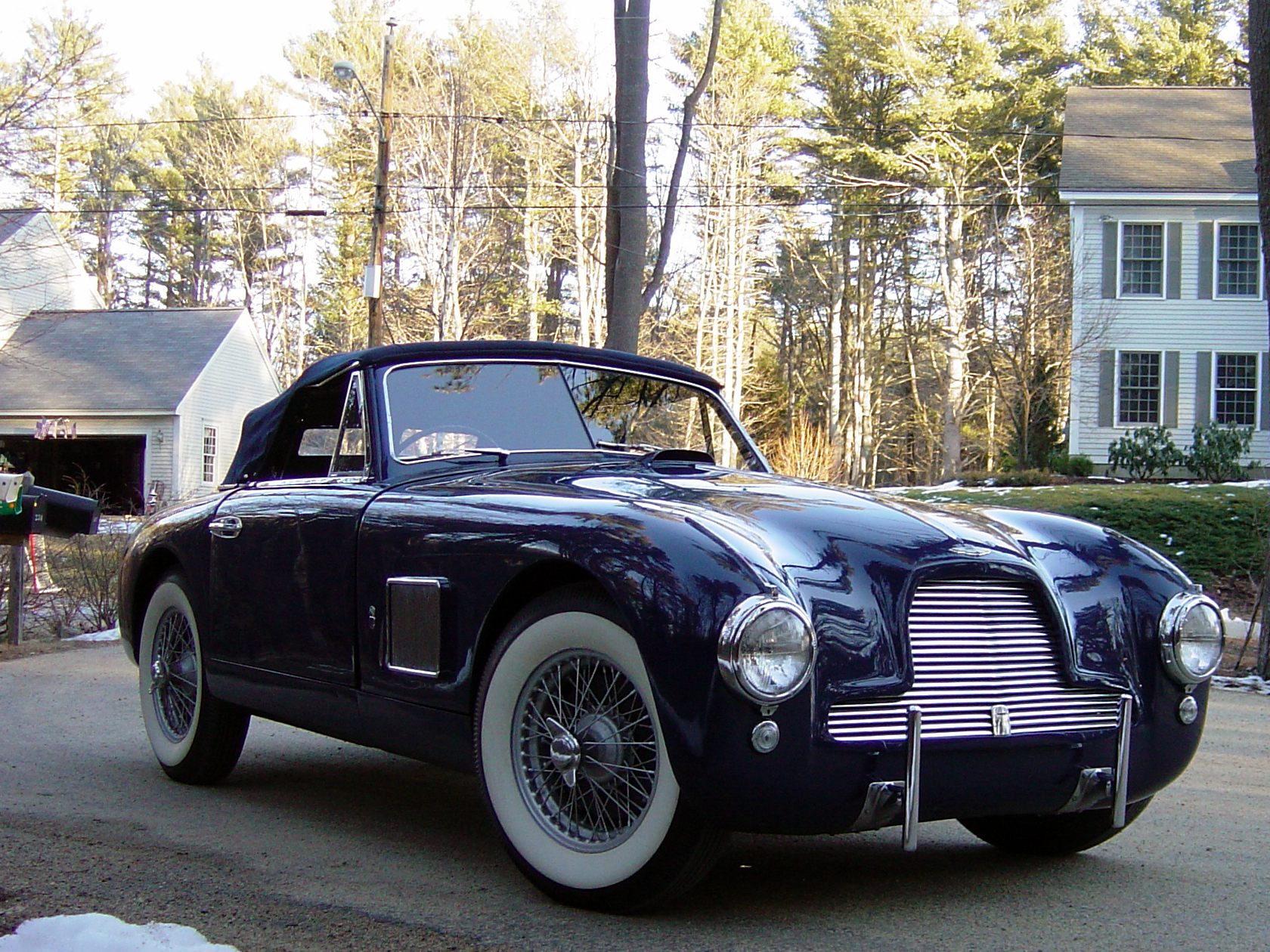
Prince Bertil, who was to become a great friend of David Brown, purchased the striking jubilee blue 1950 DB2 Drophead Coupe (DHC) chassis n° LML/50/26 engine n° LB6V/50/221, shortly after its appearance on display at the Earl’s Court Motor Show. The car, which was delivered to the Prince on November 10 1950 with UK reg. n° VMF37 LML/50/26, was the second production DB2 drophead and the first open car to be fitted with the Vantage engine.
Interestingly, along with a few other period modifications, the car features the 1-piece grille (fitted to all DB2s after the first 50 cars), but still retains the early-style side vents in the bonnet, a unique combination. At some point during Prince Bertil’s ownership the car was issued the Swedish royal reg. no. of ‘A29’ (‘A1’ for the King, etc.). He remained the proud owner of the DB2 for 12 years, 1950-1962.
An excerpt from an article published 17 June 2014 by Jonathan Evans.
Bulletproof class: the Aston Martin DB2/4 that inspired Bond.
Licence renewed: 007's original ride is back on the road. “James Bond flung the DB Mk 3 through the last mile of straight and did a racing change down into third and then into second for the short hill before the inevitable traffic crawl through Rochester. He had chosen the A2 in preference to the A20 to Sandwich because he wanted to take a quick look at Goldfinger-land.”
Goldfinger-land in an Aston Martin? What could be better on a sunny June day? And what could be more appropriate than to make the journey in the Aston Martin that appears to have inspired Ian Fleming to put Bond into an Aston in the first place? In earlier books Bond had driven a Bentley but in Goldfinger it was an Aston, and for Bond fans it has been an Aston ever since.
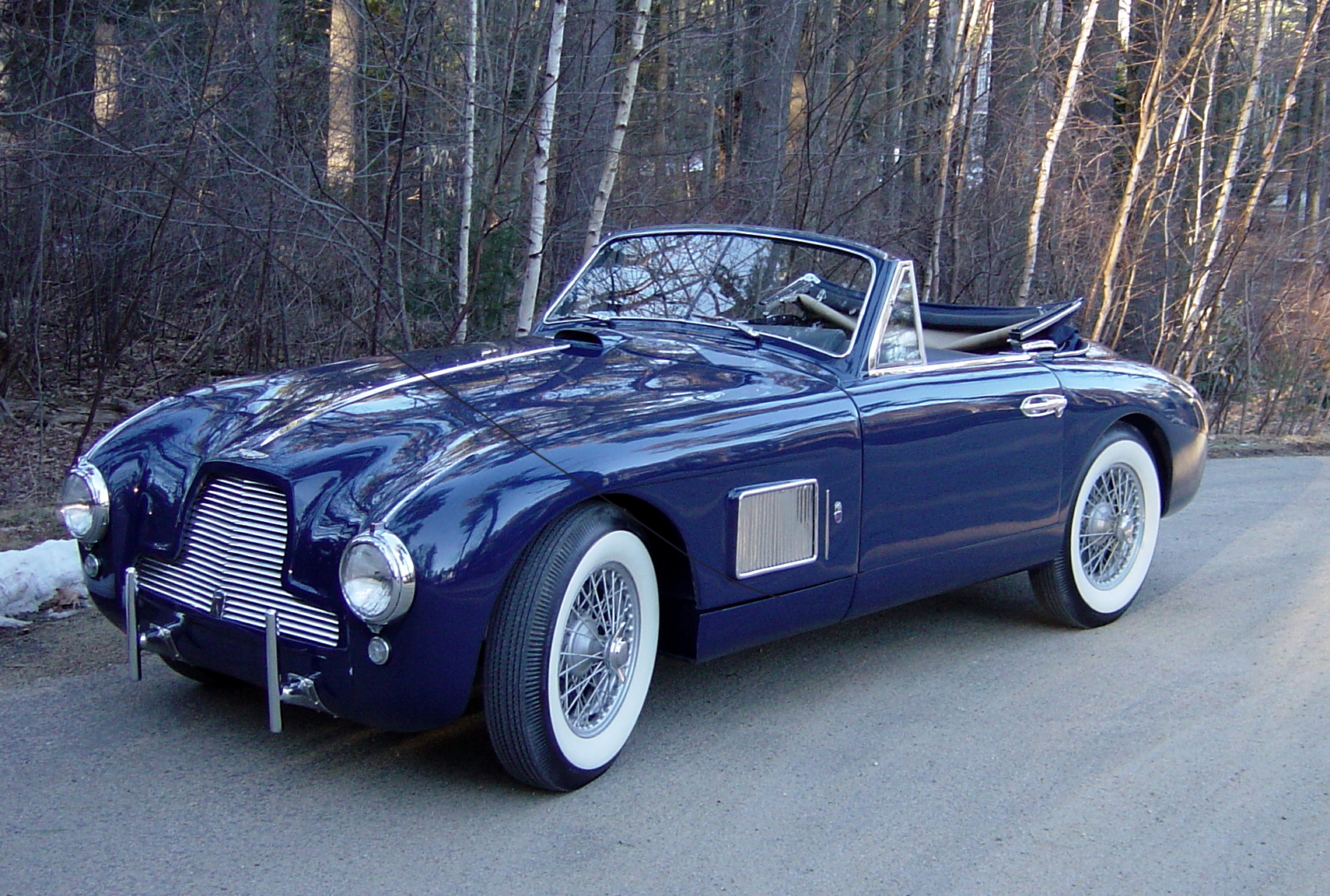
Of course, for many of us the classic Bond Aston Martin is the DB5, and we know this because we had the Corgi model of it with a pop-up bulletproof screen and a working ejector seat. But it was the DB2/4 that started it all. “All good cars tell a story and the one tested here tells a better tale than most.”
These “DB” cars became popular and successful in racing circles and in 1955 one was bought by Squadron Leader the Honourable Philip Ingram Cunliffe-Lister DSO (Distinguished Service Order). Cunliffe-Lister appears to have used the car for rallying and added various non-standard features to the specification, including reinforced steel bumpers, a semi-concealed compartment fitted between the front seats and a Halda Speedpilot device, which accurately computes time and distance.
In due course the car came to the end of its active life and languished in a garage until it was recently rediscovered and restored. It will be auctioned by Coys on July 12 at Blenheim Palace, Oxfordshire. So far, so good, but there is another side to the car — the James Bond connection.

Lord Swinton, Cunliffe-Lister’s father, had close associations with the espionage business. A confidant of Winston Churchill during the war, he was appointed to head the Home Defence (Security) Executive, which oversaw, among other things, the work of my old service, MI5. In fact, during the difficult period in which Brigadier “Jasper” Harker struggled as head of MI5, Swinton effectively usurped Harker’s role.
In the 1950s Cunliffe-Lister was a keen participant in international rallies. As it happens so was Fleming, even co-driving on one occasion for Donald Healey of Austin-Healey fame. Moreover, Fleming had a holiday house in Kent immediately next door to Dennis and Rose Ramsay, close friends of Cunliffe-Lister, who visited them regularly.
In his novel Moonraker, Fleming based the lair of the villain Sir Hugo Drax — real name Graf Hugo von der Drache — on the Ramsays’ house. Finally, the various modifications to Cunliffe-Lister’s car bear a striking similarity to those described in Goldfinger, including the reinforced steel bumpers, the concealed compartments and the electrical modifications. So while we cannot be certain that this is the vehicle that inspired Fleming to put Bond into an Aston, the timings, the connections and the vehicle all fit and it seems highly likely that this is indeed the origin of the Bond-Aston connection.
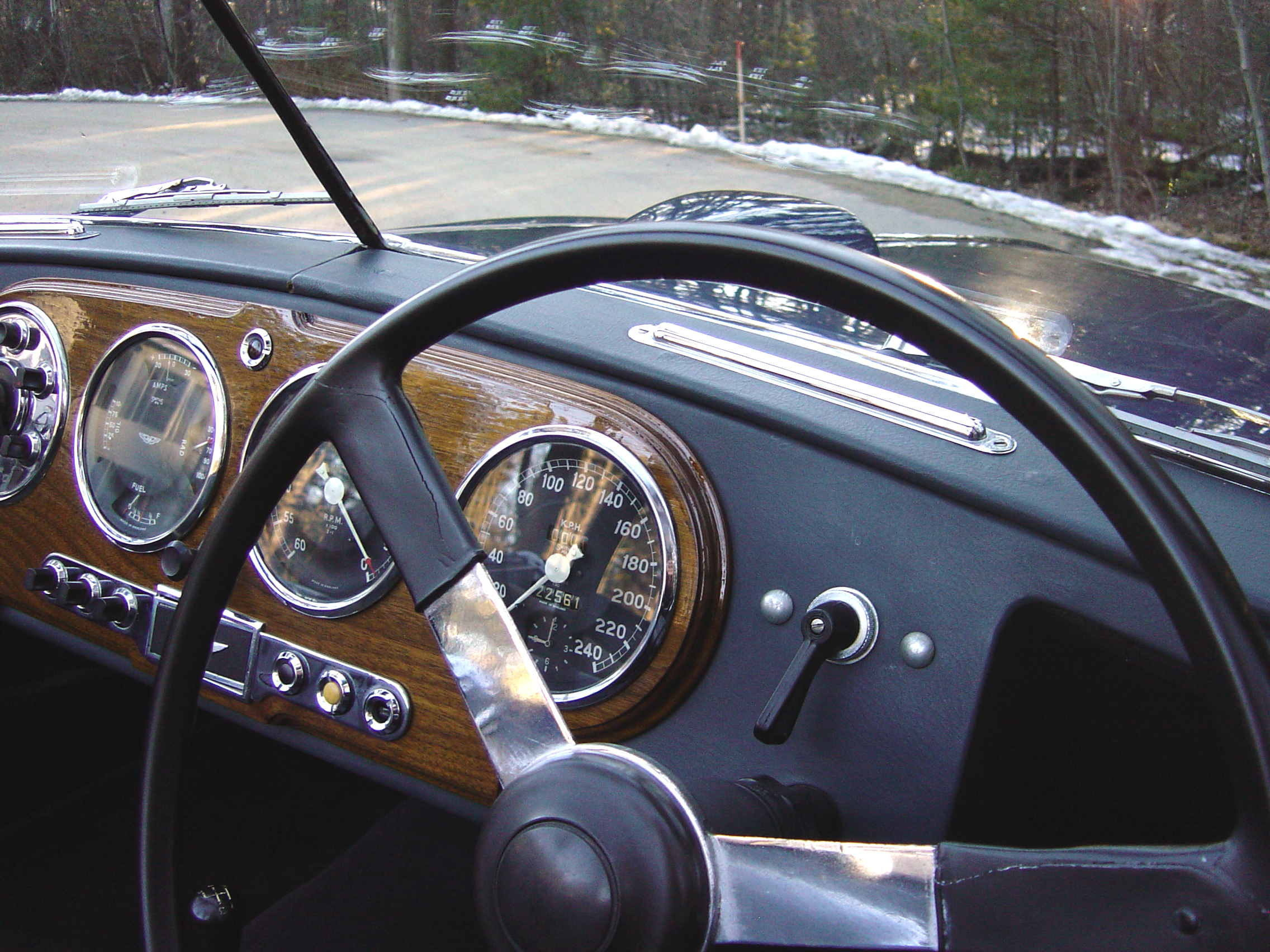
And so to the car itself. It is a 1954 DB2/4 Mk l Vantage finished in metallic grey, and a very handsome vehicle it is. The Mk l evolved into Bond’s DB Mk 3 over the next few years but the styling cues established in the 1950s pass on through the Aston lineage right up to the present day in the grille and the rear quarters.
Less familiar is the hatchback arrangement on this car — one of the earliest. This gave the designers the problem of how it should best be incorporated and their answer was a smallish rear window cum door that opens onto a flat load area.
The Jaguar E-type coupé has a similar arrangement (though it is side-opening on the Jag) and probably borrowed the approach from the DB2/4 — it certainly looks like it. The slightly later Reliant Scimitar opted for a shooting brake look that, to my eye, works even better.
The Aston is a two-plus-two with wide, comfortable front seats but tiny rear perches that are probably best ignored — better to fold the seat backs down so that you get a flat load bay. Getting into the DB2/4 is a challenge because, although the big frameless doors afford plenty of access, the sills are very high. But once you have climbed over them and reached your seat it’s pretty spacious and visibility is good.
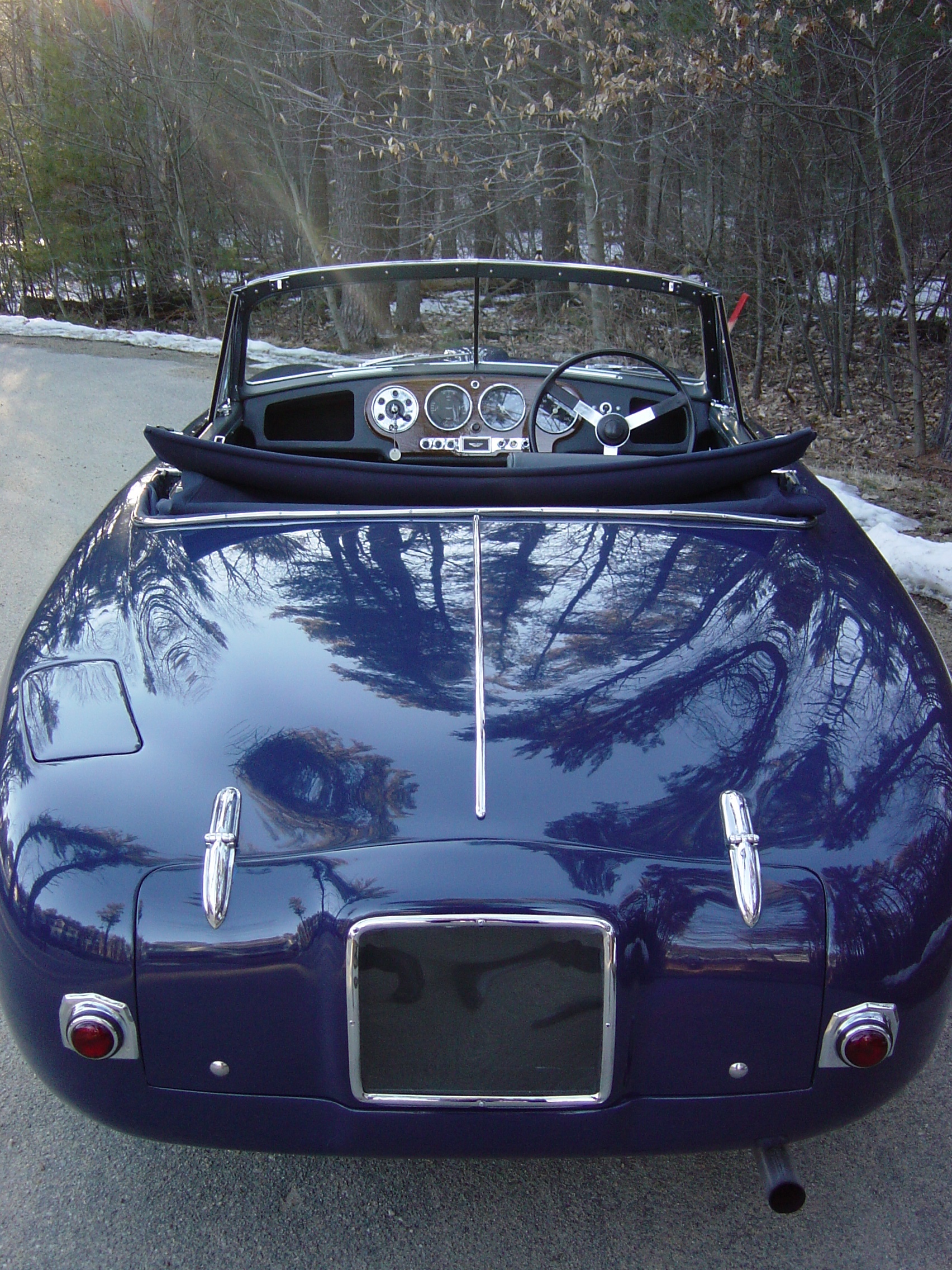
The “secret compartment” for the tool set is still in place, complete with tools. Four circular dials set in the walnut dash incorporate all the necessary instrumentation and there are a few luxuries such as a cigar lighter and a rather fetching leather-fronted ashtray that can be rotated into the dash when not in use — a novel and ingenious contraption for its time that, who knows, may have inspired the ejector seat control hidden in the top of the DB5’s gearlever in the film of Goldfinger.
The steering wheel is, of course, huge as there is no power assistance but once you are under way that is not a problem. The four-speed manual gearbox is pretty easy to use and, in fact, it is a forgiving car to drive as it has plenty of torque that lets you pull from low revs. Some later models had overdrive.
The real test, of course, is how it drives and for a 60-year-old car the Aston behaves very well. The straight-six Lagonda engine was very powerful in its day and still has some fire in its belly. On an open stretch you can easily maintain a good cruising speed and the acceleration is acceptable too.
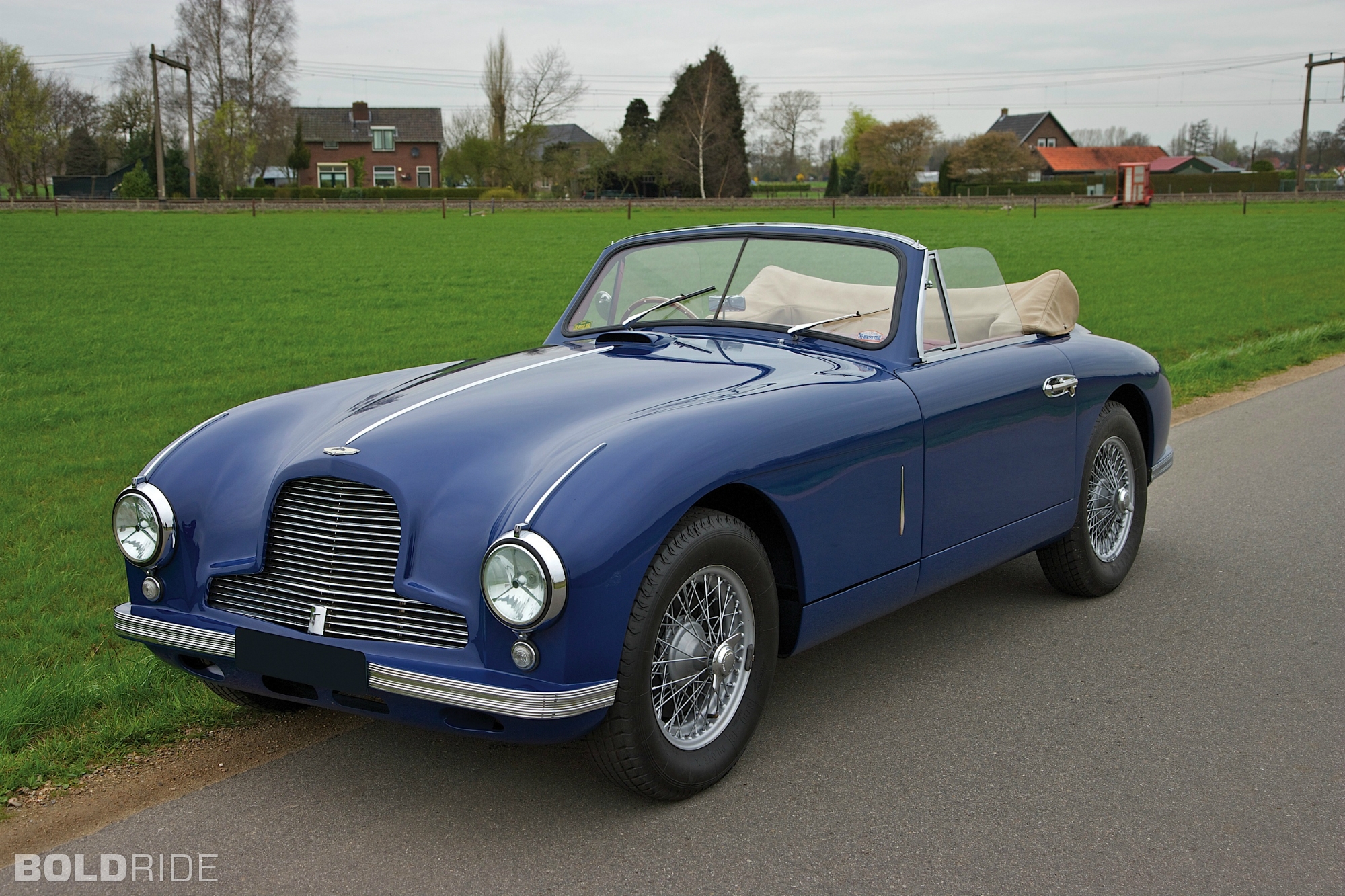
The steering is vague by today’s standards and the brakes weak but the ride is good and the only real impediment to a long journey would be the noise. The Lagonda engine is ever present and with your foot down it thunders. That’s fun for the first half an hour but if you wanted to take the car for a long run across France then either some additional silencing or earplugs might help you to arrive at your destination in an equable frame of mind.
Astons have pulling power and this one more than most. Parking up at Reculver in Kent, by the ancient church mentioned in Goldfinger, we were soon surrounded by admirers wanting to talk about the car and take photos.
Jaguar
Jaguar Cars was the company that was responsible for the production of Jaguar cars until 1 January 2013. Jaguar's business was founded in 1922 as the Swallow Sidecar Company by two motorcycle enthusiasts, William Lyons and William Walmsley, originally making motorcycle sidecars before developing bodies for passenger cars.
Jaguar first appeared in September 1935 as a model name on an SS 2½-litre sports saloon. A matching open two seater sports model with a 3½-litre engine was named SS Jaguar 100. On 23 March 1945 the S. S. Cars shareholders in general meeting agreed to change the company's name to Jaguar Cars Limited. Said chairman William Lyons: "unlike S. S. the name Jaguar is distinctive and cannot be connected or confused with any similar foreign name."
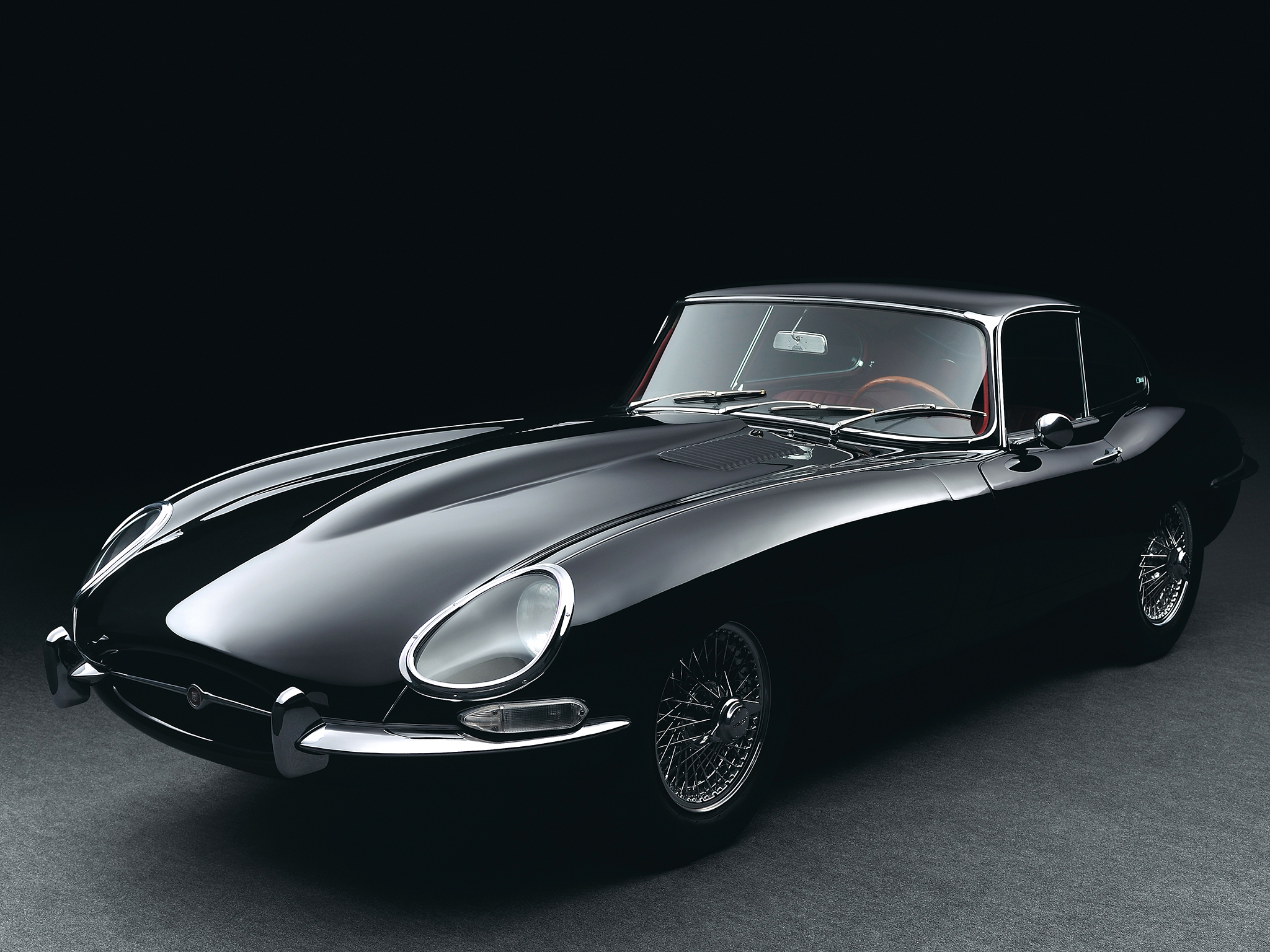
Jaguar made its name by producing a series of successful eye-catching sports cars, the Jaguar XK120 (1948–54), Jaguar XK140 (1954–57), Jaguar XK150 (1957–61), and Jaguar E-Type (1961-75). The core of its success following WWII was the twin-cam straight six engine, conceived pre-war and realised while engineers at the Coventry plant were dividing their time between fire-watching and designing the new power plant. It had a hemispherical cross-flow cylinder head with valves inclined from the vertical; originally at 30 degrees (inlet) and 45 degrees (exhaust) and later standardised to 45 degrees for both inlet and exhaust.
Few engine types have demonstrated such ubiquity and longevity: properly maintained, the standard production XK Engine would achieve 200,000 miles of useful life. E-Type is the real masterpiece of Jaguar and of all time motoring. It’s the enjoyment of simply looking at the car, it’s not needed to drive it.
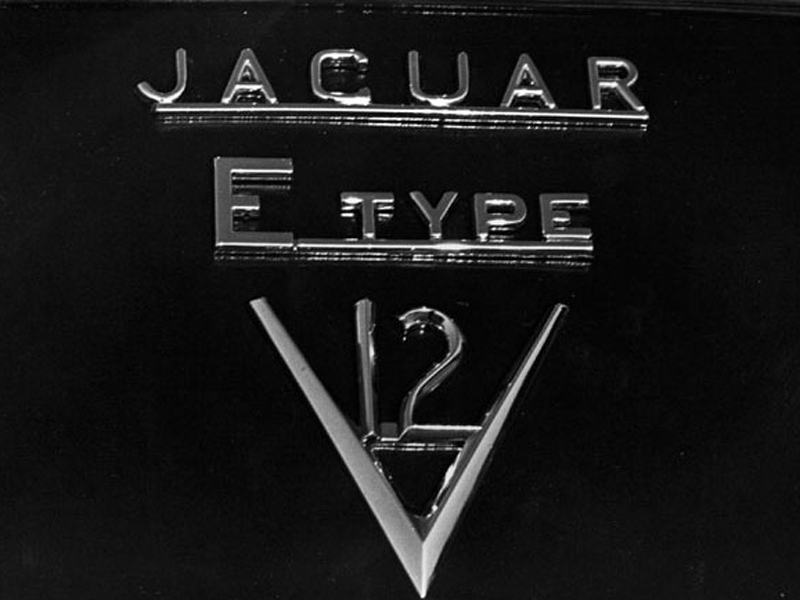
When it was launched, it was faster and more beautiful than the Ferrari's and Aston's of the day and cost a third the price. It was the icon of the '60s and '70s. Frank Sinatra is said to have taken one look at the Jaguar E-Type upon its unveiling in 1961 and exclaimed, "I want that car, and I want it now." So began Hollywood's love affair with the iconic English sports car. With its thrusting hood, wire wheels and optional V-12 motor, the E-Type was an instant sensation.
The history of the Jaguar E-Type, Diabolik’s car, begins on 16 March 1961 at the Motor Show in Geneva. The 1960s have given us some of the greatest cars ever made, like the Ferrari 250 GTO, the Lamborghini Miura and, of course, the E-Type. For the time, the E-Type was a really very advanced car but what thrilled you first of all was certainly the body, designed by the “magician” of aerodynamics Malcolm Sayer.
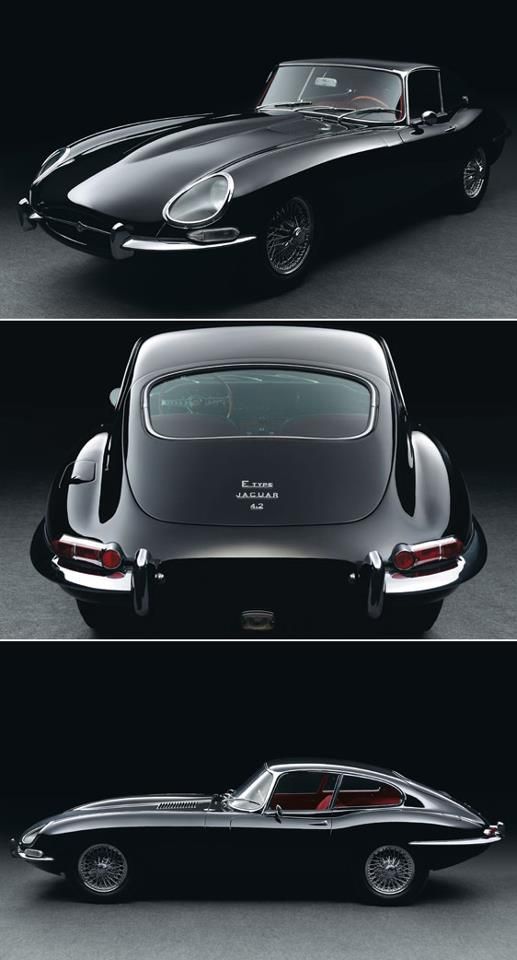
Sleeker, sinuous and seductive, the new Jaguar made its debut being available in two types of body, convertibile (called OTS - Open Two Seater) and coupè (called FHC - Fixed Head Coupe). The engine was coupled with a not very good Moss four-speed gearbox, with an unsynchronised first gear. Its manoeuvrability was one of the most criticised elements of the car, together with the brakes resistance when you drive fast and with the lack of the ability of seats to hold the body on a curve. The rack steering wheel was another important element, thanks to the low gear ratio and the small effort to use it.
Everything gave the E-Type a great effectiveness, with a certainly not composed and gentle temper but demanding, racing-car style. It had all the elements to become a pure motoring myth. The E-Type represents the very essence of Jaguar. Elegant and sporty, it won the heart of many generations.
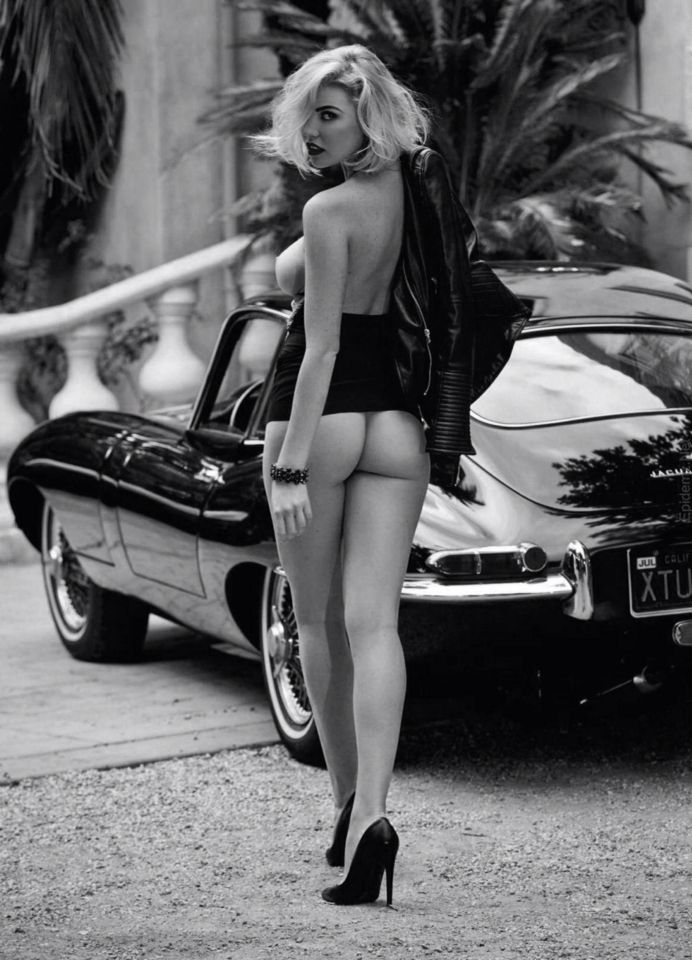
Today many companies have specialised in the reconstruction of splendid and faithful replicates or, in some cases, even in partial rebuilding of the cars as is the case for the English firm Eagle, specialised in refining E-Type originals. This company is the best in the world to assemble tailor made Jaguar E-Type as requested by customers.
Art from aluminium: why the Jaguar E-Type is forever (by Peter Cheney)
The common housefly has a lifespan of four weeks. Most car designs don't fare much better – they explode onto the market in a burst of hype, enjoy brief renown, and are then rapidly consigned to the trash can of stylistic history. Most cars don't stand the test of time. But then we come to the Jaguar E-Type, a 55-year-old design that still has the power to turn heads. This is style at its most timeless. Like the Chanel jacket and the little black dress, the E-Type still works. Not bad for a machine that was designed when Winston Churchill and John F. Kennedy were still alive.
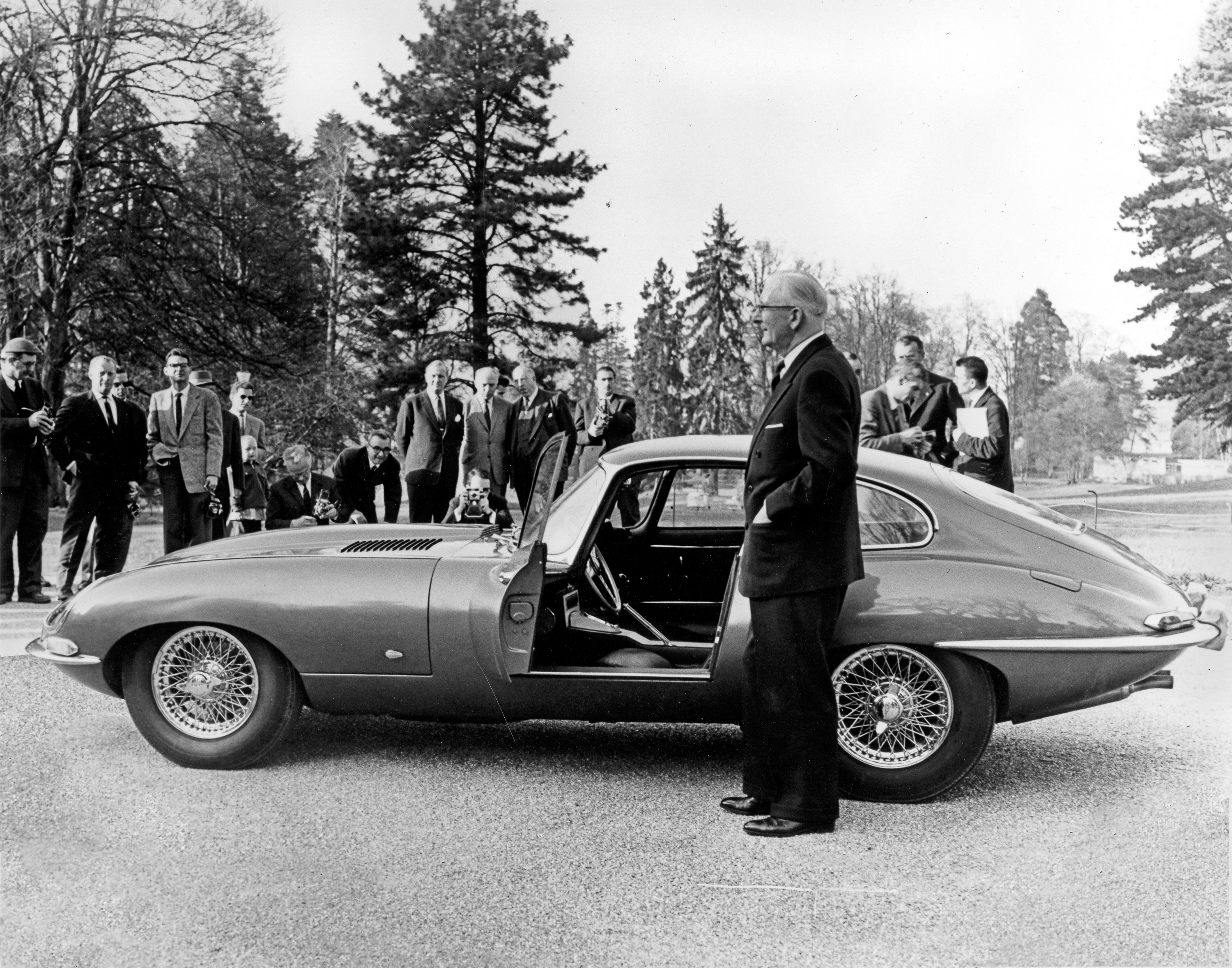
So what gives the E-Type its lasting appeal? Like a fine wine, great cars have a provenance and flavour that speak to their heritage and industrial DNA. The E-Type was designed as the everyman's supercar. It cost a fraction of a Ferrari, yet exuded the same kind of exotic charisma – maybe more.
This was not an easy feat. With their hand-formed bodies and beautiful castings, the Ferraris of the time oozed a languid Italian ambience. You could envision teams of artisans hammering out sheets of aluminium and crafting gorgeous steel suspension arms in a process not unlike the making of a Michelangelo sculpture. This was not far from the case: a Ferrari was a cost-is-no-object machine, built for the wealthy cognoscenti.
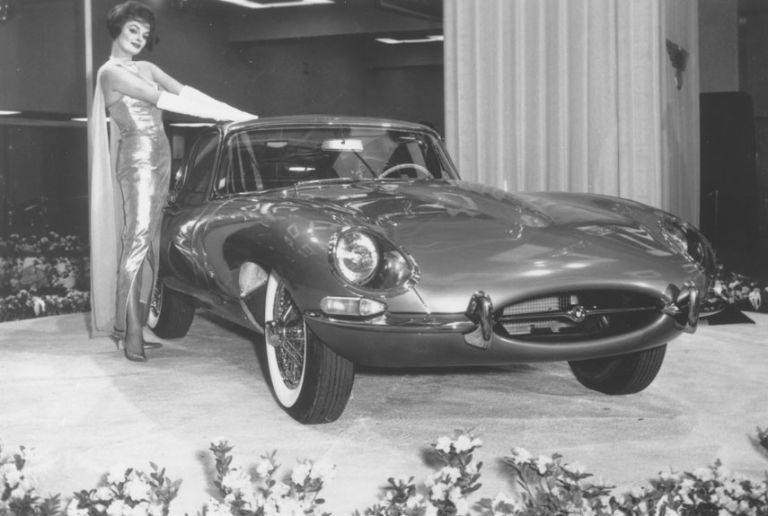
By comparison, the E-Type was an inexpensive machine, built on a tight budget. It was the product of design genius coupled with industrial desperation. Unlike Ferrari, Jaguar was a fast-paced, assembly-line-style operation, and the company's back was to the wall – rising costs, fierce competition and protracted battles with its militant labour union had taken Jaguar to the financial brink.
The company needed a hit. The design of the E-Type began in the late 1950s. Two men were instrumental in its development. One of them was Malcolm Sayer, a designer who had been heavily influenced by Second World War aircraft like the Supermarine Spitfire. The other was Sir William Lyons, the Jaguar company's gifted and autocratic founder.
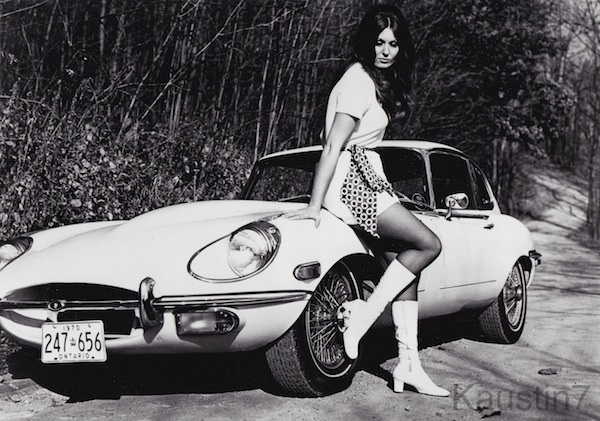
Sayer created the immortal lines of the E-Type in a back room at the Jaguar factory, sketching its shape with lead pencils and French curves – there were no straight lines on the E-Type. Lyons, meanwhile, oversaw the E-Type's design and engineering program with the critical eye and spot-on taste that had made him an industry legend.
Lyons was a manager who guided teams to greatness. His role was not unlike that of music producer George Martin, who guided the Beatles with such an unerring hand that he became known as "the fifth Beatle."
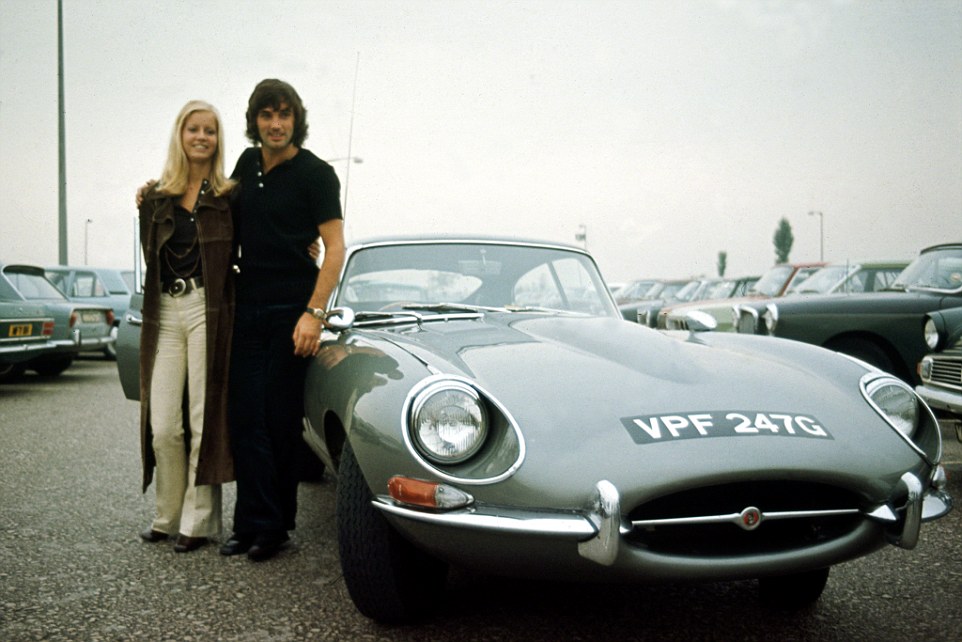
When it hit the market back in 1961, Enzo Ferrari himself declared the E-Type "the most beautiful car ever built." Everyone wanted one, and it attracted a long list of celebrity owners, including Twiggy, Roy Orbison, Steve McQueen, Tony Curtis, Brigitte Bardot and Frank Sinatra. The E-Type became the signature ride of hard-living soccer superstar George Best, and it inspired the quote that summed up his life: "I spent a lot of money on booze, birds and fast cars," Best said. "The rest I just squandered."
The E-Type stayed in production for 14 years, going through a series of variations – there were hardtops and convertibles, lightweight race cars, plus a regrettable four-seat version that desecrated the car's perfect shape.
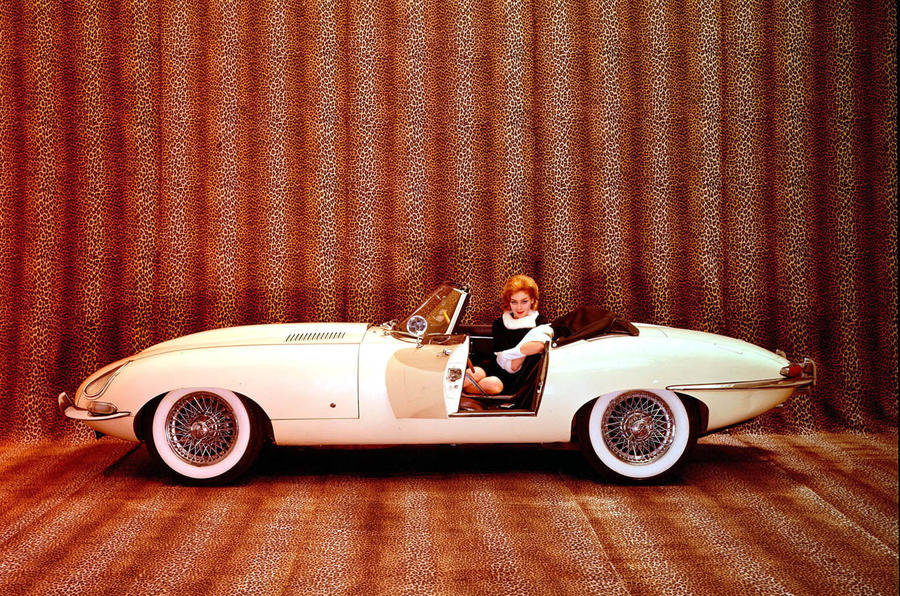
In 1971, Jaguar introduced the E-Type Series 3, with a 12-cylinder engine that required a swollen, extended nose to house it. (Today, the most valuable E-Types are the Series One cars, with six-cylinder engines and body lines that most closely correspond to Sayers' original sketches). Like many great beauties, whether human or mechanical, the E-Type is fraught with complication.
In its era, Jaguar was long on style but often short on execution quality: Many E-Type's came from the factory with misaligned body panels, leaking hydraulics and electrical systems that seemed to be inhabited by evil demons (like most British manufacturers in that era, Jaguar bought its electrical components from Lucas, a company that came to be known as "Prince of Darkness").
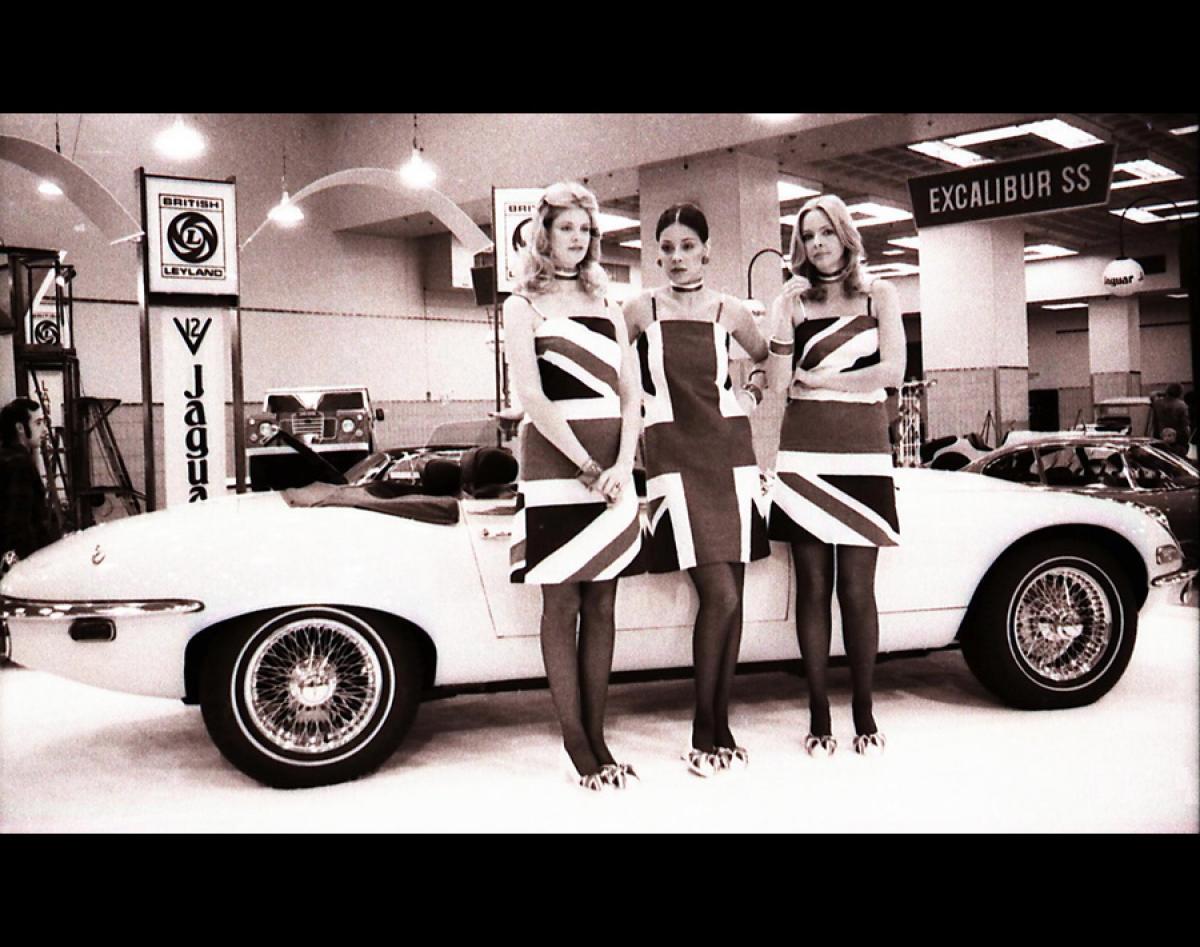
The car's flaky systems played a starring role in a Mad Men storyline. When one of Don Draper's advertising colleagues decides to kill himself by running a hose from his Jaguar's tailpipe into the cockpit, he's foiled when the car fails to start. (He hangs himself instead.) Never mind.
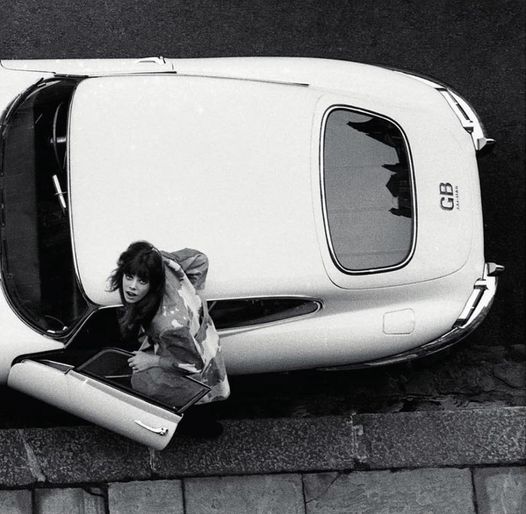
Jane Birkin hops in her Jaguar E-Type, 1965.
The E-Type has a special ambience that runs bone deep. Beneath that beautiful curved skin is a set of components that made it a sports car for the ages, complete with independent rear suspension, a crooning engine and inboard disc brakes. At the time, these brakes were a technological marvel. They reduced the load on the vehicle's suspension by moving the mass of the brakes away from the wheel.

And this is just one of many beautiful technical features of the E-Type: when you put a Series One on the hoist and get underneath, it looks even more beautiful than it does from above. Of course, those exotic brakes can turn a rotor replacement into a days-long job, filled with cursing, broken knuckles and multiple runs to the parts store. A thing of beauty is a joy forever, complications and all. Long live the E-Type.
E-Type Coupe 1961
| Carmen Red | Imperial Maroon | Claret |
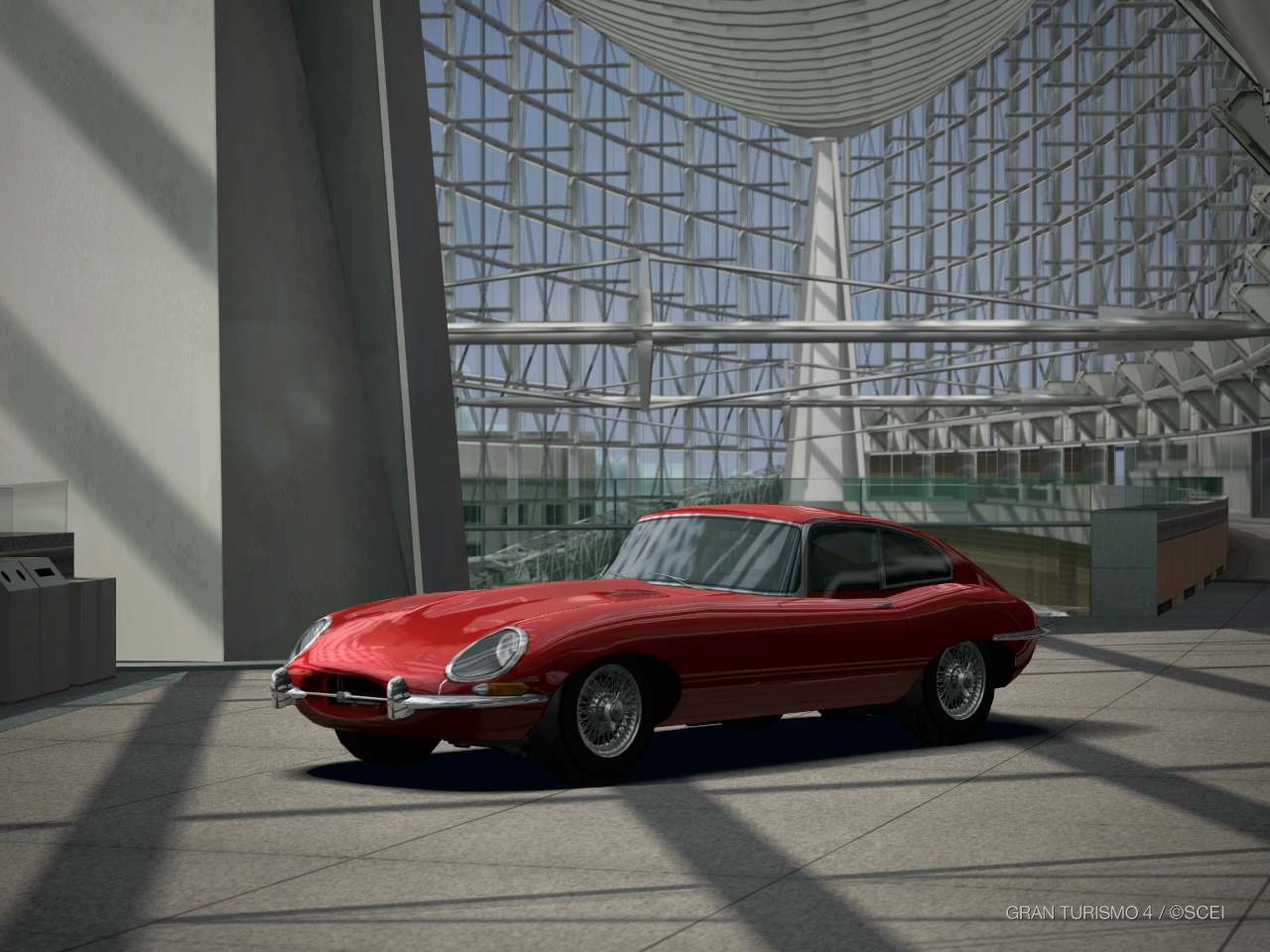 |
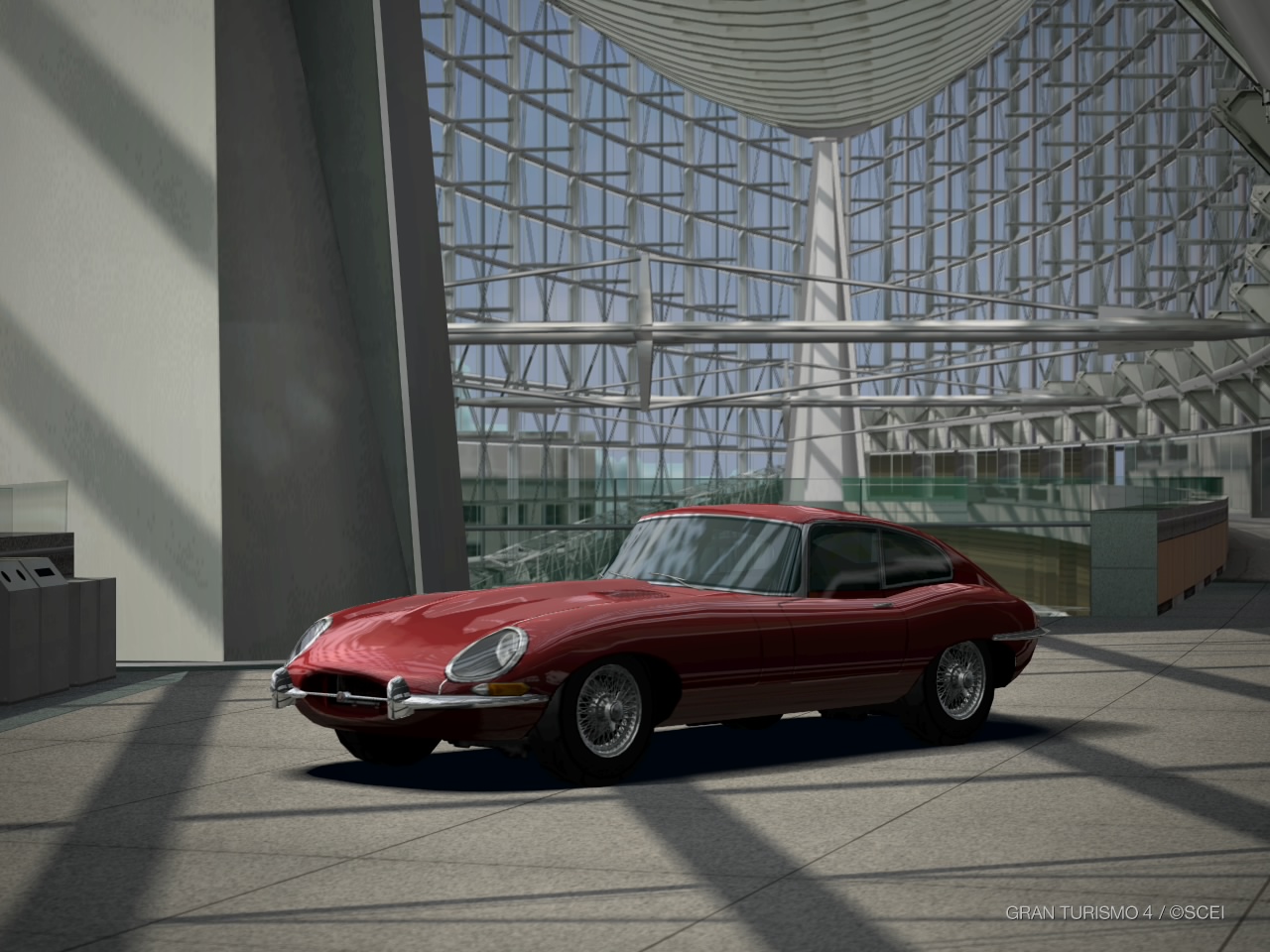 |
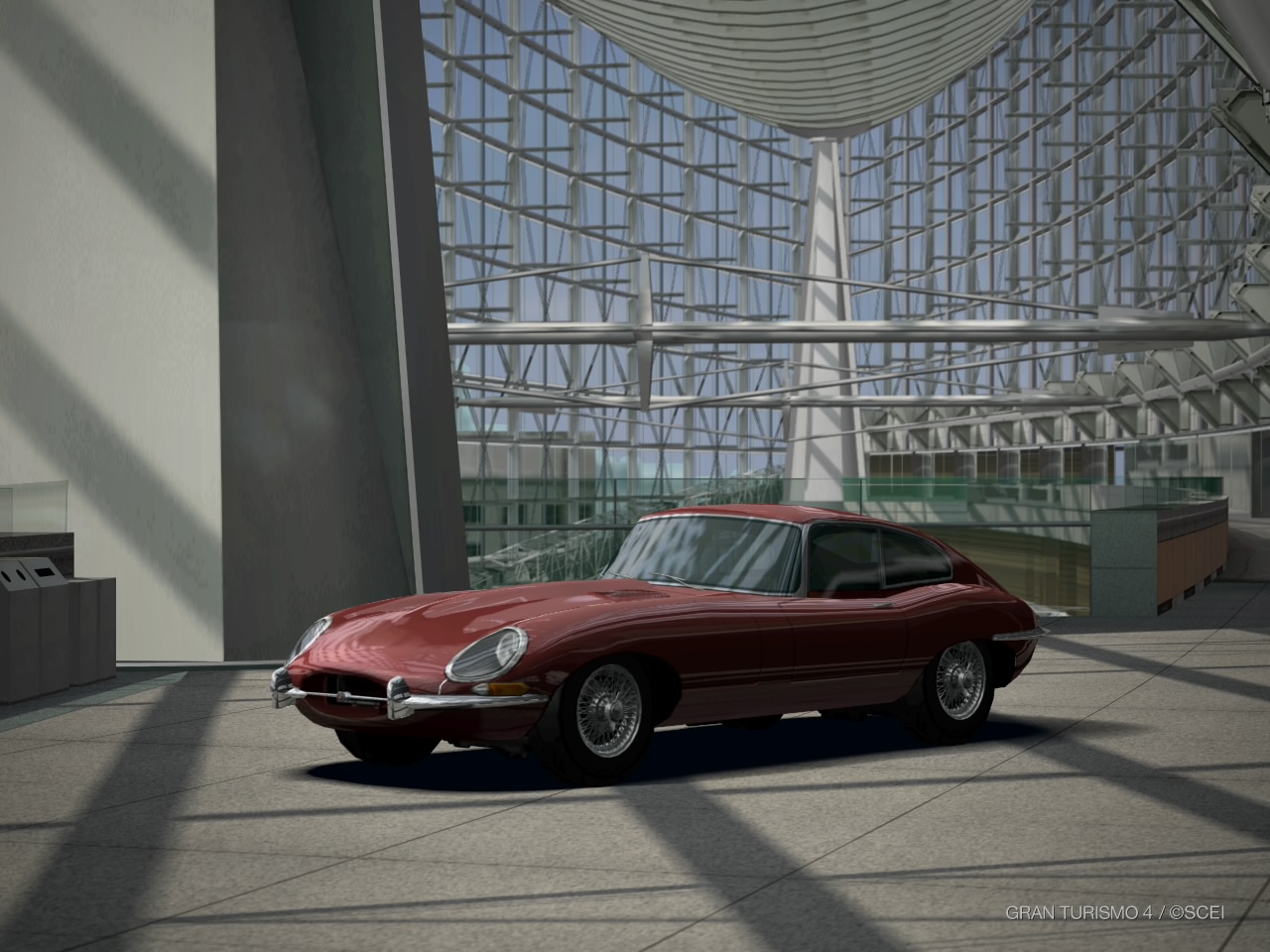 |
| Cream | Pearl Grey | Mist Grey |
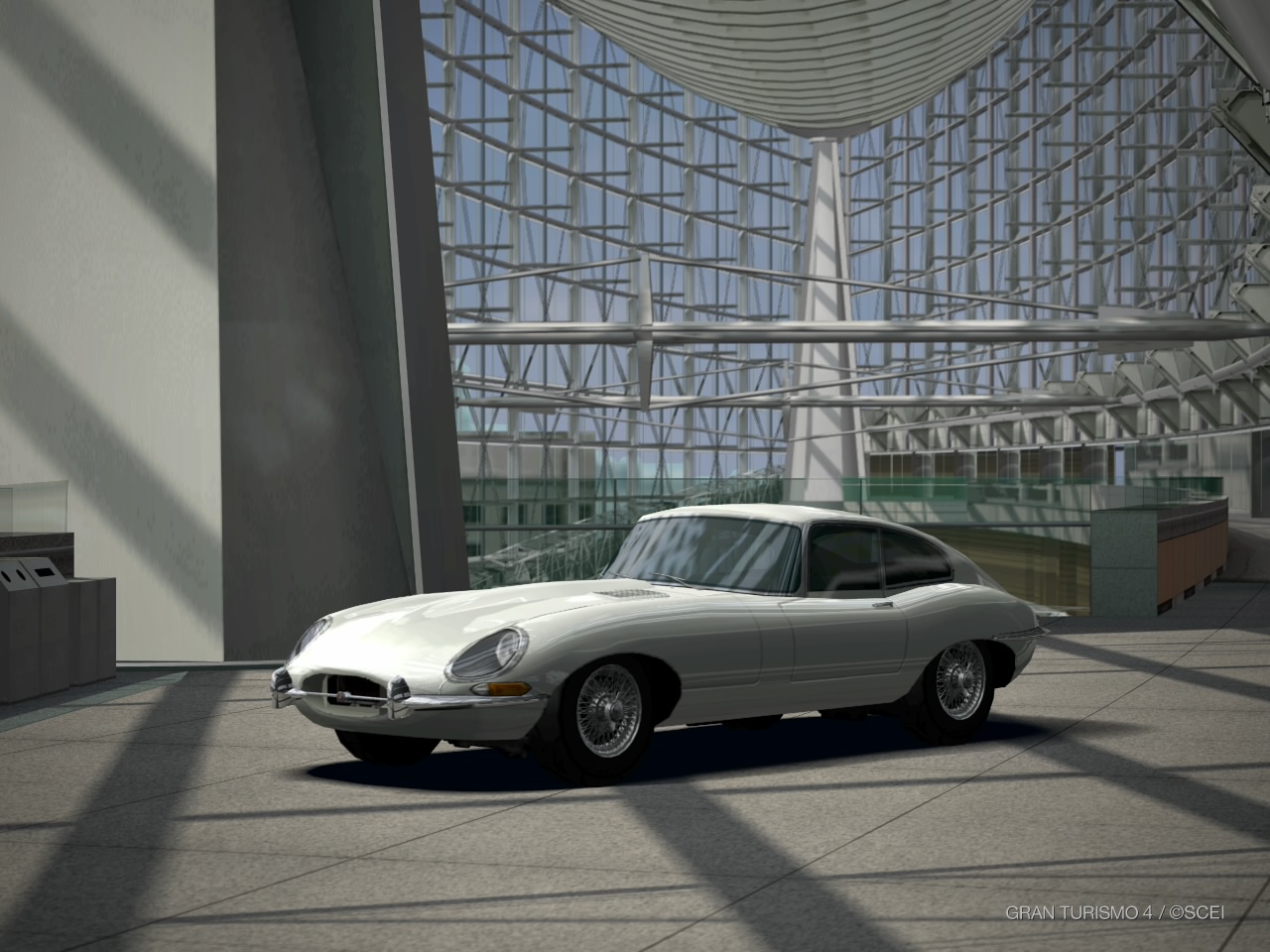 |
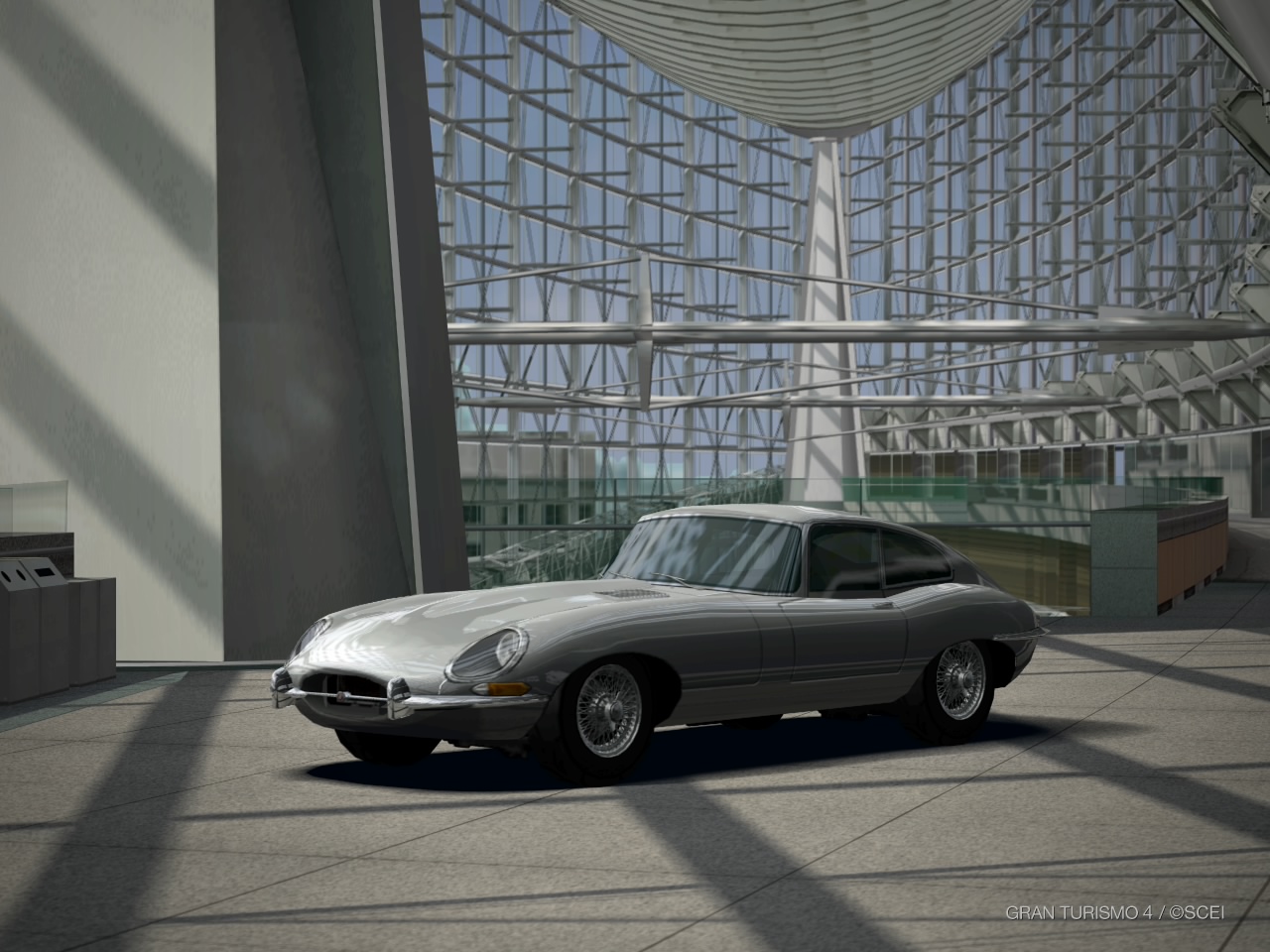 |
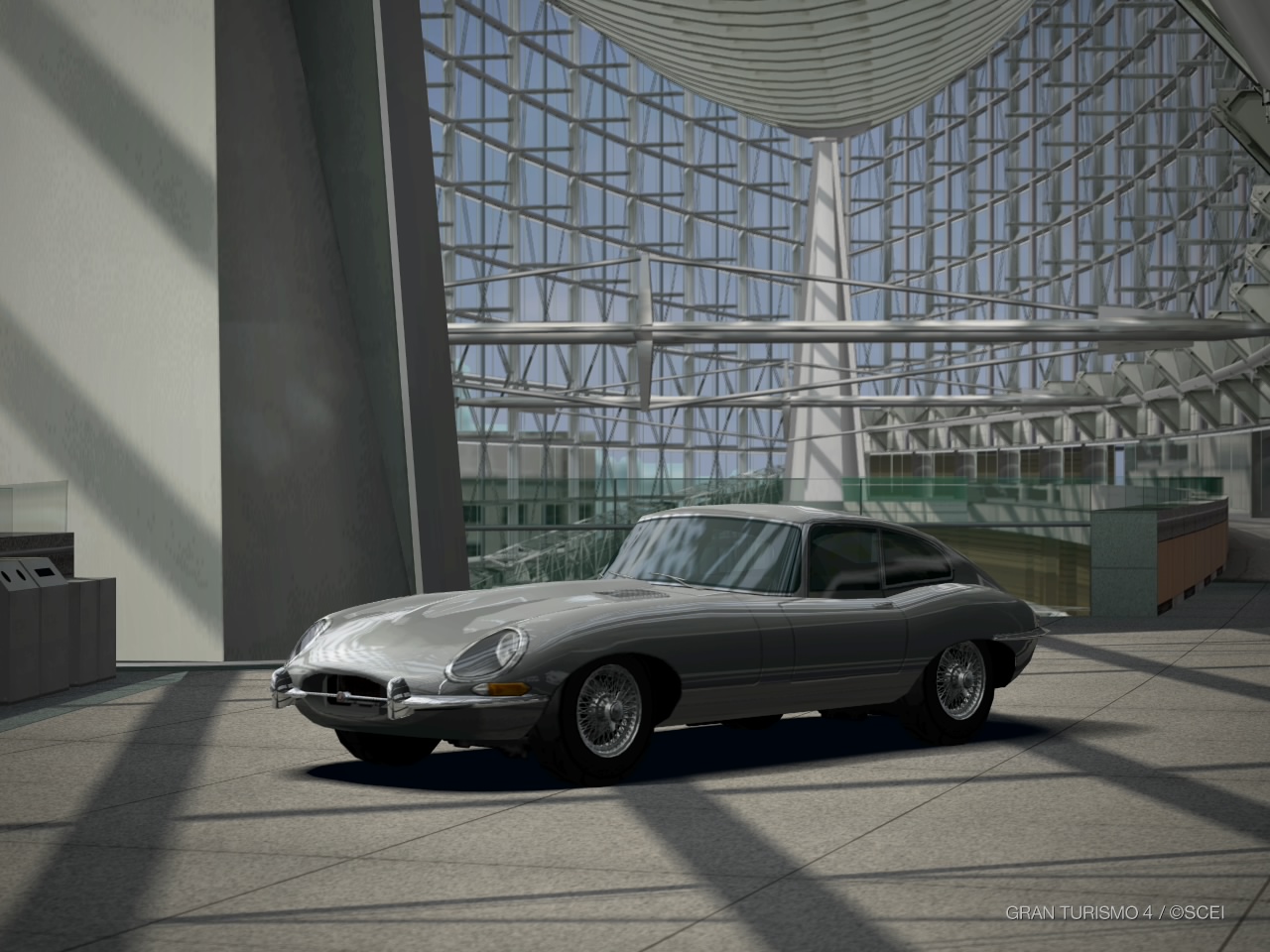 |
| Opalescent Silver Grey Metallic | Opalescent Gunmetal | Opalescent Bronze Metallic |
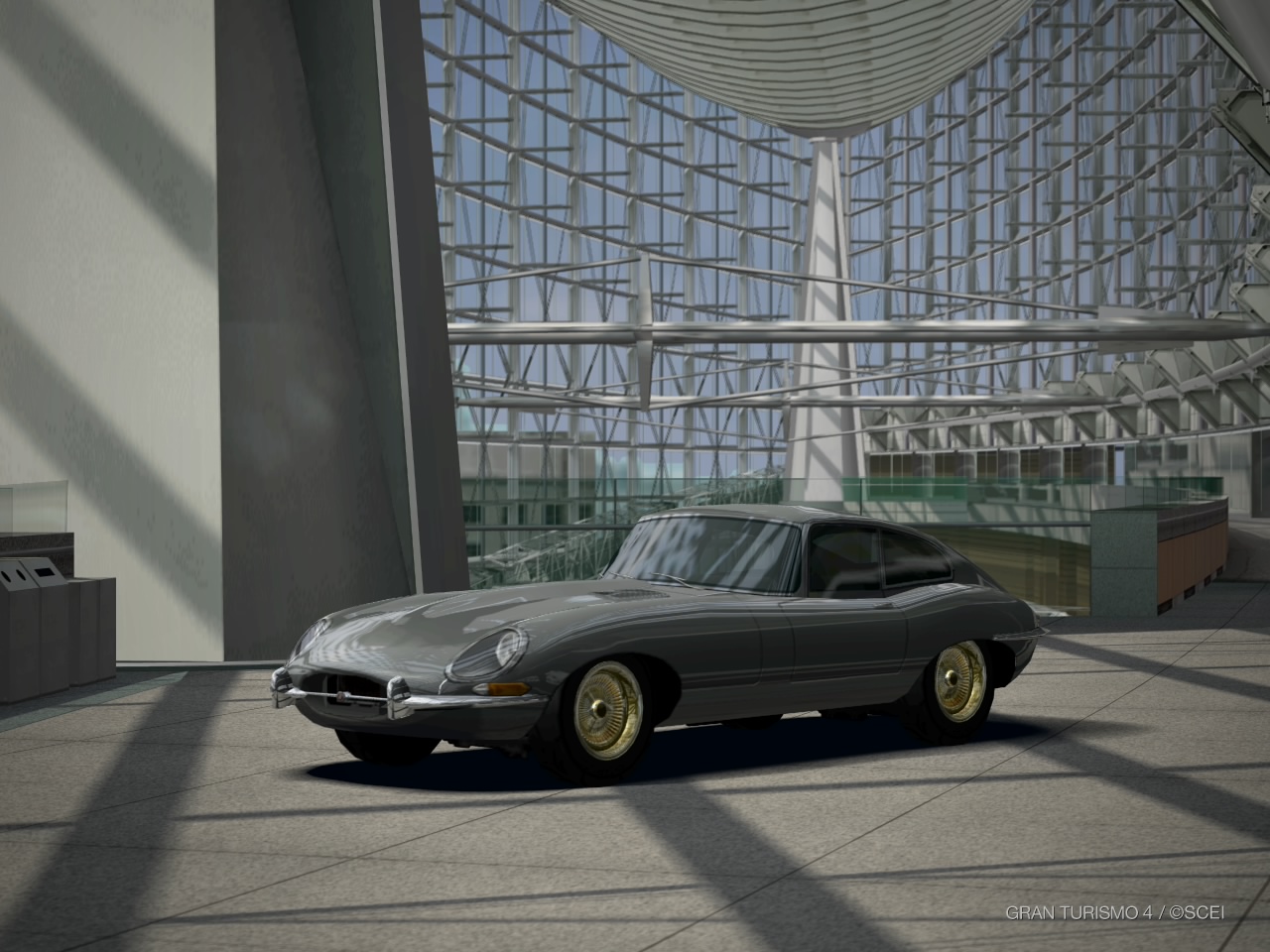 |
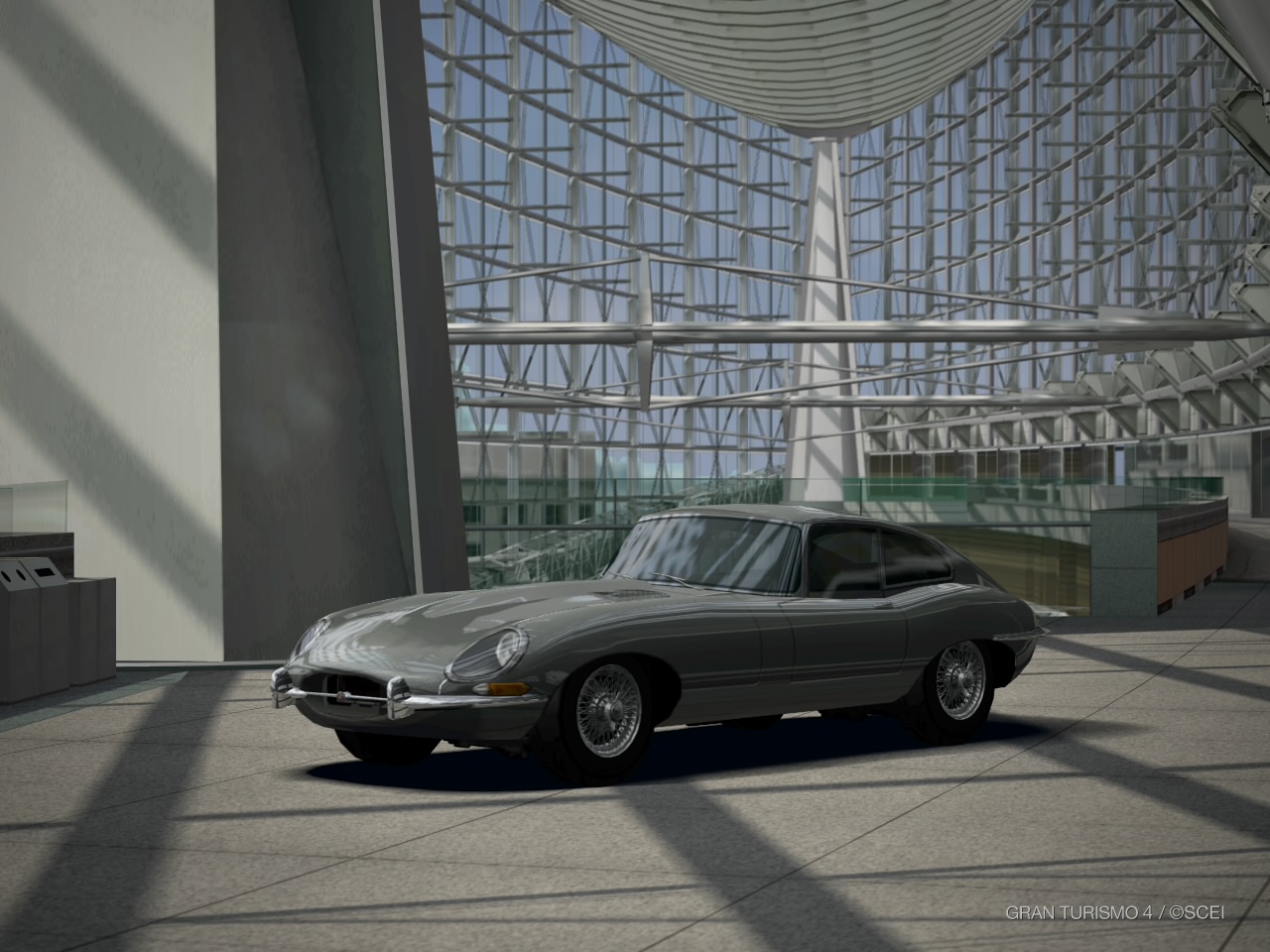 |
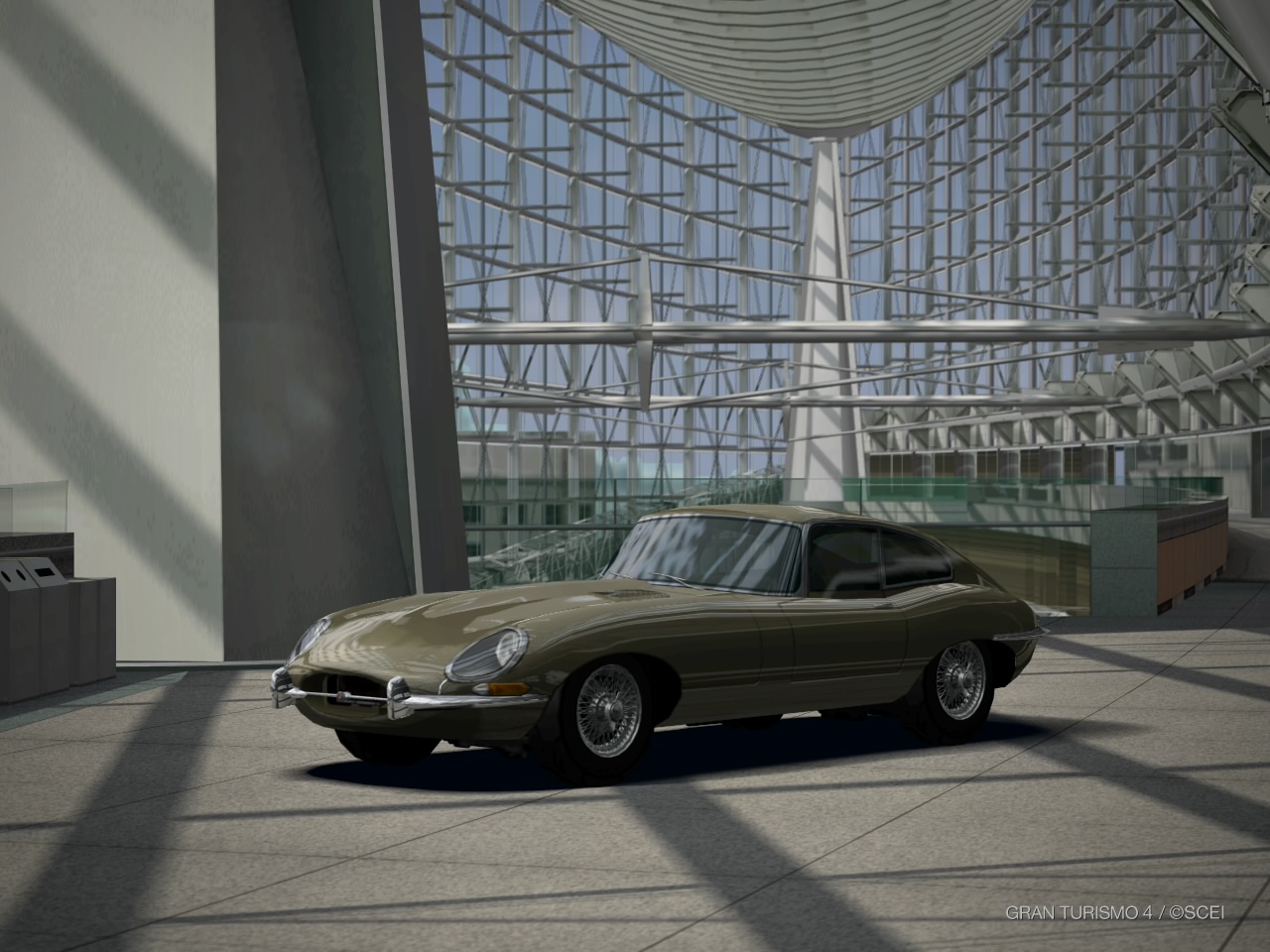 |
| Opalescent Silver Blue Metallic | Cotswold Blue | Opalescent Dark Blue Metallic |
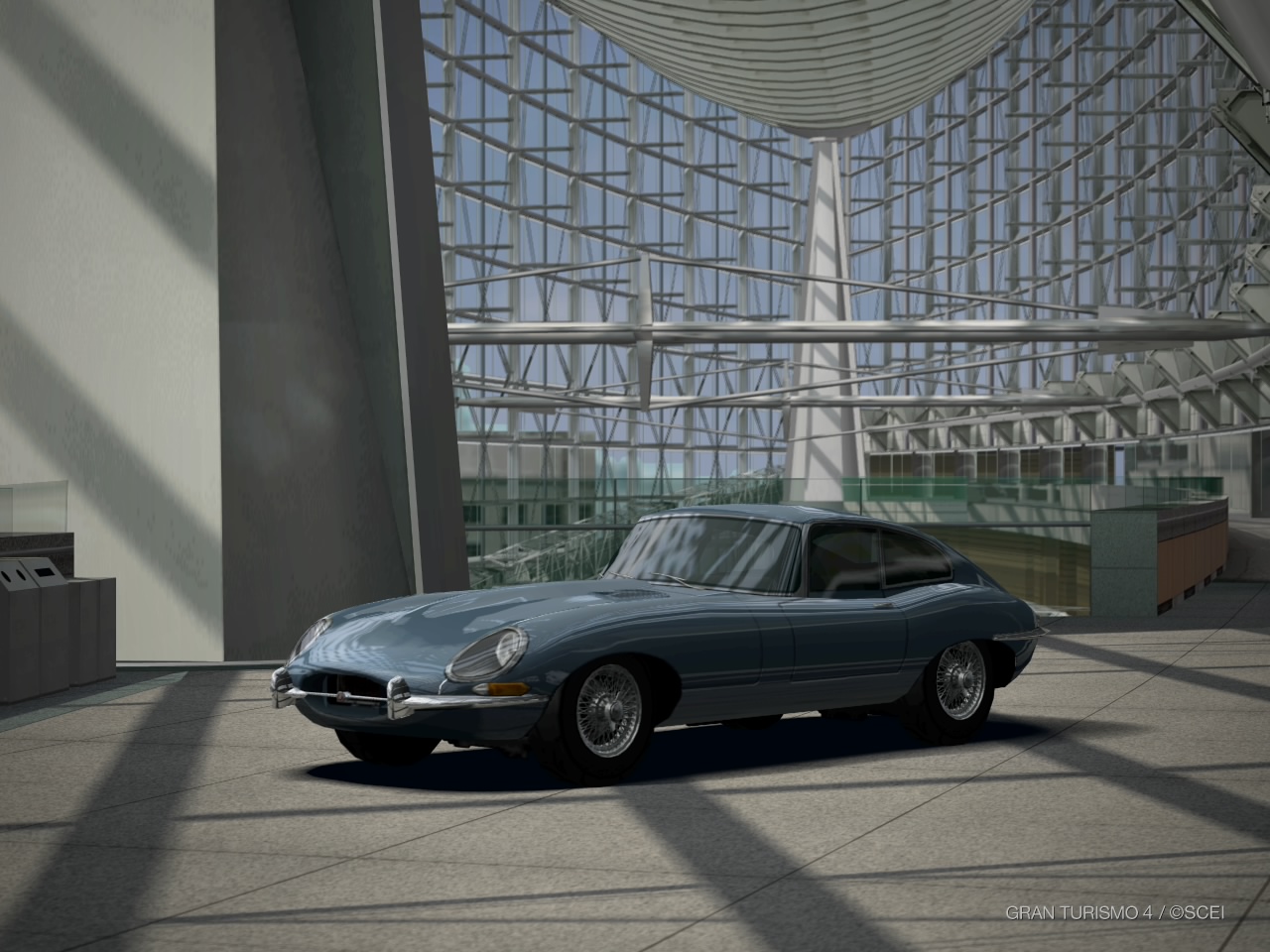 |
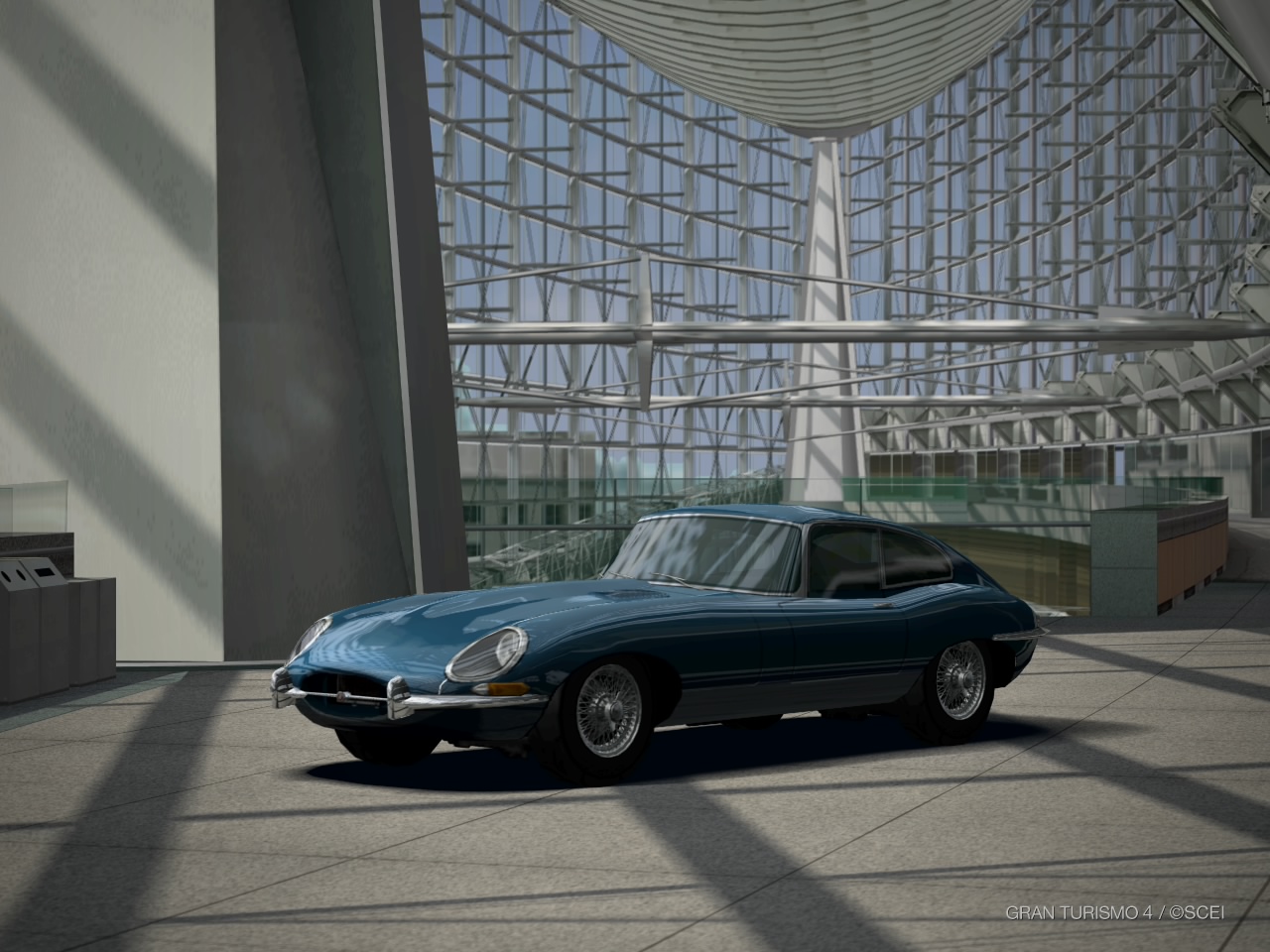 |
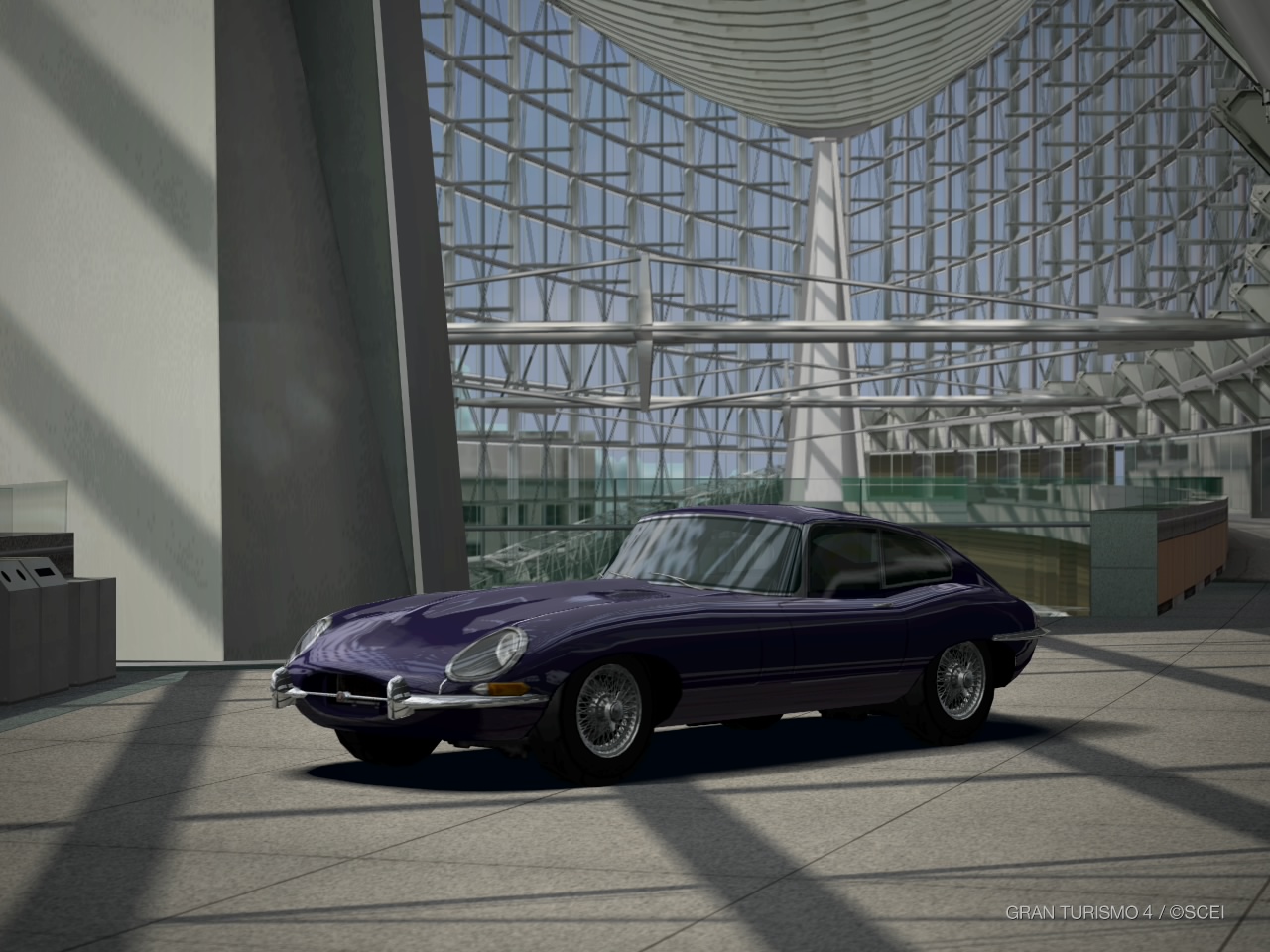 |
| Indigo Blue | Opalescent Dark Green Metallic | Sherwood Green |
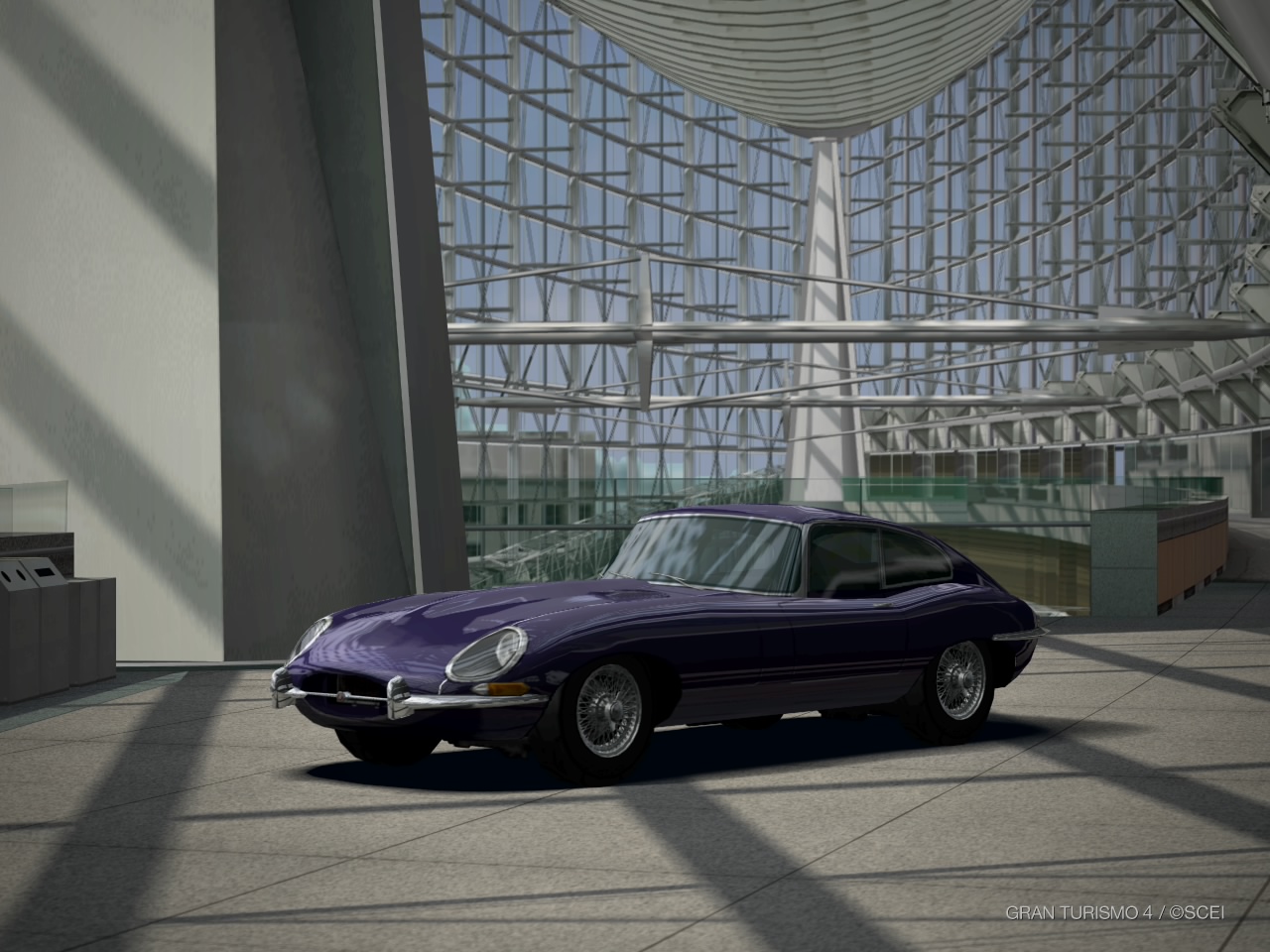 |
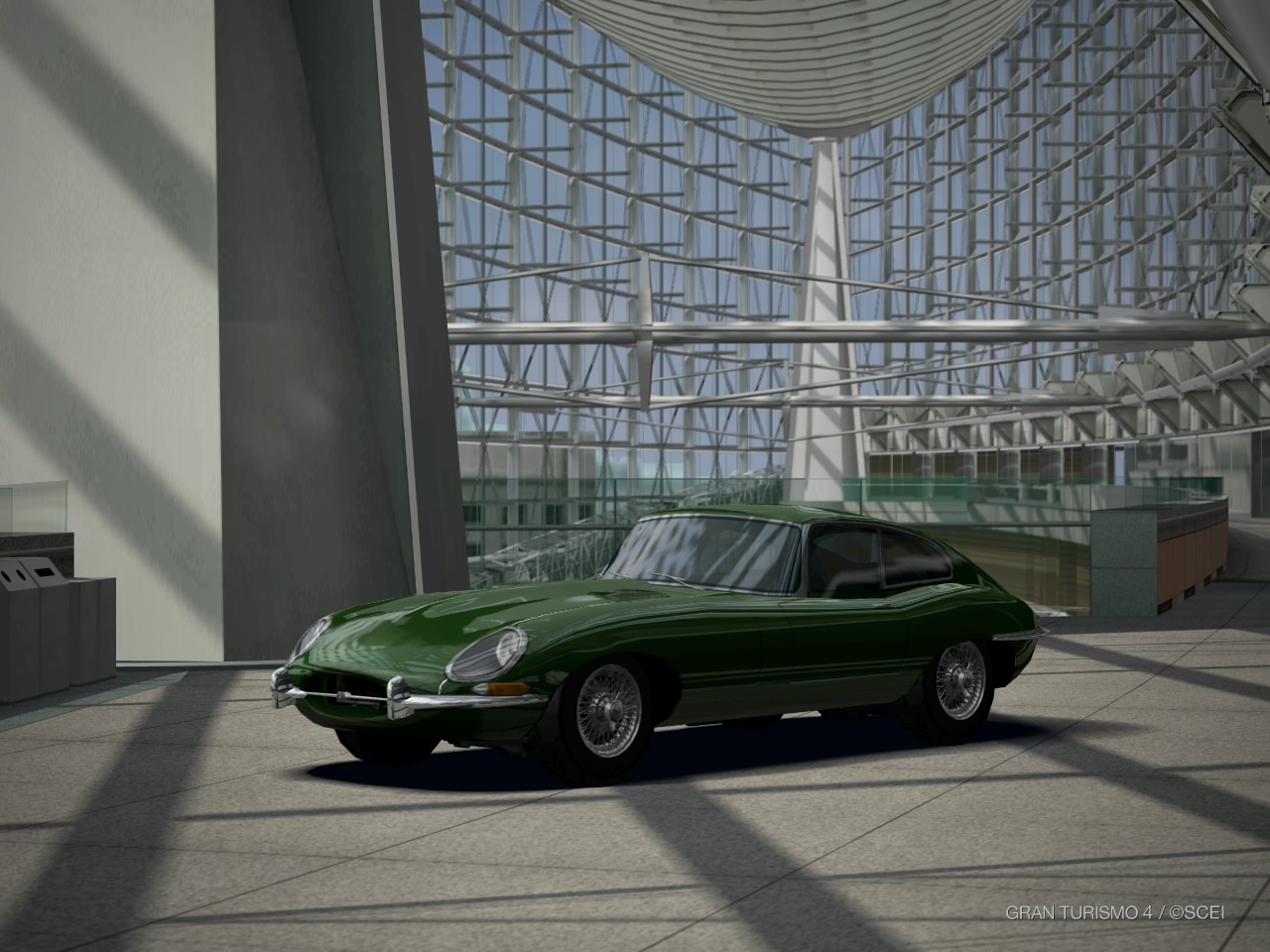 |
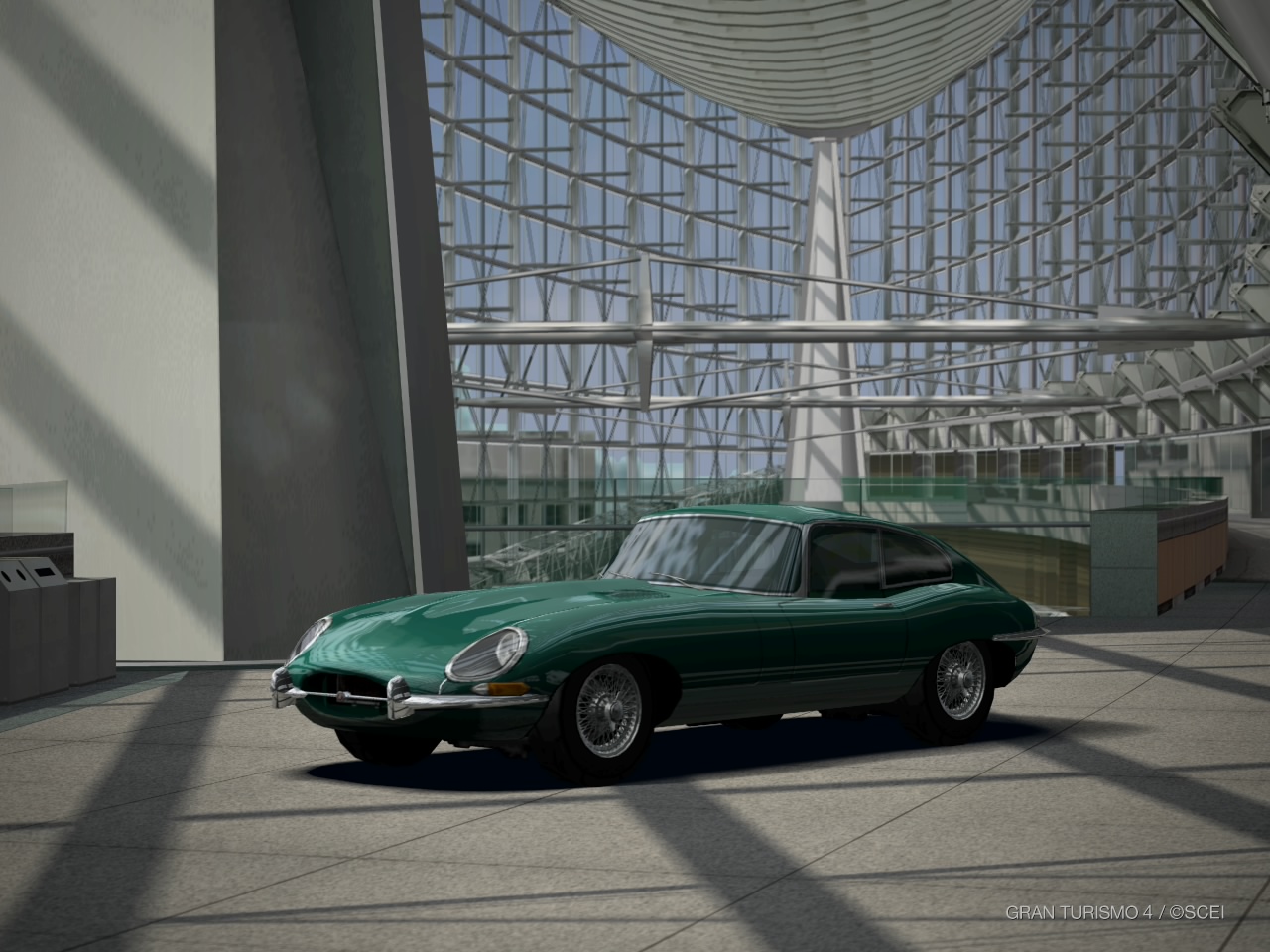 |
| British Racing Green | Black | |
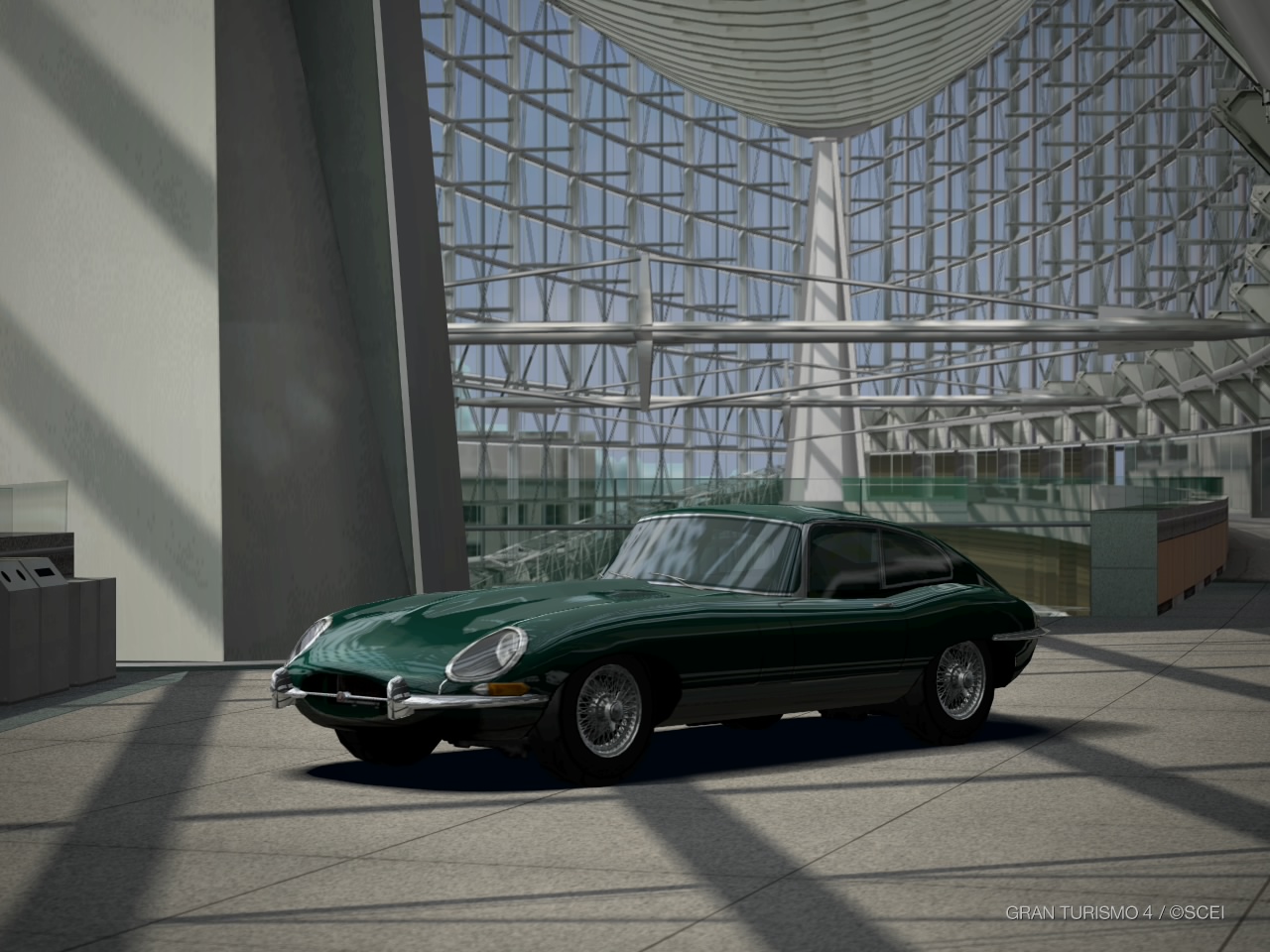 |
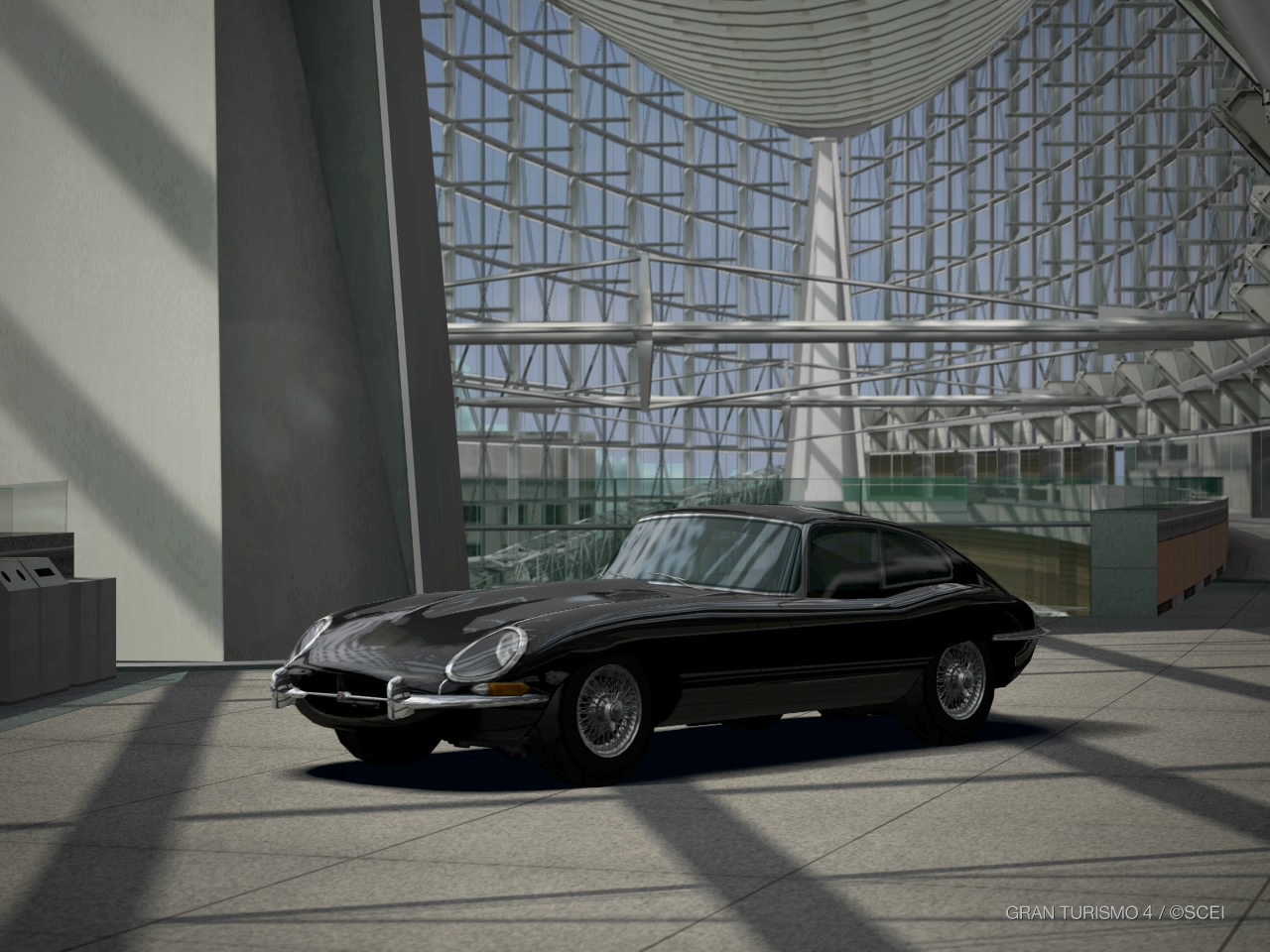 |
The Jaguar E-Type, or the Jaguar XK-E for the North American market, a car widely considered to be one of the most beautifully designed of all time, is a British sports car that was manufactured by Jaguar Cars Ltd between 1961 and 1975. Its combination of beauty, high performance, and competitive pricing established the model as an icon of the motoring world.
The E-Type's 150 mph (241 km/h) top speed, sub-7-second 0 to 60 mph (97 km/h) acceleration, monocoque construction, disc brakes, rack-and-pinion steering, and independent front and rear suspension distinguished the car and spurred industry-wide changes.

The E-Type was based on Jaguar's D-Type racing car, which had won the 24 Hours of Le Mans three consecutive years beginning 1955, and employed what was, for the early 1960s, a novel racing design principle, with a front subframe carrying the engine, front suspension and front bodywork bolted directly to the body tub. No ladderfame chassis, as was common at the time, was needed and as such the first cars weighed only 1315 kg (2900 lb).
In 2004, “Sports Car International” magazine placed the E-Type at number one on their list of top sports cars of the 1960s. In March 2008, the Jaguar E-Type ranked first in “The Daily Telegraph” online list of the world's "100 most beautiful cars" of all time.

Outside automotive circles, the E-type received prominent placement in Diabolik comic series, Austin Powers films and the television series “Mad Men”. The E-Type was initially designed and shown to the public as a rear-wheel drive grand tourer in two-seater coupé form (FHC or Fixed Head Coupé) and as a two-seater convertible "roadster" (OTS or Open Two Seater). A "2+2" four-seater version of the coupé, with a lengthened wheelbase, was released several years later.
Later model updates of the E-Type were officially designated "Series 2" and "Series 3", and over time the earlier cars have come to be referred to as "Series 1." As with other partly hand made cars of the time, changes were incremental and ongoing, which has led to confusion over exactly what a Series 1 car is. This is of more than academic interest, as Series 1 E-Types—and particularly Series 1 roadsters often have values far in excess of Series 2 and 3 models. Some transitional examples exist.

For example, while Jaguar itself never recognised a "Series 1½" or "Series 1.5," over time, this sub-category has been recognised by the Jaguar Owners Club of Great Britain and other leading authorities. The "pure" 4.2-litre Series 1 was made in model years 1965–1967 (earlier Series 1 models had a smaller, 3.8-litre engine with less torque). The 4.2-litre Series 1 has serial or VIN numbers 1E10001 - 1E15888 (in the case of the left-hand drive roadster), and 1E30001 - 1E34249 (in the case of the left hand drive hardtop, or FHC). The Series 1.5 left hand drive roadster has serial numbers 1E15889 - 1E18368, with the hardtop version of the Series 1.5 having VIN numbers 1E34250 - 1E35815. Series 1.5 cars were made in model year 1968.
The Series 1 cars, which are by far the most valuable, essentially fall into two categories: those made between 1961 and 1964, which had 3.8-litre engines and partial synchromesh transmissions, and those made between 1965-1967, which increased engine size and torque by around 10%, added a fully synchronised transmission, and also provided new reclining seats, an alternator in place of the prior dynamo, an electrical system switched to negative earth, and other modern amenities, all while keeping the same classic Series 1 styling. The 4.2-litre Series 1 E-Types also replaced the brake servo of the 3.8-litre with a more reliable unit.
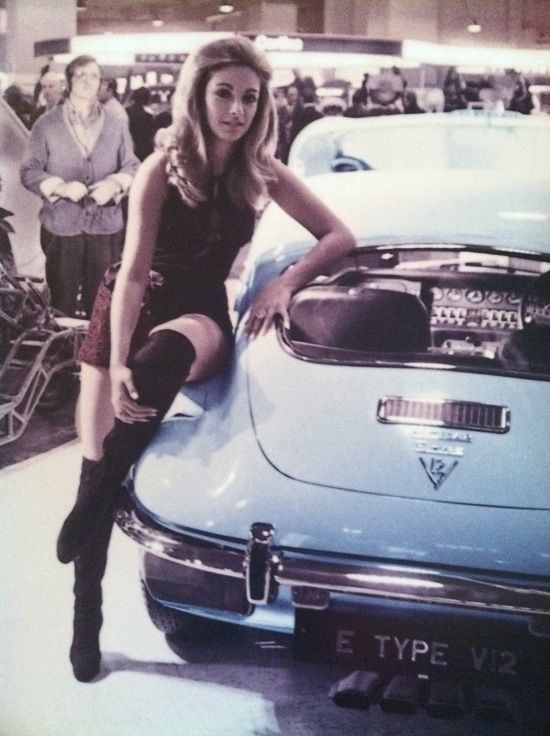
"The 4.2 became the most desirable version of the famous E-Type due to their increased power and usability while retaining the same outward appearance as the earlier cars."
As of the end of 2014, the most expensive regular production Jaguar E-Types sold at auction included a 4.2-litre Series 1 roadster, with matching numbers, original paint and interior, under 80,000 original miles, and a history of being in the original buyer's family for 45 years (this car sold for $467,000 in 2013) and a 1961 "flat floor" Series 1, selling for $528,000 in 2014.
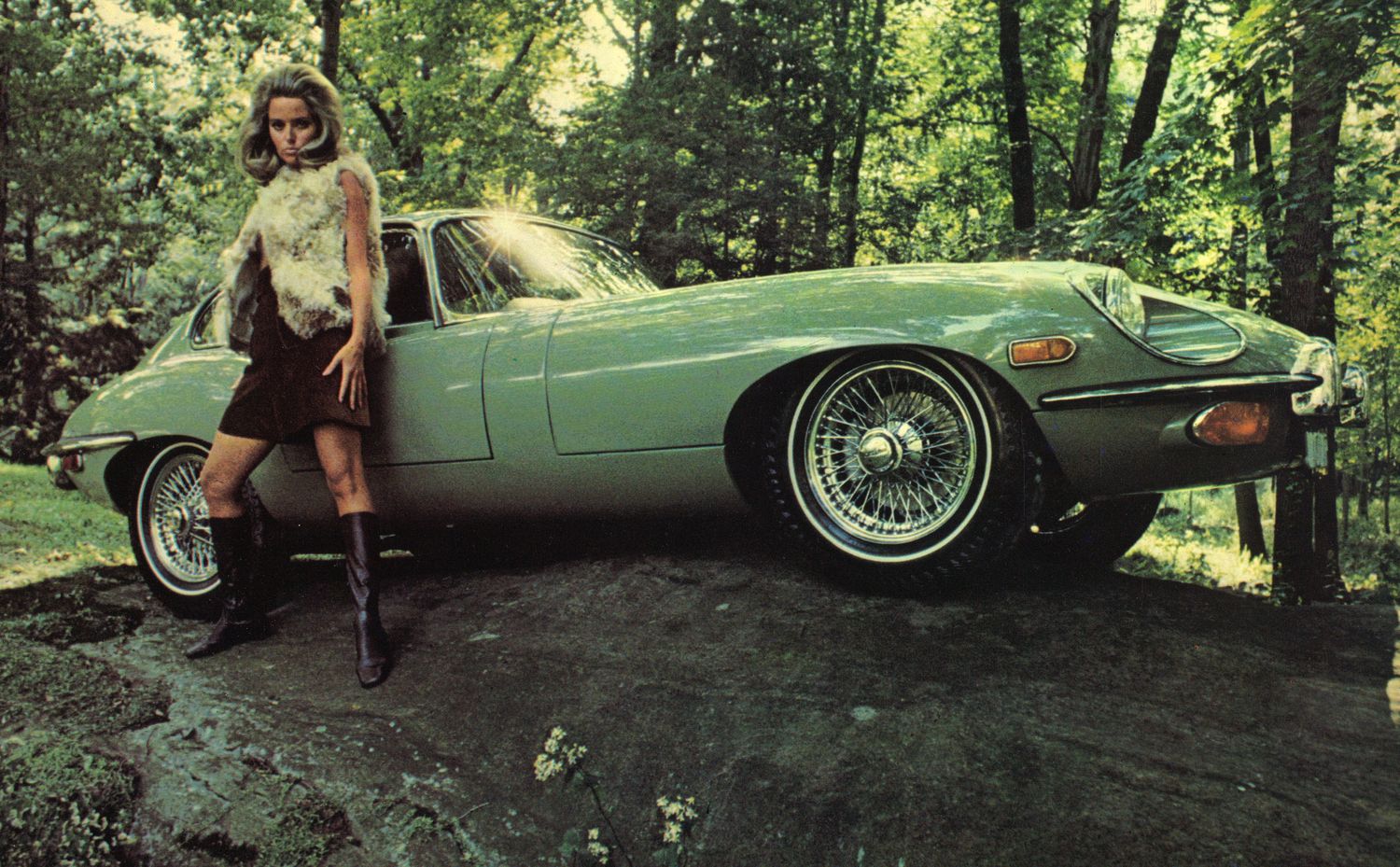
Being a British-made car of the 1960s, there are some rather rare sub-types of Series 1 E-Types, particularly at the beginning and end of the Series 1 production. For example, the first 500 Series 1 cars had flat floors and external bonnet latches. Worldwide, including both left and right hand drive examples, a total of 7,828 3.8-litre Series 1 roadsters were built, with 6,749 of the later 4.2-litre Series 1 roadsters having been manufactured.
While the 1968 Series 1.5 cars maintained the essential design of the Series 1 models, emission regulations caused US models to lose the Series 1 triple SU carburetors; these were replaced in the Series 1.5 by less powerful twin Zenith-Stromberg units, dropping claimed horsepower from 265 to 246 and torque from 283 to 263.
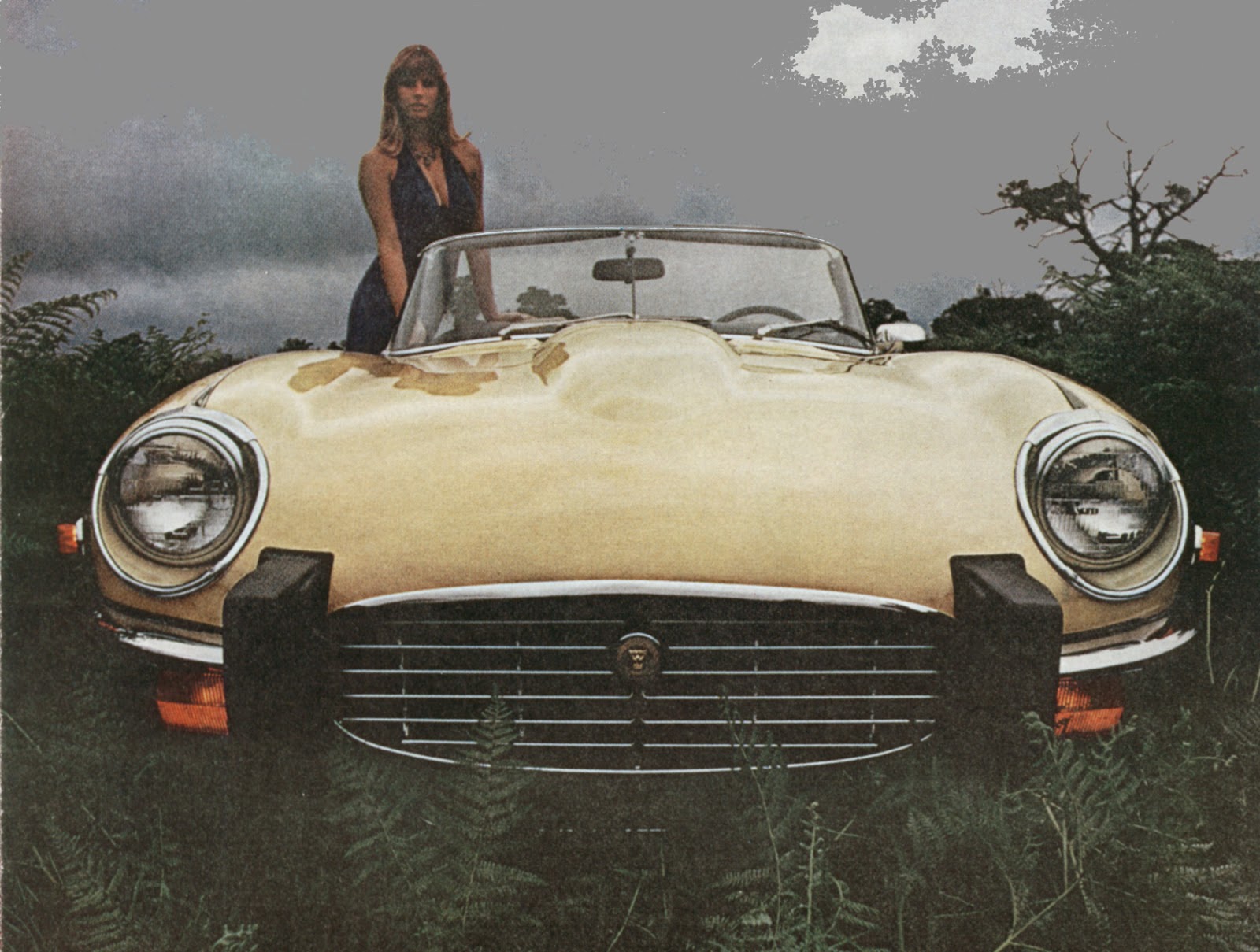
Safety and emissions regulations in the North American market forced the Series 2 and 3 E-Types to lose "the original's purity, with a larger grille, wider wheel arches and bigger bumpers being added that distorted the (Series 1's) looks."
The New York City Museum of Modern Art recognised the significance of the E-Type's design in 1996 by adding a blue roadster to its permanent design collection, one of only six automobiles to receive the distinction. The MoMA XKE is a Series 1 roadster.
Series 1 (1961–68)
The Series 1 was introduced, initially for export only, in March 1961. The domestic market launch came four months later in July 1961. The cars at this time used the triple SU carburetted 3.8-litre six-cylinder Jaguar XK6 engine from the XK150S. Earlier built cars utilised external bonnet latches which required a tool to open and had a flat floor design. These cars are rare and more valuable.
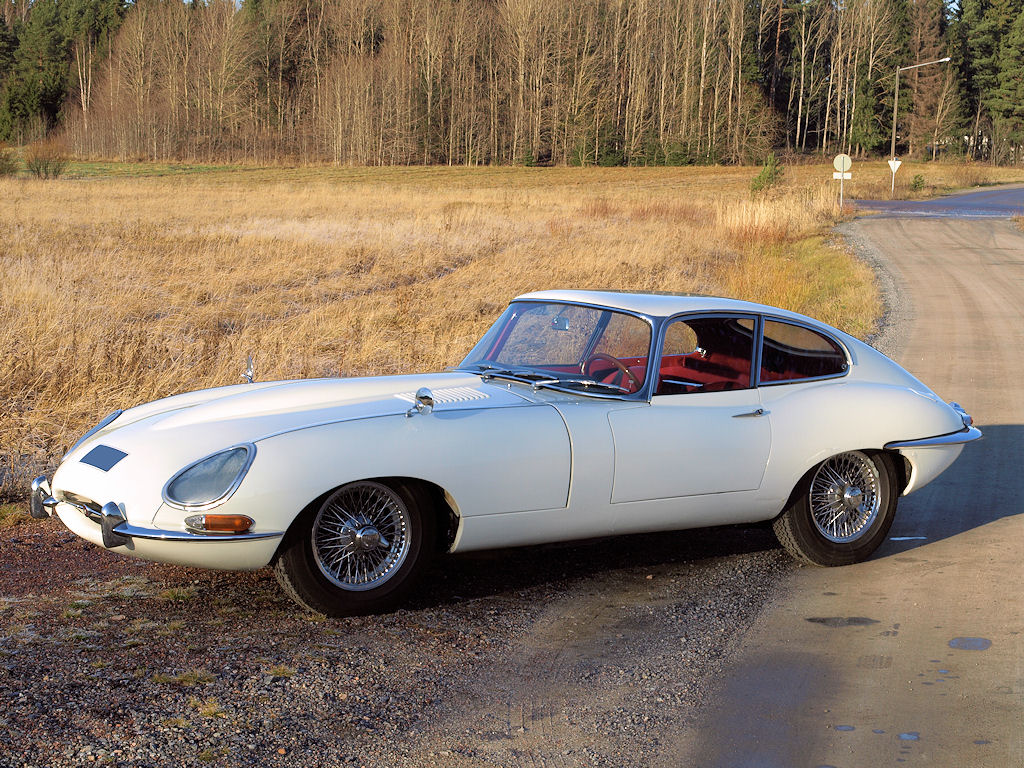
After that, the floors were dished to provide more leg room and the twin bonnet latches moved to inside the car. The 3.8-litre engine was increased to 4.2 litres (4,235 cc) in October 1964. The 4.2-litre engine produced the same power as the 3.8-litre (265 bhp;198 kW) and same top speed (150 mph;241 km/h), but increased torque approximately 10% from 240 to 283 lb⋅ft (325 to 384 Nm). Acceleration remained pretty much the same and 0 to 60 mph (0 to 97 km/h) times were around 6.4 seconds for both engines, but maximum power was now reached at 5,400 rpm instead of 5,500 rpm on the 3.8-litre. That all meant better throttle response for drivers that did not want to shift down gears. The 4.2-litre's block was completely redesigned, made longer to accommodate 5 mm (0.20 in) larger bores, and the crankshaft modified to use newer bearings. Other engine upgrades included a new alternator/generator and an electric cooling fan for the radiator.
“Autocar road” tested a UK spec E-Type 4.2 fixed head coupé in May 1965. The maximum speed was 153 mph (246 km/h), the 0–60 mph (0–97 km/h) time was 7.6 seconds and the 1⁄4 mile (402 m) from a standing start took 15.1 seconds. They summarised it as: "in its 4.2 guise the E-Type is a fast car (the fastest we have ever tested) and offers just about the easiest way to travel quickly by road."
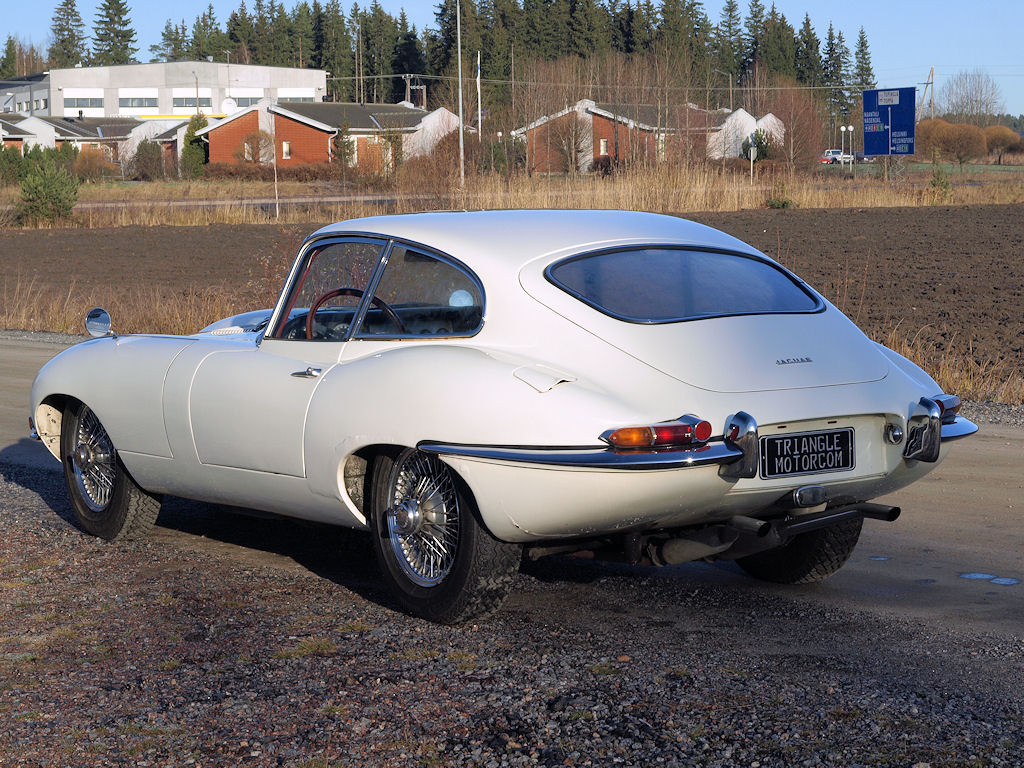
The Motor magazine road tested a UK spec E-Type 4.2 fixed head coupé in Oct 1964. The maximum speed was 150 mph (241 km/h), the 0-60 mph (97 km/h) time was 7 seconds and the 1⁄4 mile (402 m) time was 14.9 seconds. They summarised it as: "the new 4.2 supersedes the early 3.8 as the fastest car “Motor” has tested. The absurd ease which 100 mph (161 km/h) can be exceeded in a 1⁄4 mile (402 m) never failed to astonish. 3,000 miles (4,828 km) of testing confirms that this is still one of the world’s outstanding cars".
All E-Types featured independent coil spring rear suspension with torsion bar front ends, and four wheel disc brakes, in-board at the rear, all were power-assisted. The Coventry engineers spared nothing with regards to high automotive technology in braking. Jaguar was one of the first vehicle manufacturers to equip production cars with 4 wheel disc brakes as standard from the XK150 in 1958.
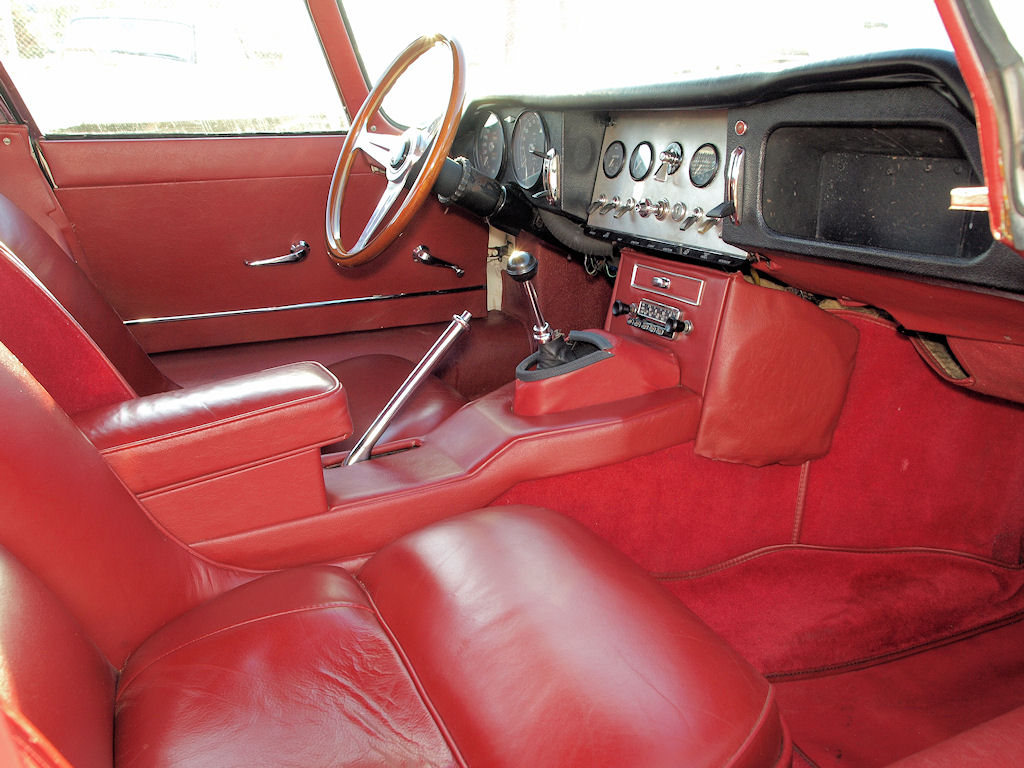
The Series 1 (except for late 1967 models) can be recognised by glass-covered headlights (up to 1967), small "mouth" opening at the front, signal lights and tail-lights above bumpers and exhaust tips under the number plate in the rear.
3.8-litre cars have leather-upholstered bucket seats, an aluminium-trimmed centre instrument panel and console (changed to vinyl and leather in 1963), and a Moss four-speed gearbox that lacks synchromesh for first gear ("Moss box"). 4.2-litre cars have more comfortable seats, improved brakes and electrical systems, and an all-synchromesh four-speed gearbox. 4.2-litre cars also have a badge on the boot proclaiming "Jaguar 4.2 Litre E-Type" (3.8 cars have a simple "Jaguar" badge). Optional extras included chrome spoked wheels and a detachable hard top for the OTS.
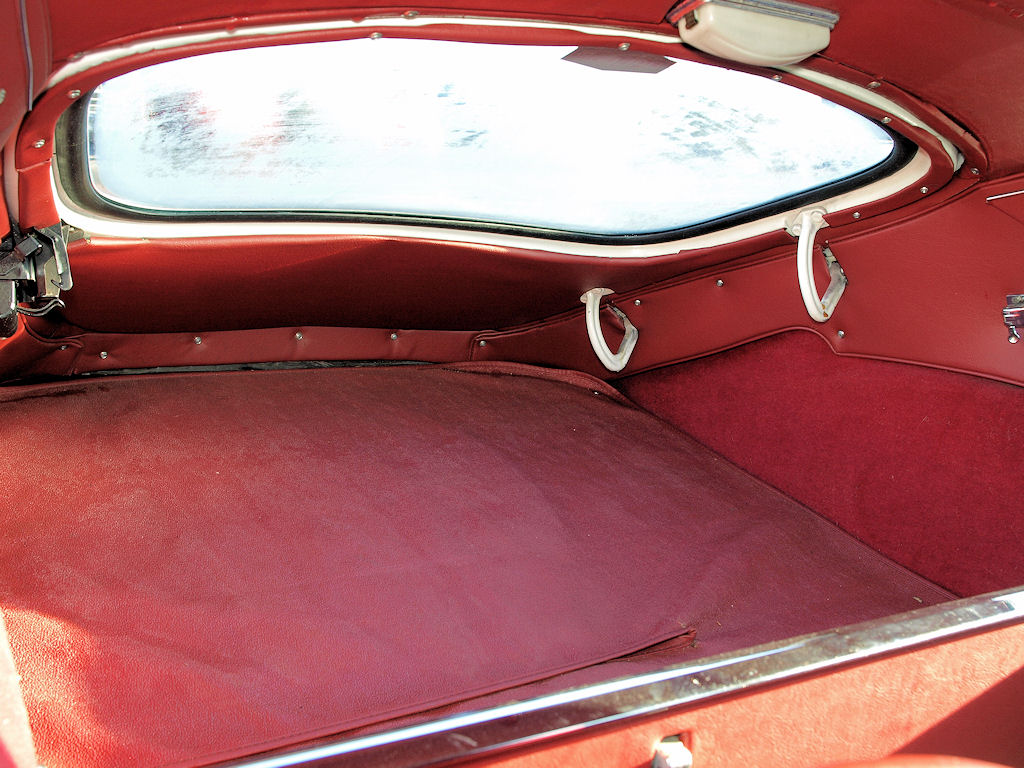
When leaving the factory the car was originally fitted with Dunlop 6.40 × 15 inch RS5 tyres on 15 × 5K wire wheels (with the rear fitting 15 × 5K½ wheels supplied with 6.50 X15 Dunlop Racing R5 tyres in mind of competition). Later Series One cars were fitted with Dunlop 185 - 15 SP41 or 185 VR 15 Pirelli Cinturato as radial ply tyres. Production numbers: 15,490 3.8s, 17,320 4.2s, 10,930 2+2s. An open 3.8-litre car, actually the first such production car to be completed, was tested by the British magazine “Motor” in 1961 and had a top speed of 149.1 mph (240.0 km/h) and could accelerate from 0 to 60 mph (0 to 97 km/h) in 7.1 seconds. A fuel consumption of 21.3 miles per imperial gallon (13.3 L/100 km; 17.7 mpg‑US) was recorded.
The test car costed £2,097 including taxes. The mechanical pieces of the car are well made and long lasting--and easy to get. The mill is the heart and soul of this car. The howl of the engine at full boil (with its triple SUs all in a row!) is simply amazing. The Series 1 E-Type is a stunning automobile which still looks fresh and modern today.
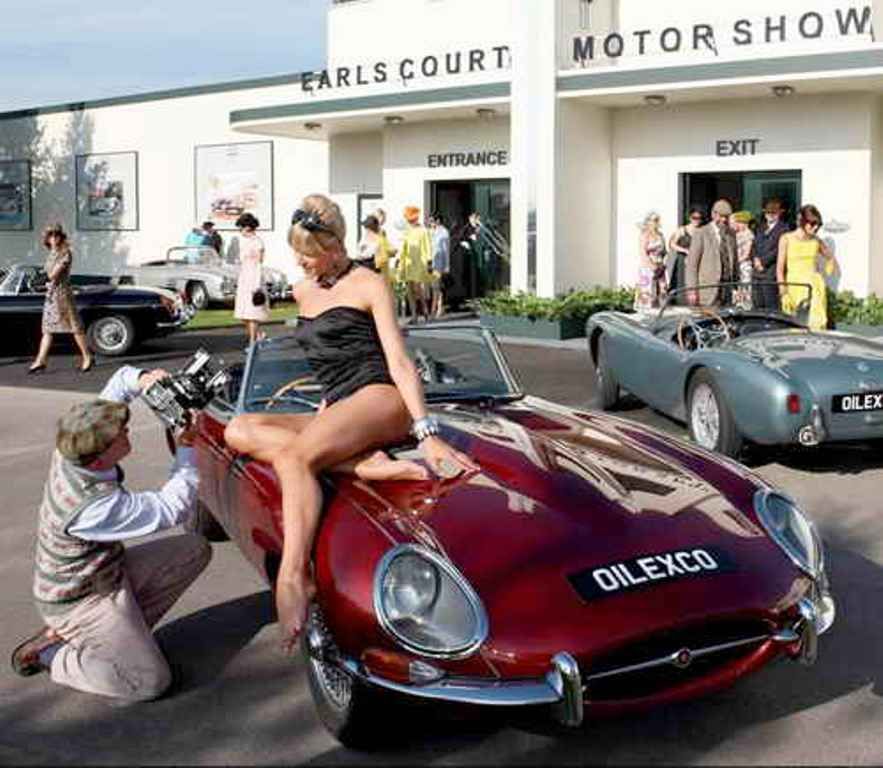
One of the joys of the E-Type is that a majority of the Series 1 cars were built before safety legislation was enacted, which means that much of the detail on the car is art rather than function--just look at those lovely bumpers and slim windshield pillars. The interior is the most dated part of the car, but it is still a luxurious and reasonably comfortable place to be... though taller drivers will have issues with the top up and may end up looking over the windshield rather than through it.
Mechanically, it's a gem. The six cylinder engine is smooth and powerful and makes a great sound. The gearboxes on the early cars are strong enough for commercial duty, but are definitely an acquired taste. Later cars with the 4.2 engine benefited from a better, if less characterful, gearbox. The suspension was very sophisticated for its day and the basic design was used well into the 90's.
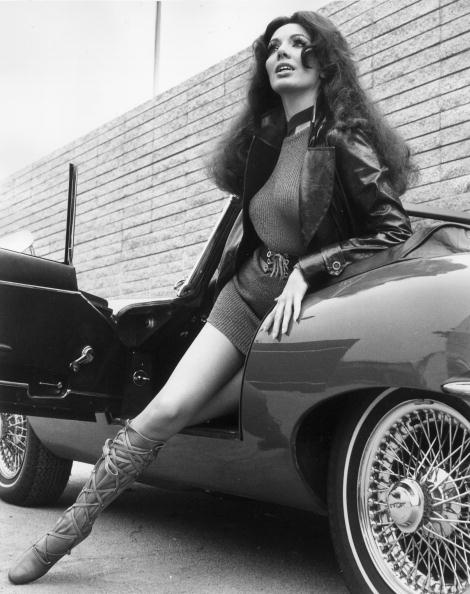
It's a smooth riding car, nothing like being in any other old British sports car. Time has taken its toll on the performance figures, which were nothing short of amazing in 1961 and which still allow for spirited driving today. If your goal is to out-drag nitrous-powered ricers at stoplights, another car might be a better choice. But for plenty of smooth, sexy power in a gorgeous. How many cars have you owned where you can have as much pleasure sipping a cool drink and simply staring at your car in the driveway as you can driving it - and driving an E-Type is a magical experience.
Ownership is a commitment, but one that will repay you in spades. Once you've fallen for them you cannot give them up for any length of time. Few cars are as beautiful and fun to drive. Sitting in the driver's seat and looking over the guages, toggle switches, and long curved bonnet is difficult to describe. And best of all, the parts are a snap. A surprising number survive.

Here are some comments of owners and enthusiasts about the E-Type:
- The Jaguar E-Type is one car that few own, but many dream about. My personal favourite is the Series I produced from 1961 through 1967. The earlier Series I had an easier to rev 3.8 engine, Moss non-synchro gear box for 1st gear, brakes that others complained about not this owner, an aluminium console and center instrument panel and seats that looked liked they belonged in a sports car and not in the family room. For me, I love the early Series I.
- The next step in sheers beauty, history, and pure nostalgic grace is a Ferrari GTO at ten million.
- One of the greatest regrets of my life was not buying a spanking new red E-Type Jag in 1961 when I had the chance for 2 thousand pounds. Common sense prevailed and I bought a house and British Leyland Mini instead. I dont think I’ll ever recover from it.
- A well sorted Jaguar is one of the most wonderful experiences that any mortal man will ever enjoy. I still find myself after years of ownership shouting out, "I love this car"!
- The sound it makes at around 3500 RPM, settling down because of the aerodynamics, is truly wonderful, nothing like it anywhere.
- Back then, cars like these were purely about driving joy and beauty. As for Jaguar in specific... There's just something special about it that you can't really explain, apart from their stunning designs and undeniable class. They have character, which lacks in so many (modern) cars. I had one for a few years and could never find an angle of view that did not show some significant flaw.
- Franz von Holzhausen Chief Designer, Tesla Motors: "The long dash-to-axle really showcased the power under the hood. And what was cool about the E-Type at the time was this beautiful, exotic shape had more power for a third of the price than other sports cars at the time. As I was developing the Solstice, it was one of the inspirational vehicles that helped me come up with the feeling and look of the car–that kind of essence, the super-clean lines, the nice long bonnet. If you look at the sections of the body, the doors kind of tuck right underneath the bottom of the car. Cars today have bodies that are built around the wheels. What was unique about the E-Type was that was just a body; it was [built] independent of the wheels. For me, the first series E-Types with the flare in the lens cover of the headlights had this super-clean feel, this bullet shape. It felt like this cat that was kind of launching in attack mode. What's amazing to me is that the car still demands a presence on the road today."
- Jay Leno Car enthusiast, collector and PM contributor: "To me, the two greatest years for design were 1932 and 1966. [I'd pick] 1932 because by '32, the car was here to stay. It wasn't a toy; it was something most Americans could afford. They got them to run properly and run long-distance, and now they made them stylish. [And] 1966 I like because it was the last year you could make a car without government intervention at all. Consequently, a design like the XKE [created before 1966] is just perfect design; it's not designed to be a safety vehicle. It was one of those cars that appealed to men and women equally. The outside was quite feminine, but when you open the hood, it was extremely masculine. It embodied classic design cues–the Coke bottle look–that always seemed to work. The Mustang is the classic example of that. But the XKE was really its own style. It didn't look like anything else on the road."
- J Mays Group Vice President of global design and Chief Creative Officer, Ford Motor Company: "I always try to look at an automobile from a cultural perspective, and I think that is probably a more accurate appraisal of why something appeals to people or why people fall in love with it than just trying to describe the individual body parts. When you look at the E-Type, everyone always agrees that this is probably one of the most beautiful cars ever designed, but what they tend to forget is it represents the pinnacle from an era of fabulous sports cars, which is the '60s. And I would imagine that most people still look back and think sports cars from the '60s were the best sports cars. When you look at cars that are in collectors' hands, very often the good collectors–I'm thinking Ralph Lauren here–they collect beautiful, exotic vehicles from the '60s. There is a form language to those cars that is similar, but the E-Type takes that sort of vernacular and triples it. So, what you get is a car that completely stands out from any norm; it ends up looking like some kind of fighter version of a flying saucer to people. And I think for that reason it became a point of exotic inspiration for generations of customers and designers. I can't think of any other car that sets the bar for just pure iconic product appeal better than the E-Type. It's this really juicy cocktail of near- perfect proportion, form (which is a car you just love to run your hands over), style (that has much to do with the interior as the exterior) and sex appeal (the sex appeal comes from movies and celebrities that we've seen with this car). All of that combined inspires people to own a Jaguar E-Type–and certainly to admire it."
The Martin Brundle Eagle n° 28.
In 2011 Martin Brundle decided to trade in his Eagle supplied V12 Roadster and commission his interpretation of the ultimate Jaguar E-Type. Martin & Liz Brundle drove his V12 Roadster in the E-Type's 50th anniversary rally from Coventry to Geneva, replicating the famous 1961 run by Norman Dewis to the Geneva Motor Show.
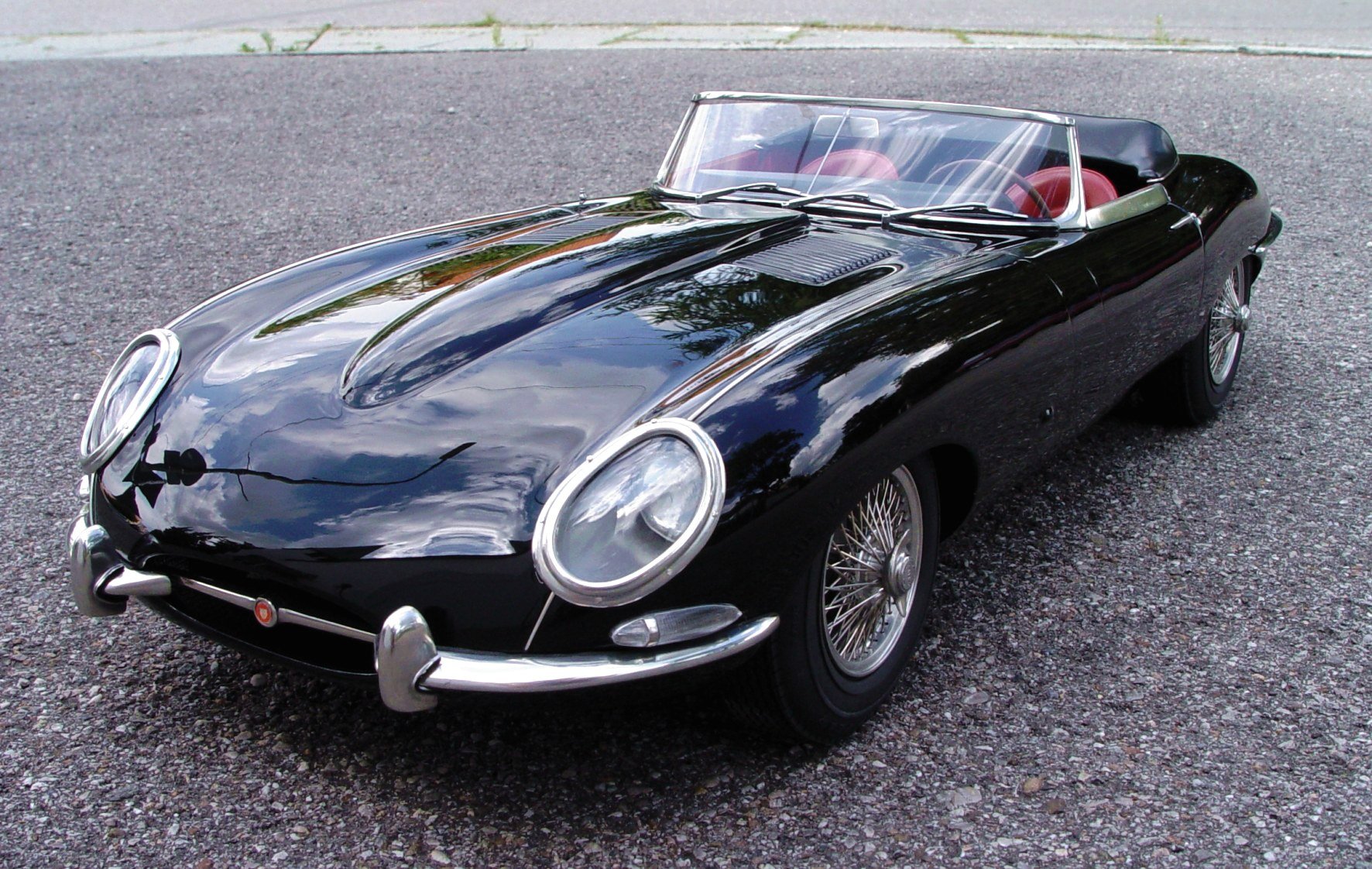
Martin, of course, is the most successful works Jaguar driver in history, with the1988 World Championship and Le Mans and Daytona 24 hour wins under his belt. Martin had the opportunity to try Henry’s own 1989 Pirelli Classic Marathon winning car, and was seriously impressed by the handling, dynamics and performance. So much, in fact, that he commissioned Eagle to bring a Series 1 E-Type up to his bespoke specification.
With a focus on performance and practicality, his specification included a hand-crafted aluminium bonnet for weight reduction, a 4.2 litre engine developed to our SuperSport specification that develops over 300bhp, speed sensitive electric power steering and a host of comfort features including our own recirculating air-conditioning and an all-leather interior. This extraordinary E-Type was delivered to Martin in time for his road trip to the Spa Grand Prix in 2012 for Sky F1. So impressed was he that instead of returning home he drove his E-Type onto Monza for the Italian Grand Prix and then took the long way home through the Alps.
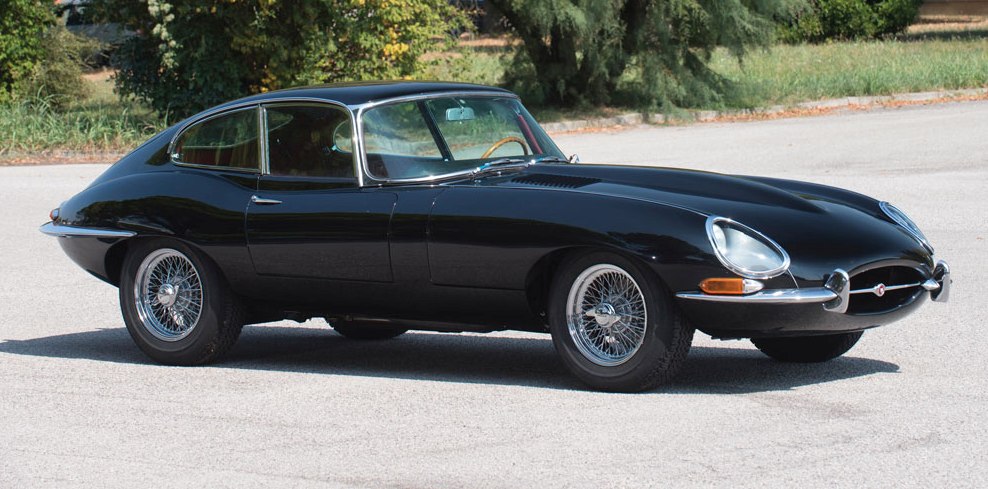
Why is Martin letting this wonderful car go? Well, on a recent visit to Eagle HQ, Martin spied our Low Drag GT Coupe and couldn't resist. Consequently he's decided to offer for sale ‘Elvis’, as it’s known in his family. So here it is - an E-Type developed to an exceptional specification to the precise wishes of a racing legend.
Full specification details: engine: supersport spec 4.2, big valve gas flowed unleaded cylinder head with sports cams, stainless valves, bronze guides, uprated tappets and valve springs, high tensile cylinder head studs, fully balanced and lightened engine with harmonic damper, 6 branch tubular stainless steel manifolds, ultra large bore stainless steel exhaust system, uprated engine mount package and gated baffled sump, oil cooler.
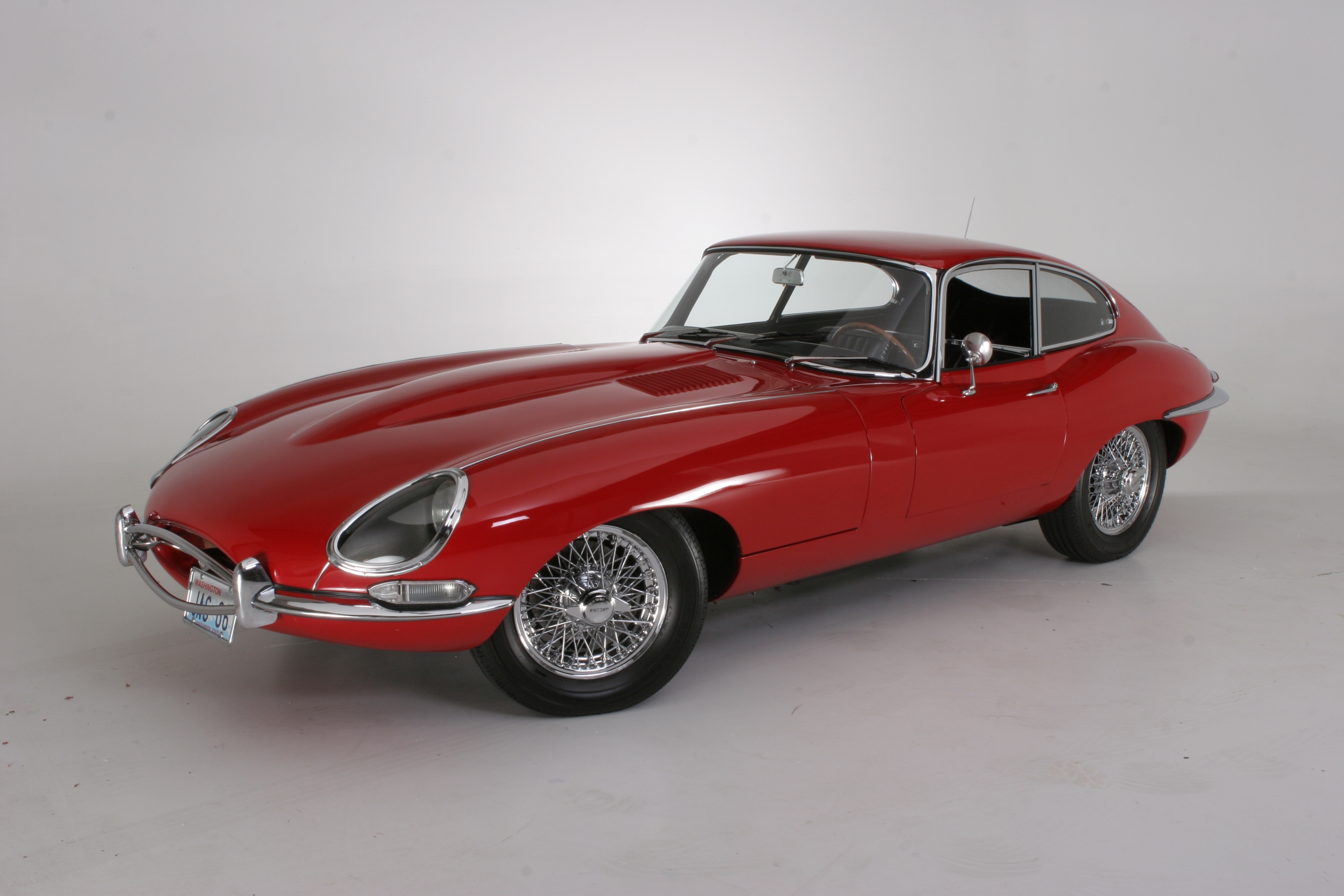
Suspension: latest technology & custom built dampers, sport suspension geometry, GT springs, torsion and anti roll bars, spherical jointed radius arms, adjustable ride height conversion, polyurethane bushes and uprated sub-frame mounts, offset wishbone bushes for rear camber enhancement.
Ignition: programmed electronic ignition, high performance high-tension cables and fittings.
Transmission: Eagle 5 speed aluminium gearbox, uprated clutch, touring axle ratio.
Porsche
Dr.-Ing. h.c. F. Porsche AG, usually shortened to Porsche AG, is a German automobile manufacturer specializing in high-performance sports cars. Ferdinand Porsche founded "Dr. Ing. h. c. F. Porsche GmbH" in 1931, with main offices at Kronenstraße 24 in the centre of Stuttgart.
Initially, the company offered motor vehicle development work and consulting, but did not build any cars under its own name. One of the first assignments the new company received was from the German government to design a car for the people, that is a "Volkswagen". This resulted in the Volkswagen Beetle, one of the most successful car designs of all time. The Porsche 64 was developed in 1939 using many components from the Beetle.

At the end of World War II in 1945, the Volkswagen factory at KdF-Stadt fell to the British. Ferdinand lost his position as Chairman of the Board of Management of Volkswagen, and Ivan Hirst, a British Army Major, was put in charge of the factory. On 15 December of that year, Ferdinand was arrested for war crimes, but not tried. During his 20-month imprisonment, Ferdinand Porsche's son, Ferry Porsche, decided to build his own car, because he could not find an existing one that he wanted to buy. He also had to steer the company through some of its most difficult days until his father's release in August 1947.
The first models of what was to become the 356 were built in a small sawmill in Gmünd, Austria. The prototype car was shown to German auto dealers, and when pre-orders reached a set threshold, production (with aluminium body) was begun by Porsche Konstruktionen GesmbH founded by Ferry and Louise.
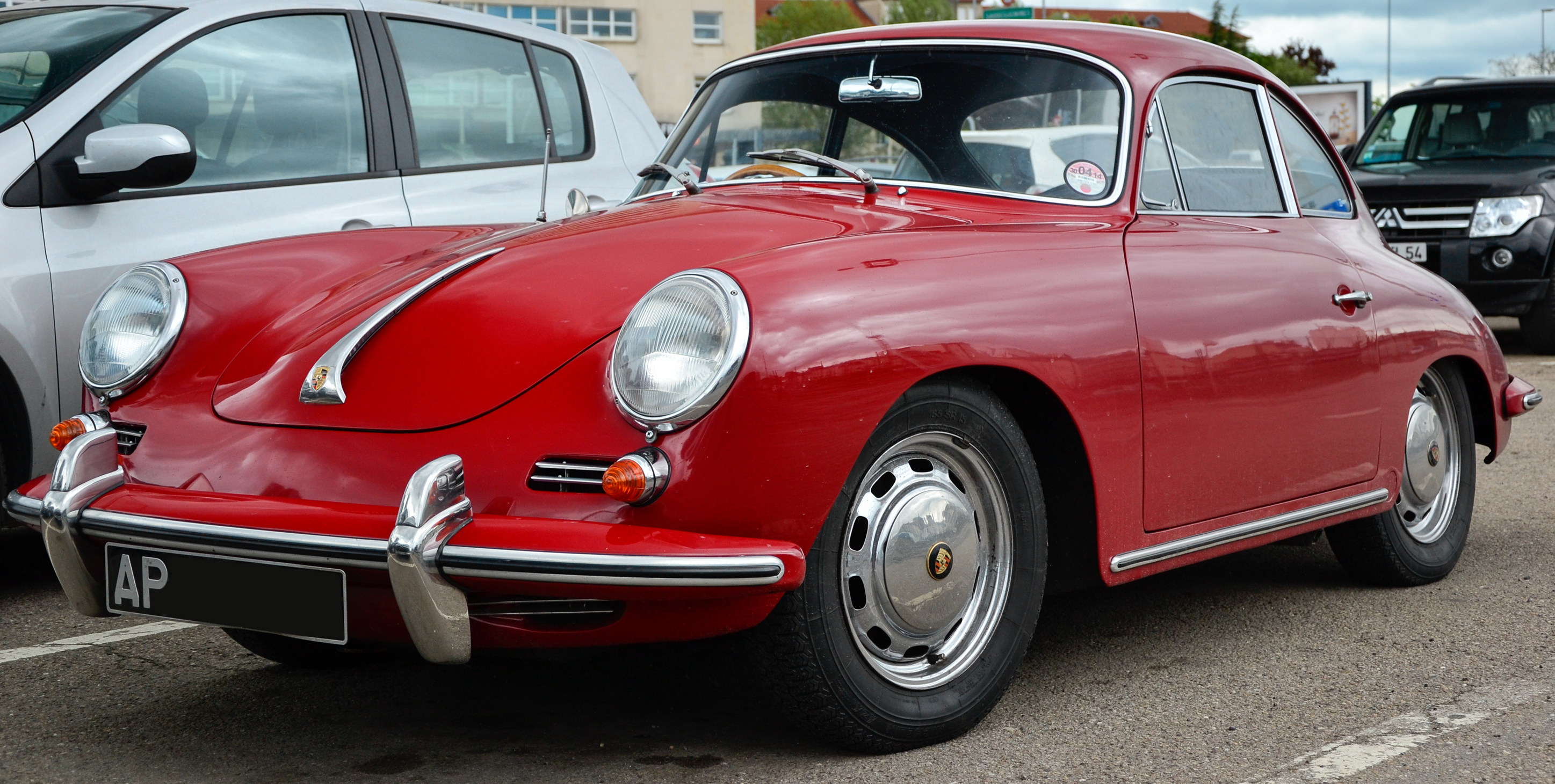
Many regard the 356 as the first Porsche simply because it was the first model sold by the fledgling company. After the production of 356 was taken over by the father's Dr. Ing. h.c. F. Porsche GmbH in Stuttgart in 1950, Porsche commissioned a Zuffenhausen-based company, Reutter Karosserie, which had previously collaborated with the firm on Volkswagen Beetle prototypes, to produce the 356's steel body.
In 1952, Porsche constructed an assembly plant (Werk 2) across the street from Reutter Karosserie; the main road in front of Werk 1, the oldest Porsche building, is now known as Porschestrasse. The 356 was road certified in 1948.
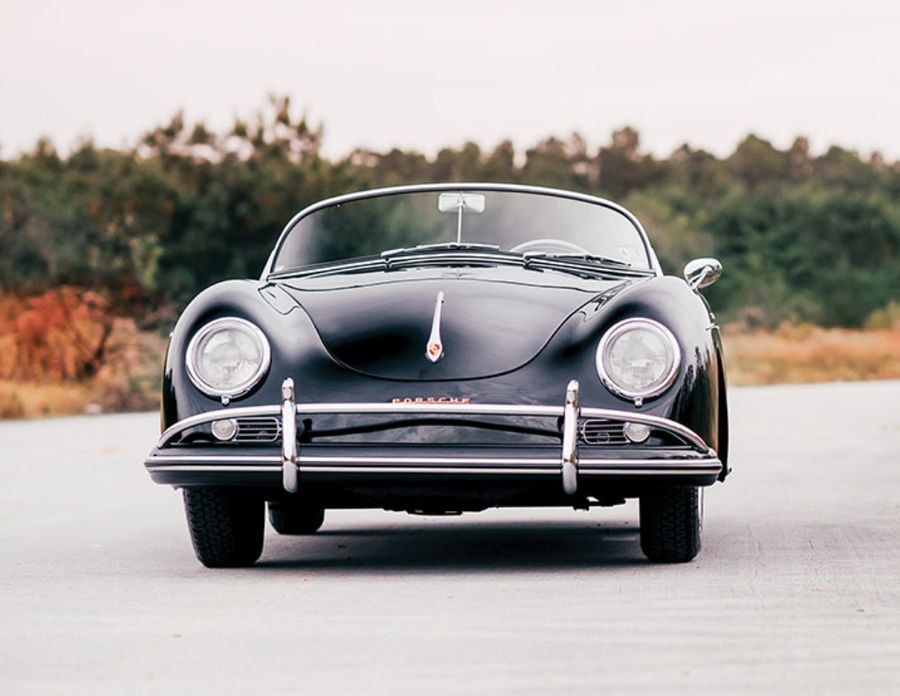
Porsche's company logo was based on the coat of arms of the Free People's State of Württemberg of former Weimar Germany, which had Stuttgart as its capital. The arms of Stuttgart was placed in the middle as an in escutcheon, since the cars were made in Stuttgart. The heraldic symbols were combined with the texts "Porsche" and "Stuttgart", which shows that it is not a coat of arms since heraldic achievements never spell out the name of the armiger nor the armigers home town in the shield. Württemberg-Baden and Württemberg-Hohenzollern became part of the present land of Baden-Württemberg in 1952 after the political consolidation of West Germany in 1949, and the old design of the arms of Württemberg now only lives on in the Porsche logo.
On 30 January 1951 Ferdinand Porsche died from complications following a stroke. In post-war Germany, parts were generally in short supply, so the 356 automobile used components from the Volkswagen Beetle, including the engine case from its internal combustion engine, transmission, and several parts used in the suspension. The 356, however, had several evolutionary stages, A, B, and C, while in production, and most Volkswagen-sourced parts were replaced by Porsche-made parts.
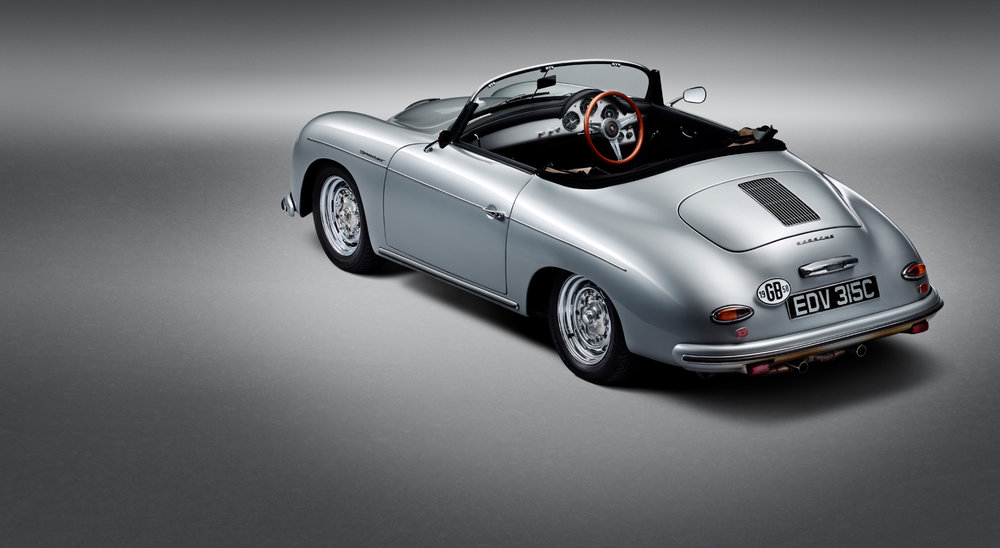
Beginning in 1954 the 356s engines started utilizing engine cases designed specifically for the 356. The sleek bodywork was designed by Erwin Komenda, who also had designed the body of the Beetle. Porsche's signature designs have, from the beginning, featured air-cooled rear-engine configurations (like the Beetle), rare for other car manufacturers, but producing automobiles that are very well balanced.
In 1964, after a fair amount of success in motor-racing with various models including the 550 Spyder, and with the 356 needing a major re-design, the company launched the Porsche 911: another air-cooled, rear-engined sports car, this time with a six-cylinder "boxer" engine.
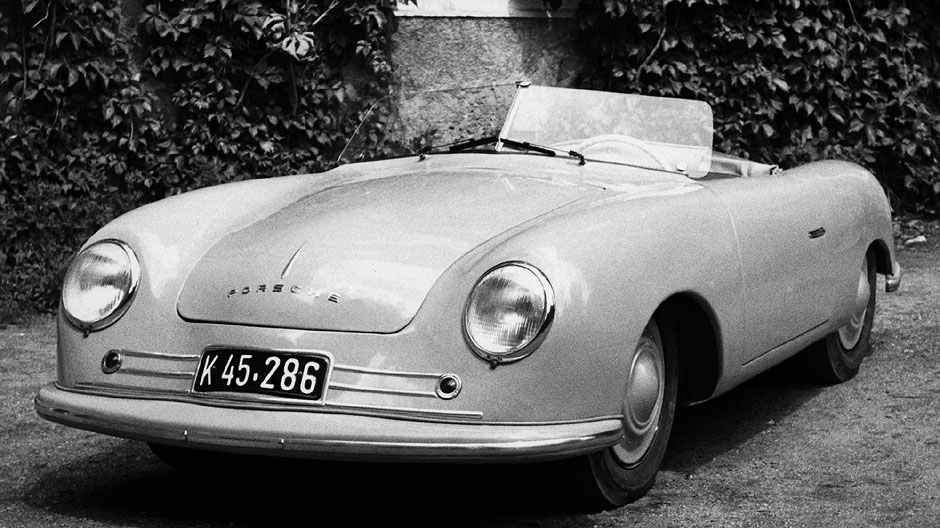
The team to lay out the body shell design was led by Ferry Porsche's eldest son, Ferdinand Alexander Porsche (F. A.). The design phase for the 911 caused internal problems with Erwin Komenda, who led the body design department until then. F. A. Porsche complained Komenda made unauthorized changes to the design.
Company leader Ferry Porsche took his son's drawings to neighbouring chassis manufacturer Reuter. Reuter's workshop was later acquired by Porsche (so-called Werk 2). Afterward Reuter became a seat manufacturer, today known as Keiper-Recaro. The design office gave sequential numbers to every project (see Porsche type numbers), but the designated 901 nomenclature contravened Peugeot's trademarks on all 'x0x' names, so it was adjusted to 911.

The 911 has become Porsche's most well-known and iconic model – successful on the race-track, in rallies, and in terms of road car sales. Far more than any other model, the Porsche brand is defined by the 911. It remains in production; however, after several generations of revision, current-model 911s share only the basic mechanical configuration of a rear-engined, six-cylinder coupé, and basic styling cues with the original car. A cost-reduced model with the same body, but with 356-derived four-cylinder engine, was sold as the 912.
In 1972, the company's legal form was changed from Kommanditgesellschaft (KG), or limited partnership, to Aktiengesellschaft (AG), or public limited company, because Ferry Porsche came to believe the scale of the company outgrew a "family operation", after learning about Soichiro Honda's "no family members in the company" policy at Honda.
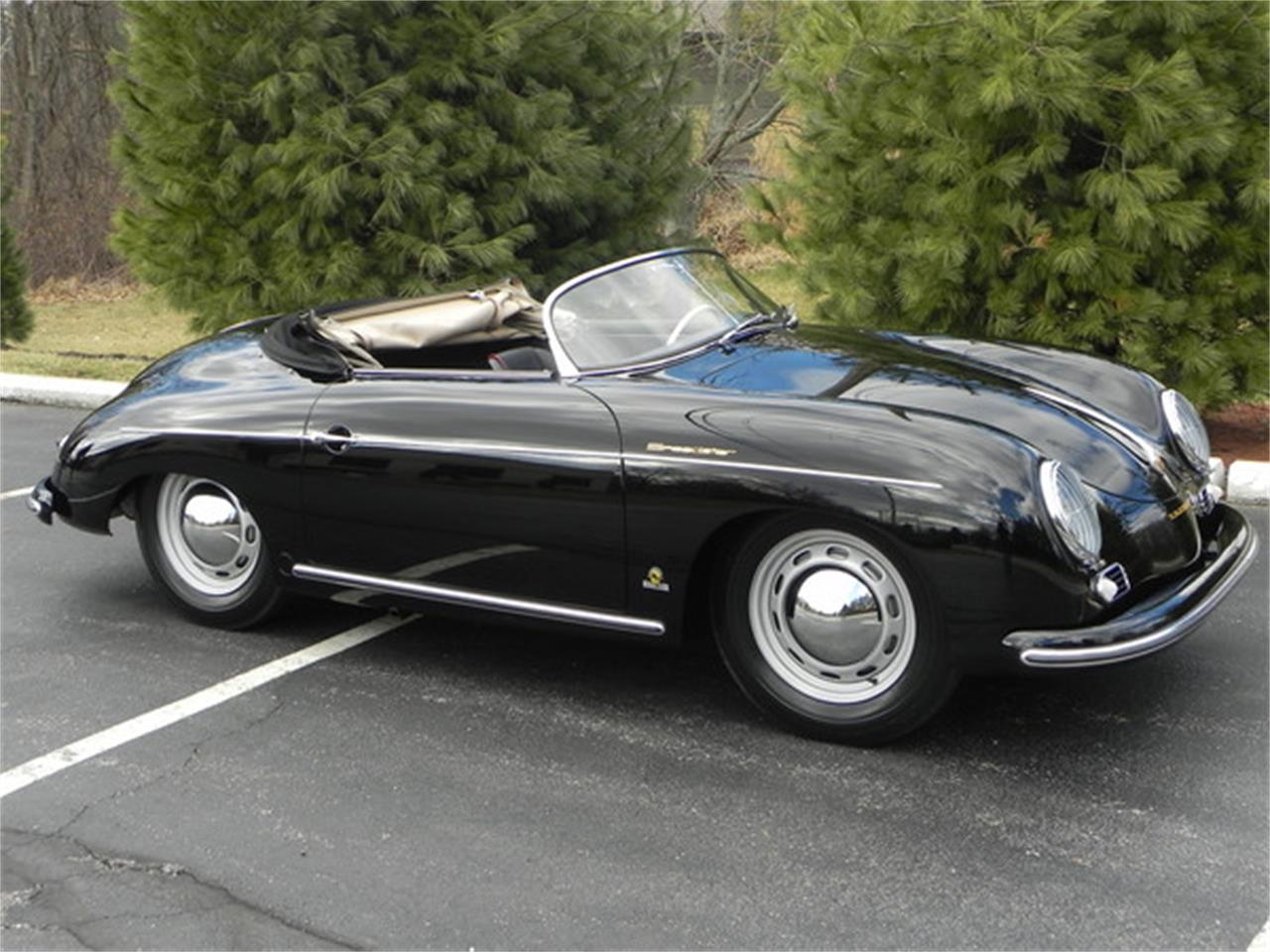
This led to the establishment of an Executive Board with members from outside the Porsche family, and a Supervisory Board consisting largely of family members. With this change, most family members in the operation of the company, including F. A. Porsche and Ferdinand Piëch, departed from the company. In a survey conducted by the Luxury Institute in New York, Porsche was awarded the title of "the most prestigious automobile brand".
The Porsche 356 is a sports car which was first produced by Austrian company Porsche Konstruktionen GesmbH (1948–1949), and then by German company Dr. Ing. h. c. F. Porsche GmbH (1950–1965). It was Porsche's first production automobile. Earlier cars designed by the Austrian company include the Volkswagen Beetle and Auto Union Grand Prix cars. The 356 is a lightweight and nimble-handling, rear-engine, rear-wheel drive, two-door, available both in hardtop coupé and open configurations. Engineering innovations continued during the years of manufacture, contributing to its motorsports success and popularity.
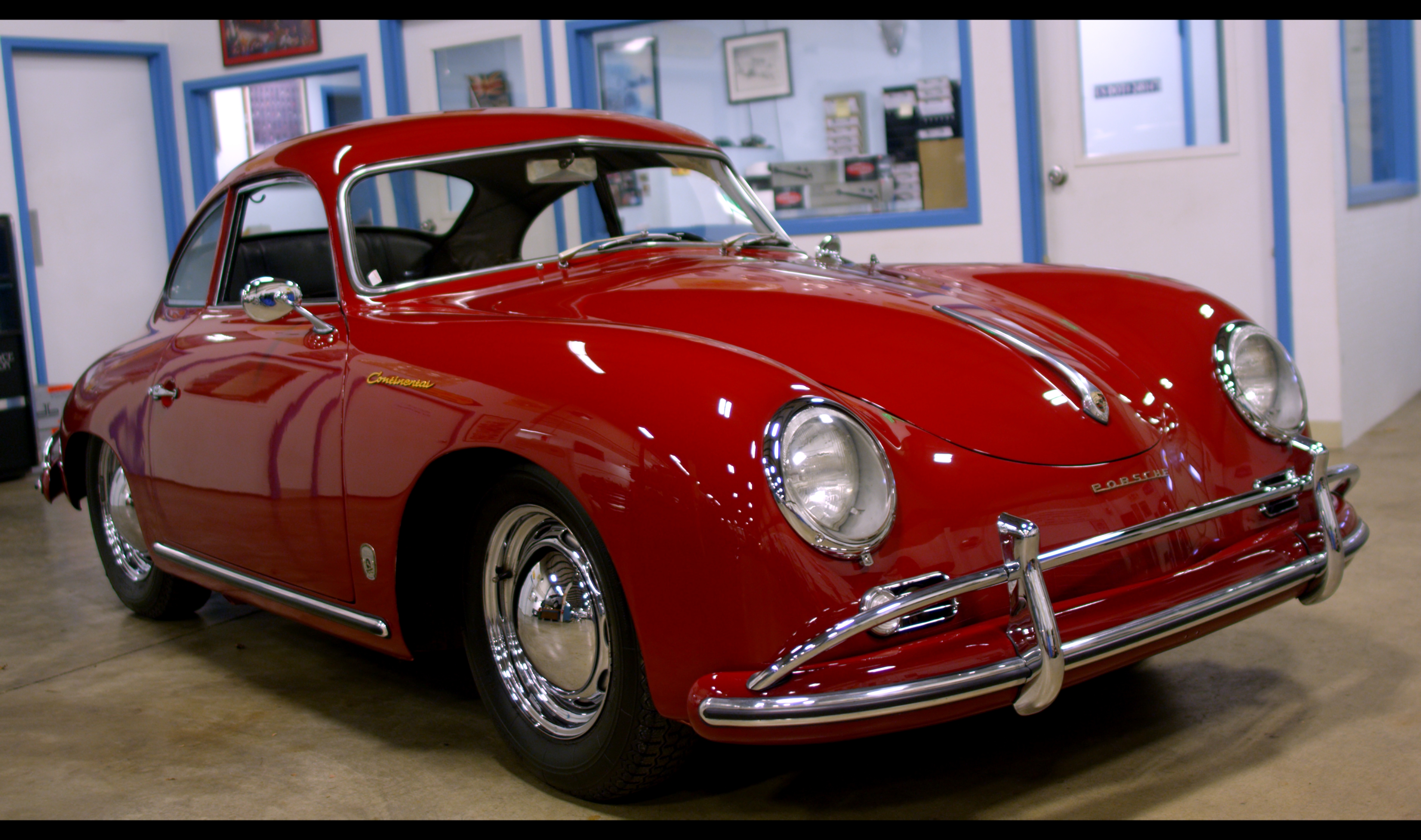
Production started in 1948 at Gmünd, Austria, where approximately 50 cars were built. In 1950 the factory relocated to Zuffenhausen, Germany, and general production of the 356 continued until April 1965, well after the replacement model 911 made its autumn 1963 debut. Of the 76,000 originally produced, approximately half survive.
The original price in 1948 for the 356 coupe was US$3,750 and for the cabriolet US$4,250. The 356 was created by Ferdinand "Ferry" Porsche (son of Ferdinand Porsche, founder of the German company), who founded the Austrian company with his sister, Louise. Like its cousin, the Volkswagen Beetle (which Ferdinand Porsche Sr. had designed), the 356 is a four-cylinder, air-cooled, rear-wheel drive car with unitized pan and body construction. The chassis was a completely new design as was the 356's body which was designed by Porsche employee Erwin Komenda, while certain mechanical components including the engine case and some suspension components were based on and initially sourced from Volkswagen.
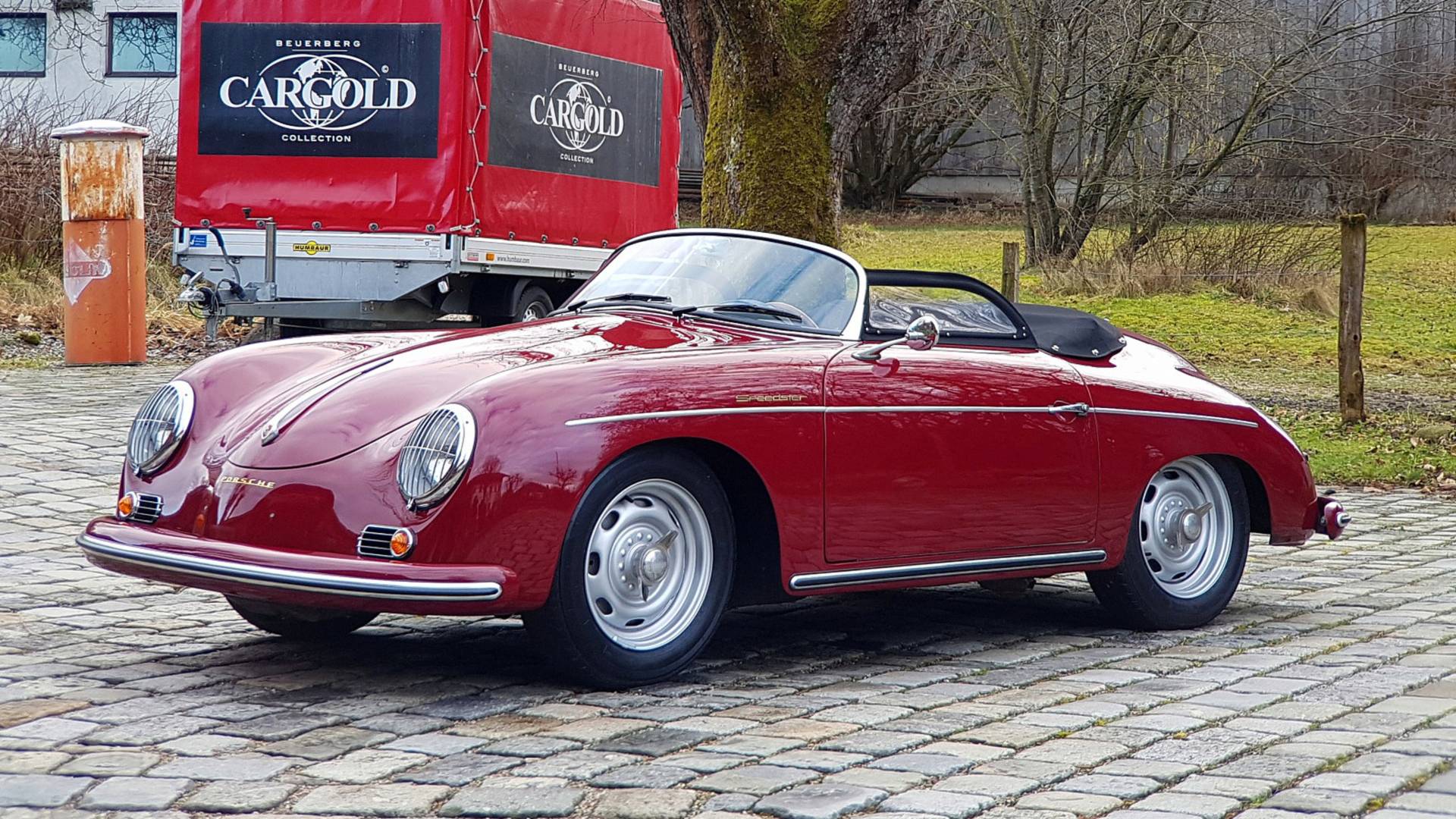
Ferry Porsche described the thinking behind the development of the 356 in an interview with the editor of “Panorama”, the PCA magazine, in September 1972. "...I had always driven very speedy cars. I had an Alfa Romeo, also a BMW and others. …. By the end of the war I had a Volkswagen Cabriolet with a supercharged engine and that was the basic idea. I saw that if you had enough power in a small car it is nicer to drive than if you have a big car which is also overpowered. And it is more fun. On this basic idea we started the first Porsche prototype. To make the car lighter, to have an engine with more horsepower…that was the first two seater that we built in Carinthia (Gmünd)".
The first 356 was road certified in Austria on June 8, 1948. Porsche re-engineered and refined the car with a focus on performance. Fewer and fewer parts were shared between Volkswagen and Porsche as the 1950s progressed. The early 356 automobile bodies produced at Gmünd were handcrafted in aluminium, but when production moved to Zuffenhausen, Germany in 1950, models produced there were steel-bodied. The aluminium bodied cars from that very small company are what are now referred to as "prototypes". Porsche contracted Reutter to build the steel bodies and eventually bought the Reutter company in 1963.
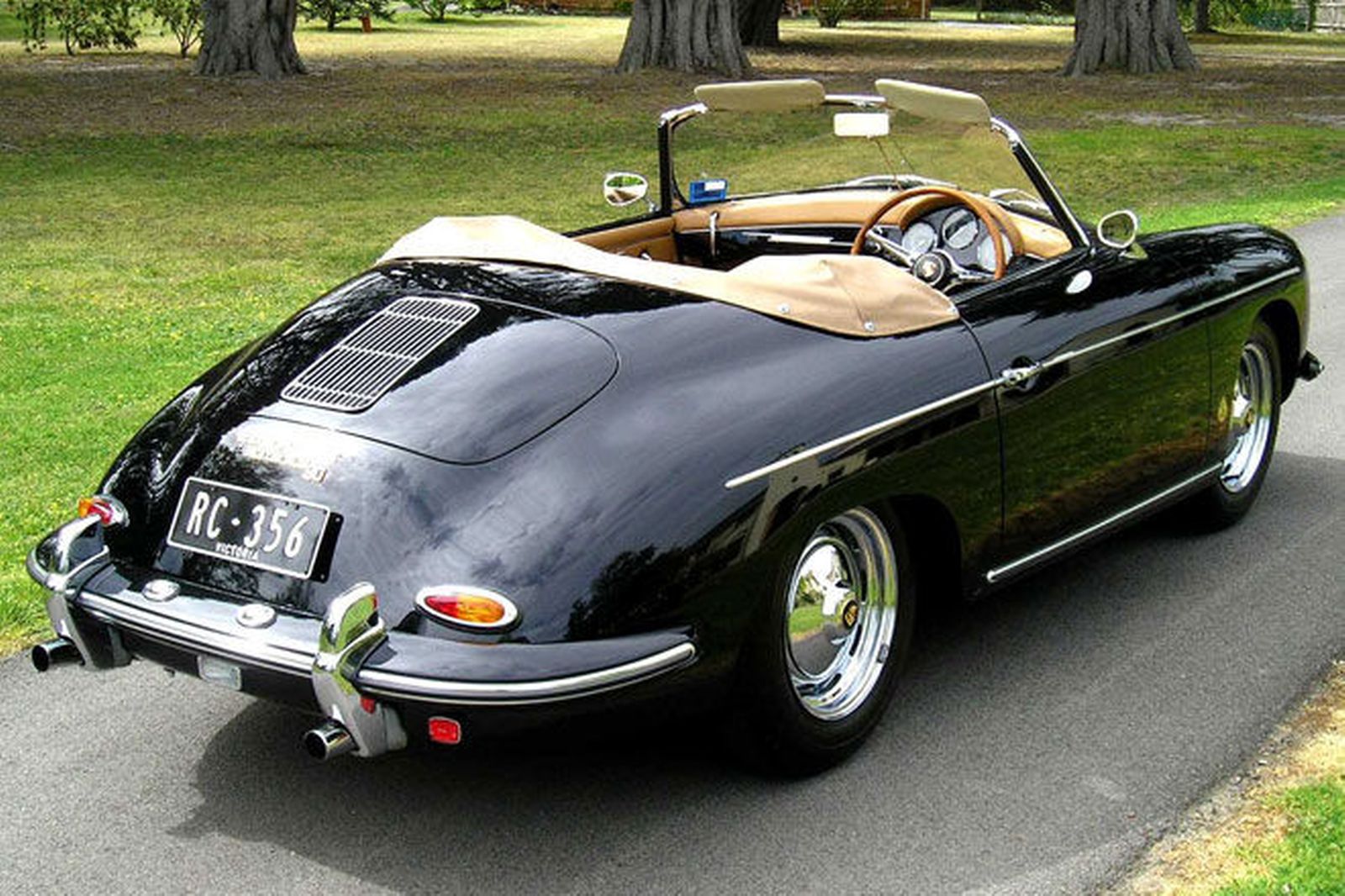
The Reutter company retained the seat manufacturing part of the business and changed its name to "Recaro". Little noticed at its inception, mostly by a small number of auto racing enthusiasts, the first 356s sold primarily in Austria and Germany. It took Porsche two years, starting with the first prototype in 1948, to manufacture the first 50 automobiles. By the early 1950s the 356 had gained some renown among enthusiasts on both sides of the Atlantic for its aerodynamics, handling, and excellent build quality.
The class win at Le Mans in 1951 was a factor. It was common for owners to race the car as well as drive them on the streets. The 356 was built in four distinct series, the original ("pre-A"), followed by the 356A, 356B, and finally the 356C. To distinguish among the major revisions of the model, 356s are generally classified into a few major groups.
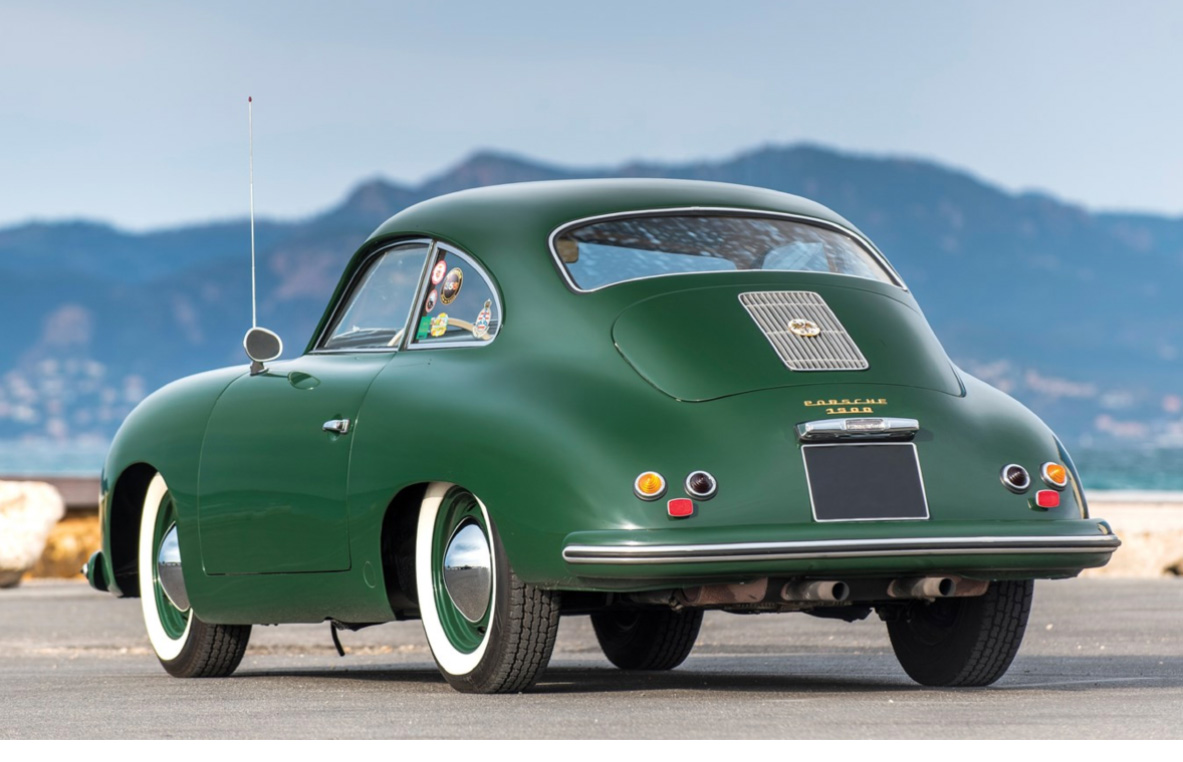
The 356 coupés and "cabriolets" (soft-tops) built through 1955 are readily identifiable by their split (1948 to 1952) or bent (centre-creased, 1953 to 1955) windscreens. In late 1955 the 356A appeared, with a curved windshield.
The A was the first road going Porsche to offer the Carrera four-cam engine as an option. In late 1959 the T5 356B appeared; followed by the redesigned T6 series 356 B in 1962. The final version was the 356C, little changed from the late T6 B cars but disc brakes replaced the drums.
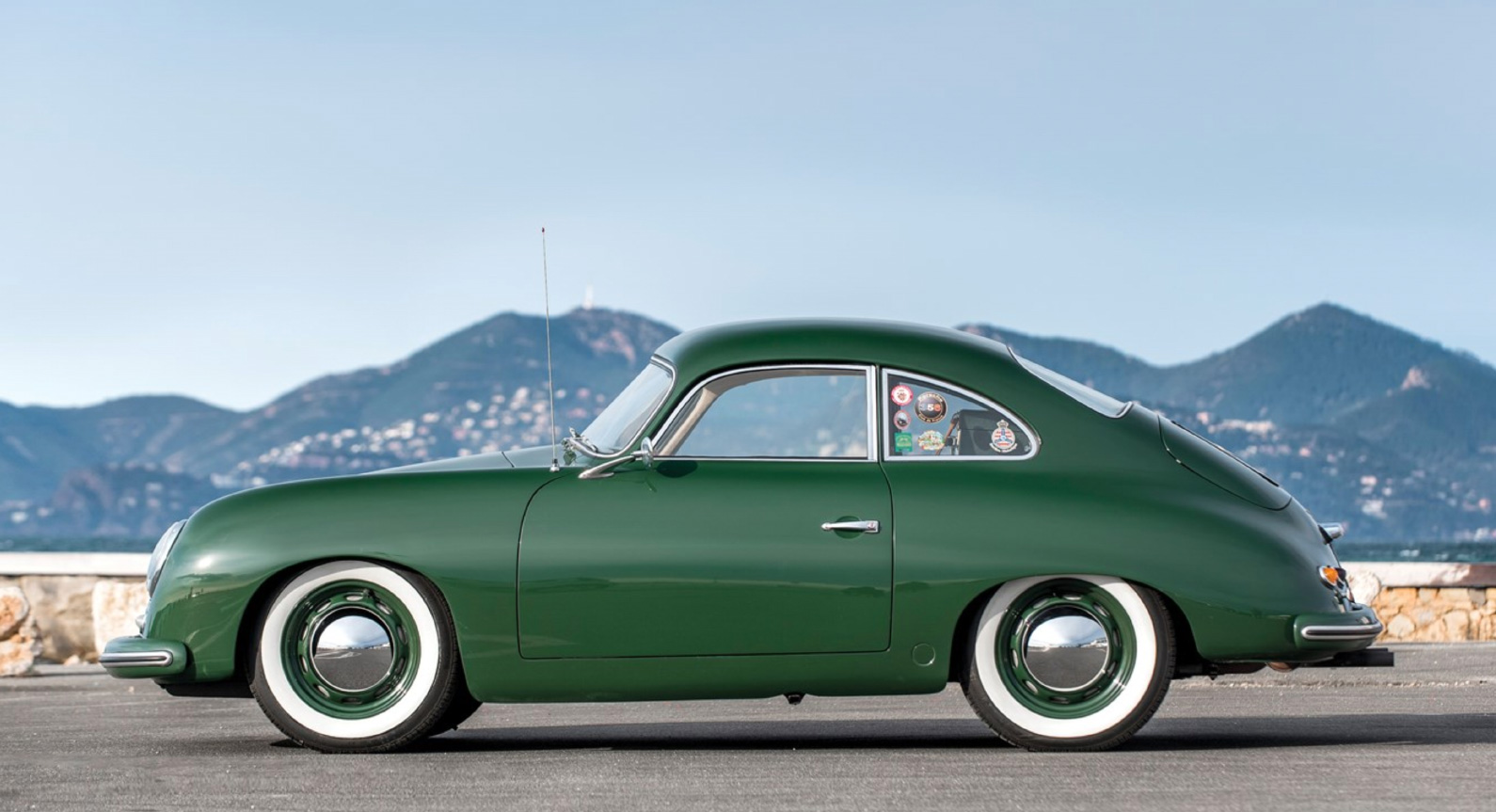
Prior to completion of 356 production, Porsche had developed a higher-revving 616/36 version of the 356's four-cylinder pushrod engine for installation in a new 912 model that commenced production in April 1965. Although the 912 used numerous 356 components, Porsche did not intend for the 912 to replace the 356. When the decision was made to replace the 356, the 901 (later 911) was the road car designed to carry the Porsche name forward.
The 912 was developed as the "standard version" of the 911 at the 17,500DM price of a 356 1600 SC, while the complex but faster and heavier six-cylinder 911 was priced more than fifty percent higher. Customers purchased nearly 33,000 912 coupés and Targas powered by the Type 616 engine that had served Porsche so well during the 356 era. From the earliest, 1,100 cc Gmünd beginnings, the overall shape of the 356 remained more or less set.
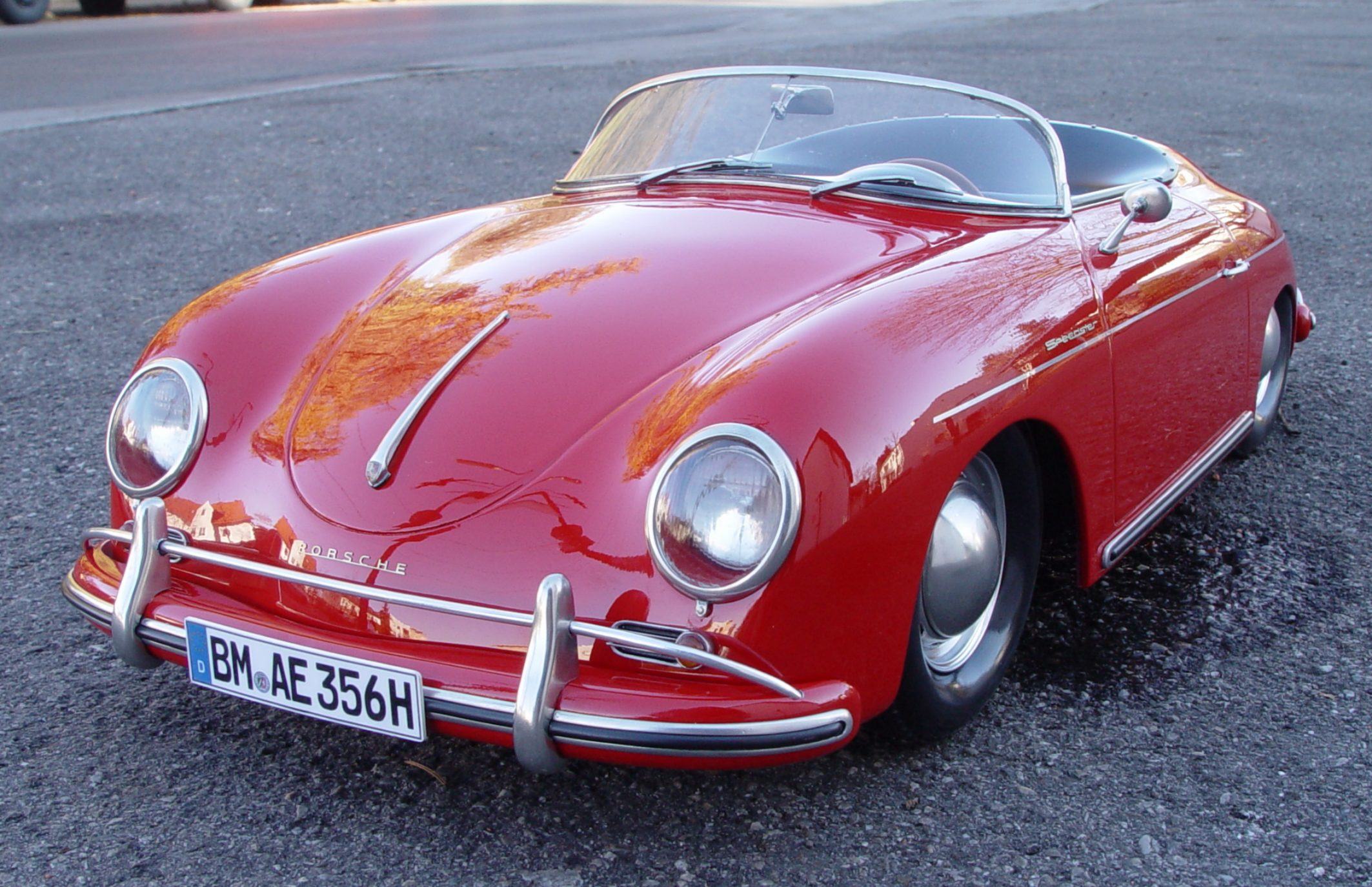
In 1951, 1,300 and 1,500 cc engines with considerably more power were introduced. By late 1952 the divided windscreen was gone, replaced by a V-shaped unit which fit into the same opening. In 1953, the 1300 S or "Super" was introduced, and the 1,100 cc engine was dropped. Today all of the earliest Porsches are highly coveted by collectors and enthusiasts worldwide based on their design, reliability and sporting performance.
In late 1955, with numerous small but significant changes, the 356A was introduced. Its internal factory designation, "Type 1", gave rise to its nickname "T1" among enthusiasts. In early 1957 a second revision of the 356 A was produced, known as Type 2 (or T2). Production of the Speedster peaked at 1,171 cars in 1957 and then started to decline. The four-cam "Carrera" engine, initially available only in the spyder race cars, became an available option starting with the 356 A.
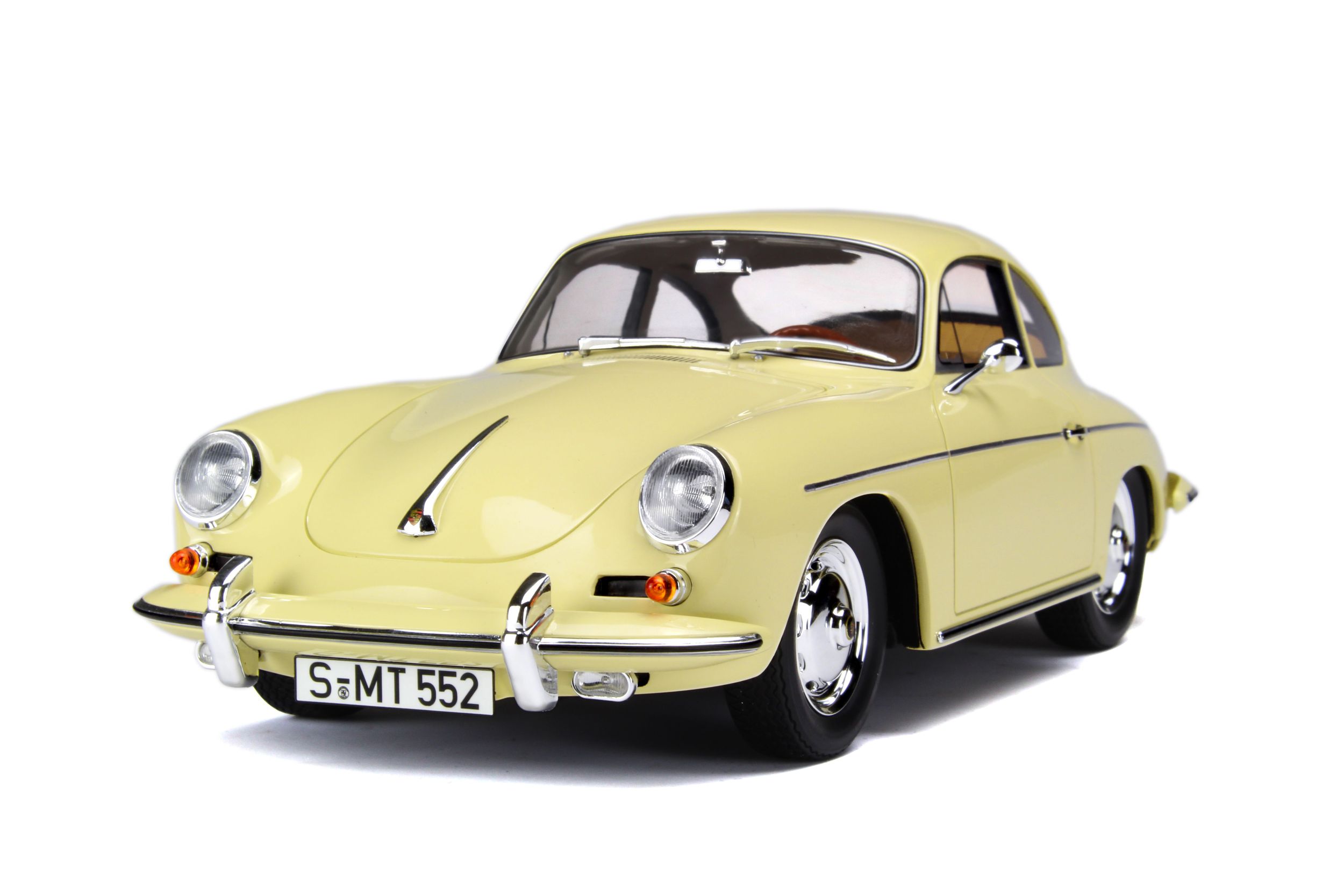
Within the last 25 years, replicas of the 356 A have become very popular. Most typical engine was a 1,582 cc (1.6 L; 96.5 cuin) 4-cylinder boxer air-cooled naturally aspirated Pushrod OHV 2 valves per cylinder valvetrain, with dual downdraft Zenith carburetors, producing 60PS (59hp; 44kW) @ 4500 rpm and a maximum torque of 110 N⋅m (81 lb⋅ft; 11 kg⋅m) @ 2800 rpm.
In late 1959 significant styling and technical refinements gave rise to the 356 B (a T5 body type). The mid-1962 356 B model was changed to the T6 body type (twin engine lid grilles, an external fuel filler in the right front wing/fender and a larger rear window in the coupé). The Porsche factory did not call attention to these quite visible changes with a different model designation. However, when the T6 got disc brakes, with no other visible alterations, they called it the model C, or the SC when it had the optional extra powerful engine.
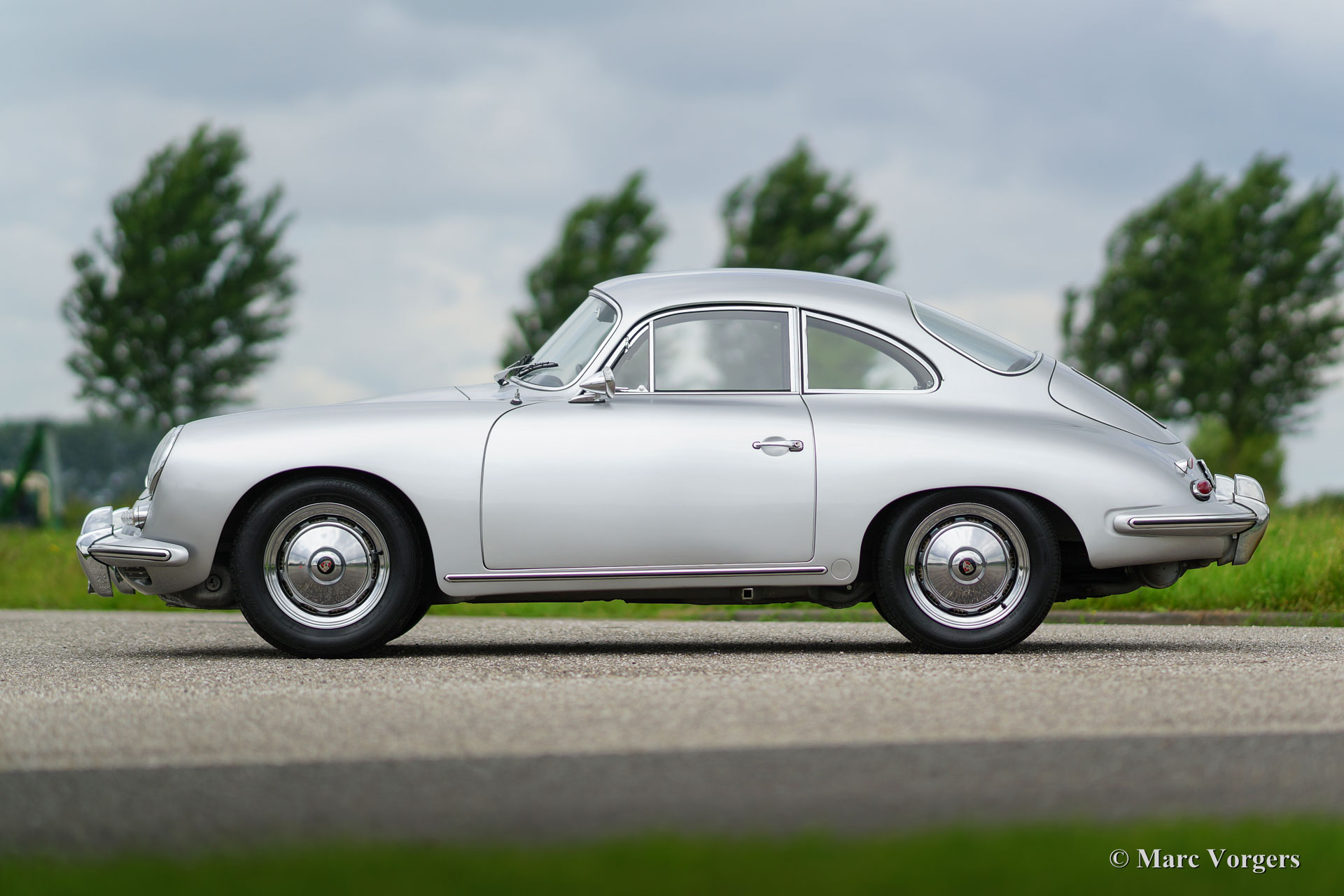
A unique "Karmann hardtop" or "notchback" 356 B model was produced in 1961 and 1962. The 1961 production run (T5) was essentially a cabriolet body with the optional steel cabriolet hardtop welded in place. The 1962 line (T6 production) was a very different design in that the new T6 notchback coupé body did not start life as a cabriolet, but with its own production design—In essence, part cabriolet rear end design, part T6 coupé windshield frame, unique hard top. Both years of these models have taken the name "Karmann notchback".
The last revision of the 356 was the 356 C introduced for the 1964 model year. It featured disc brakes all around, as well as an option for the most powerful pushrod engine Porsche had ever produced, the 95 hp (71 kW) "SC". Production of the 356 peaked at 14,151 cars in 1964, the year that its successor, the new 911, was introduced to the US market (it was introduced slightly earlier in Europe).
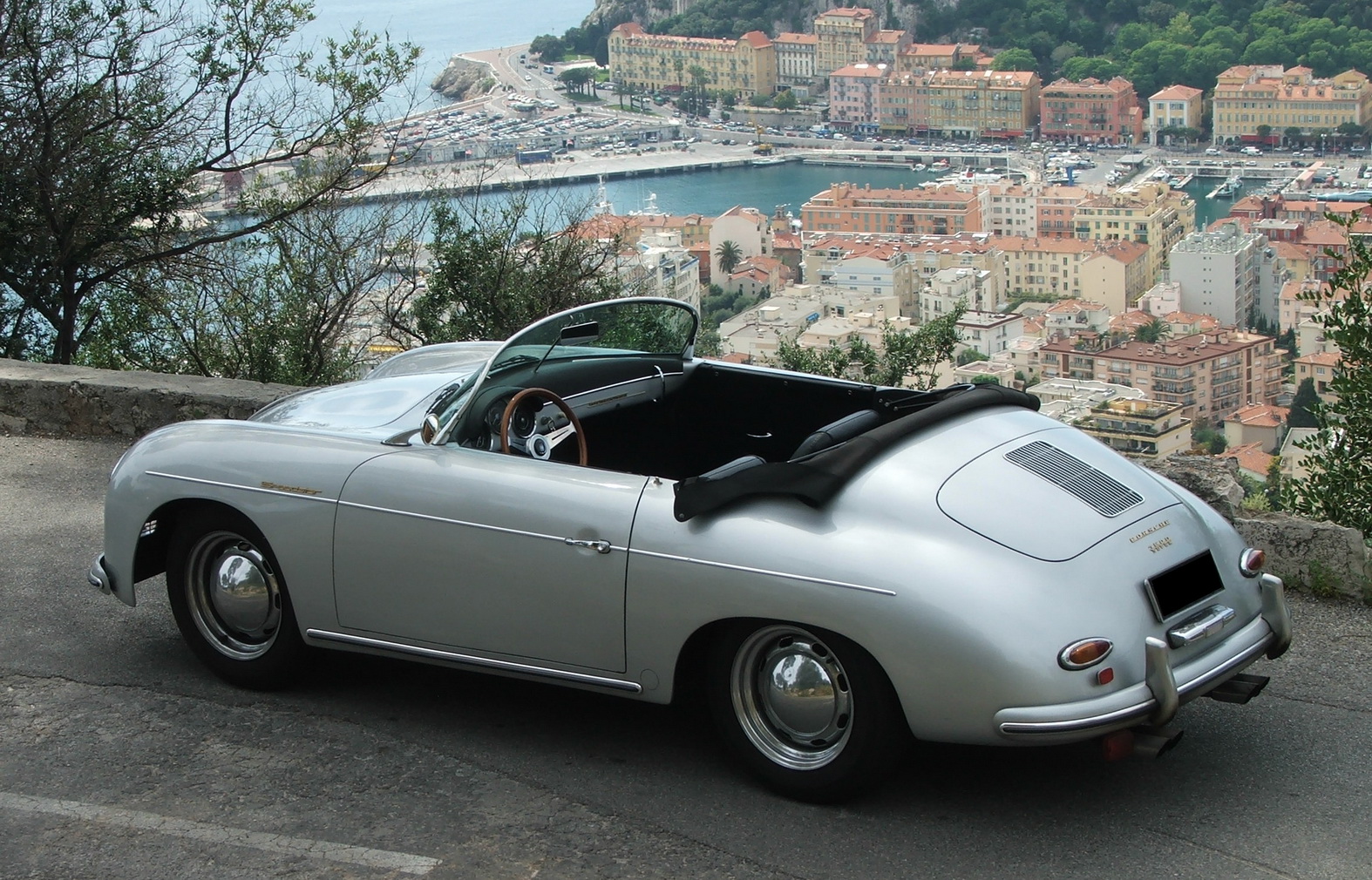
The company continued to sell the 356 C in North America through 1965 as demand for the model remained quite strong in the early days of the heavier and more "civilized" 911. The last ten 356s (cabriolets) were assembled for the Dutch police force in March 1966 as 1965 models. The 356 originated as a coupé only 1948-1955. Over time a variety of other styles appeared, including roadster, convertible, cabriolet, and a very rare split-roof.
The basic design of the 356 remained the same throughout the end of its lifespan in 1965, with evolutionary, functional improvements rather than annual superficial styling changes. The car was built of a unibody construction, making restoration difficult for cars that were kept in rust-prone climates.
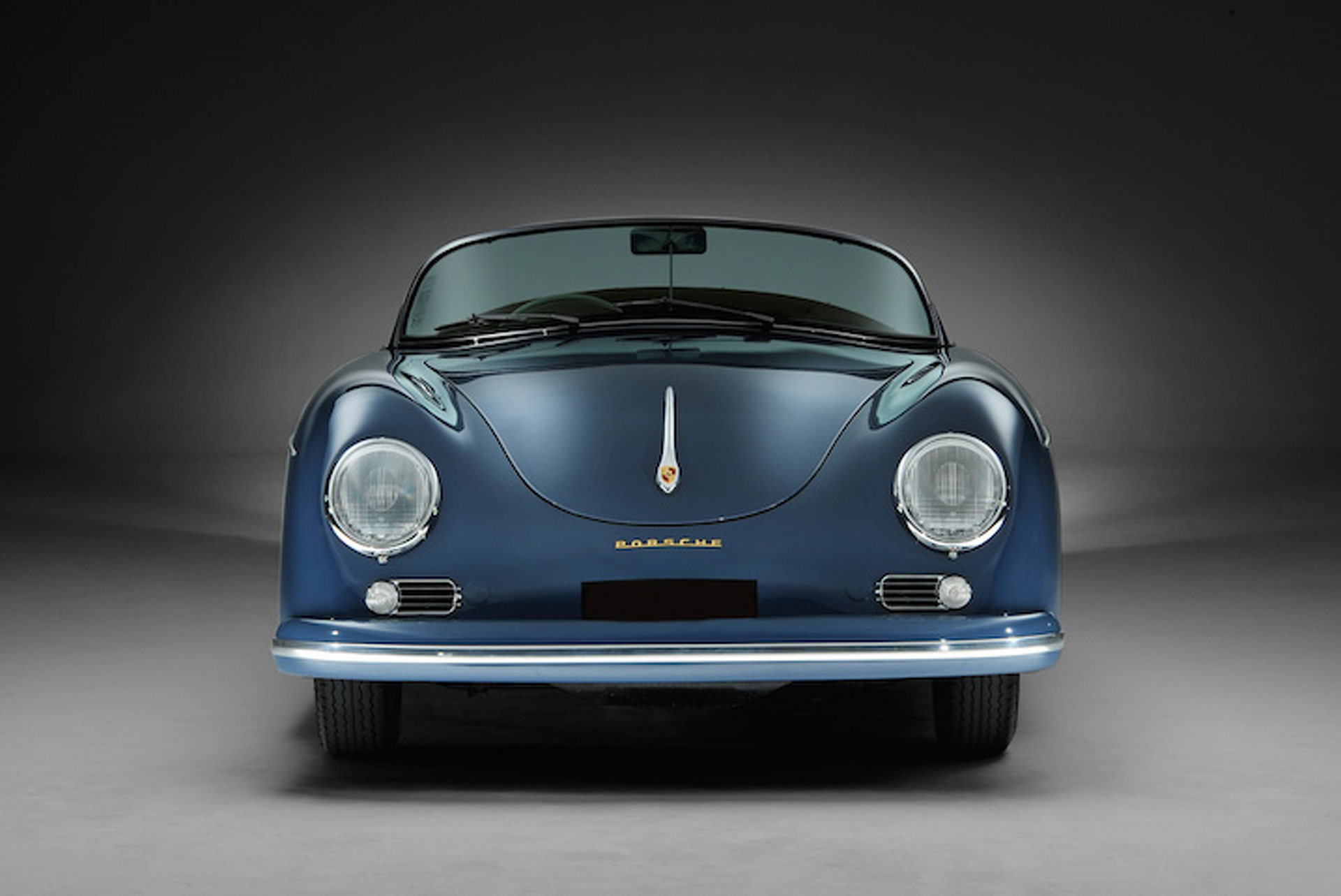
One of the most desirable collector models is the 356 "Speedster", introduced in late 1954 after Max Hoffman advised the company that a lower-cost, somewhat spartan open-top version could sell well in the American market. With its low, raked windscreen (which could be removed for weekend racing), bucket seats and minimal folding top, the Speedster was an instant hit, especially in Southern California.
It was replaced in late 1958 by the "convertible D" model. It featured a taller, more practical windshield (allowing improved headroom with the top erected), roll-up glass side-windows and more comfortable seats.
The following year the 356 B "roadster" convertible replaced the D model but the sports car market's love affair with top-down motoring was fading; soft-top 356 model sales declined significantly in the early 1960s.
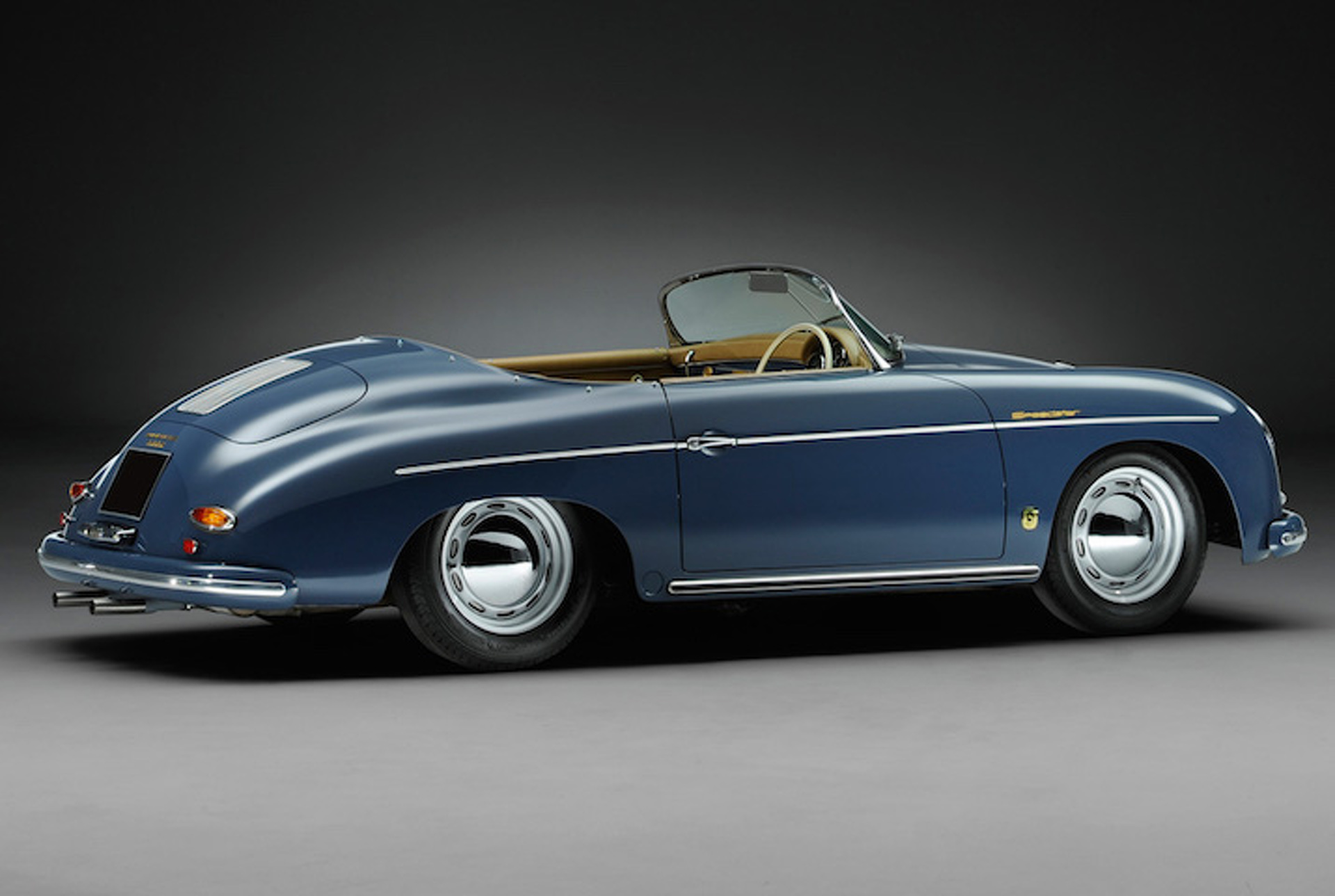
Cabriolet models (convertibles with a full windshield and padded top) were offered from the start, and in the early 1950s sometimes comprised over 50% of total production. Porsche designers decided to build the 356's air-cooled pushrod OHV flat-four around the engine case they had originally designed for the Volkswagen Beetle. They added new cylinder heads, camshaft, crankshaft, intake and exhaust manifolds and used dual carburetors to more than double the VW's horsepower.
While the first prototype 356 had a mid-engine layout, all subsequent 356 engines were rear-mounted. The four-cam "Carrera" engine appeared in late 1955 as an extra cost option on the 356 A, and remained available through the 356 model run. The 356 has always been popular with the motor press.
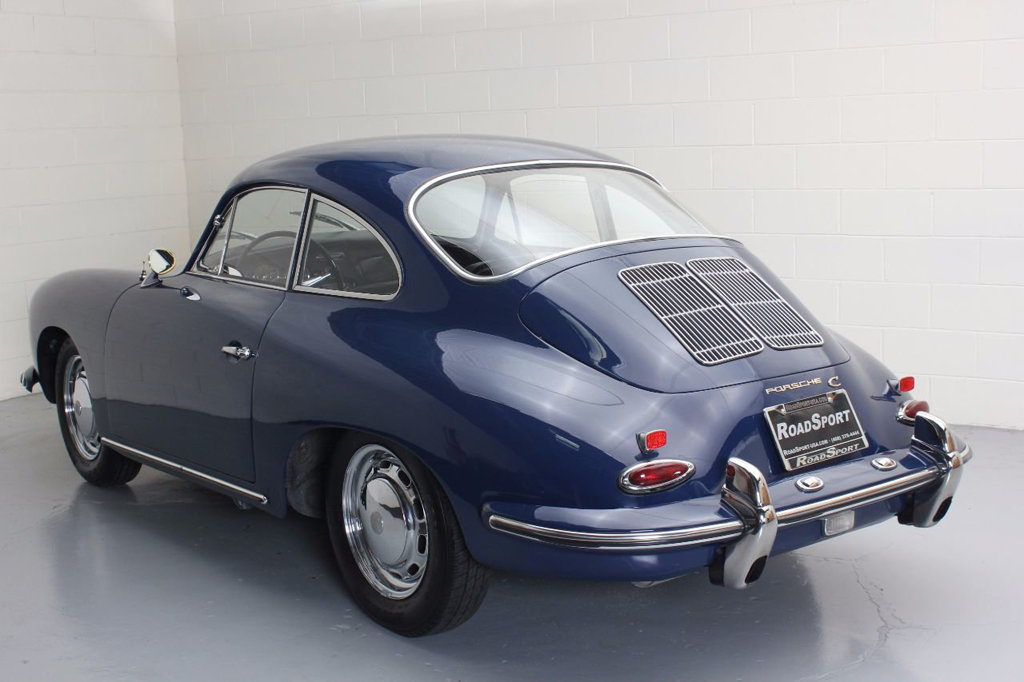
In 2004, Sports Car International ranked the 356 C tenth on their list of top sports cars of the 1960s. It remains a highly regarded collector car, regularly bringing between US$20,000 and well over US$100,000 at auction. The limited production Carrera Speedster (with its special DOHC racing engine), SC, Super 90 and Speedster models are among the most desirable. A fully restored Carrera (of which only about 140 were made) can sell for around $300,000 at auction.
Thousands of owners worldwide maintain the 356 tradition, preserving their cars and driving them regularly. The U.S.-based 356 Registry's website states calls it, "World's largest classic Porsche club." The 356 Speedster is among the most frequently reproduced classic automobiles. Several companies build near-exact replicas from the ground up, fabricating turn-key cars to the buyer's exact specifications.
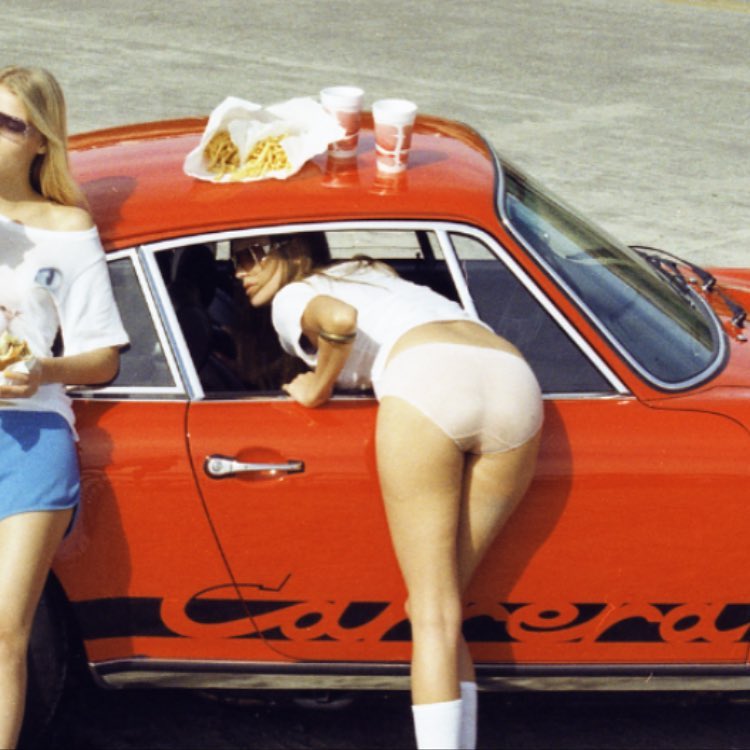
La Porsche 911 (1963–1989) represents the Porsche icon model. The original 911 (pronounced nine eleven) was a two-door, 2+2 high performance rear-engined luxury sports car made by Porsche AG of Stuttgart, Germany. The 911 traces its roots to sketches drawn by Ferdinand "Butzi" Porsche in 1959.
The car was developed with the proof-of-concept twin-fan Type 745 flat-six engine, but the car presented at the auto show had a non-operational mockup of the single-fan 901 engine, receiving a working unit in February 1964.
It originally was designated as the "Porsche 901" (901 being its internal project number). A total of 82 cars were built as 901s. However, Peugeot protested on the grounds that in France it had exclusive rights to car names formed by three numbers with a zero in the middle. Instead of selling the new model with a different name in France, Porsche changed the name to 911. Internally, the cars' part numbers carried on the prefix 901 for years.
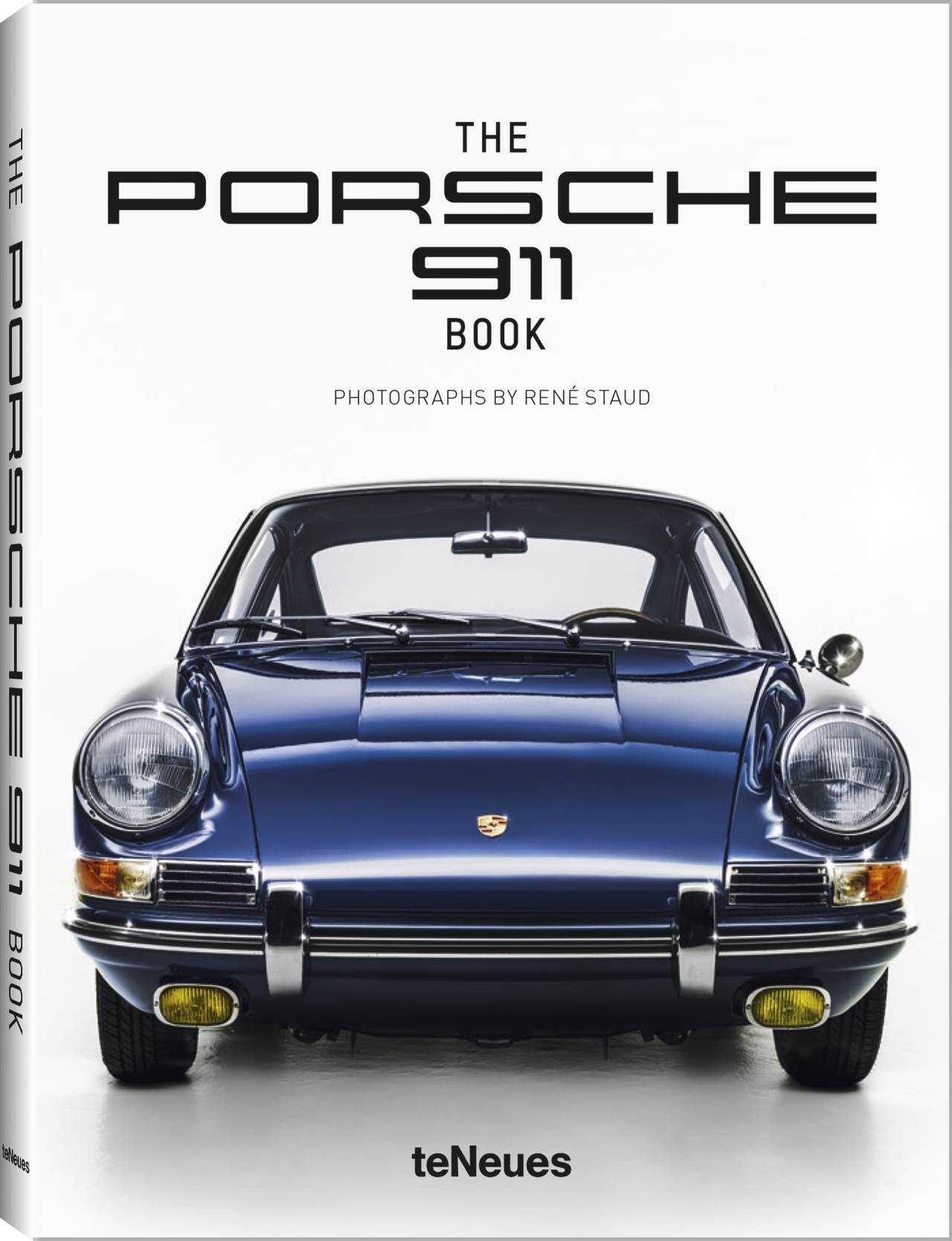
The famous, distinctive, and durable design was introduced in autumn 1963 and built through 1989. It was succeeded by a modified version, internally referred to as Porsche 964 but still sold as Porsche 911, as are current models. Mechanically, the 911 was notable for being rear engined and air-cooled and was developed as a much more powerful, larger, more comfortable replacement for the Porsche 356. It has a rear-mounted flat-six engine and all round independent suspension. It has undergone continuous development, though the basic concept has remained unchanged.
The engines were air-cooled until the introduction of the Type 996 in 1998, with Porsche's "993" series, produced in model years 1994–1998, being the last of the air-cooled Porsches. The new car made its public debut at the 1963 Frankfurt Motor Show. The Porsche 911 went on sale in September 1964, with the first 911s marketed to the US in February 1965 and showed up with mechanical solutions which made it a success, including a four-speed gearbox (fifth gear was an optional extra), a weight just over 1000 kg and 130 horsepower.
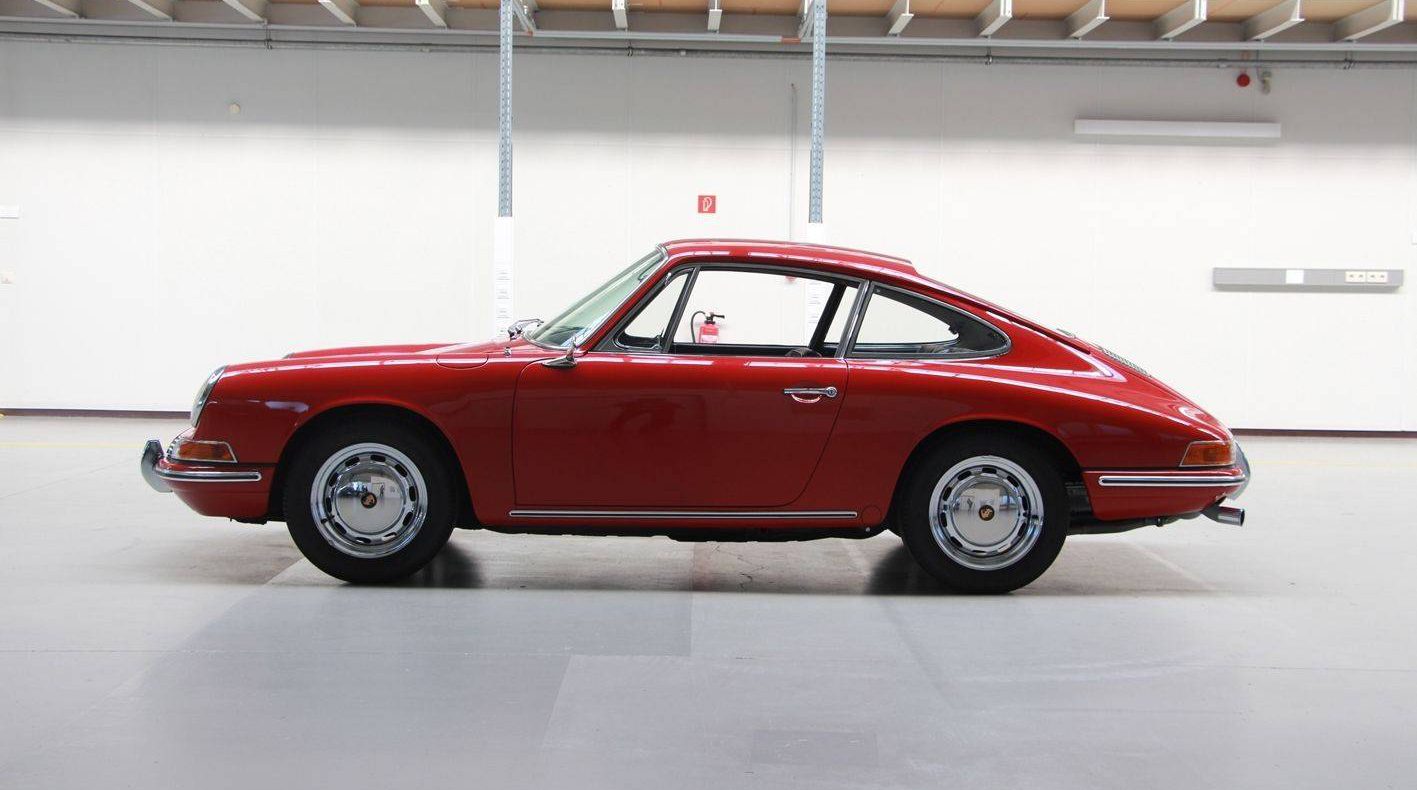
It is thanks to the unusual mechanical choices that the Porsche 911 got the whole world clientele: despite it was challenging to drive to the limit (many owners, to find a solution to the too light front, put sandbags in the front trunk) gave vibes behind the wheel unknown at Porsche.
2.0-litre / O, A and B series (1964–1969)
The earliest editions of the 911 had an air-cooled, rear-mounted, 2.0 L (1,991 cc) 130 PS (96 kW; 130 hp) flat-6 "boxer" engine, similar to the 356's four-cylinder 1.6 L unit. It was mated to a five-speed manual "Type 901" transmission. The car had 2+2 seating, though the rear was very small, also like the 356. The styling was largely by Ferdinand "Butzi" Porsche, son of Ferdinand "Ferry" Porsche. Erwin Komenda, the leader of the Porsche car body construction department, was also involved in the design.
When 356 production came to an end in 1965, there was still a market for a 4-cylinder car, particularly in the USA. The Porsche 912, introduced in the same year, served as a direct replacement, offering the de-tuned version of 356 SC's 4-cylinder, 1,582 cc (1.6 L), 90 hp (67 kW; 91 PS) boxer four Type 616/36 engine inside the 911 bodywork with Type 901 four-speed manual transmission (a 5-speed manual transmission was optional).
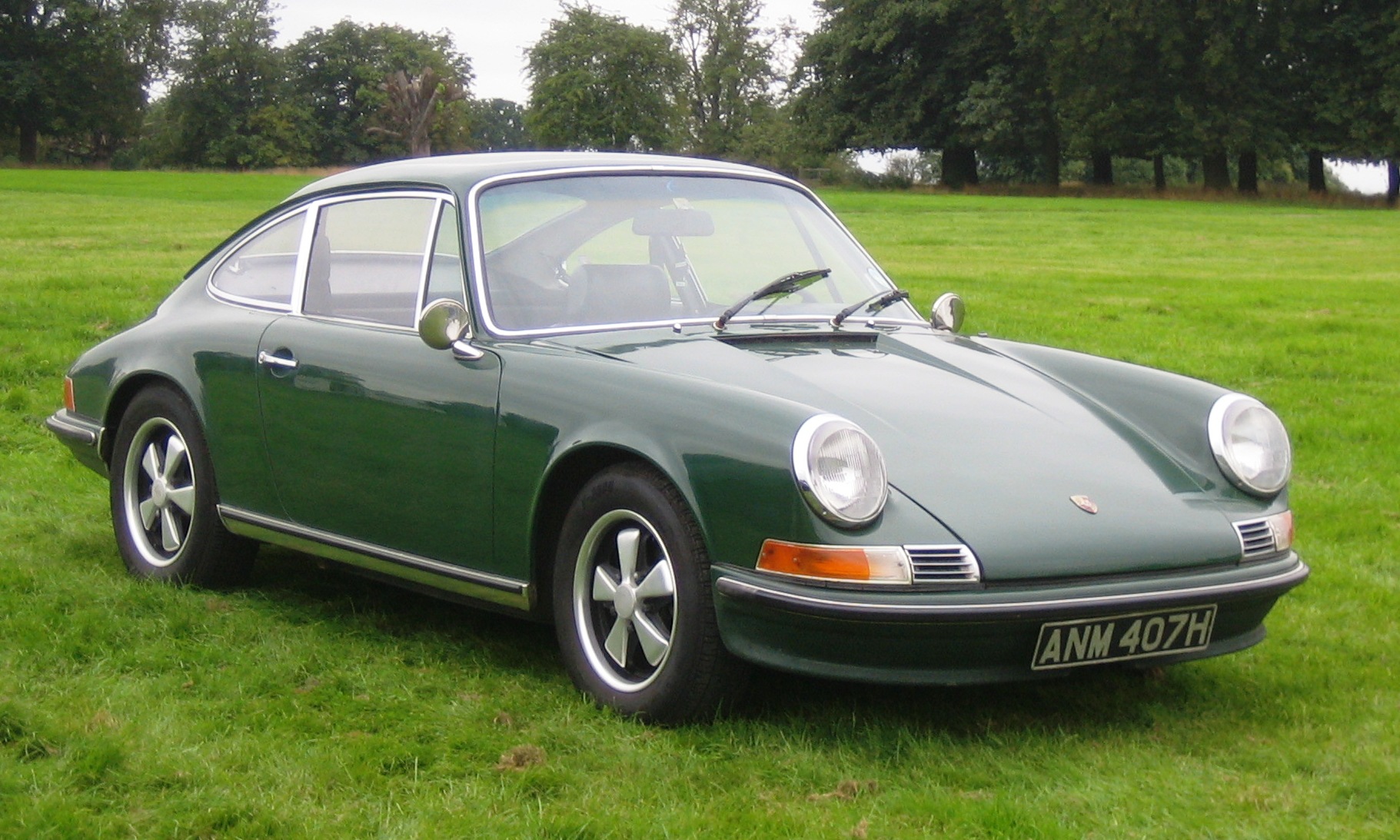
In 1966, Porsche introduced the more powerful 911S with Type 901/02 engine producing 160 PS (120 kW; 160 hp). Forged aluminium alloy wheels from Fuchs, with a 5-spoke design, were offered for the first time. In motor sport at the same time, the engine was developed into Type 901/20 installed in the mid-engined Porsche 904 and Porsche 906 with 210 PS (150 kW; 210 hp), as well as fuel injected Type 901/21 installed in 906 and 910 with 220 PS (160 kW; 220 hp).
In August 1967, the A series went into production with dual brake circuits and widened (5.5J-15) wheels still fitted with Pirelli Cinturato 165HR15 CA67 tyres., and the previously standard gasoline-burning heater became optional. The Targa version, with a stainless steel-clad roll bar, appeared the same year. The name "Targa" (shield in Italian) came from the Targa Florio sports car road race in Sicily.
The 110 PS (81 kW; 110 hp) 911T was also launched in 1967 with Type 901/03 engine and effectively replaced the 912. The 130 PS (96 kW; 130 hp) model was renamed the 911L with Type 901/06 engine and ventilated front disc brakes. The brakes had been introduced on the previous 911S. The 911R with 901/22 engine had a limited production (20 in all), as this was a lightweight racing version with thin fiberglass reinforced plastic doors, a magnesium crankcase, twin overhead camshafts, and a power output of 210 PS (150 kW; 210 hp).
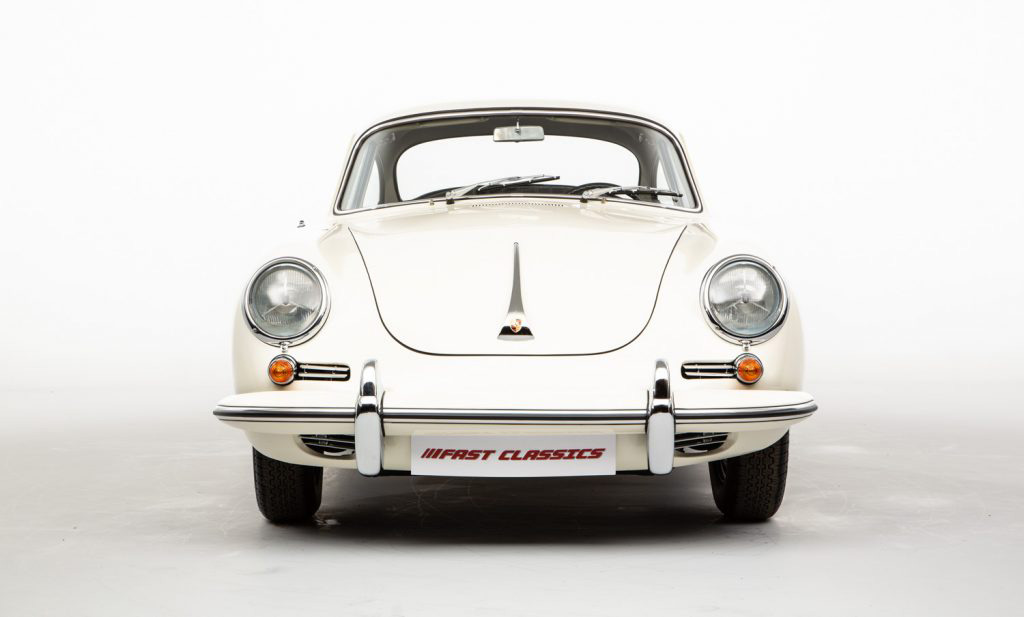
In 1969, the slightly lengthened B series was introduced. It moved the rear wheels on all 911 and 912 models 57 mm aft, increasing wheelbase from 2,211 to 2,268 mm (87.0 to 89.3 in) to remedy to the car's nervous handling at the limit. Fuel injection arrived both for the 911S and a new middle model, the 911E.
2.2-litre / C and D series (1969–1971)
For MY 1970 the engines of all 911s were increased to 2,195 cc (2.195 L; 133.9 cu in). Power outputs were uprated to 125 PS (92 kW; 123 hp) in the 911T, 155 PS (114 kW; 153 hp) in the 911E, and 180 PS (130 kW; 180 hp) in the 911S. The 912 was discontinued, with the 914 taking its place as Porsche's entry model. Despite the lower power output of the 911E compared to the 911S, the 911E was quicker during acceleration up to 160 km/h (99 mph).
2.4-litre / E and F series (1971–1973)
The 1972–1973 model years consisted of the same models of 911— the entry level T, the midrange E and the top of the line S. However, all models got a new, larger 2,341 cc (2.341 L; 142.9 cu in) engine. This is universally known as the "2.4L" engine, despite its displacement being closer to 2.3 litres— perhaps to emphasize the increase over the 2.2 L. The new power ratings for the T were 130 hp (97 kW), or 140 hp (104 kW) in the U.S., 165 hp (123 kW) for the E and 190 hp (142 kW) for the S. The 911E and 911S used mechanical fuel injection (MFI) in all markets. The 911T was carbureted.
With the power and torque increases, the 2.4 L cars also got a newer, stronger transmission, identified by its Porsche type number 915. The Sportomatic transmission was still available but only as a special order.

In 1972 a tremendous effort was made to improve the handling of the 911. Due to the 911's unusual engine placement (rear-mounted, with most of the vehicle's weight concentrated over the rear axle), early 911's were prone to oversteer when driven at the limit, and could easily spin in the hands of an inexperienced driver. In an attempt to remedy this, Porsche relocated the oil tank from its position behind the right rear wheel to in front of it. This had the effect of moving the weight of almost 8.5 L (9 US quarts) of oil from outside the wheelbase to inside, improving weight distribution and thus, handling.
To facilitate filling of the oil tank, Porsche installed an oil filler door (much like the fuel filler door on the left front fender) on the right rear quarter panel. Unfortunately, this unique design was scrapped after only one year, some say because inattentive gas station attendants were putting gas in the oil tank. The oil tank was subsequently relocated to its original position for model year 1973, and remained there until it was relocated within the wheelbase for the 964 models.
911S models also gained a discreet spoiler under the front bumper to improve high-speed stability. With a weight of only 1,050 kg (2,310 lb), these models are often regarded as the best classic mainstream 911s. The cars were available with a choice of either 2,466 cc or 2,492 cc engines, producing 270 PS (266 hp; 199 kW) at 8,000 rpm. Weight was down to 960 kg (2,120 lb).
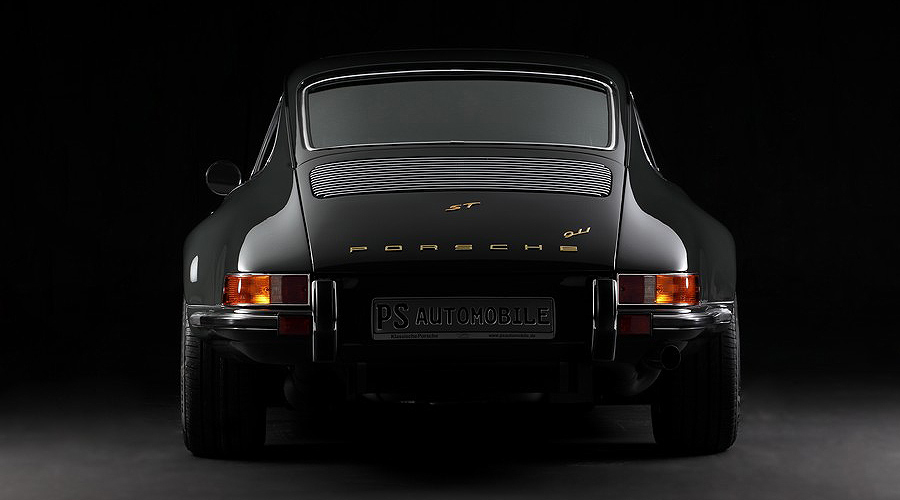
In 1979 Porsche had made plans to replace the 911 with their new 928. Sales of the 911 remained so strong however, that Porsche revised its strategy and decided to inject new life into the 911 editions. Peter W. Schutz (CEO Porsche AG 1981-1987) wrote: “the decision to keep the 911 in the product line occurred one afternoon in the office of dr Helmuth Bott, the Porsche operating board member responsible for all engineering and development. I noticed a chart on the wall of Professor Bott’s office. It depicted the ongoing development schedules for the three primary Porsche product lines: 944, 928 and 911. Two of them stretched far into the future, but the 911 program stopped at the end of 1981.
I remember rising from my chair, walking over to the chart, taking a black marker pen, and extending the 911 program bar clean off the chart. I am sure I heard a silent cheer from Professor Bott, and I knew I had done the right thing. The Porsche 911, the company icon, had been saved, and I believe the company was saved with it.” 911 SC sales totaled 58,914 cars.
1989 – 1993: 964 series
Since 1989 the Porsche 911 changes faces with the arrival of the 964 version. Endowed for the first time with the four-wheel-drive system (called Carrera 4) and with accessories such as airbag and ABS, the 911 sees the cylinder capacity increase to 3600cc and the power goes from the 250 horsepower of the Carrera 2 to the 381 of the Turbo version (sold also as a convertible)
1993 – 1998: 993 series
For many purists of Stuttgart brand 993 series is the last real Porsche 911 produced as the next series 996 left the air cooling for the Boxer engine. Characterised by a significant restyling, the Porsche 993 had new rear suspensions and a flat bottom, a solution copied from Formula 1 and used for the first time for a production car. The Porsche 993 is the internal designation for the Porsche 911 model manufactured and sold between January 1994 and early 1998 (model years 1995–1998 in the United States), replacing the 964. Its discontinuation marked the end of air-cooled Porsches.
The 993 was much improved over, and quite different from its predecessor. According to Porsche, every part of the car was designed from the ground up, including the engine and only 20% of its parts were carried over from the previous generation. Porsche refers to the 993 as "a significant advance, not just from a technical, but also a visual perspective."
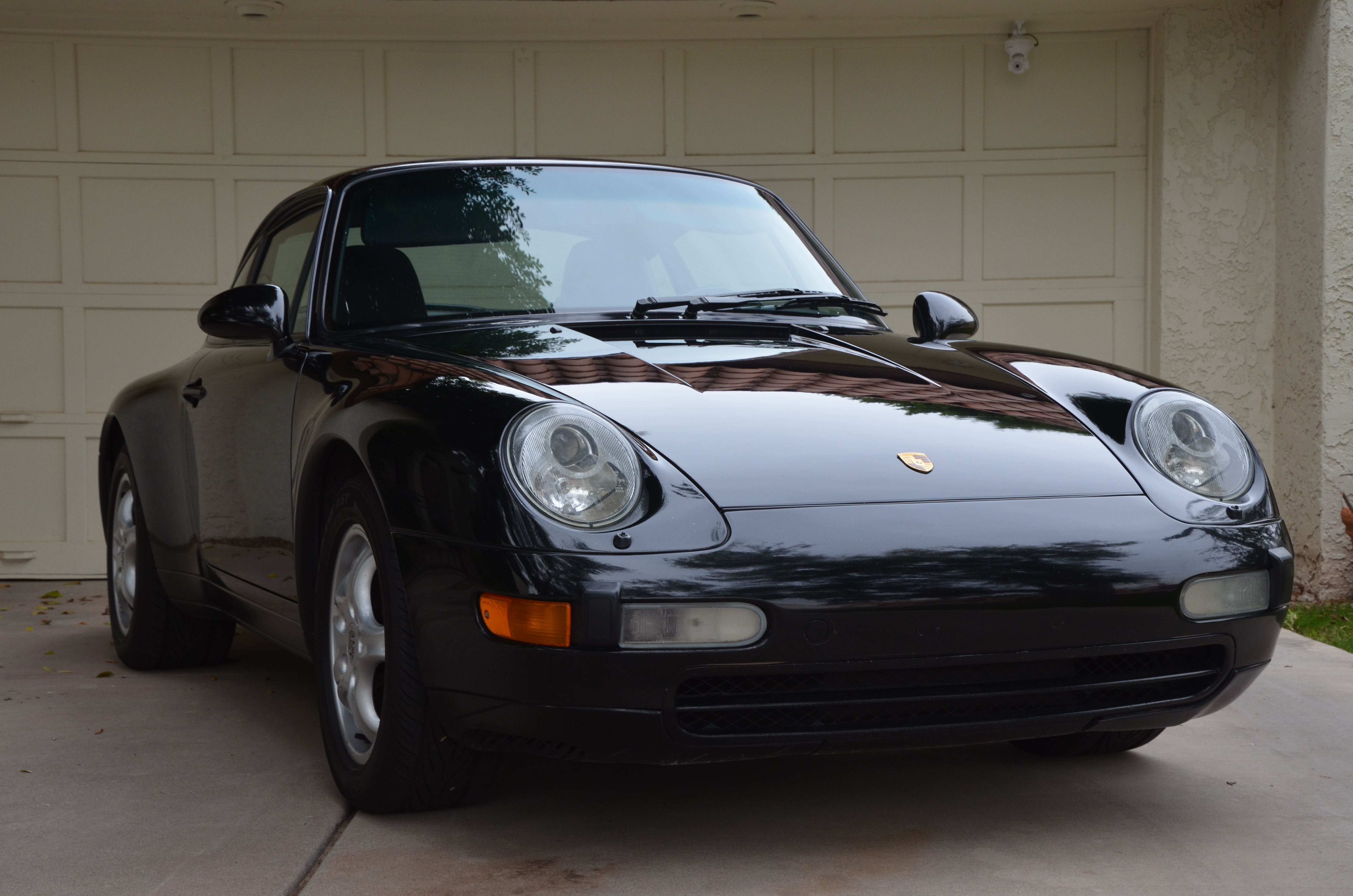
Porsche's engineers devised a new light-alloy subframe with coil and wishbone suspension (an all new multi-link system), putting behind the previous lift-off oversteer and making significant progress with the engine and handling, creating a more civilized car overall providing an improved driving experience.
The 993 was also the first 911 to receive a six speed transmission. The 993 had several variants, as its predecessors, varying in body style, engines, drivetrains and included equipment. Power was increased by the addition of the VarioRam system, which added additional power, particularly in the mid-ranges, and also resulted in a more throttle noise at higher revs; as a consequence, resulted in a 15% increase in power over its predecessor.
The external design of the Porsche 993, penned by English designer Tony Hatter, retained the basic body shell architecture of the 964 and other earlier 911 models, but with revised exterior panels, with much more flared wheel arches, a smoother front and rear bumper design, an enlarged retractable rear wing and teardrop mirrors.
A major change was the implementation of all alloy multi-link rear suspension attached to an alloy sub frame, a completely new design derived from the 989, a four-door sedan which never went into production. The system later continued in the 993's successor, the 996, and required the widening of the rear wheel arches, which gave better stability.
The new suspension improved handling, making it more direct, more stable, and helping to reduce the tendency to oversteer if the throttle was lifted during hard cornering, a trait of earlier 911s. It also reduced interior noise and improved ride quality. The 993 was the first generation of the 911 to have a 6-speed manual transmission included as standard; its predecessors had 4 or 5-speed transmissions. In virtually every situation, it was possible to keep the engine at its best torque range above 4,500 rpm.
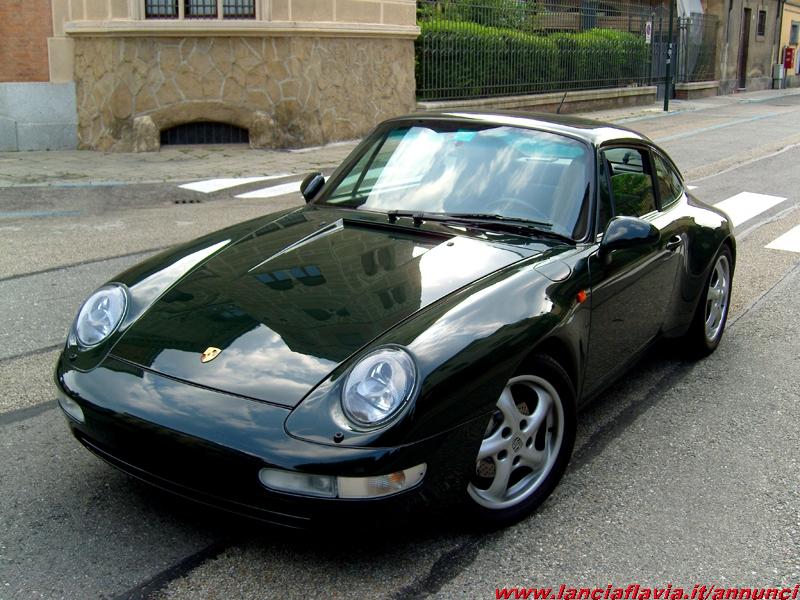
The Carrera, Carrera S, Cabriolet and Targa models (rear wheel drive) were available with a "Tiptronic" 4-speed automatic transmission, first introduced in the 964. Beginning with model year 1995, Porsche offered the Tiptronic S with additional steering wheel mounted controls and refined software for smoother, quicker shifts.
Since the 993's introduction, the Tiptronic is capable of recognizing climbs and descents. The Tiptronic equipped cars suffer as compared to the manual transmission equipped cars in both acceleration and also top speed, but the differences are not much notable. Tiptronic cars also suffered a 55 lb (25 kg) weight penalty. The 993's optional all wheel drive system was refined over that of the 964.
Porsche departed from the 964's setup consisting of three differentials and revised the system based on the layout from its 959 flagship, replacing the centre differential with a viscous coupling unit. In conjunction with the 993's redesigned suspension, this system improved handling characteristics in inclement weather and still retained the stability offered by all wheel drive without having to suffer as many compromises as the previous all-wheel-drive system. Its simpler layout also reduced weight, though the four wheel drive Carrera 4 weighs 111 lb (50 kg) more than its rear wheel drive counterpart (at 3,131 lb (1,420 kg) vs. 3,020 lb (1,370 kg). Other improvements over the 964 include a new dual-flow exhaust system, larger brakes with drilled discs, and a revised power steering.
The Carrera was available in rear and all-wheel drive versions. It was equipped with the naturally aspirated 3.6 liter M64 engine, further developed from the 964, and combined with a new dual-flow exhaust system now incorporating two catalytic converters.
The 993 Carrera originally was equipped with orange turn indicators on the front, side and rear, black brake calipers, black Carrera logo on the back and 16-inch alloy wheels with black Porsche logos on the center wheelcaps.
The 1994 coupé version had a curb weight of 1,370 kg (3,020 lb) (basic unladen weight of 1,270 kg (2,800 lb)). This model came with a ground clearance of 110 mm, except for the US version which had a ground clearance of 120 mm. This was further lowered with the M030 sport chassis option to 90 mm. The coupé is the stiffest, tightest, most solid, yet lightest of the 993 models.

The Cabriolet, introduced simultaneously alongside the coupé in April 1994 for the 1995 model year, featured a fully electrical and hand-stitched soft-top reinforced with metal sheets and an automatic wind-blocker. On the rear of the Cabriolet a small spoiler was mounted with the third braking light. The 993 Cabriolet was slightly heavier than the coupé variant and has a curb weight of 1,420 kg (3,131 lb). On average, a high percentage of the total Cabriolets produced ended up in the US.
Both the coupé and convertible variants of the 993 were available with all-wheel drive. Porsche also offered the 993 Carrera as an all-wheel drive version called the Carrera 4. In contrast with the 964, Porsche deleted the "2" from the rear-wheel drive "Carrera" name tag. However among enthusiasts, to differentiate between the rear-wheel and all-wheel drive variants of the Type 993 Carrera they were (and still are) commonly referred to as "C2" and "C4".
The Carrera 4 has an ABD system (Automatic Braking Differential); it brakes the inner wheel when accelerating out of a corner. On the exterior, the Carrera 4 is visually distinguishable by clear front and side turn indicators and rear red turn indicators. The brake calipers are painted silver as is the 'Carrera 4' badge on the engine cover. The center wheel-caps carry the Carrera 4 logo instead of the Porsche crest. The Carrera 4 had a curb weight of 1,420 kg (3,131 lb), same as the standard Carrera cabriolet, and in both instances more than the Carrera coupé.
Key feature on the 993 Carrera 4 is the weight saving in the all-wheel-drive system as compared to the 964, a lower maintenance viscous coupling unit that transfers 5-50% of power to the front wheels and changes the driving behavior of the car compared to the 993 Carrera. The 993 Carrera 4 all-wheel drive is suited to cope with all inclement weather conditions, which provides extra security in rain or snow, though on a dry circuit the C2 is the faster car, and the C4 is of course heavier than the C2.
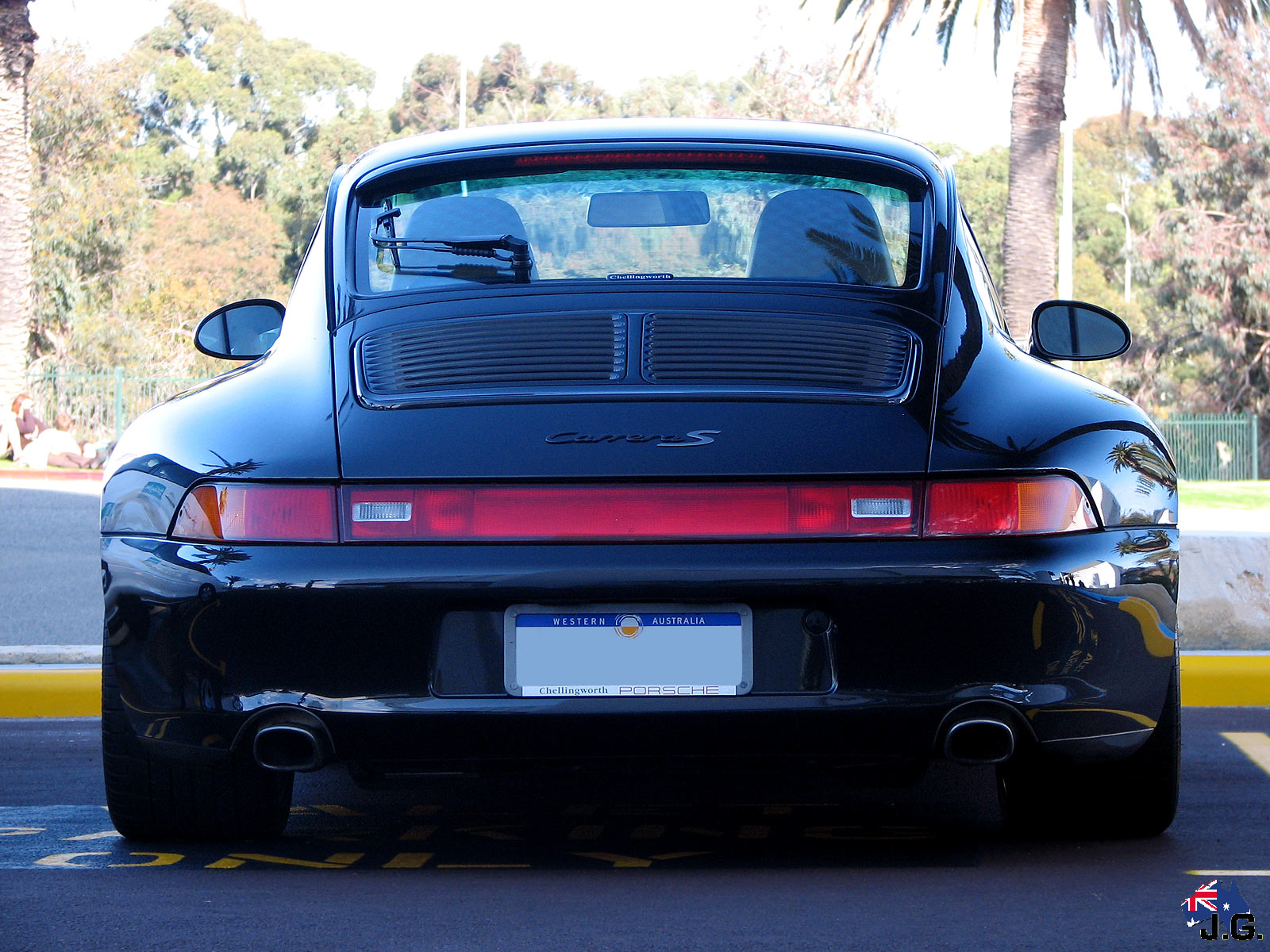
As one publication summarised it, "some may like the all-wheel-drive system making the front end feel a tad more stable. Others will insist that a skittish nose and lively, ultra-informative steering are absolute necessities for proper Porsche driving. On a dry track and everything else being equal, the rear-drive car is probably the faster of the two."
There was no Tiptronic option available on the Carrera 4. The options list for the 993 Carrera (and most other variants) offered many choices, including up to five different styles of wheels, various suspension set-ups, and three different seat styles (comfort, sport, racing). In addition, many upholstery options were offered and various sound systems including digital sound processing.
Further, customers had the option of any colour other than standard shades. Even more, the equipment and exclusive-programs added further options and built to order almost any specific wishes of customers such as special consoles, fax-machines or even brightly coloured interior upholstery. In contrast with most of the other variants, production of the Carrera coupé and Cabriolet ceased with the end of 1997 model year, except for a very few produced in a shortened 1998 model year.
There were a few engine options available for the 993. Naturally aspirated the 993 Carrera is powered by an air-cooled Porsche flat-6 "boxer" engine using a Single Overhead Cam (SOHC) valvetrain. Porsche had begun employing the earliest evolution of this overhead cam engine in the 1963 Porsche 901, which had a displacement of 2.0-litres and generated a maximum power output of 130 PS (96 kW; 128 hp). More specifically, the engine used in the 993 is the final factory refinement of the Porsche-designated "M64" boxer engine.
The standard, naturally aspirated 3.6-litre M64/05(06) engine is a refined version of the M64/01 installed in the 964 Carrera. The M64/05(06) generated a maximum power output of 272 PS (200 kW; 268 hp) through model year 1995.
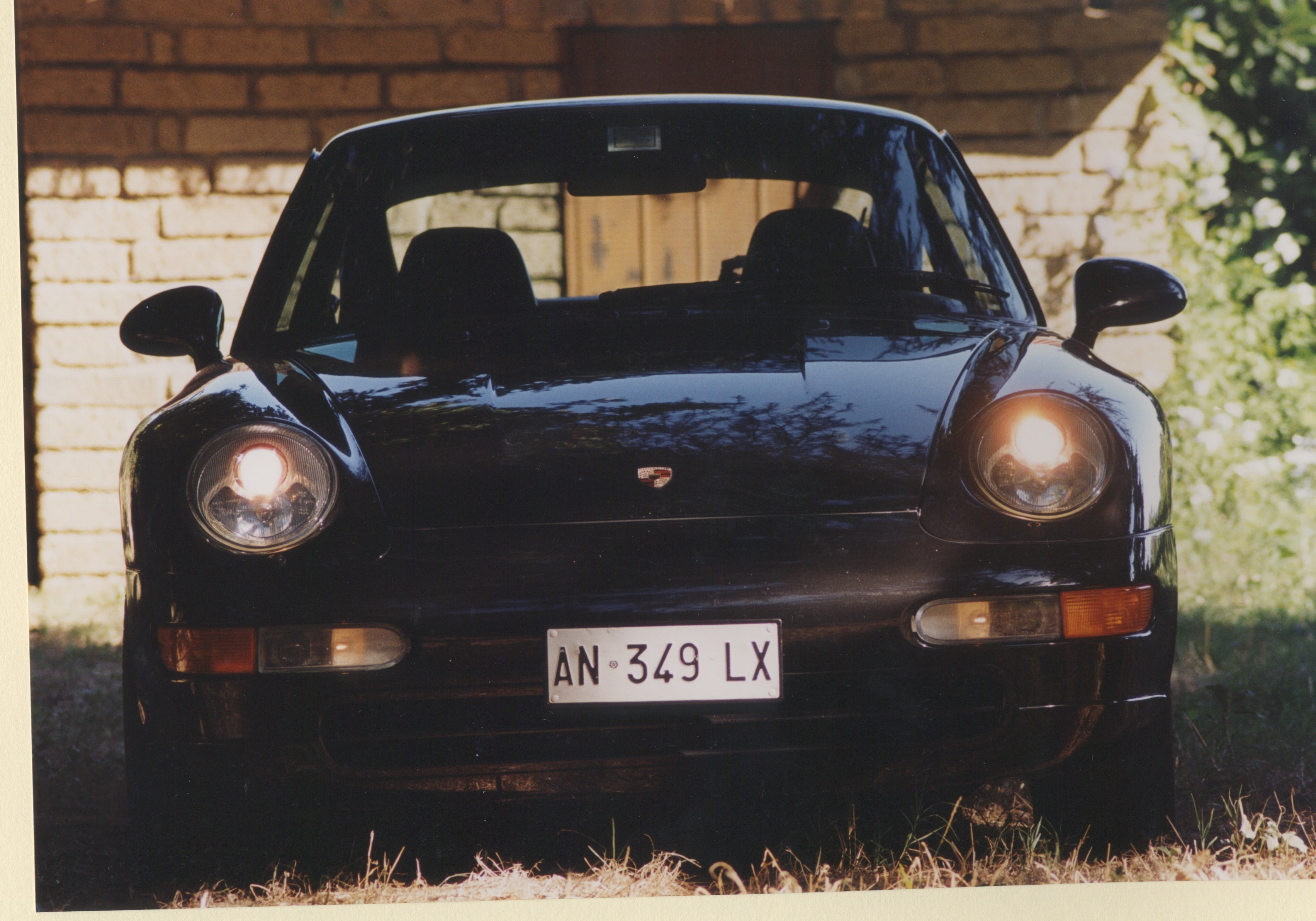
In 1995, Porsche switched to the VarioRam -equipped M64/21(22) engine. The VarioRam adjusts the length of the air intake ducts in line with the engine RPMs and the speed of the car, as a result, power output is increased to 286 PS (210 kW; 282 hp). The 993 Carrera RS utilised a more powerful version of the M64 displacing 3.8-litres and having a maximum power output of 300 PS (221 kW; 296 hp). The 3.8-litre engine was also offered as a build-to-order option throughout the 993's lifespan.
Turbocharged. The 3.6-litre twin-turbocharged M64/60 engine uses two KKK K16 turbochargers and generates a maximum power output of 408 PS (300 kW; 402 hp). More powerful versions [430–450 PS (316–331 kW; 424–444 hp)] were available as build-to-order options on the Turbo and as standard equipment in the Turbo S, and in the GT. Depending on the country, Porsche offered 430 and 450 PS kits for the Turbo during its production run.
The 993 generation of the 911 is often referred to as the best and most desirable of the 911 series, not only because of its beauty, but also because of its great performance, even by modern standards. The 993 is quoted as "the last complete modern classic;” "the 993 was and forever will be that last fresh breath of air that Porsche gave the world; elegance and muscle all in one package."
The book "Porsche 993 - Essential Companion" refers to the 993 as the "king of Porsche," and it is generally acknowledged as the purists Holy Grail." In its April 12, 2017 article entitled "The Porsche 993 actually lives up to the hype," “Road & Track” writes that the 993 is "something truly special," with "a combination of old-school feel and modern usability that isn't found in many other cars," with "great steering, great brakes, and a wonderfully composed package." It also states that "the 993 is also beautifully built -- it's a relic from the time when Porsche didn't cut corners anywhere."
The 993 was replaced by the 996. This represented a dramatic change for the 911. As many enthusiasts agree, "the 993 is one of the sweetest spots in the 911's half-century of existence," and while more modern versions might be more dynamically capable, they're bloated behemoths in comparison to the lean 993. Of the widebody 993 series, "the purists will want 2 wheel drive and nothing else will do." Similarly, purists will insist upon the manual transmission over the automatic "Tiptronic" version; this is even more true in the case of the 993 as compared with other models, because Porsche 993s were the first production model (apart from the 959 supercar) to feature a 6-speed manual transmission.
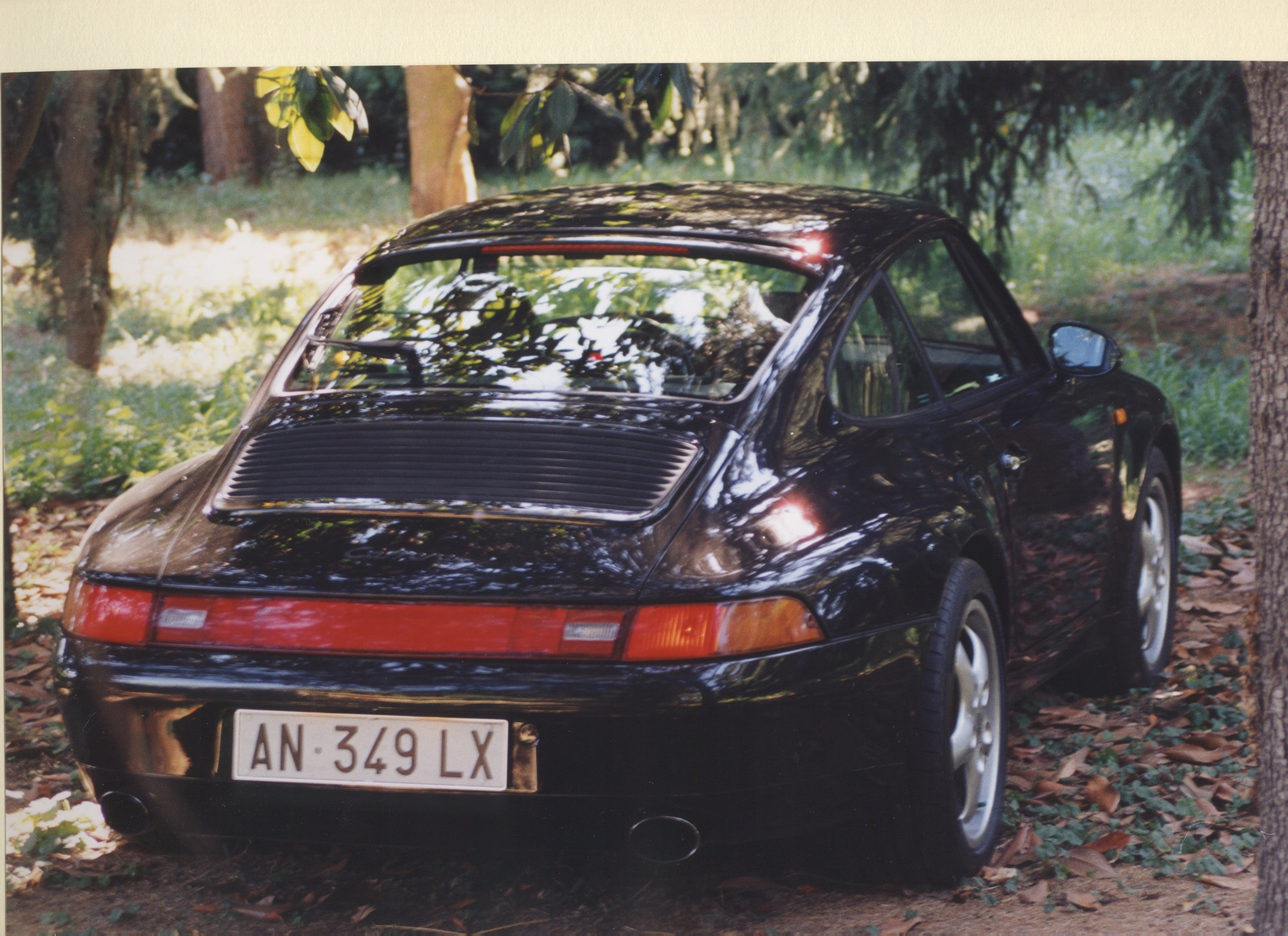
The C2S wide-body 993s are in scarce supply, with none built in 1995 or 1996, and just 759 units made for North America in 1997, with a final supply of 993 in 1998, for a total of 1,752 C2S examples overall. Arrived now to the sixth generation the Porsche 911 has never lost over the years the main features of the model launched for almost 50 years: a faithful over time styling, a great driving pleasure, the unfailing ignition key on the left, a good reliability and the possibility of being used every day without having to give up on carrying around wife or children.
In the 1999 international poll to determine the Car of the Century, the 911 came fifth. It is one of two in the top five that had remained continuously in production (the original Beetle remained in production until 2003), and was until 1998 a successful surviving application of the air- (now water-) cooled opposed rear-engine layout pioneered by its ancestor, the Porsche 356. It is one of the oldest sports coupé nameplates still in production with one million manufactured as of May 2017.
Although Porsche changes the internal codes for its models, all 911 models were and are currently sold as a "911". The headings below use Porsche's internal classifications. The series letter is used by Porsche to indicate the revision for production cars. It often changes annually to reflect changes for the new model year.
Your chance to drive like Steve McQueen
The absolute star of the ’71 movie Le Mans was a Porsche 911 S. It belonged, in real life too, to Steve McQueen. “There’s no owner as charismatic as Steve McQueen”, the founder of Canadian auction house “RM Auctions” Rob Myers stated.
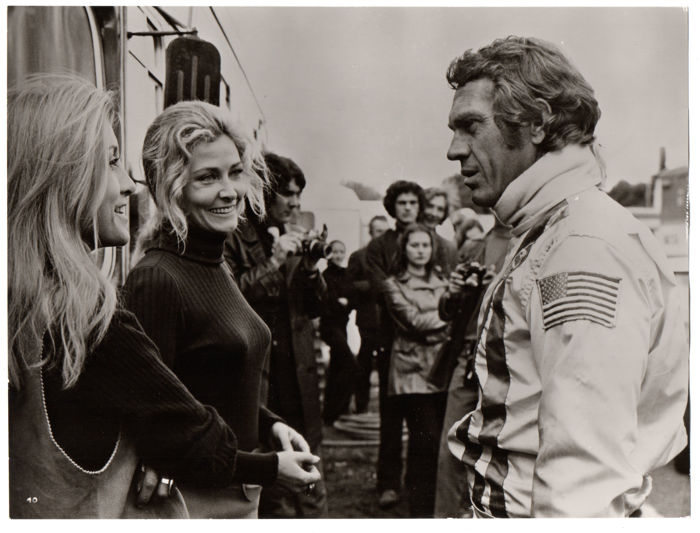
“The car of cool”, a classic 1971 Porsche 911 T Coupé driven during the making of Le Mans was offered in the sale on 4 November at Christie's Paris. Le Mans, released in 1971, remains one of the greatest motor racing films of all time. Starring Steve McQueen as American race car driver Michael Delaney, and filmed entirely on location during the 1970 renewal of the 24 Hours of Le Mans race, and at the track until November that year, the film has become legendary for its realistic depiction of the racing of that era, an iconic performance by McQueen and the magnificent Porsche motor cars presented on-screen.
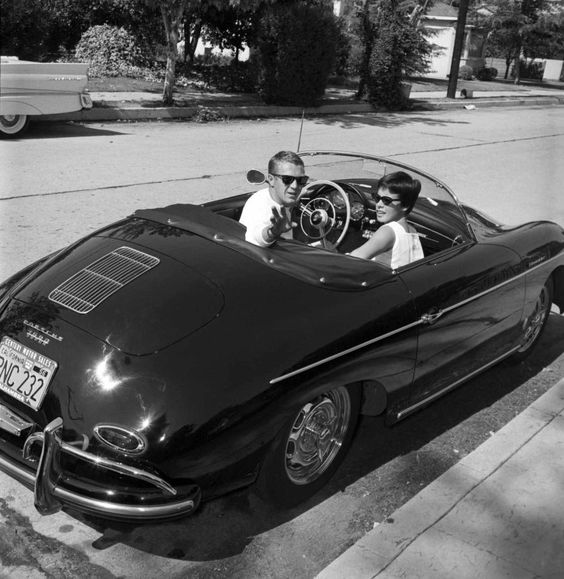
In the film, Delaney (McQueen) competes for the Porsche team at Le Mans, and in perhaps the movie’s most poignant moment, he is seen driving a Porsche 911S when he visits the scene of fatal racing accident that took place the year before. In this scene, the opening sequence of the film, McQueen drives around the city of Le Mans in the early hours of the morning, passing notable sites including the Cathédrale St. Julien. He sees the widow of a former Ferrari racing competitor (played by Elga Andersen) buying flowers at a flower stand, and then drives to the sight of the crash, in which he too was injured. The sequence, which contains no dialogue, cemented the Porsche 911 as one of cinema’s all-time classic cars.
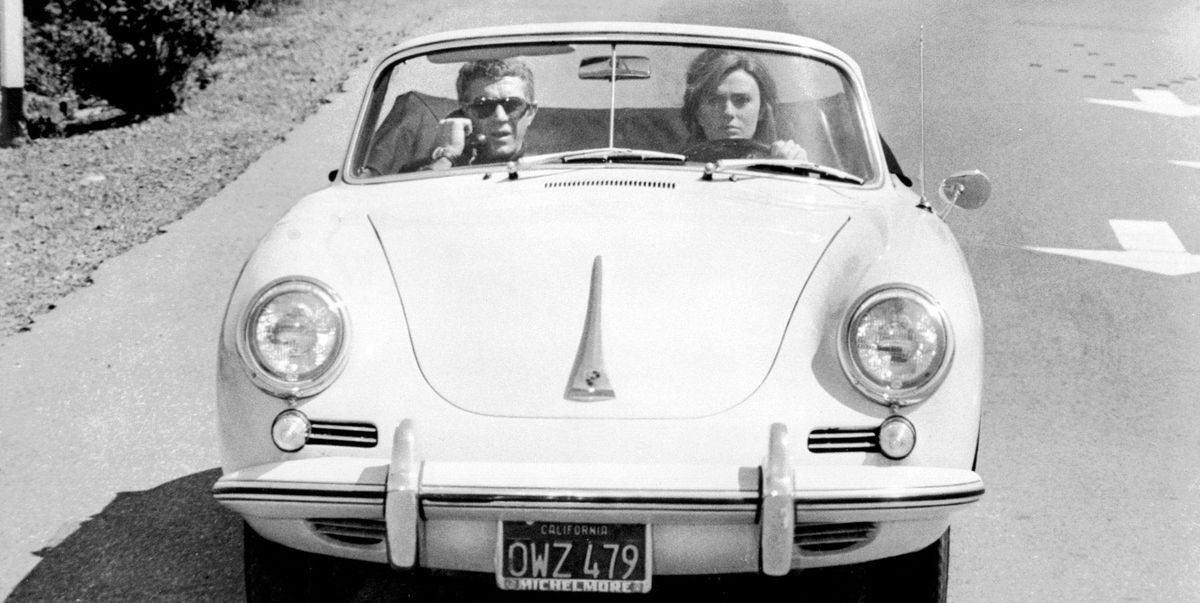
Indeed, after wrapping production in December 1970, McQueen was to keep the car and transfer it to the US. The 1971 Porsche 911T offered in the first sale in Paris is one of a group of Porsche 911 cars used during the production of Le Mans. It was bought by CBS Solar Film Studios, McQueen’s personal production company, directly from the garages of legendary Swiss racing driver Jo ‘Seppi’ Siffert.
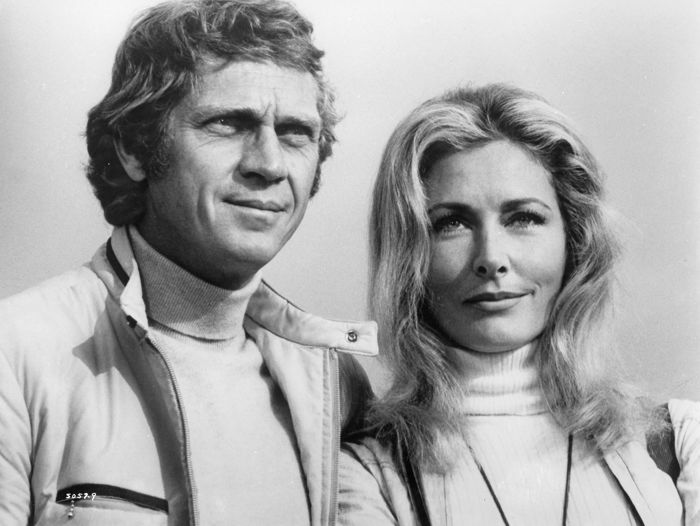
Twice a winner at Le Mans and the man who drove the race car of the main character after McQueen had been prohibited from doing so due to insurance reasons, Siffert not only provided the Porsche 908 and 917 seen on the race track, but also a fleet of street sports cars (including four Porsche 911 vehicles and one Porsche 914), which were used by the crew for the shoot.
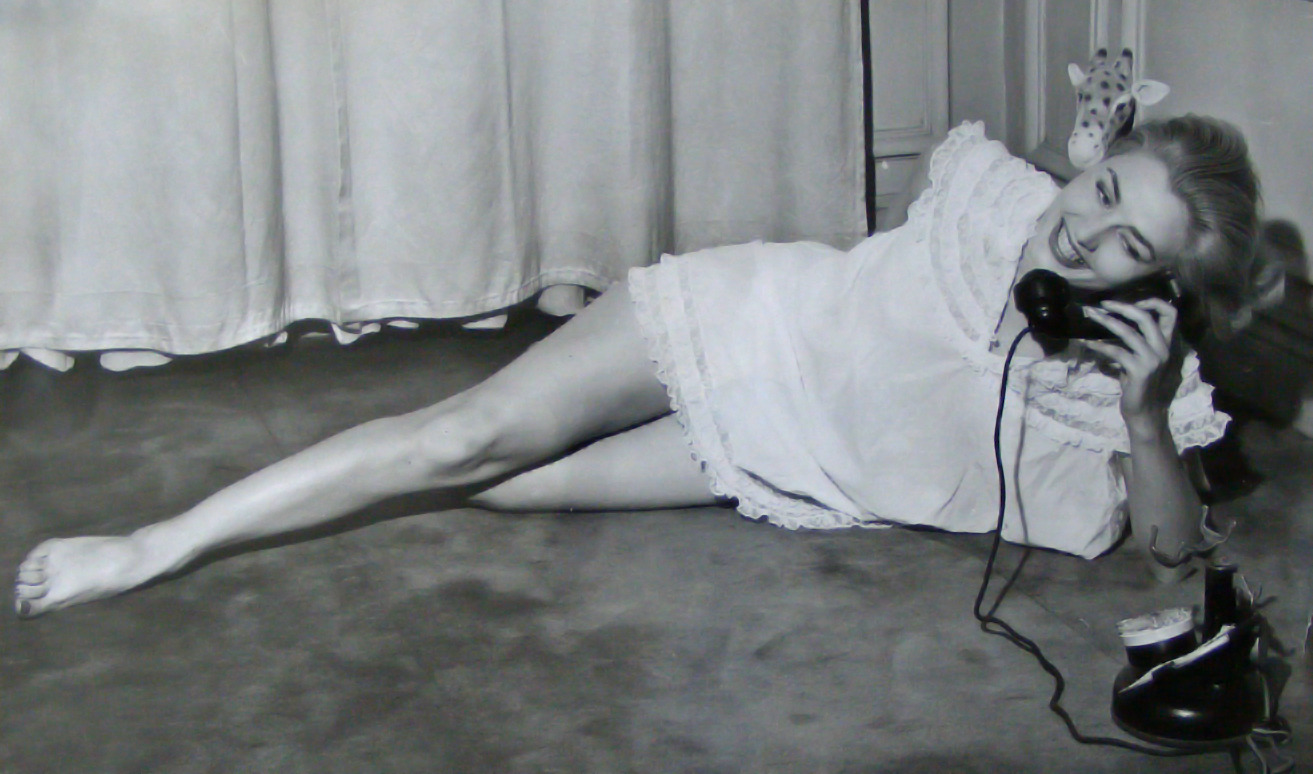
A feature-length documentary, “McQueen: the man & Le Mans” told the story of the making of “Le Mans”. Using behind the scenes footage, unused rushes from the original film, which were found under a sound-stage in February 2014, and private tape recordings of McQueen sharing his thoughts on the filmmaking process, the documentary charts the tortuous shoot and examines the power and passions of an actor who was the biggest star in Hollywood at the time.
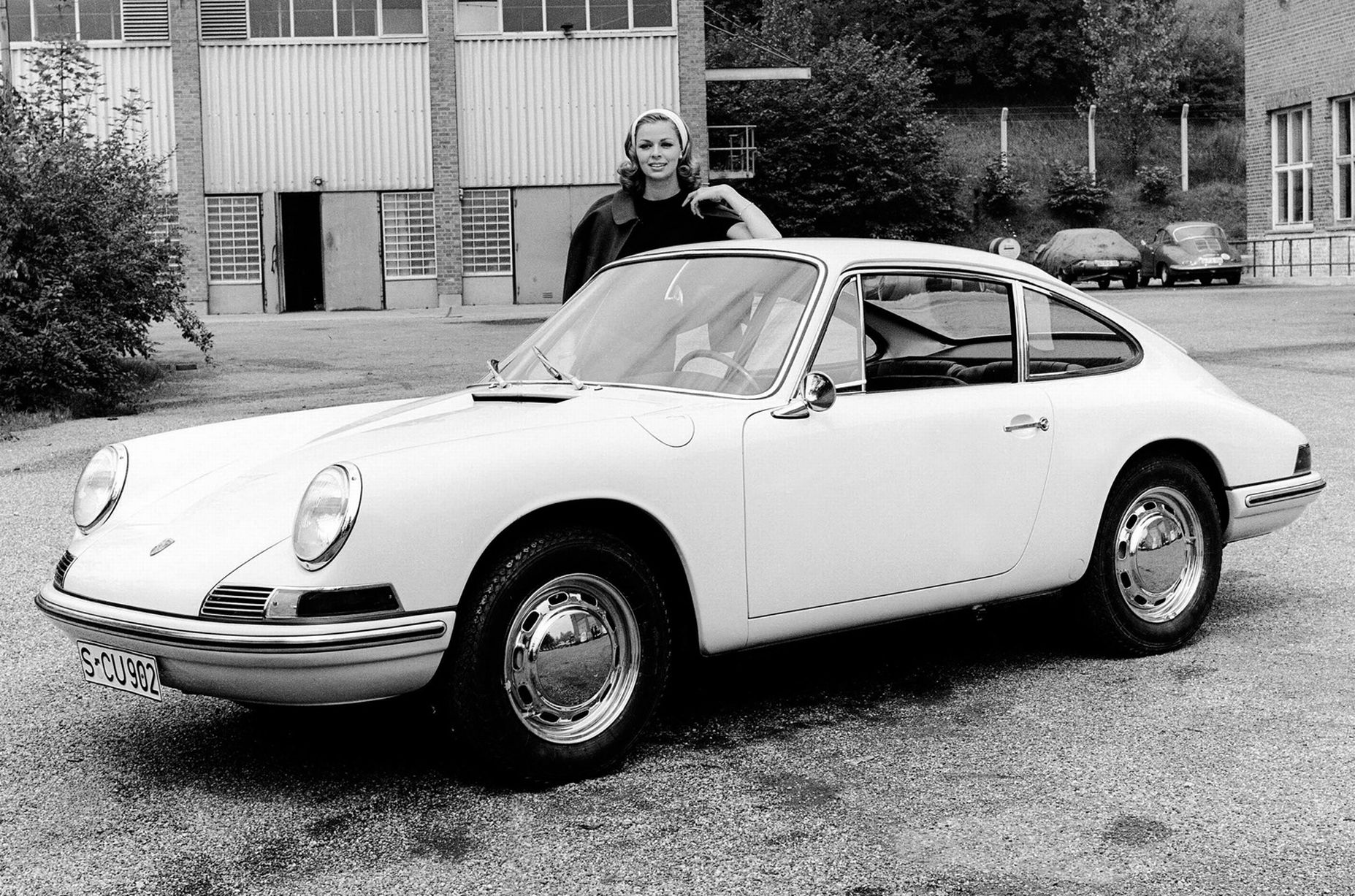
Before heading to Le Mans in the summer of 1970, McQueen, who had been racing competitively for a decade, had finished second at the 12 Hours of Sebring race with his driving partner Peter Revson. According to “The Hollywood Reporter’s” review of the documentary, at the huge temporary village set up by Solar in Le Mans, ‘many cars were brought in and McQueen was ensconced in a lavish chateau where he reportedly received multiple female visitors every day.’ ‘We had everything,’ confirms one participant [in the film], ‘except a script.’ A script, it seems, was not the only thing the film lacked.
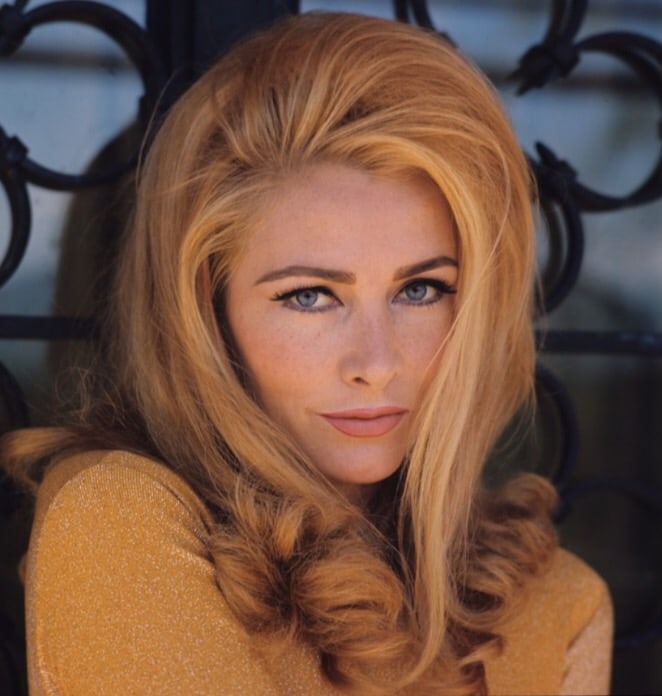
Diana Rigg, Maud Adams and the model Twiggy had all been considered to play McQueen’s love interest in “Le Mans” but production had already begun without a leading lady having been found. It was only when the blonde, blue-eyed Elga Andersen was flown to the “Le Mans” set that McQueen gave his seal of approval.
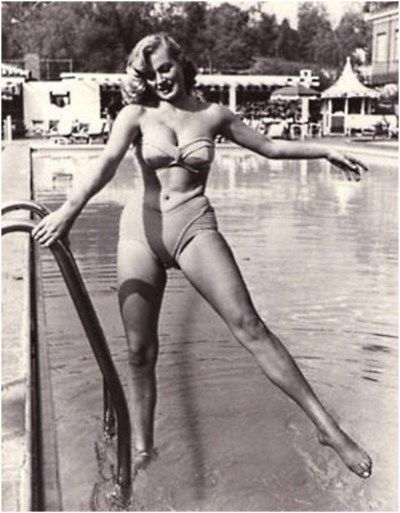
The German actress, who had starred in over a dozen French films of the 1950s and 60s, was living in Paris, in the former studio of Henri Matisse, at the time. McQueen and Elga Andersen had an affair in Le Mans, which was well documented by tabloid newspapers.
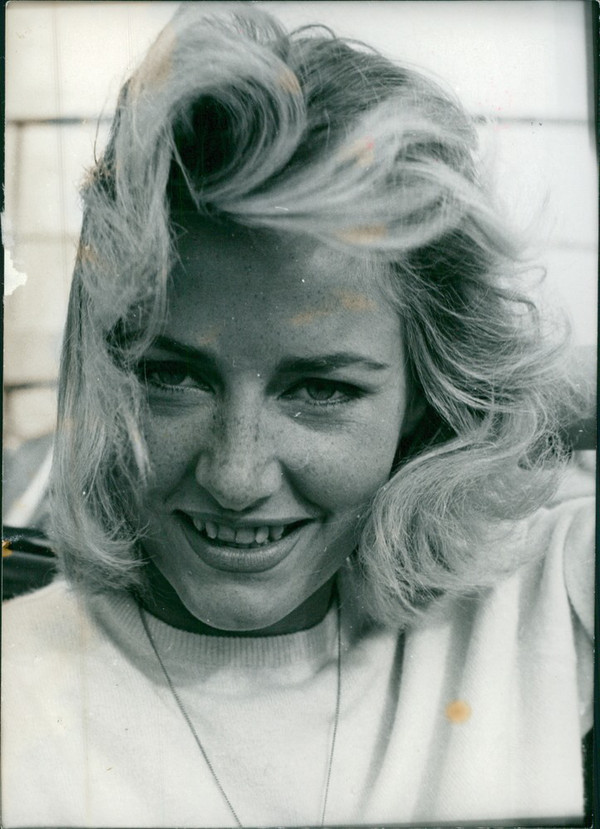
After returning from a summer break in filming, McQueen’s production company promised the Porsche 911 offered in the sale in Paris to the actress. The final invoice for the car, which also came from Siffert’s garage in Switzerland, dates this promise from CBS Solar to October 1970, which means Andersen was given a current 911T, with the specifications of the 1971 model year. Andersen would later marry the owner of the department store Saks 5th Avenue, Peter Gimpel.
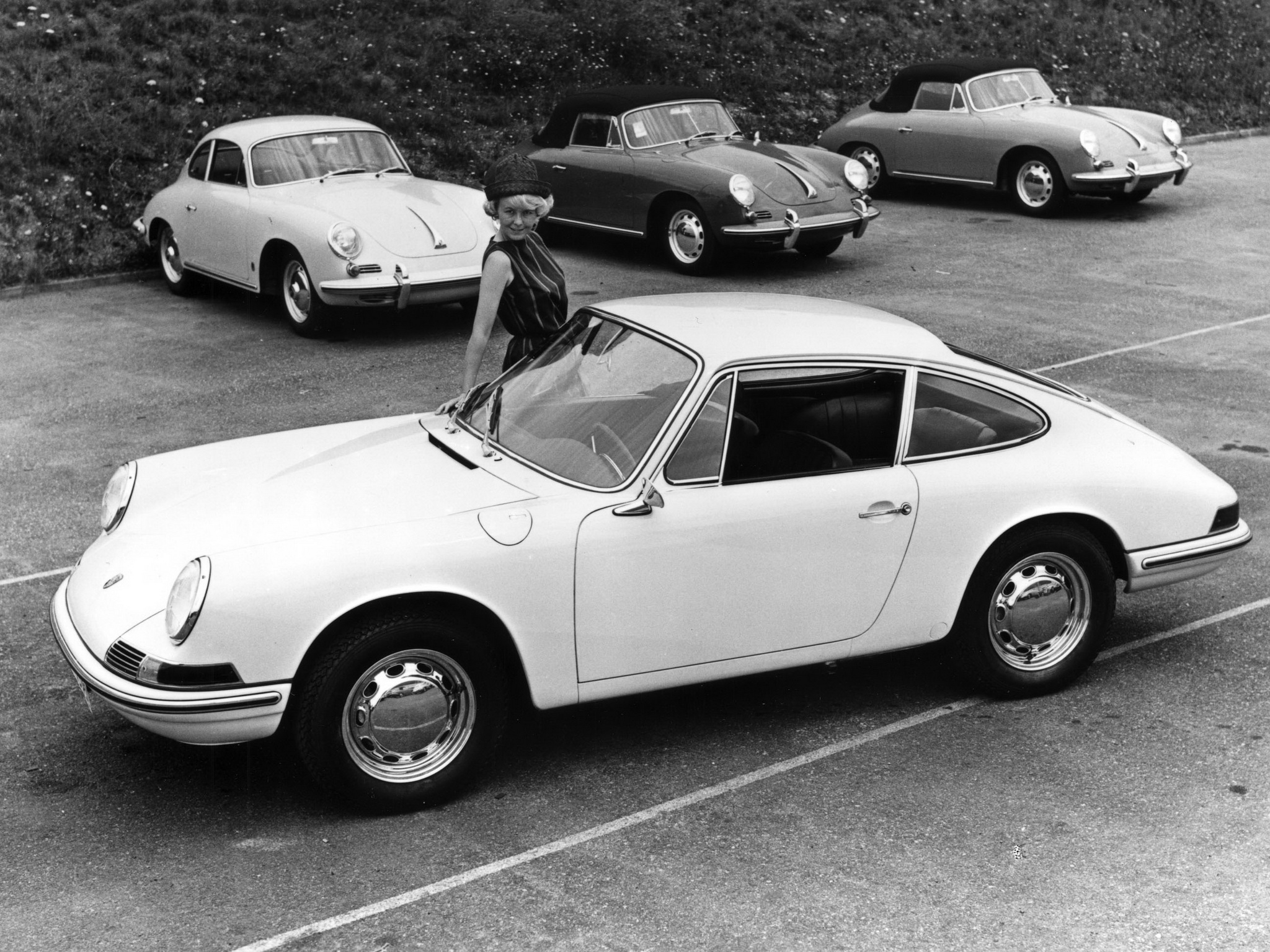
When she died in 1994, the car was left to her best friend, who subsequently sold it to the current owner. The vehicle has been serviced by the same Swiss garage since 2000, and comes accompanied by a scan of the original contract from Jo Siffert to Elga Andersen, and a copy of a photograph of Steve McQueen’s son, Chad, in front of the car.
The car, which shows 46,350 km on the clock, is in exquisite condition, with original body paint and minimal repairs at the front and front sides. All chrome parts and the rare full-leather interior are complete. The well maintained appearance is completed by the original Porsche emblem on the front hood.
Porsche 912: the car of "Sir Redford gentleman driver"
The Porsche 912 is a Porsche 911/1 powered by a Porsche 356 4-cylinder flatbed. It was launched as the entry-level Porsche 911 and produced from 1965 to 1969 and again in 1976 with the 912E model, and sold in the North American market alone, and produced close to 35,000 copies. It is also the Robert Redford’s car in the famous Tony Scot film "Spy Games" shot in 2002.
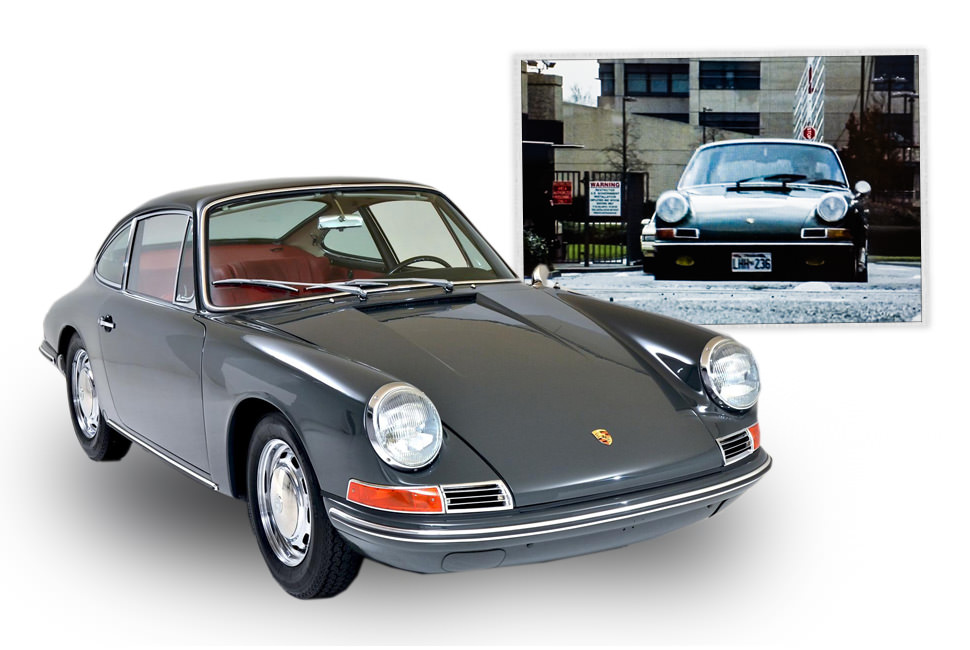
Its elegant and classic line then married perfectly with the style "gentleman driver" of Sir Robert Redford! A discoverable version called Targa appears in 1967; a very rare option called soft window made the 912 Targa a real cabriolet equipped with a roll bar.
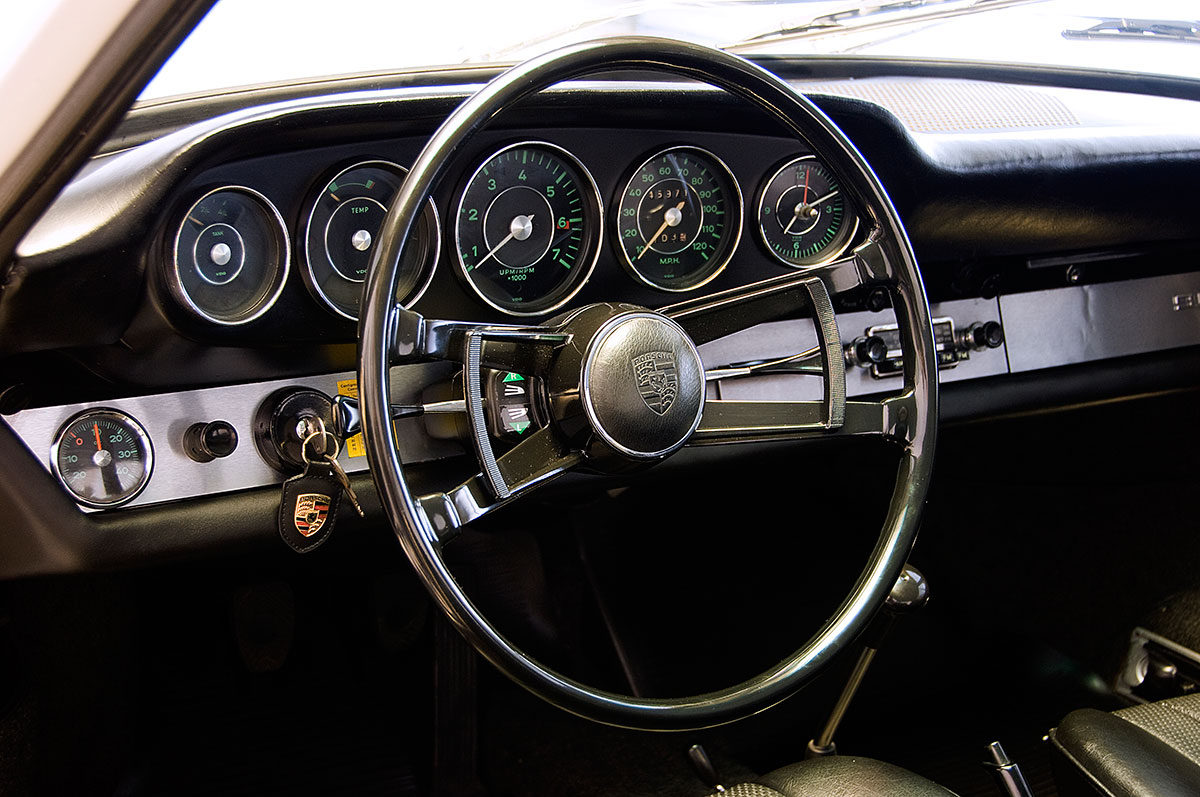
Quotes on Porsche
- “I couldn't find the sports car of my dreams, so I built it myself. ...” Ferdinand Porsche
- “Design must be functional, and functionality must be translated into visual aesthetics without any reliance on gimmicks that have to be explained. ...” Ferdinand Porsche
- “If one does not fail at times, then one has not challenged himself.” Ferdinand Porsche
- “A formally harmonious product needs no decoration; it should be elevated through pure form.” Ferdinand Porsche
- “Good design should be honest.” Ferdinand Porsche
- “A car should not only be functional, but should also have a beautiful appearance.” Ferry Porsche
- “There are a lot of impractical things about owning a Porsche. But they're all offset by the driving experience. It really is unique. Lamborghinis and Ferraris come close. And they are more powerful, but they don't handle like a Porsche.” Kevin O'Leary
- “To sit on a ranch horse that's been broken in, it's like getting in a Porsche.” Sam Shepard
- “I've always liked speed. I own a car that I shouldn't be talking about because I'm an environmentalist, but the 1955 Porsche Spyder 550 RS is the finest sports car ever made.” Robert Redford
- “I have this old '57 Porsche Speedster, and the way the door closes, I'll just sit there and listen to the sound of the latch going, 'cluh-CLICK-click.' That door! I live for that door. Whatever the opposite of planned obsolescence is, that's what I'm into.” Jerry Seinfeld
Rolls Royce
Rolls-Royce Limited was formed on 15 March 1906 and the Rolls-Royce brand has been in use since that day. Rolls-Royce was a British luxury car and later an aero engine manufacturing business established in 1904 by the partnership of Charles Rolls and Henry Royce.
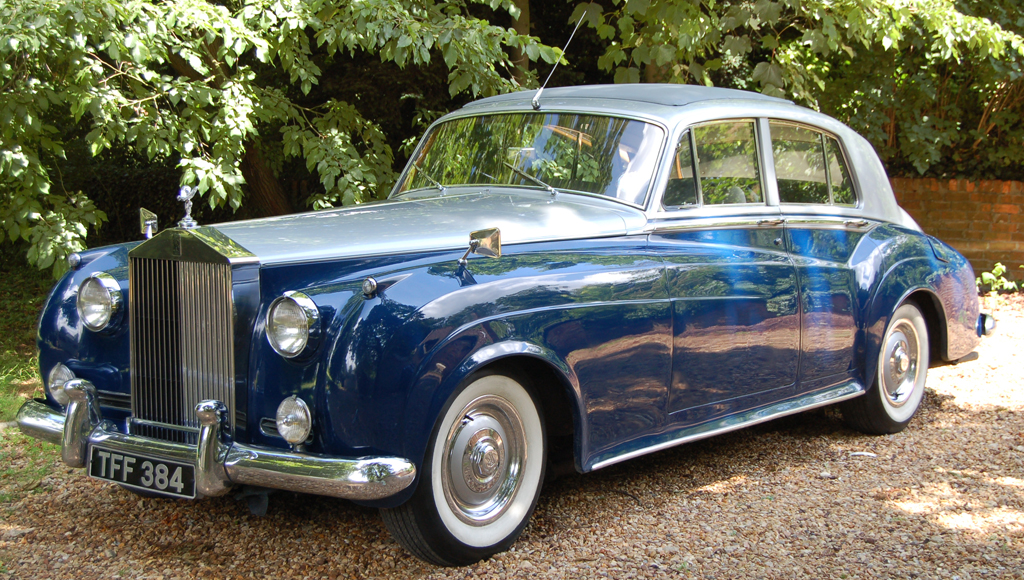
Building on Royce's reputation established with his cranes they quickly developed a reputation for superior engineering by manufacturing the "best car in the world", the maximum expression of luxury and refinement. Every Rolls Royce, “the car of kings”, was practically hand made. A car in which you could hear silence. Smooth handling and perfect finish.

One of the famous publicity demonstrations was placing an upright coin on a running engine to show the complete lack of vibration. If the coin stayed upright quality control gave the car the ok. If the coin fell over, the engine was completely reassembled.
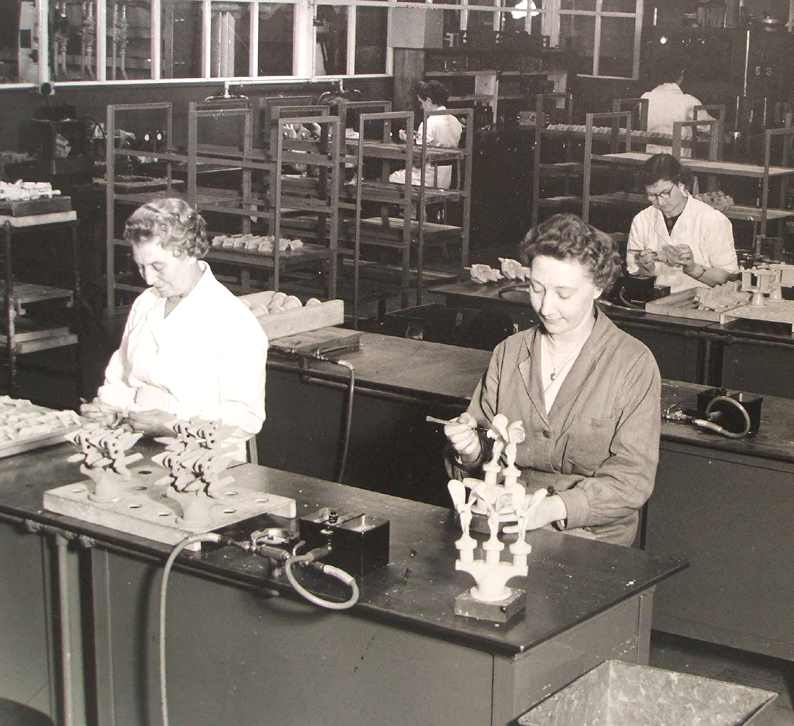
Furthermore, the wood panelling in all Rolls Royces was numbered, the factory kept the rest of the tree so that the same wood could be used in the case of accident. A favourite manoeuvre in the Rolls Royce school for chauffeurs was to put some champagne flutes on the backseat trays and drive as quickly as possible not spilling even one drop of champagne. If they did, they could kiss their diplomas goodbye.
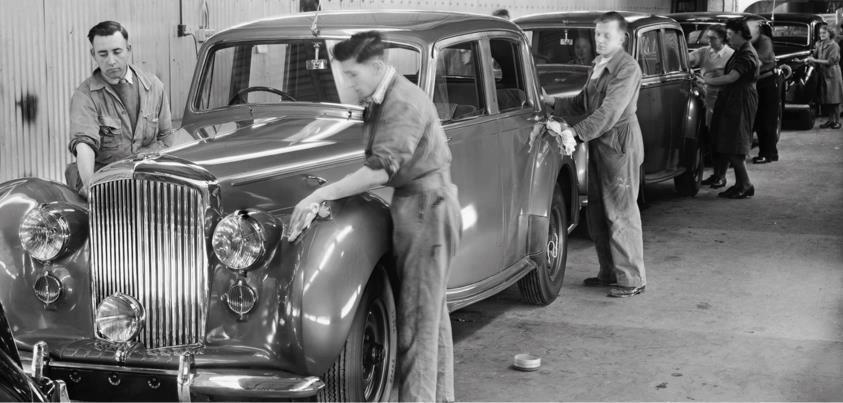
The upper part of radiator reproduces the Greek Parthenon.
In 1884 Henry Royce started an electrical and mechanical business, he made his first car, a two-cylinder Royce 10, in his Manchester factory in 1904, and at the start of the century he was already considered as one of the geniuses of the period. He was introduced to Charles Rolls at the Midland Hotel, Manchester on 4 May of that year.
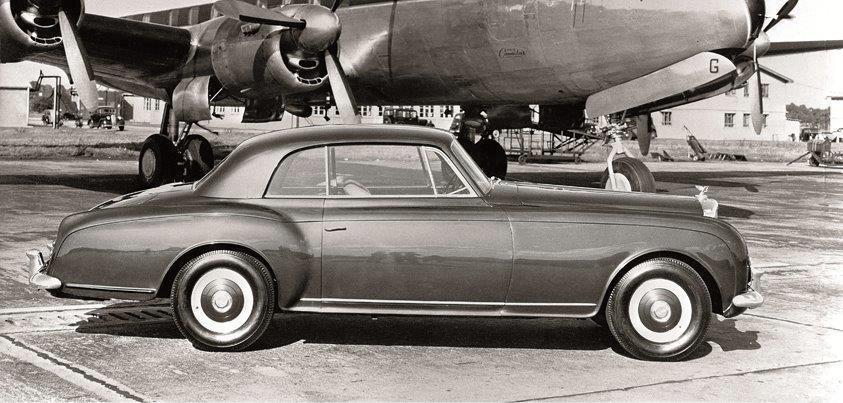
Rolls was an aristocrat, proprietor of an early motor car dealership, C.S. Rolls & Co. in Fulham, and was also the first Englishman to die piloting a plane. As well as a racing driver Rolls was in fact an aviator and a balloonist.
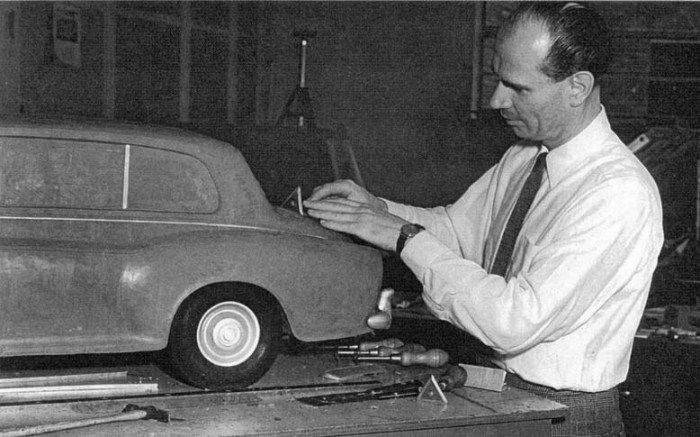
The first Rolls-Royce car, the 10 hp, was unveiled at the Paris Salon in December 1904. Rolls-Royce's was an exceptionally long term business. The standard saloons were: Silver Dawn produced in 1953, Silver Cloud in 1955, Silver Shadow in 1972. The names of the different models was yet another mystical decision. All the names were ethereal. Refined elegant details for an exclusive product.

The company commissioned artist Charles Sykes to design a mascot, a symbol to distinguish their cars. Sykes was inspired by a beautiful young secretary Eleonor Thornton, who he recreated as the Winged Victory of Samothrace. Thus the statue evoking the spirit of mythical beauty was born. It was Claude Johnson who christened it “The Spirit of Ecstasy” and the bonnet cap became a symbol of luxury and quality the world over. In the US the mascot was called “The Flying Lady”.
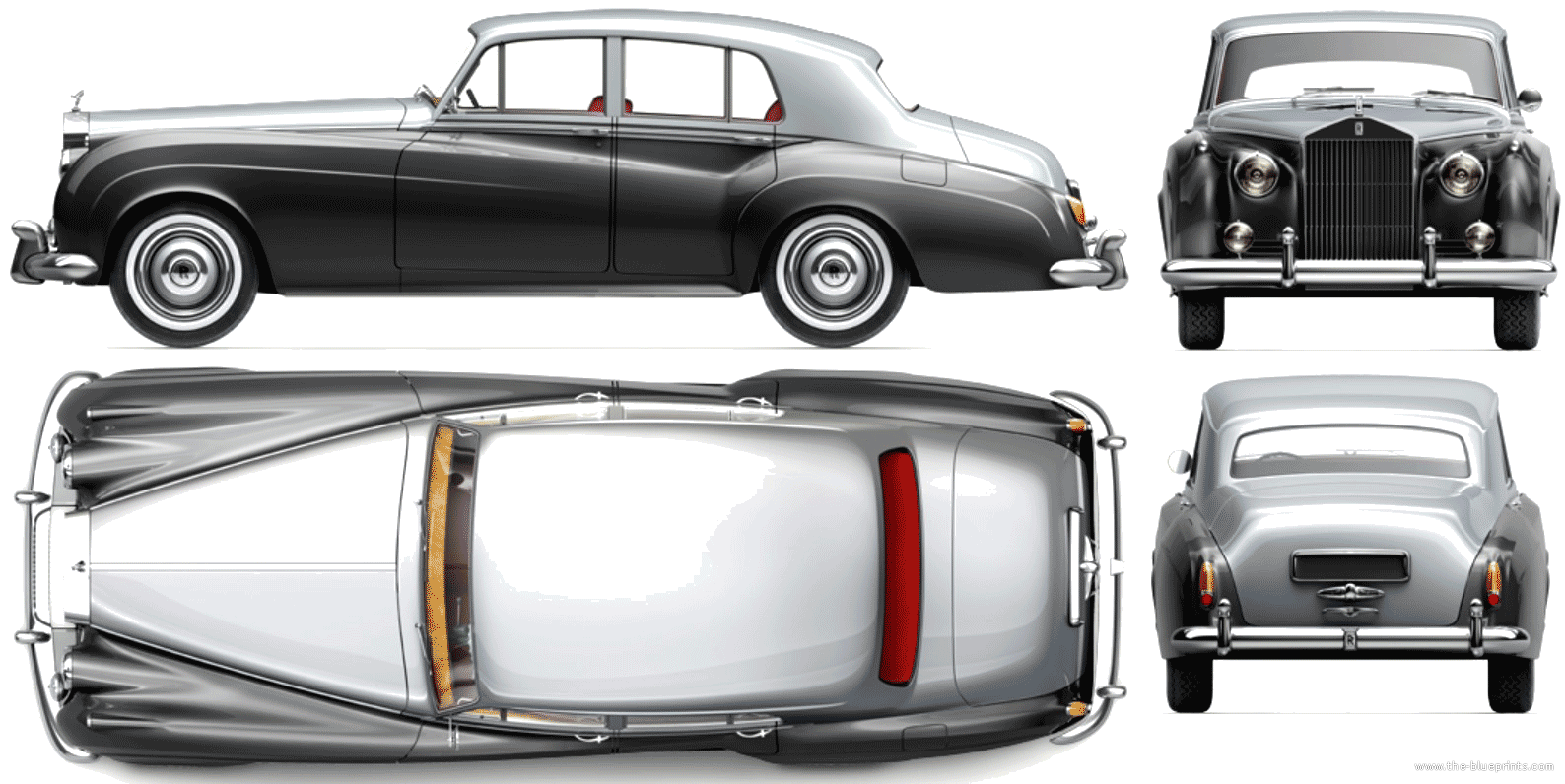
Kings, premiers, aristocrats, artists and show business stars were found on the long lists of Rolls Royce customers. Owning a Rolls Royce was being one up on fashion. Having a Rolls was like having a gown by Coco Chanel, a painting by Picasso or a castle in the Loire. All the famous people of last century have had them.

Rolls Royces were the most beautiful cars in the world, the name has become a legend. And its history is the story of an entire century. The Silver Cloud was produced by Rolls-Royce Limited from April 1955 to March 1966. It was the core model of the Rolls-Royce range during that period. The Silver Cloud replaced the Silver Dawn and was, in turn, replaced by the Silver Shadow. The J. P. Blatchley design was a major change from the pre-war models and the highly derivative Silver Dawn. As part of a range rationalisation the Bentley S1 is very similar, apart from its radiator grille.

The Silver Cloud (and the Bentley S1) burst on the scenes in 1955, after a five-year development run. Looking more modern than the old Silver Dawns and Wraiths, it still retained a separate chassis, just when the monocoque age was starting to boom. The engine was a 4.8-litre development of the B60 straight six, with old style overhead inlet/ side exhaust-valved cylinder heads.

However, it still mustered a healthy 175bhp and strong performance for its time, plus easy 100mph cruising. New fangled electrically controlled dampers were standard but, for the first year, power steering wasn’t even an option. Stopping this heavyweight were huge drum brakes all round. Price was £4796.
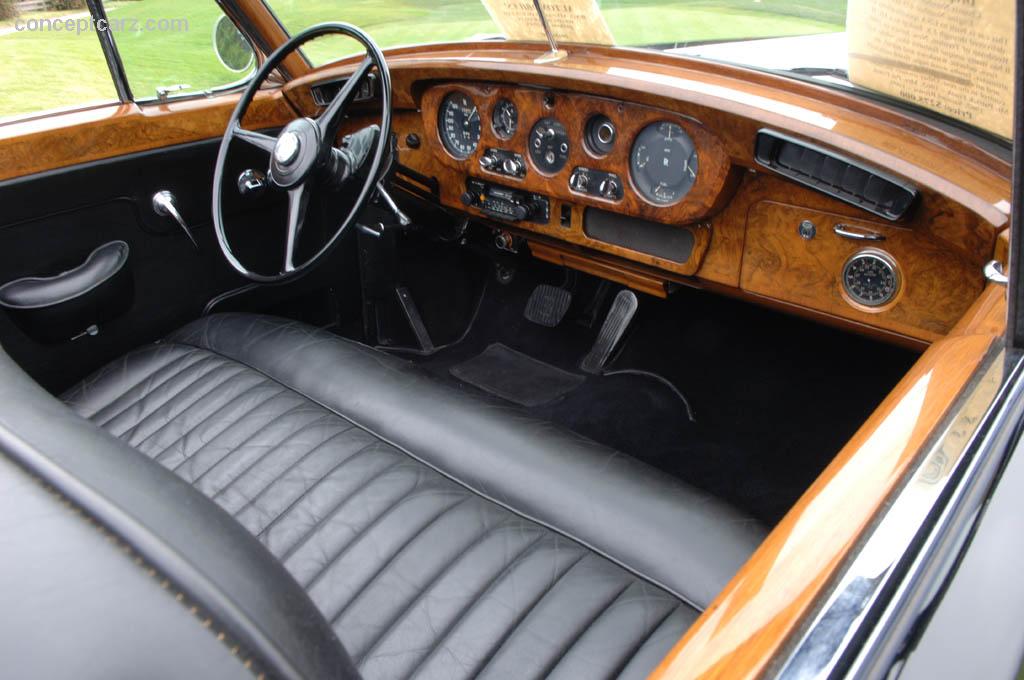
However, that was big money back in the mid 50s and a Silver Cloud shouted, rather than whispered, that you ‘had made it’ so to speak. A year after launch, power steering and air conditioning became worthy options while, for ’57, a host of body styles such as a two-door Continental, convertibles and a longer wheel-base saloon were offered.
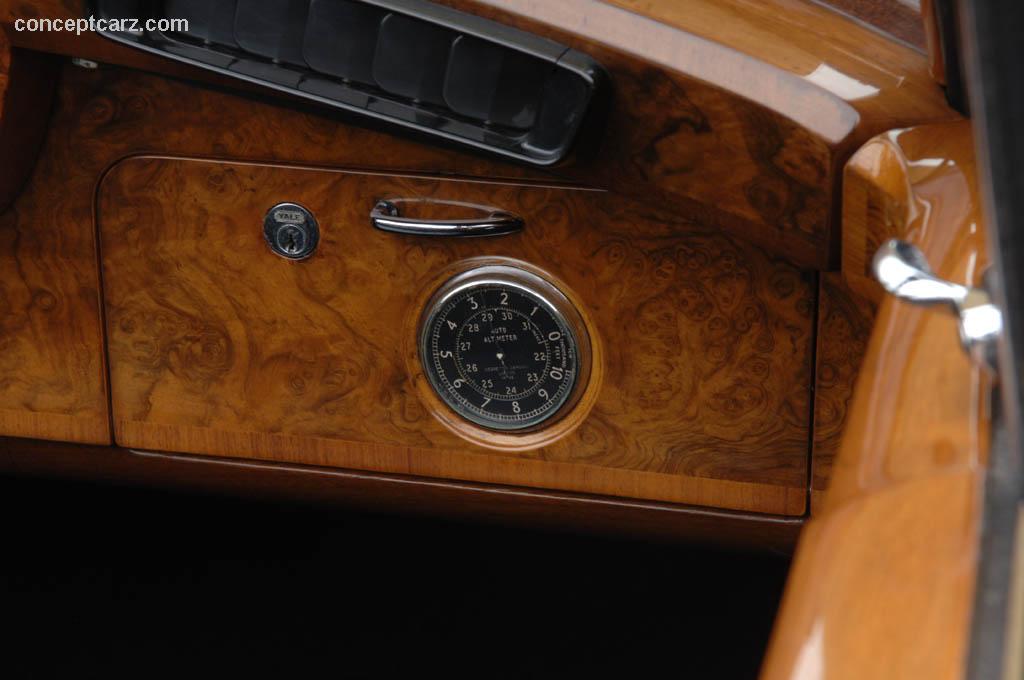
In 1959, the Silver Cloud II (and Bentley S2) were announced; the chief change being the fitting of 6230cc Rolls Royce V8, which became the mainstay up until the end of the Century. Kicking out up to 185bhp, it gave the car some much welcome zip, although some actually prefer the old six which was silky smooth and silent.
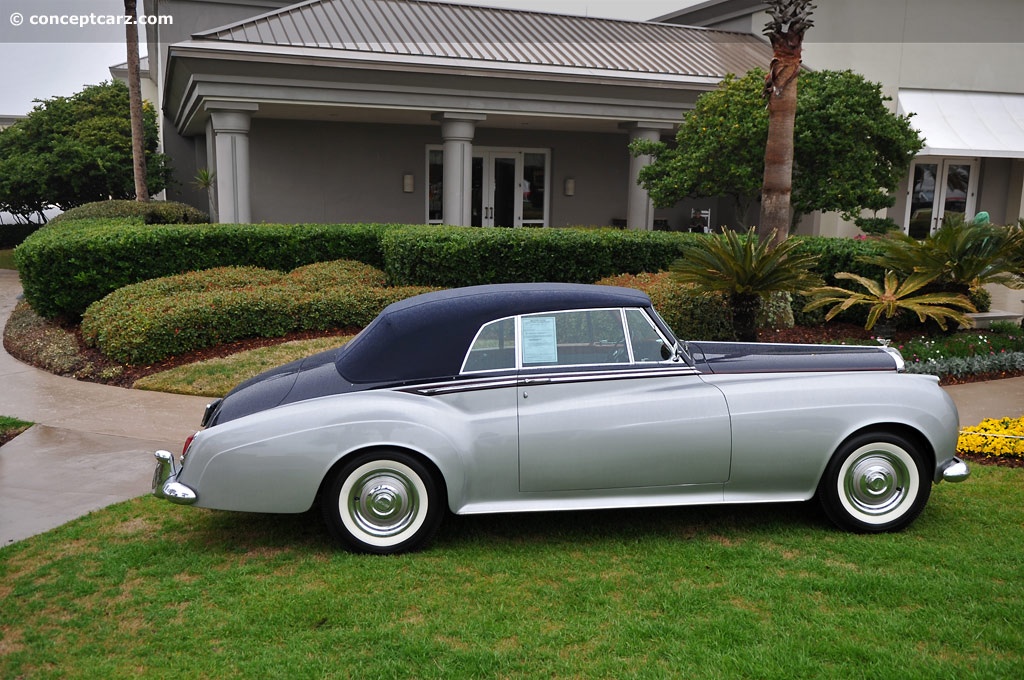
You can’t really compare the Cloud to the later Shadow because, in the end, it’s down to personal taste. The monocoque-constructed Shadow naturally feels far more modern on winding roads, although the ride isn’t appreciably superior. Yet, what could possibly be more unseemly than an old Rolls or Bentley being driven as if it was a GTI? No, at almost 18ft long and the weight of a lorry, the real pleasure piloting these old Crewe cruisers comes when you relax and take it easy at the wheel, watching a frantic world whizz by.
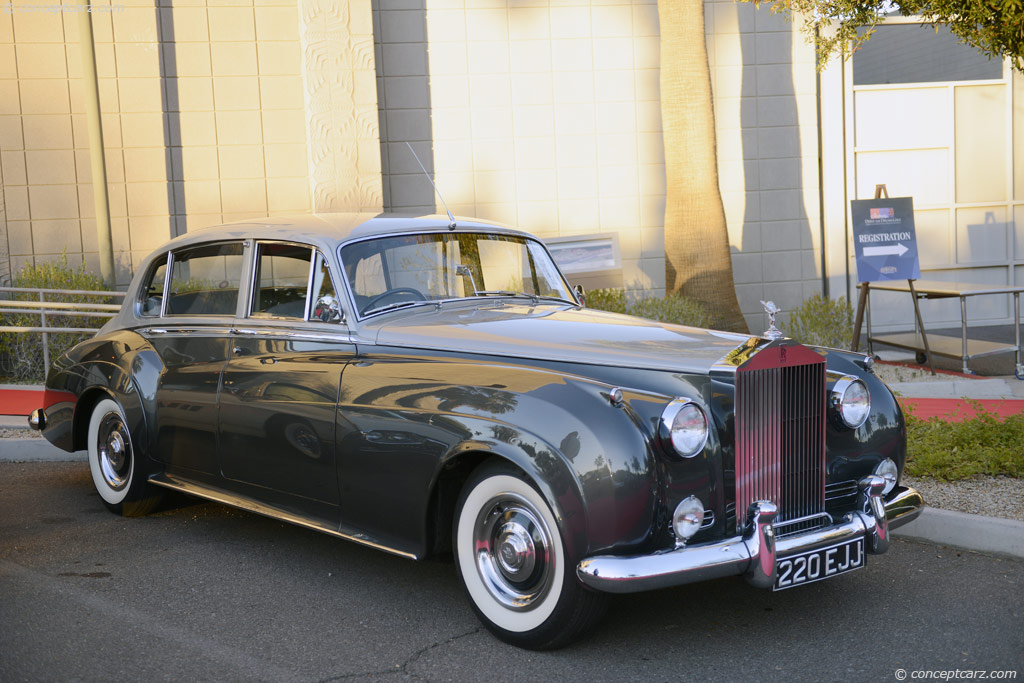
No wonder it was hailed as the best car in the world. Even today the car’s silence and smoothness remain quite remarkable, but the acceleration perhaps less so. Not that performance is that sedate. Stately is the description we’d sooner use; typical road tests back then clocked these heavyweights to 60mph in around 13 seconds, while a late V8 model can almost touch 120mph.
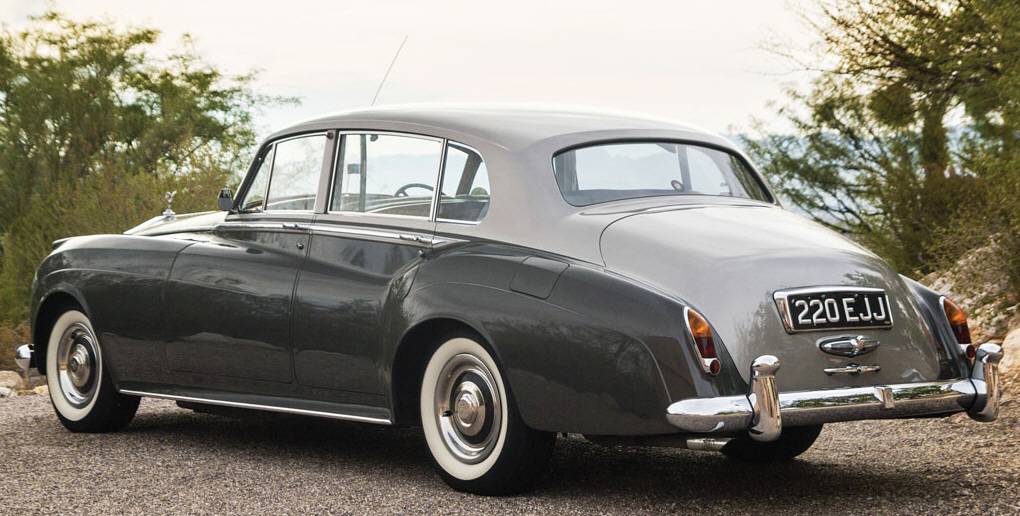
In all honesty, that’s not something that we’d like to try, considering that the chassis is setup for comfort not speed, plus the power steering is finger-light. But, on the other hand, don’t buy one without power steering as it becomes a truck to drive otherwise and spoils the drive. And, let’s not forget that, with fuel economy barely into double figures (12-14 mpg was the norm when new), a more genteel pace is kinder on the pocket as well as the nerves! Talking of nerves, the Cloud relied on drum brakes only and since it weighed up to 2125 kg, that’s a lot of car to stop quickly, although a well serviced set up copes seem to cope okay.

As a classic cruiser of more than half a century standing, there’s little to touch Crewe’s finest. Comfort is supreme and there’s plenty of space in the back, especially in the longer wheel-base versions. Opt for a bench seat car and there’s ample room for six to savour the experience, too.
The Silver Cloud II was introduced in 1959. It was little changed externally, but was given a new Rolls-Royce developed 6.2 L V8 engine, which pushed the weight to 2.11 tonnes. Performance was greatly improved and top speed was raised to 183 km/h (114 mph), but the main improvements were in acceleration and torque. Power steering became standard. Electrically operated windows were now available as an option.
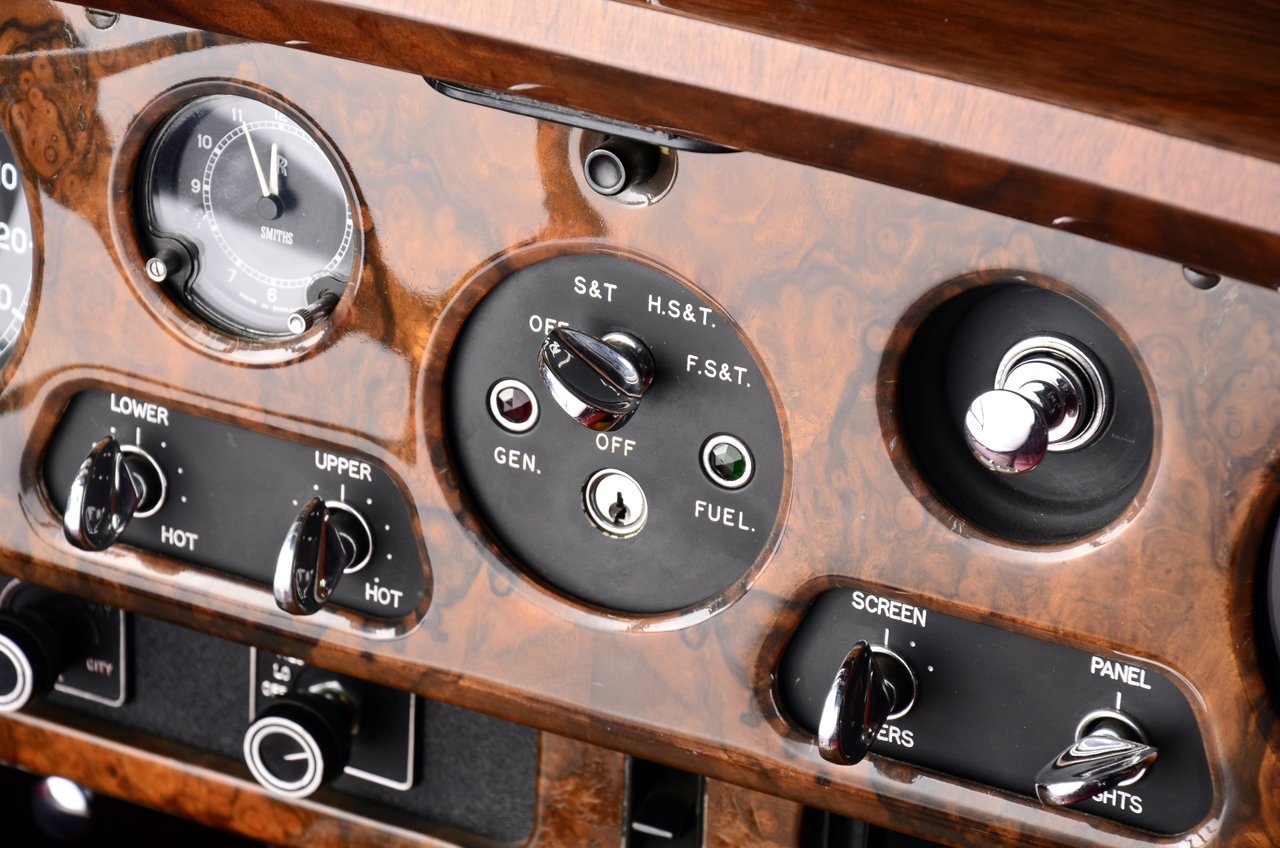
Although the improved performance of the new car was welcomed, commentators of the time noted that the V8-engined Silver Cloud II was neither as quiet nor as smooth as the straight-six-cylinder-engined Silver Cloud I, despite the new engine's hydraulic tappet operation.
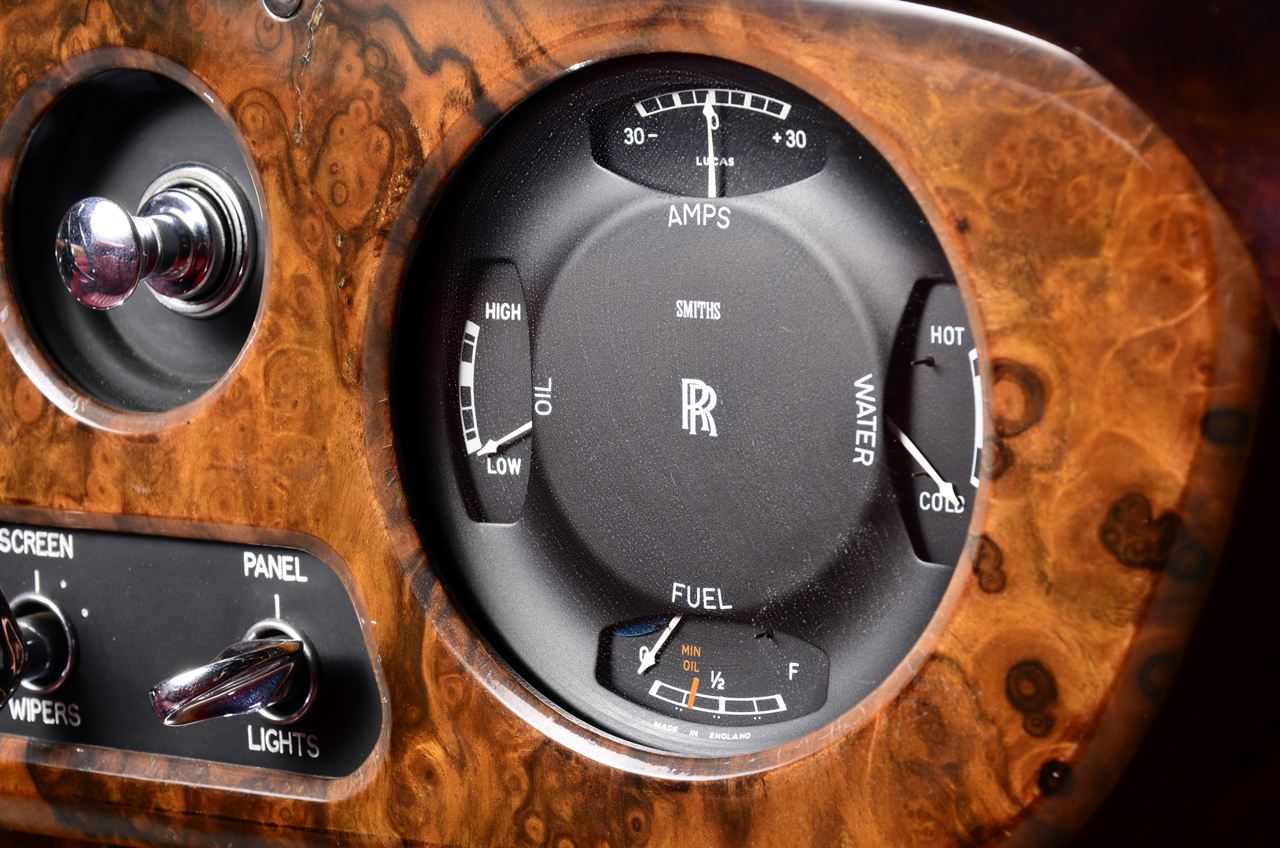
The new wet-linered V8 was also a little cramped in an engine bay intended originally for a narrower unit: in order to change the spark plugs it was necessary to remove the front wheel on the car's right side. There seems to have been a problem with crankshaft breakages in the earlier V8s: this was blamed on lack of lubrication to the bearings. The basic architecture of the Silver Cloud II did not change between 1959 and 1963, but there were numerous minor changes implemented, notable among them a succession of improvements to the ventilation system. Interior changes in 1961 included the adoption of blue instrument lighting, the introduction of a combined indicator / headlamp flasher switch and of a handbrake warning light.
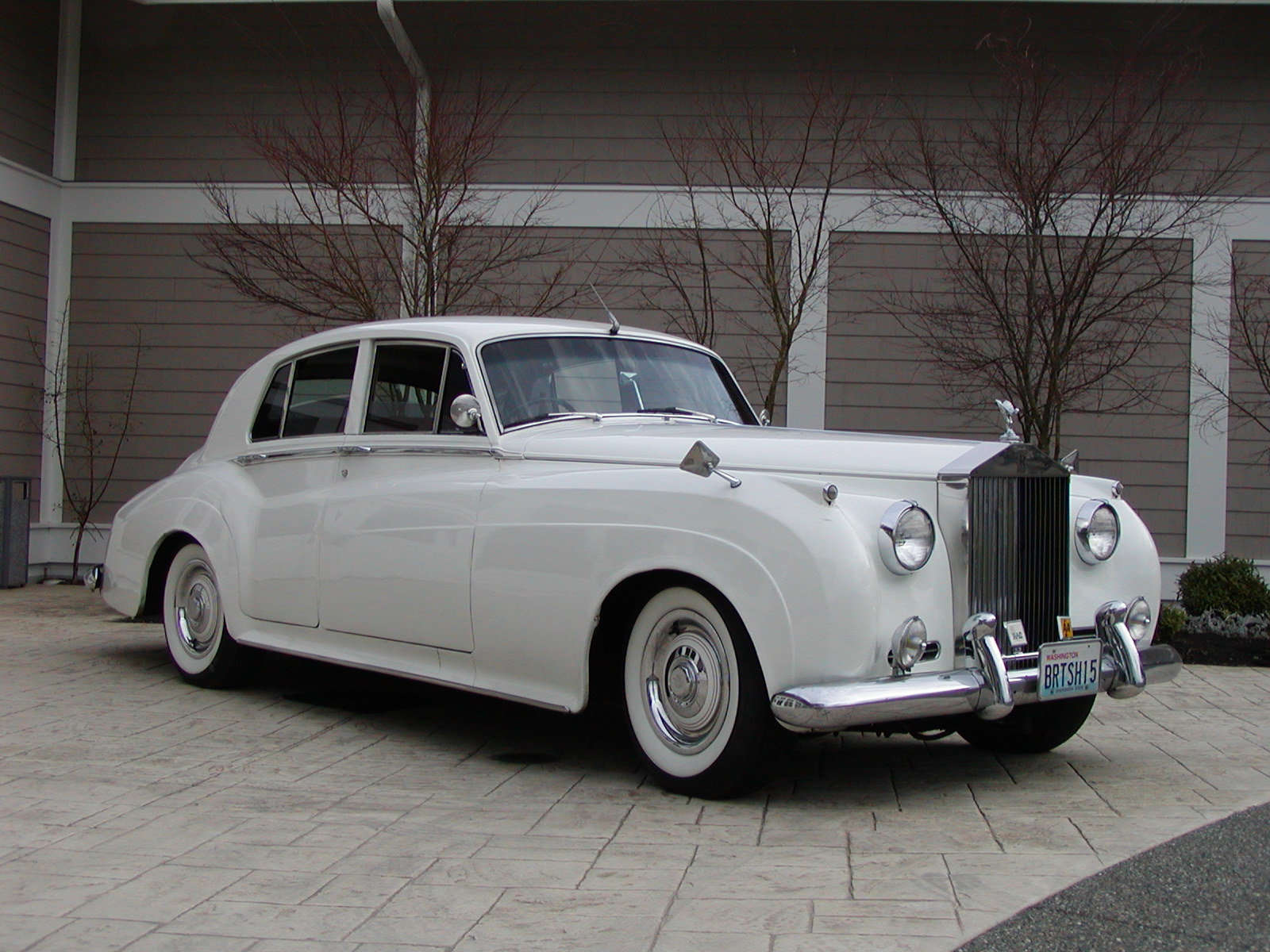
A remodelled rear light assembly was introduced in May 1962 and a change to single sealed-beam headlamps was made in August 1962. The “Motor” magazine tested a Series II in 1960. They recorded a top speed of 104.7 mph (168.5 km/h), acceleration from 0-60 mph (97 km/h) in 10.9 seconds and a fuel consumption of 13 miles per imperial gallon (22 L/100 km; 11 mpg‑US). The test car cost £6092 including taxes.
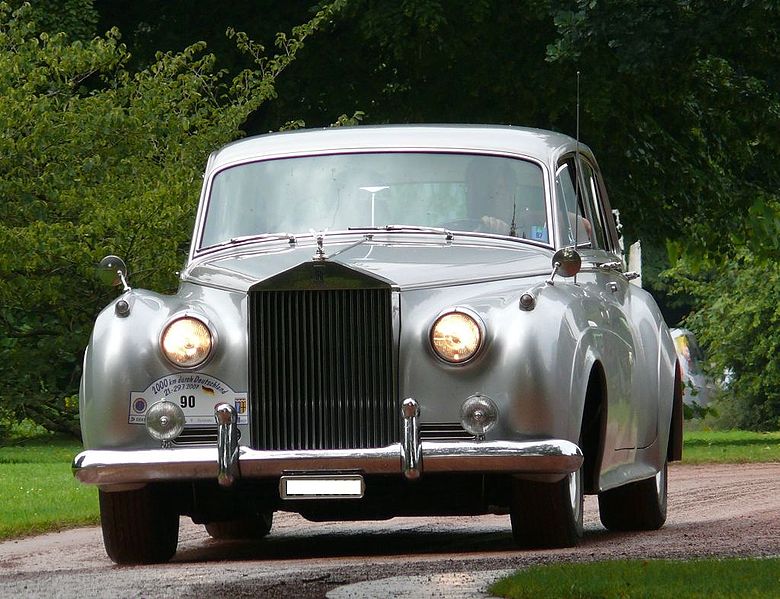
Silver Cloud II saloon. Silver Cloud II drophead coupé. For sheer, imposing elegance, a Roll-Royce Silver Cloud (or equivalent Bentley) takes some beating. But it also takes some buying too. For many enthusiasts, the Silver Cloud represents the end of an era – the last of the ‘mainstream’ traditionally-styled Rolls-Royces constructed on a separate chassis.
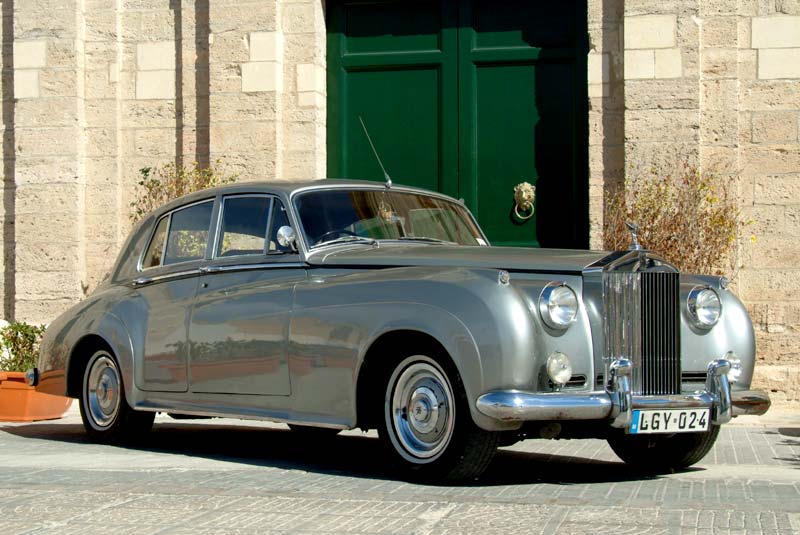
The following Silver Shadow may be the most accessible of the marque – practically a Rolls-Royce for the people – but the Cloud and its almost identical Bentley S counterpart retain an exclusivity and dignity that links the type more with what came before than what succeeded it. This is despite it adopting the V8 engine that would go on to power future generations of Rolls-Royces through to 1998 and is still used by Bentleys today. In looks, the Silver Cloud’s flowing lines and palatial presence are distinctively old school.

Launched in 1955, it was somewhat old-fashioned even for the mid-1950s, when many manufacturers were turning to monocoque construction. But Rolls-Royce went with what it knew best and retained a separate chassis. This meant that the standard pressed steel body could be used or a number of coachbuilt creations bolted on instead.
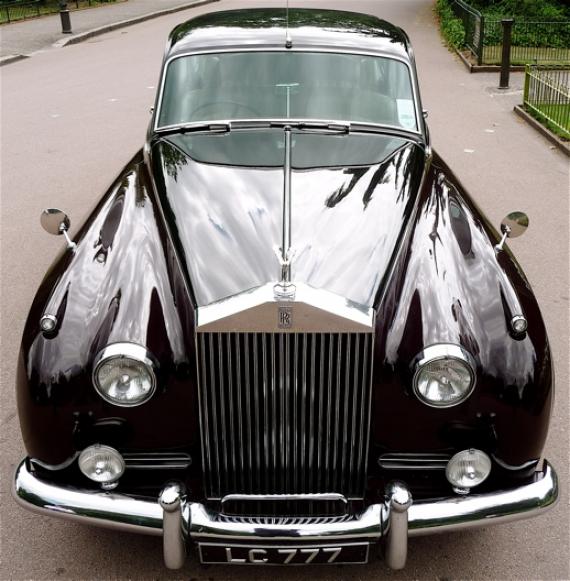
The first cars had 4.9-litre six-cylinder engines, but in 1959, Rolls-Royce’s all-aluminium 6.25-litre V8 unit was dropped in, creating the smoothly magnificent Cloud II. The real revelation of the new engine was not its power but how quiet it was – V8s are generally quite raucous by nature, but when enveloped in the Cloud’s expansive body, occupants could still hear the clock ticking at 60mph, a characteristic the company enthusiastically trumped about what it still called ‘The best car in the world’.
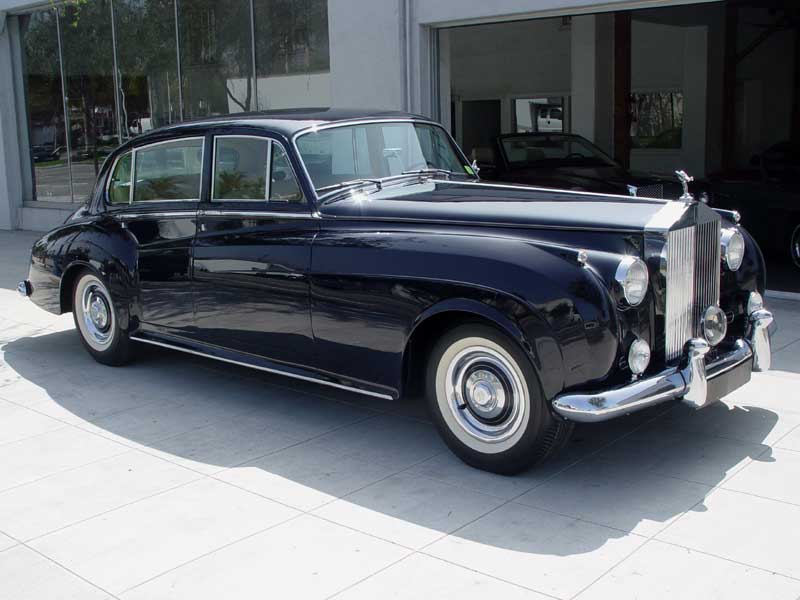
A hint of radical changes just around the corner was revealed with the Cloud III of 1962, with its double headlamp units. These caused quite some controversy at a time when the 1960s had yet to completely start swinging, yet were undoubtedly more effective than the single lamps they replaced. They also managed to subtly update the looks without the need for major body surgery.
And that’s how the Cloud and S stayed up until the end of production in 1965, when the Shadow came along and completely changed the game. In doing so, it guaranteed the Cloud a selectness that has only grown stronger over five decades.
Few cars provide as much old school class and status as the Rolls-Royce Silver Cloud. Some regard the Silver Cloud as the last of the genuine Rolls-Royces. Built how proper cars used to be made, on a separate chassis, it was the curtain call for old-school Rollers and Bentleys, where mere costs took a sumptuous back seat to priceless craftsmanship. Today, after far too long hidden in the shadows of the Silver Shadow, the more genteel, and some would argue far more cultured, Silver Cloud range is emerging as the classier, wiser buy of the prestige pair.
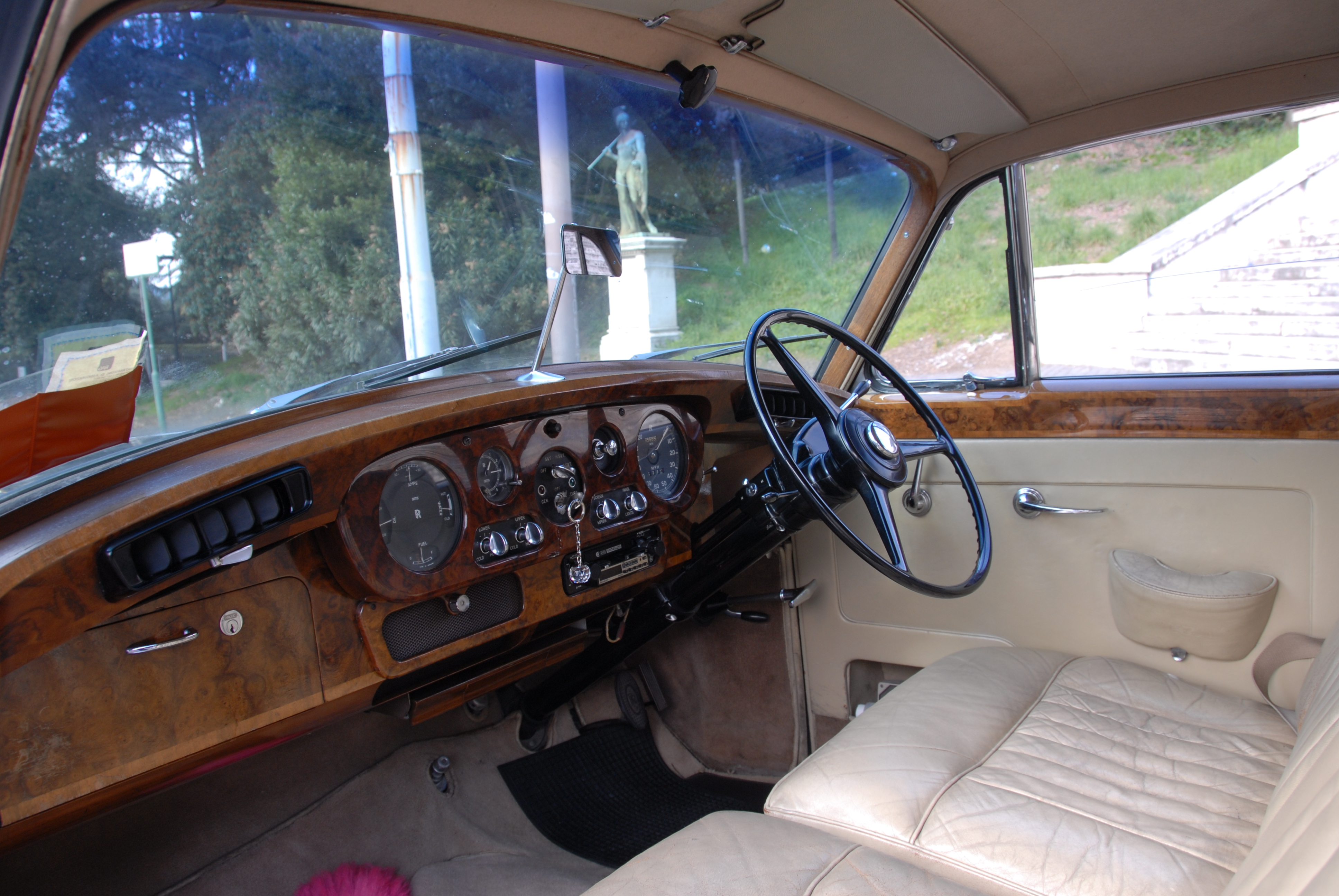 |
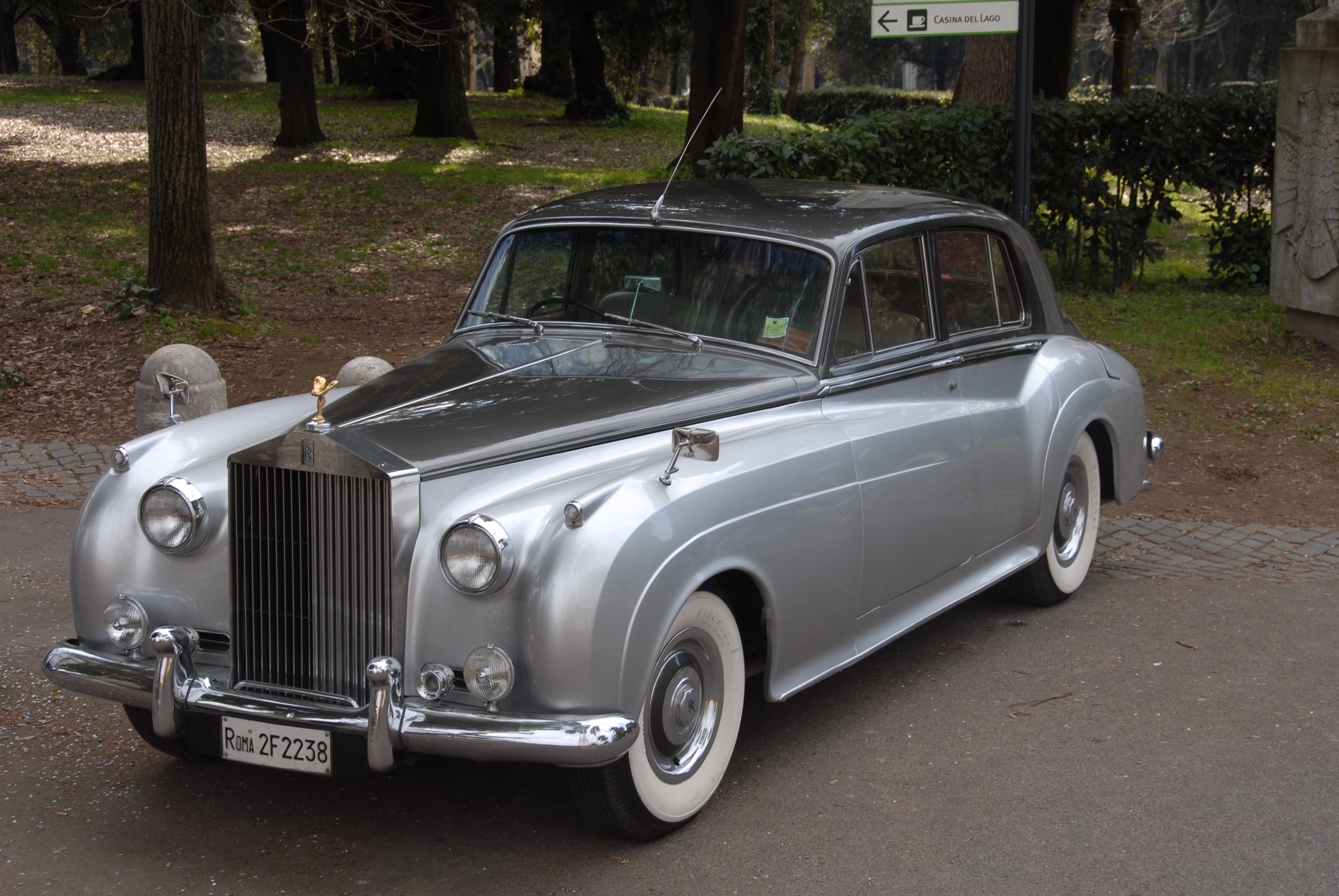 |
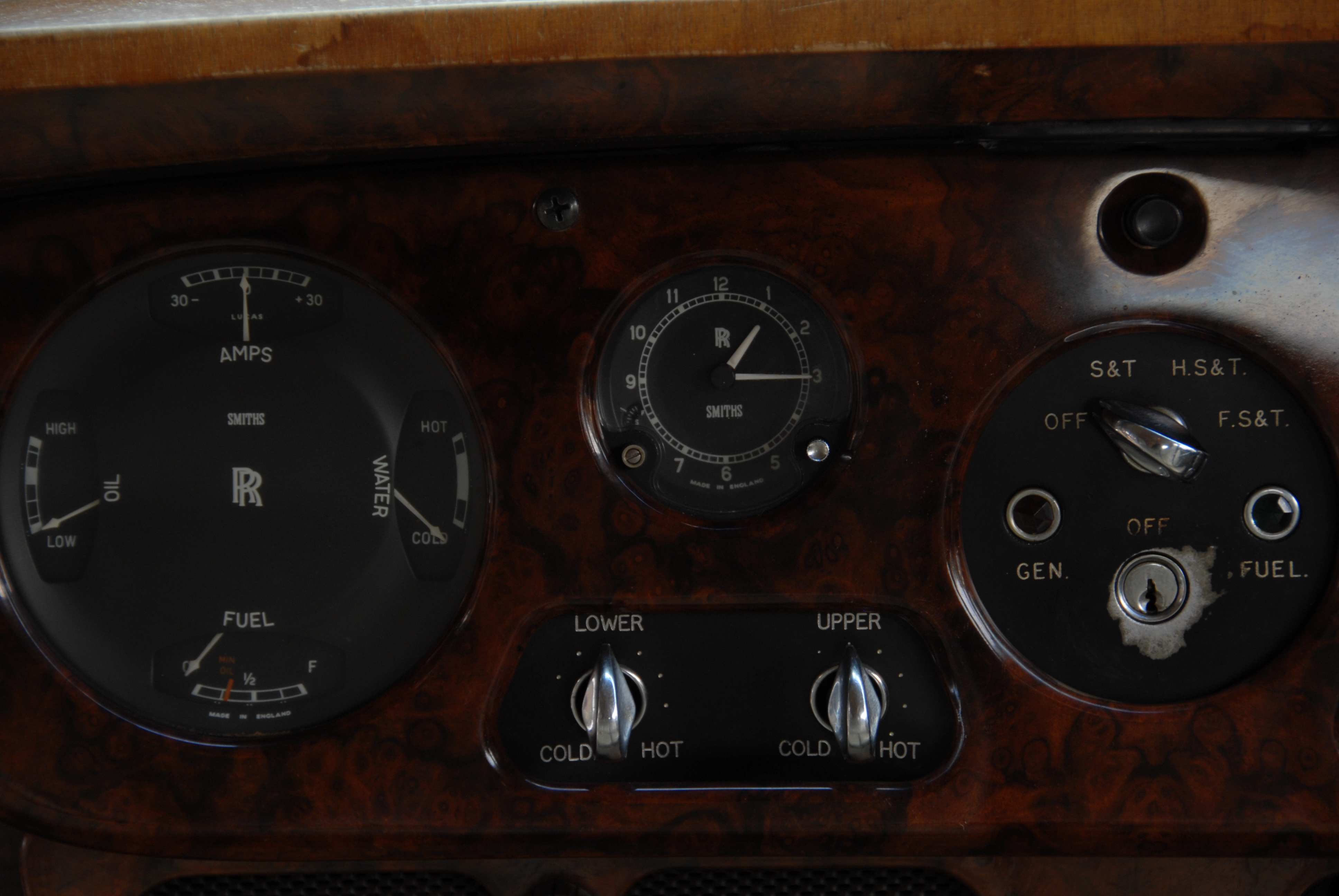 |
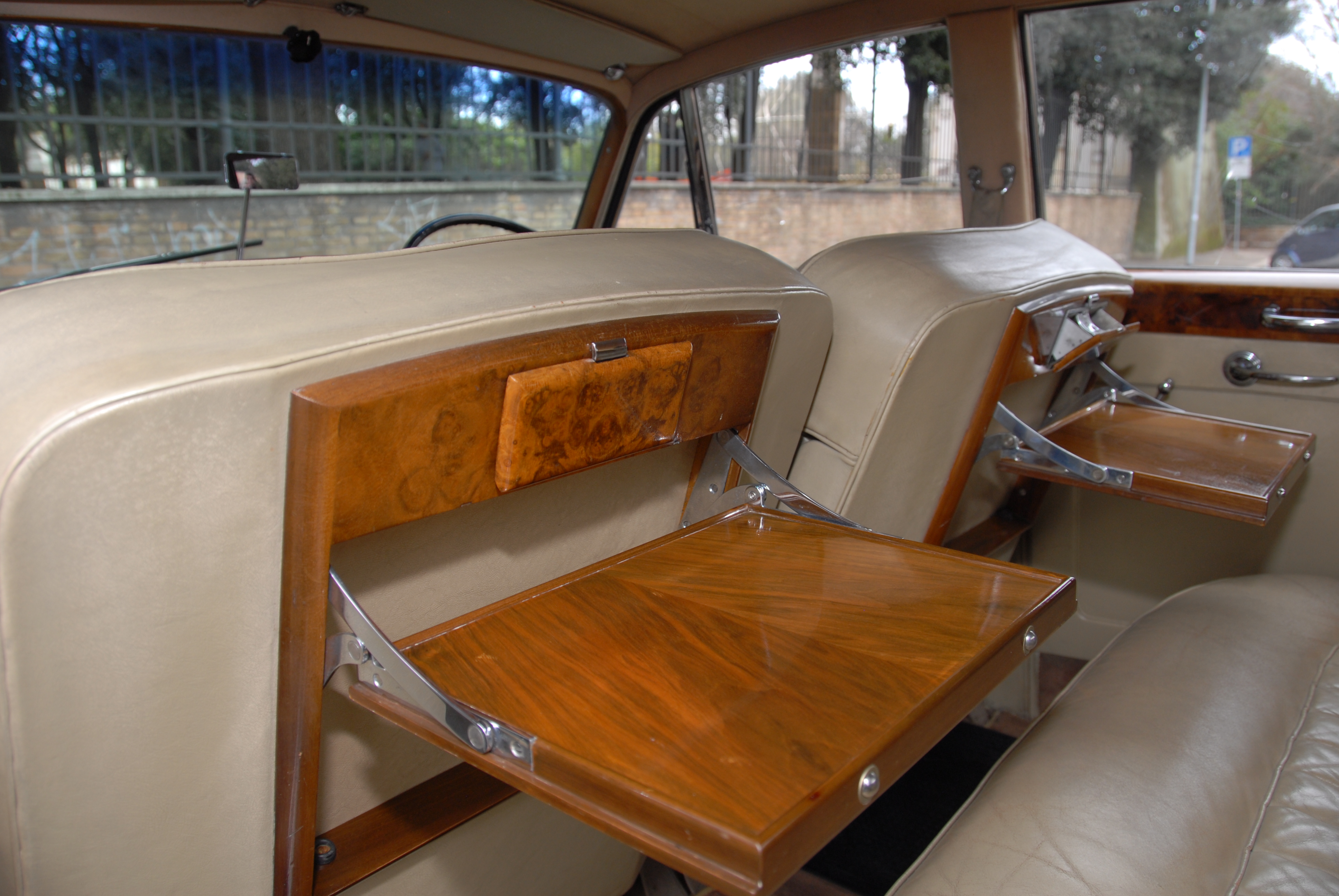 |
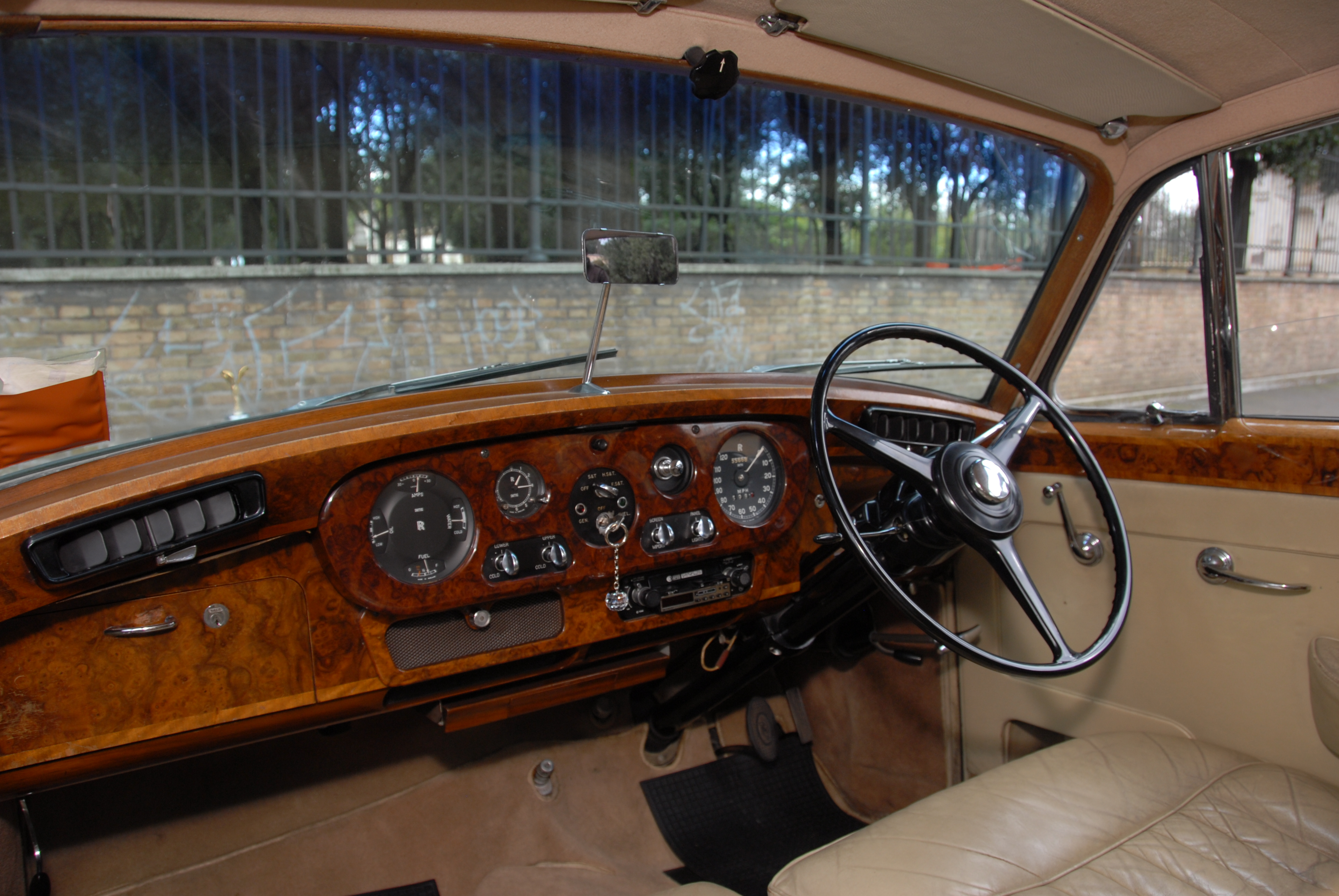 |
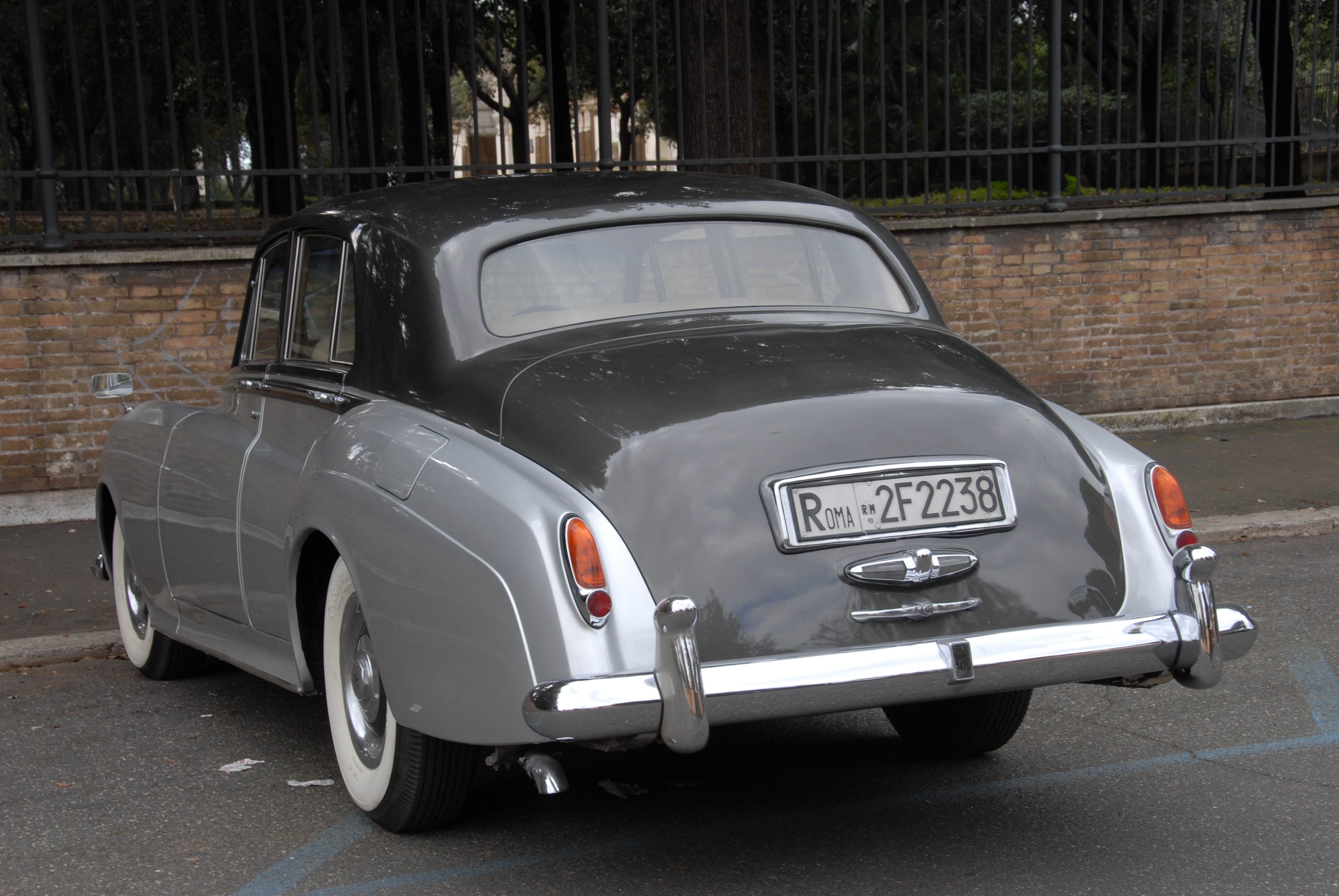 |
Quotes on Rolls-Royce
- “Let’s make the perfect car. No matter the cost, and sell it to people who appreciate quality and who can pay its price.” Henry Royce.
- It’s said that one day Royce was overtaken by another vehicle as he was returning from a trip to England (he was leaving in the French Riviera). He leapt to his feet only to sit down again with a sigh. “Everything’s ok”, he said. “It’s one of ours.”
- “Rolls rarely quoted power outputs, reckoning that was far too vulgar and working class, describing horsepower of its engines as “adequate” or “sufficient.””
- “The six cylinder Rolls Royce isn’t one of the best cars in the world, … but the best car in the world.” Claude Johnson, company chairman
- “There’s a story about a Rolls Royce breaking down … and its owner calling the factory. The company despatched a mechanic immediately. He repaired the car and … when the owner asked for the bill … he was told that Rolls Royces never break down.“ Sir Ralph Robins, former Rolls Royce president.
- “The loudest noise you’ll ever here inside a Rolls Royce … will be the ticking of your watch” is the message of a US publicity campaign.
- Lawrence of Arabia stated that “a Rolls Royce in the desert is like a ruby.”
- A reporter of the period wrote: “when driving a Rolls Royce, … you get the feeling you are floating over the roads.”
- “Few vehicles give you such an enormous sense of prosperous well-being to drive. And they won’t be in the Shadow of anything…”
- “You couldn’t feel the purr of the engine in either the Silver Ghost ... or in any other of the cars manufactured ... in a century of tradition and exclusiveness.”
Videos
Aston Martin
Jaguar
Porsche
Rolls Royce
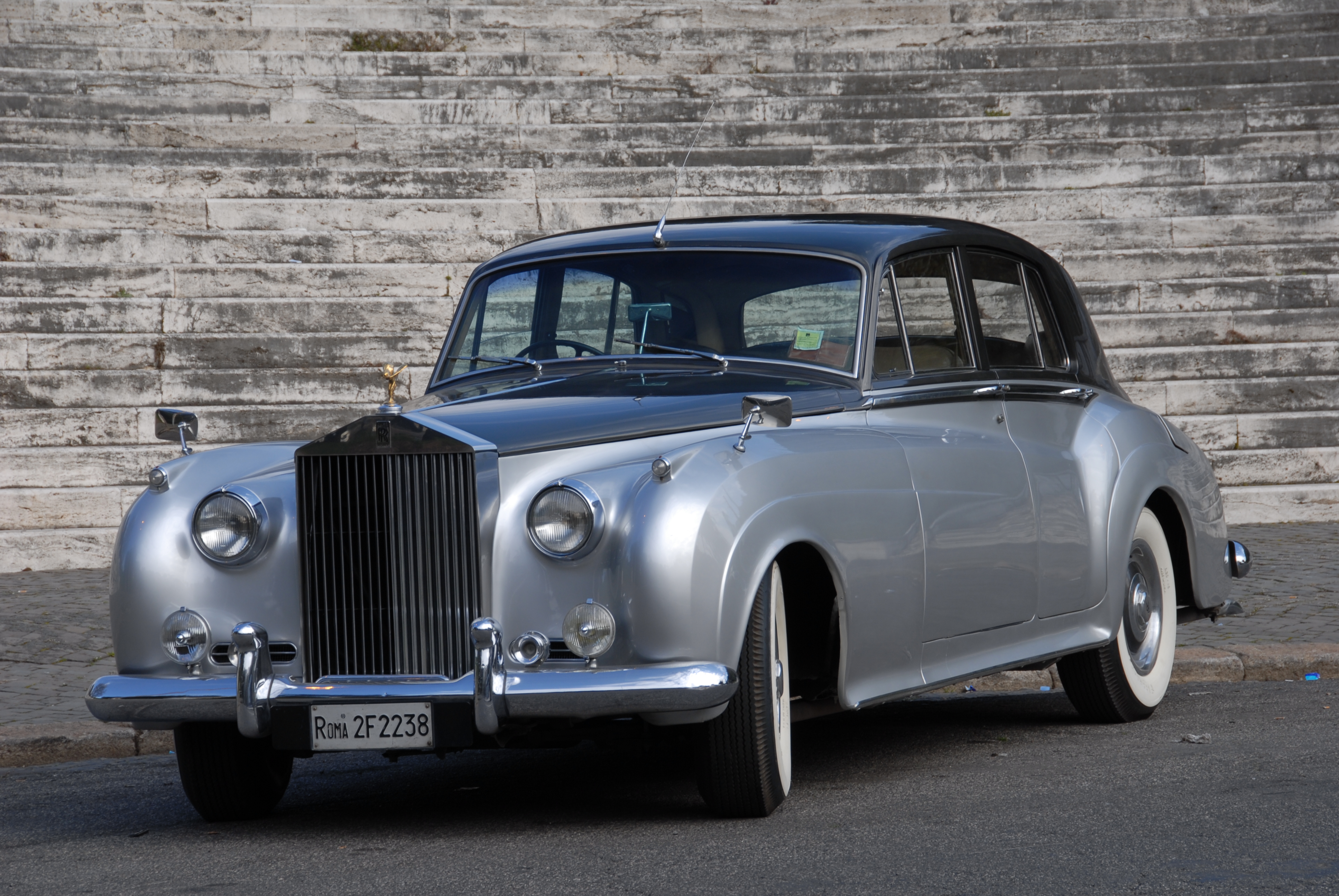
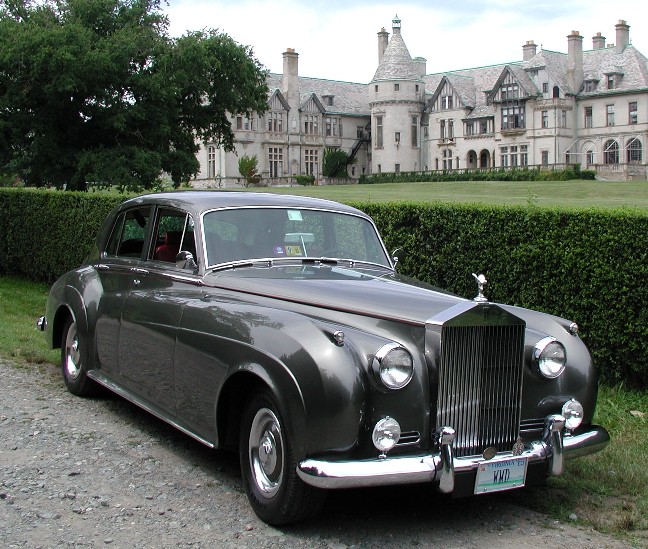
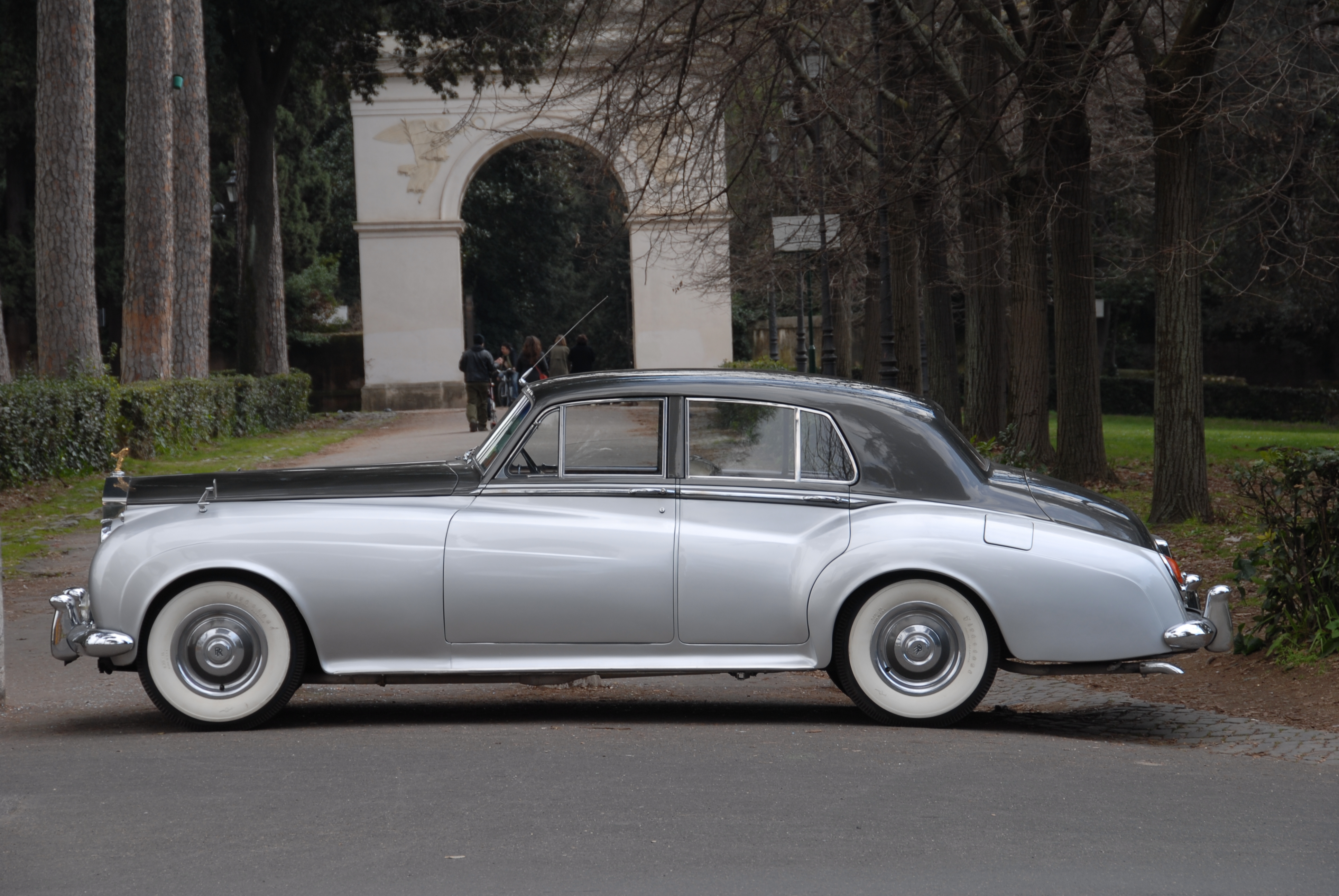
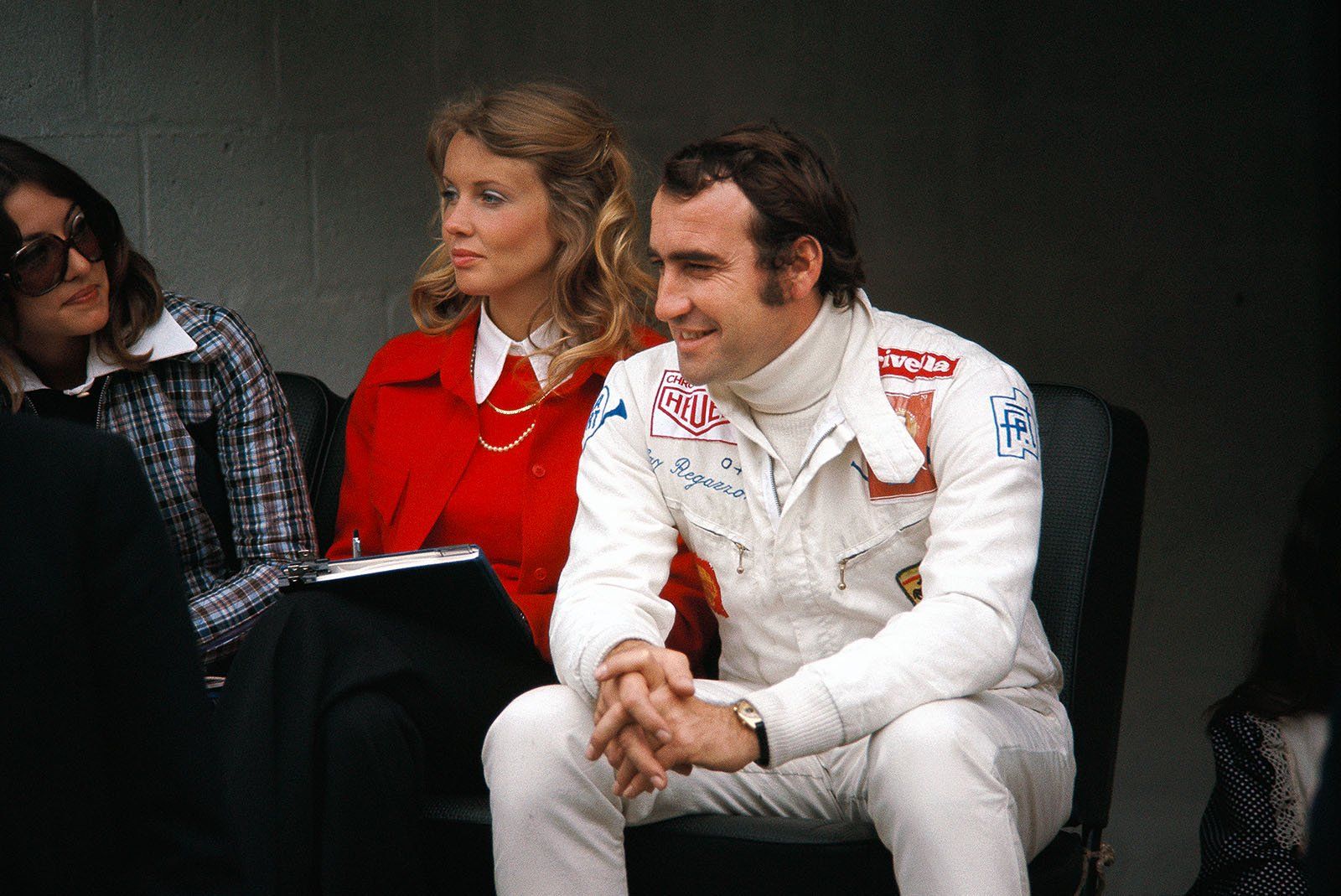

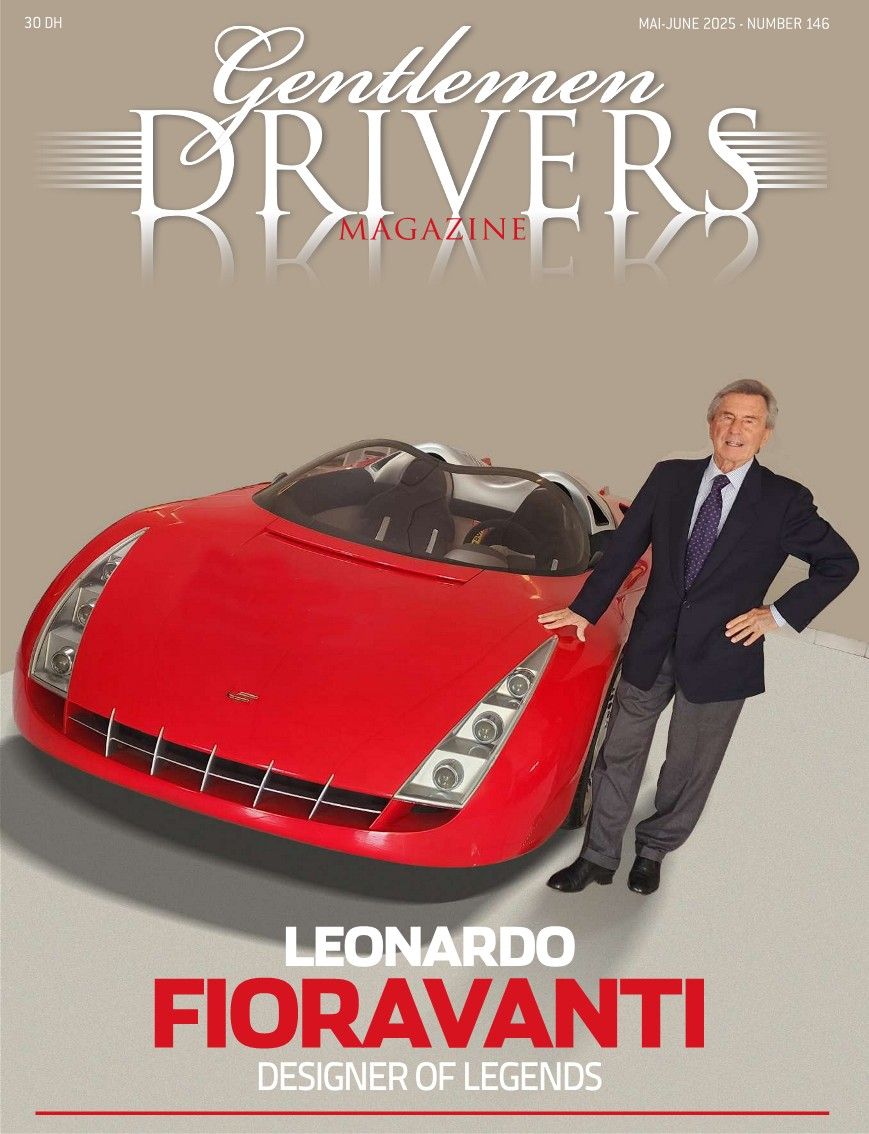
Comments
Authorize to comment